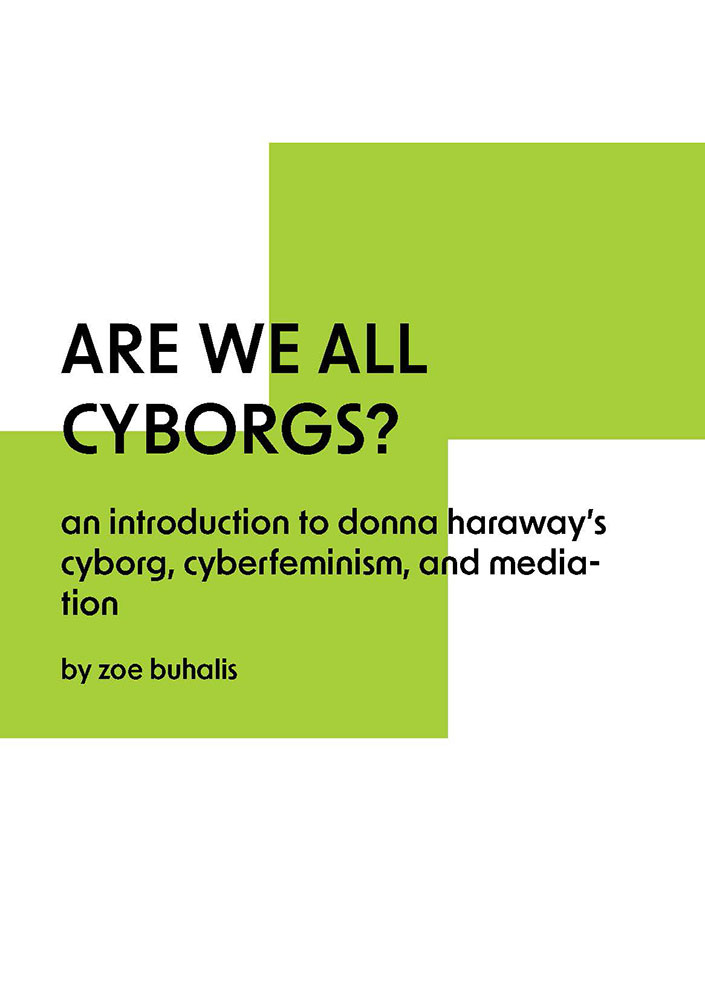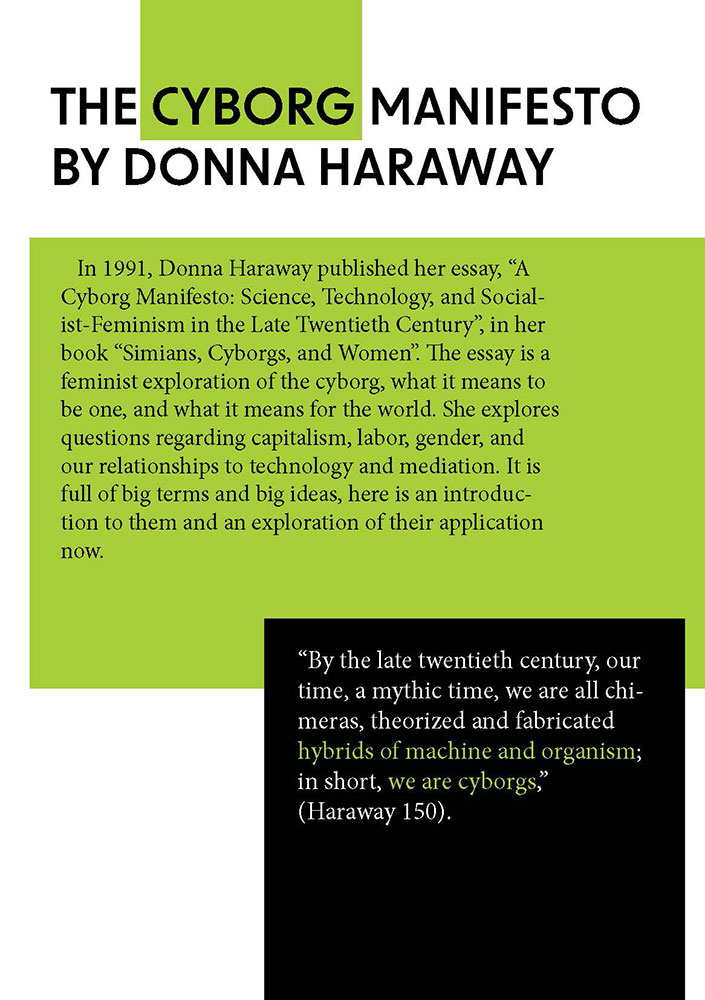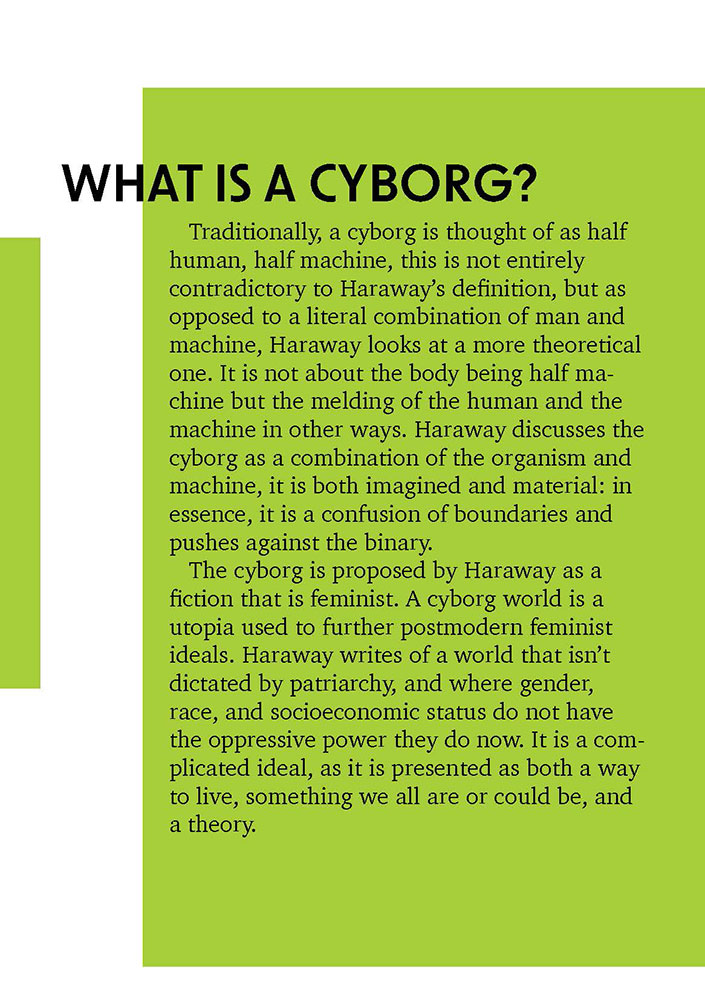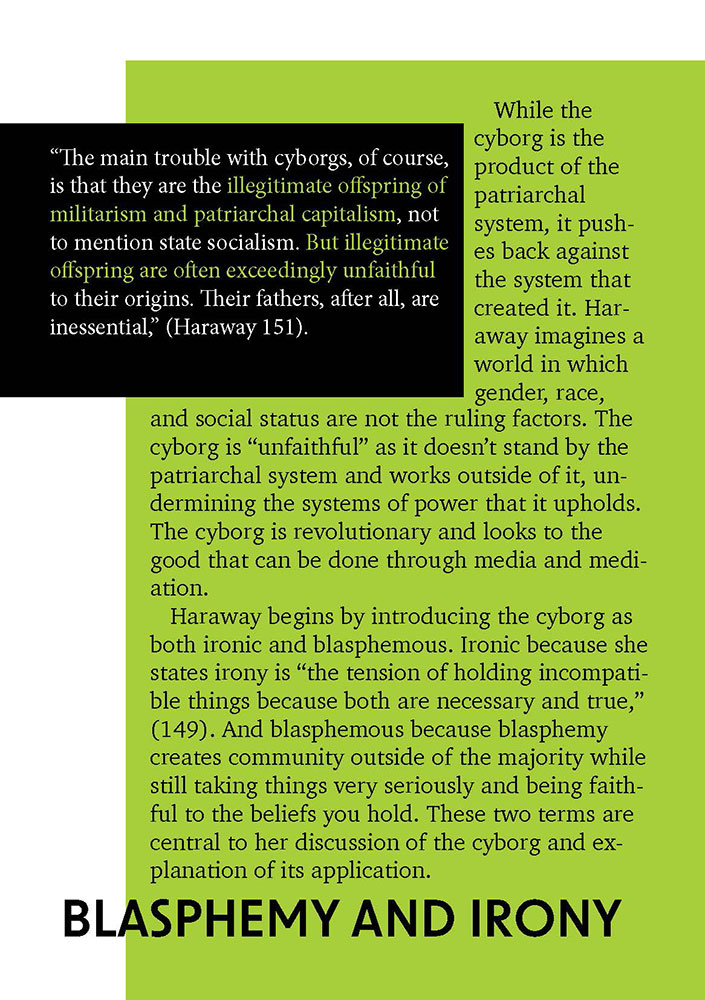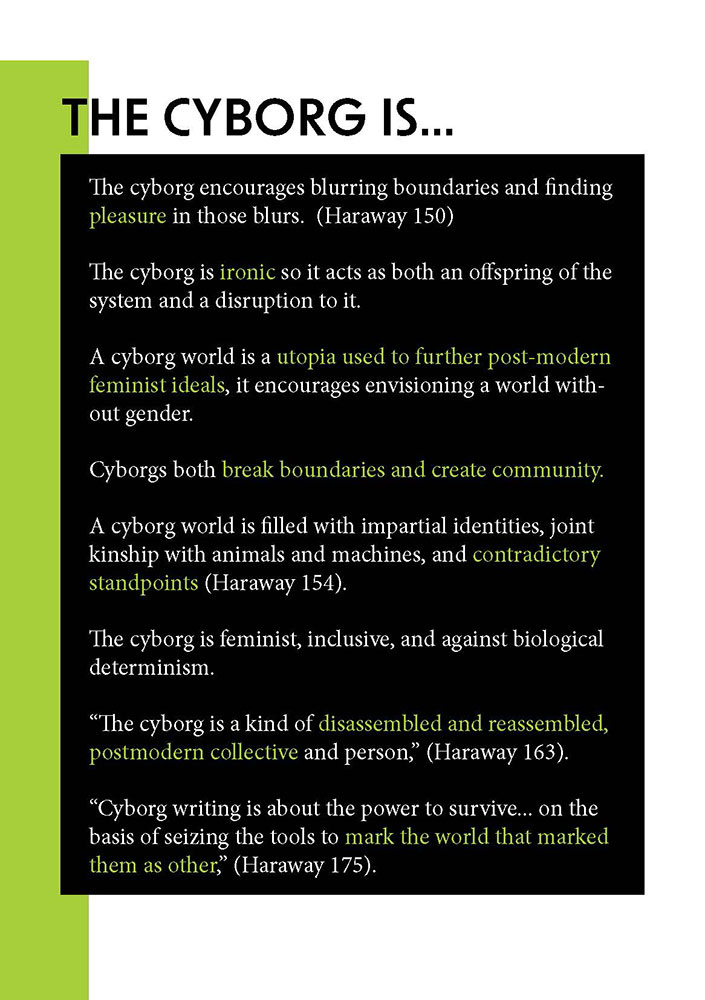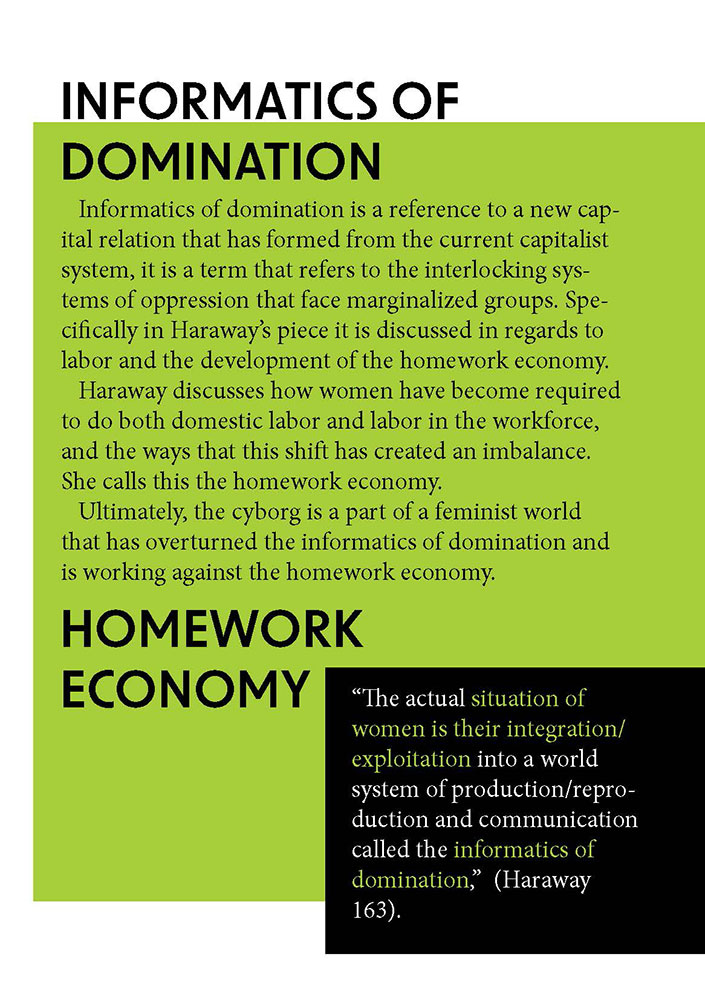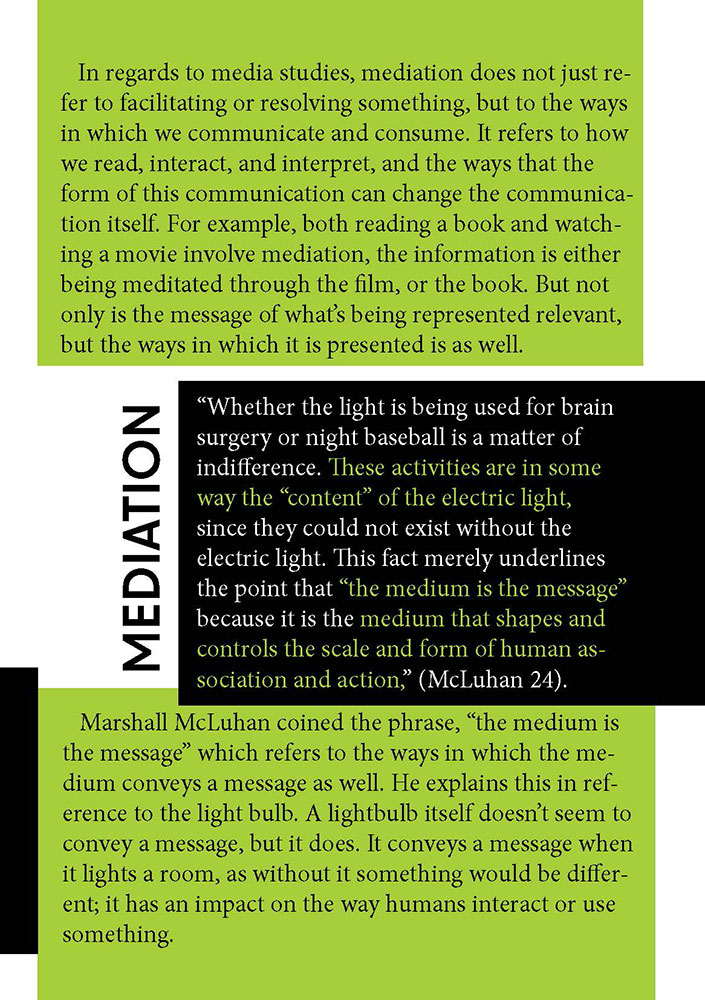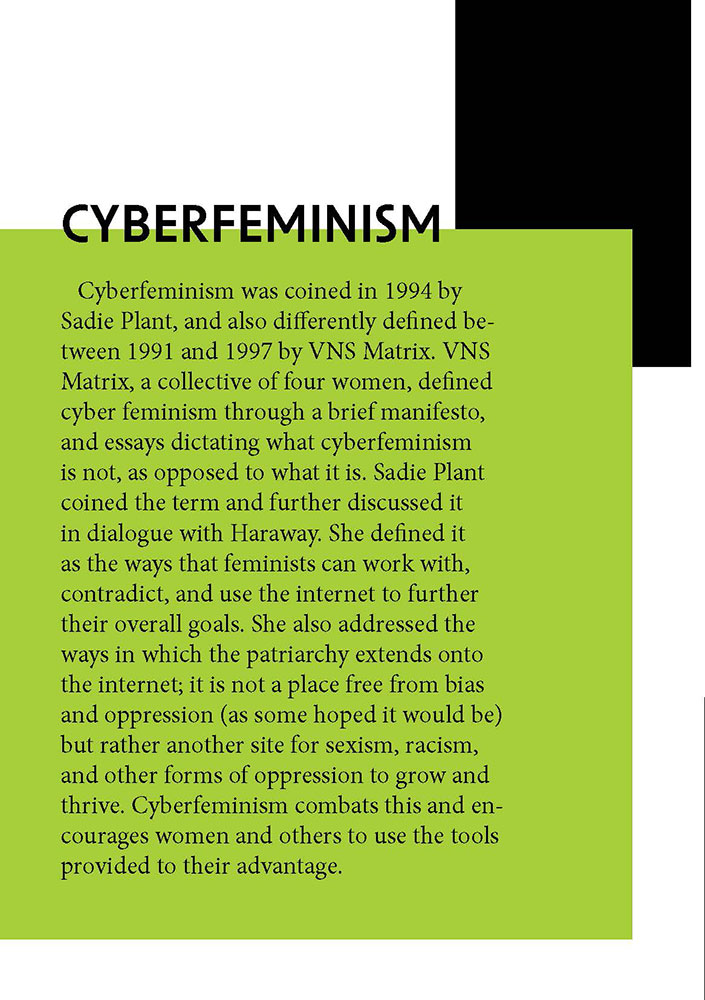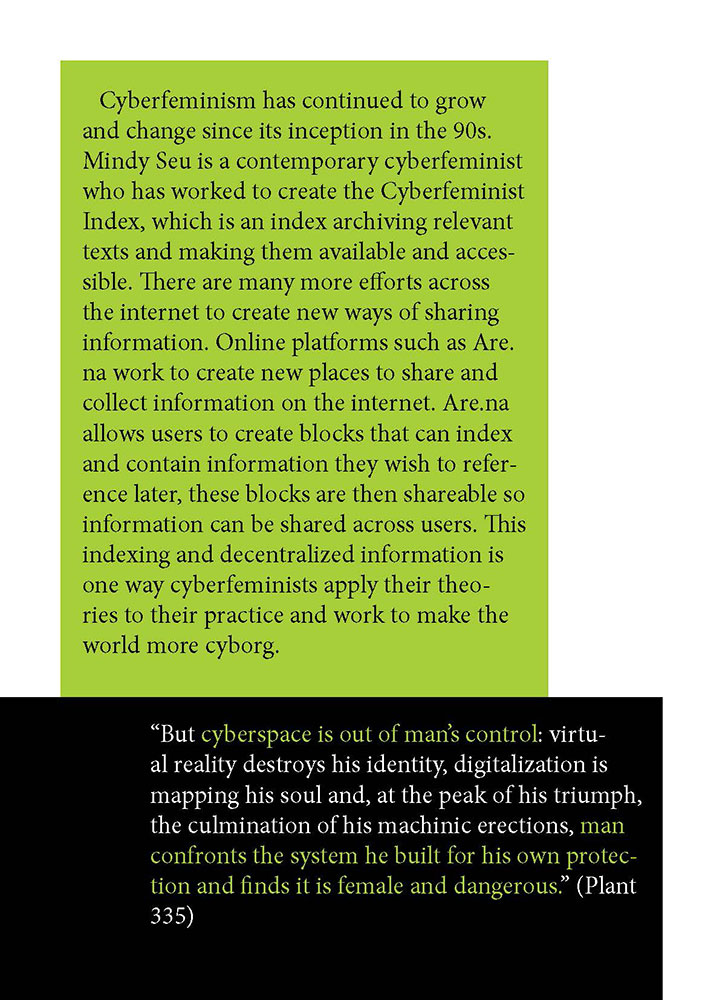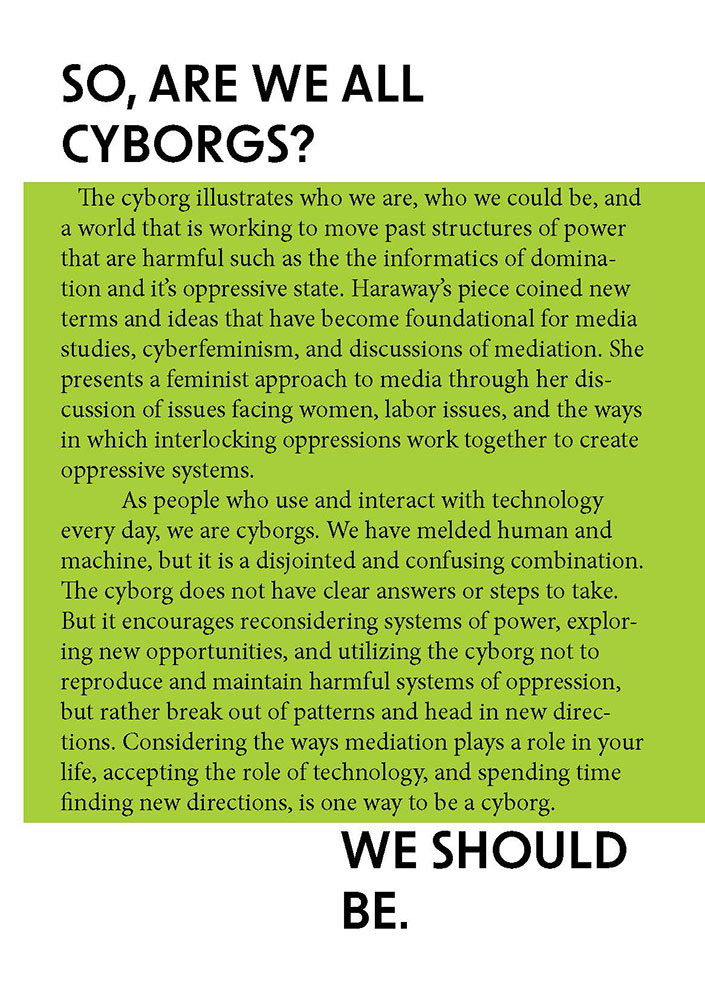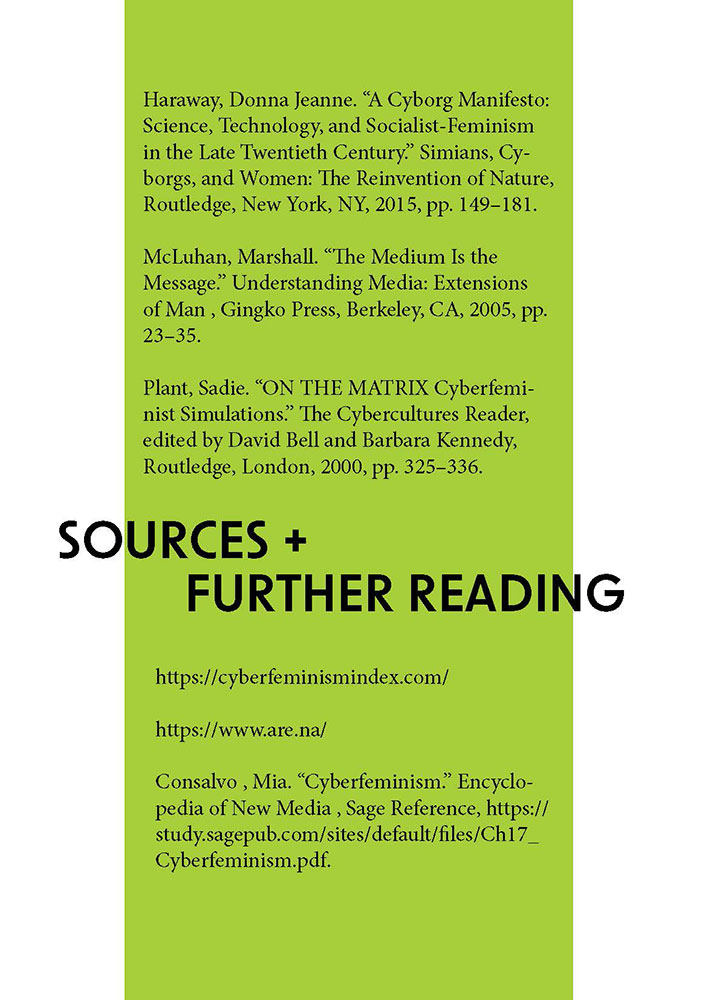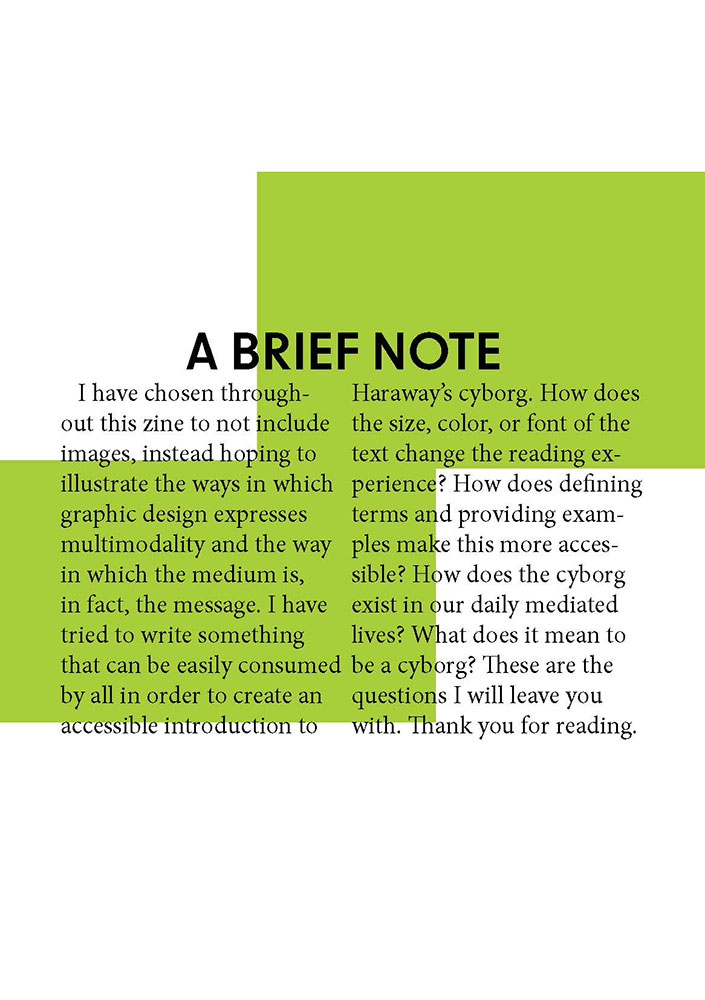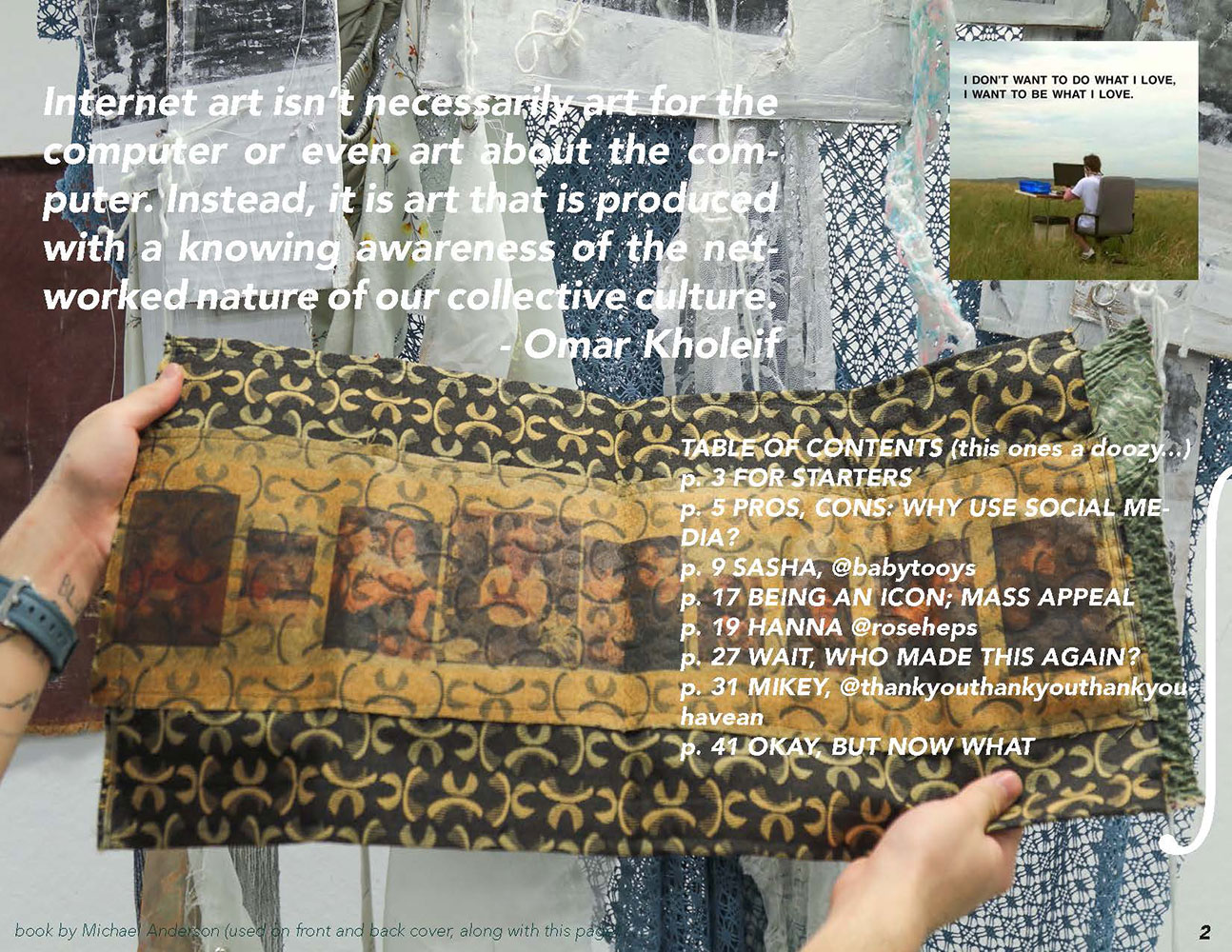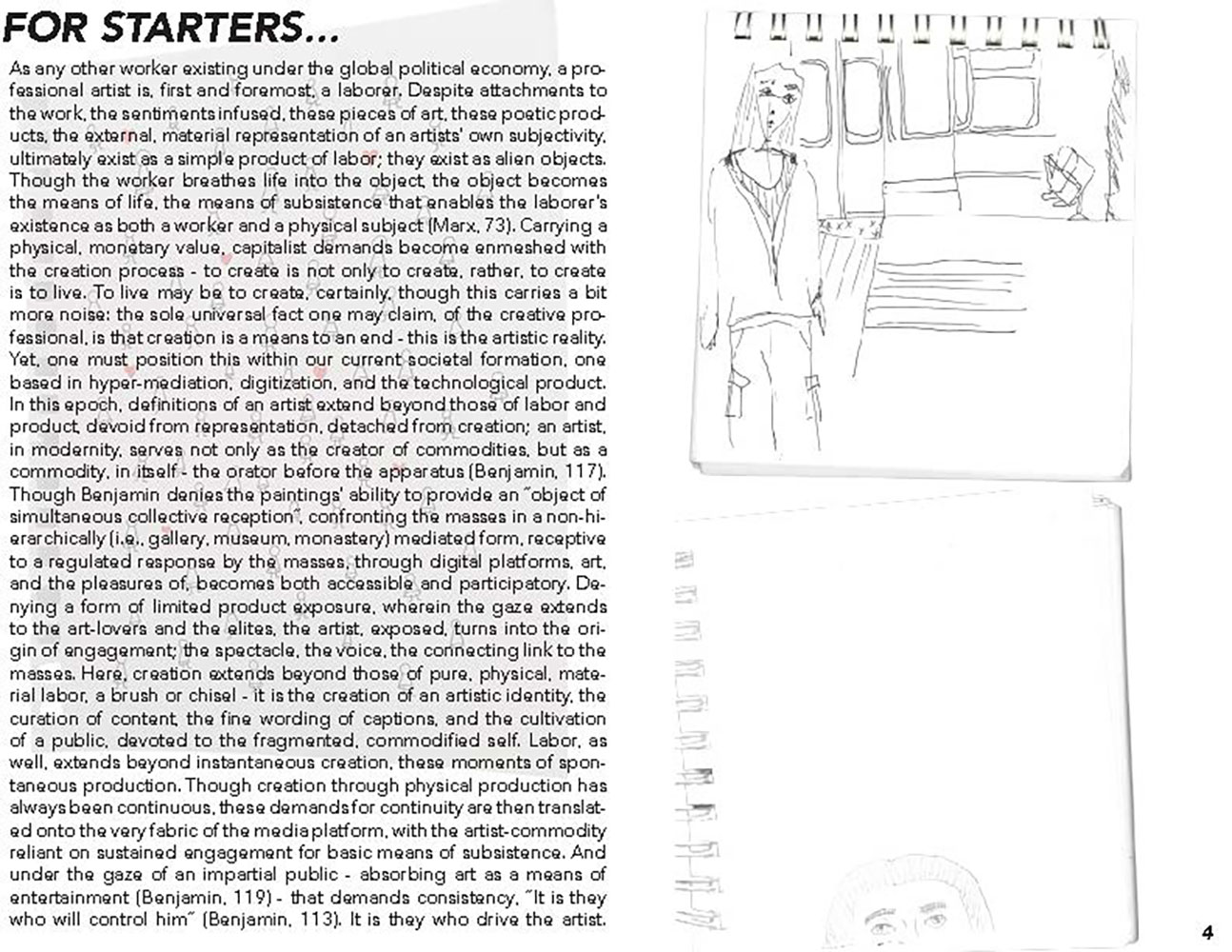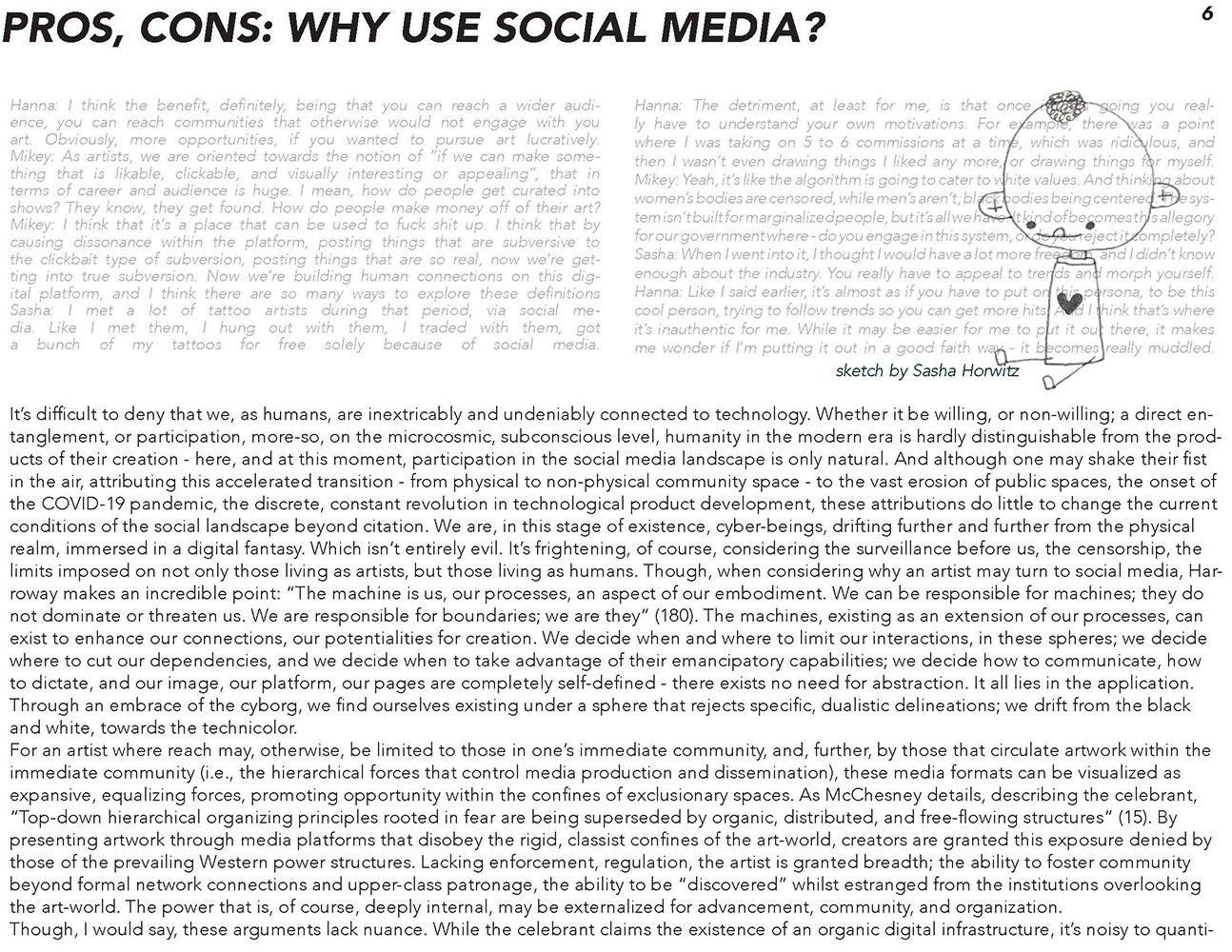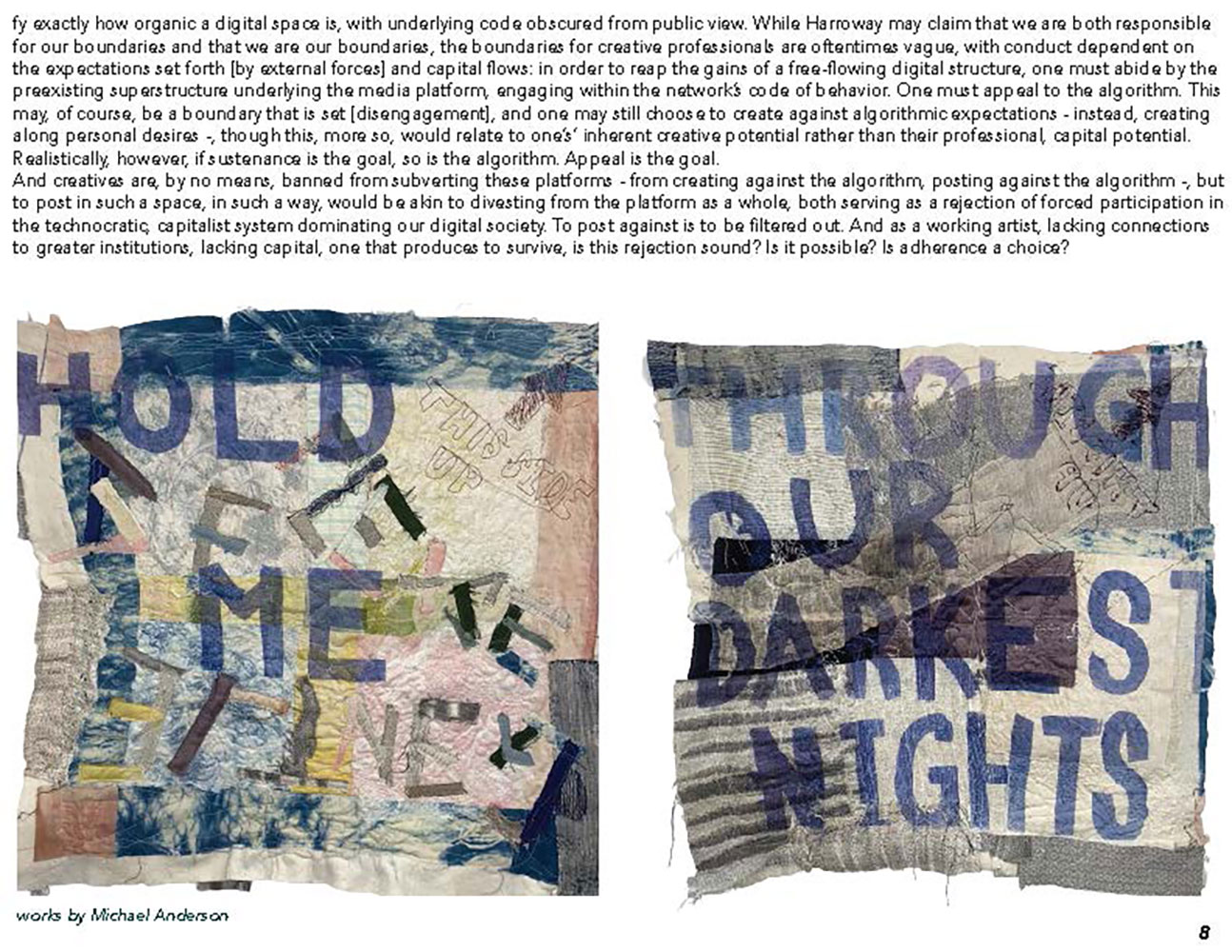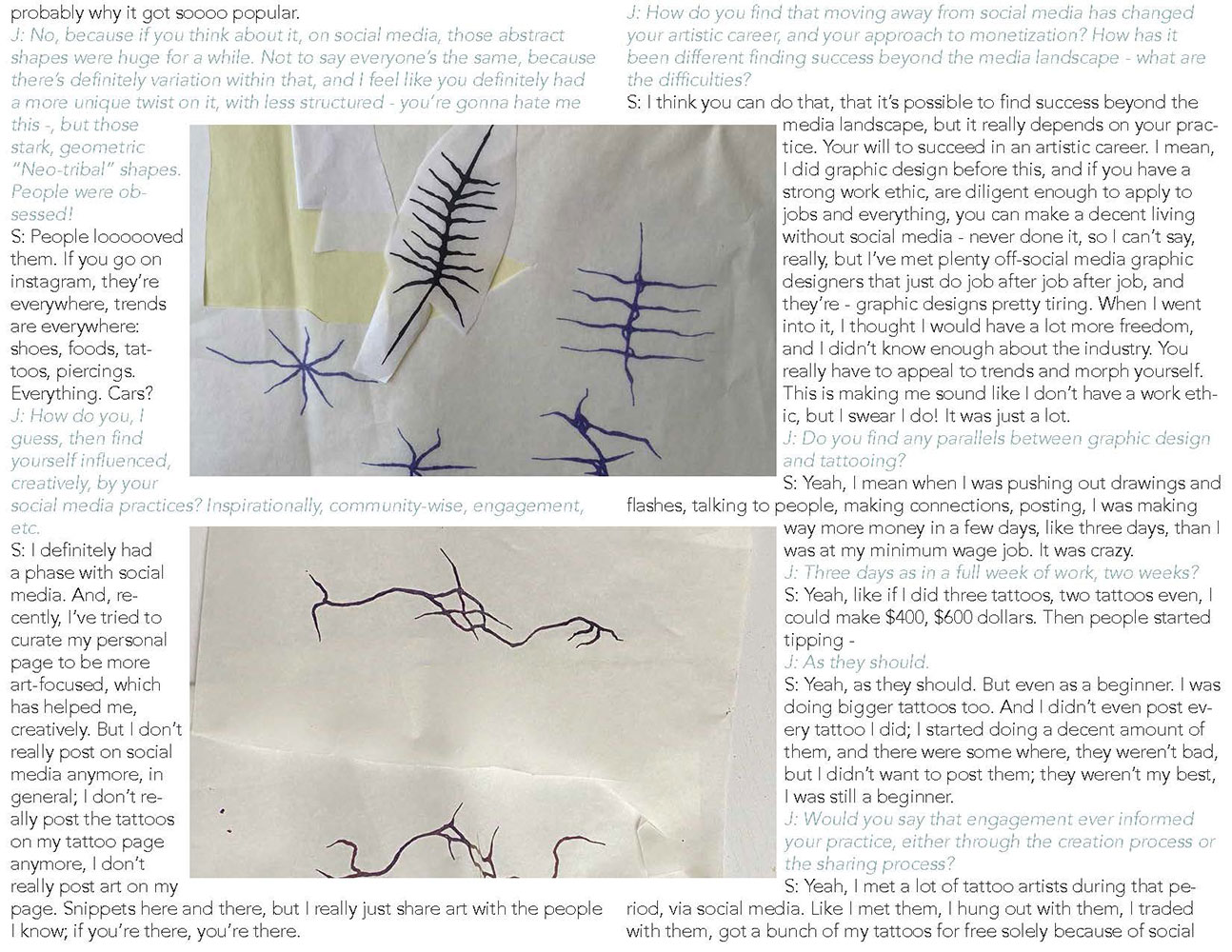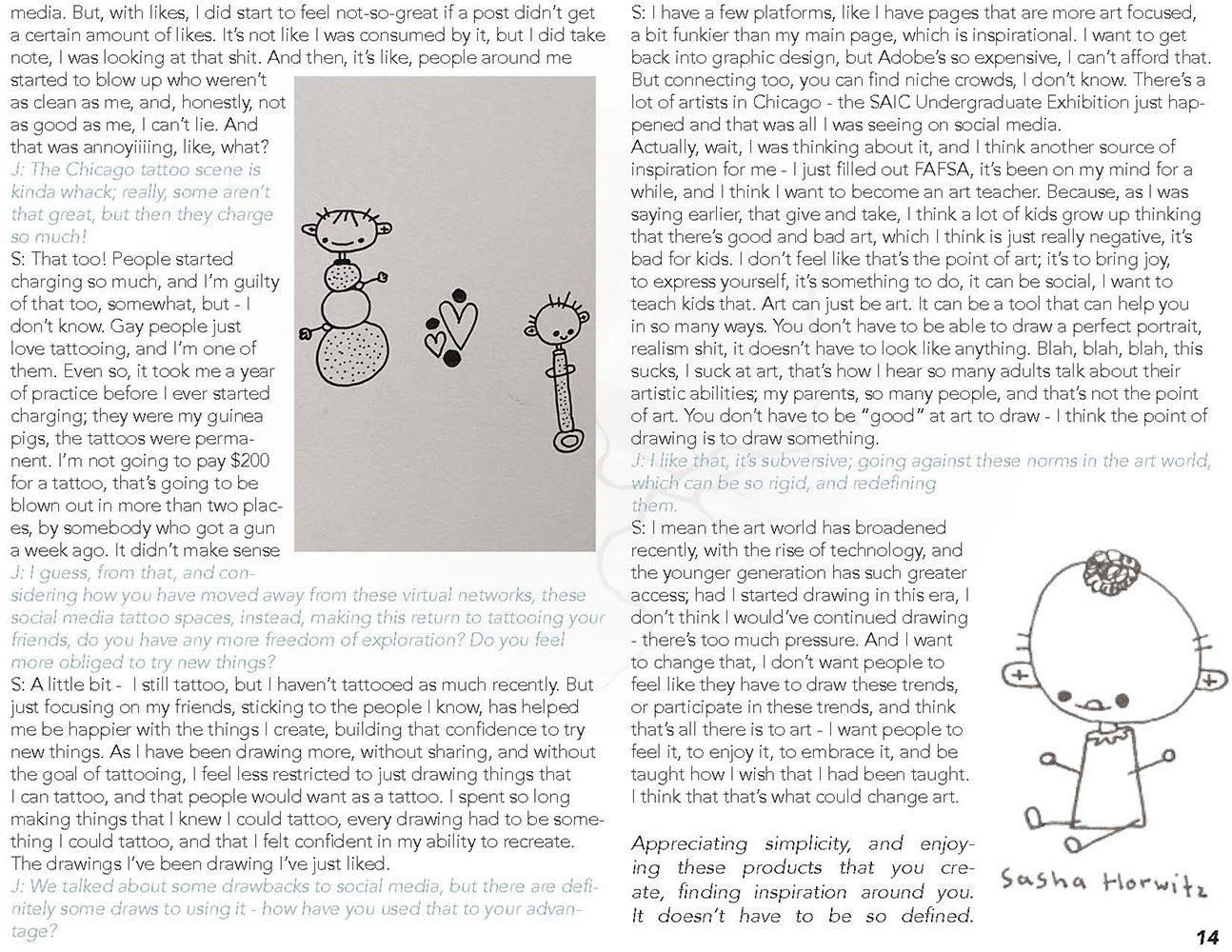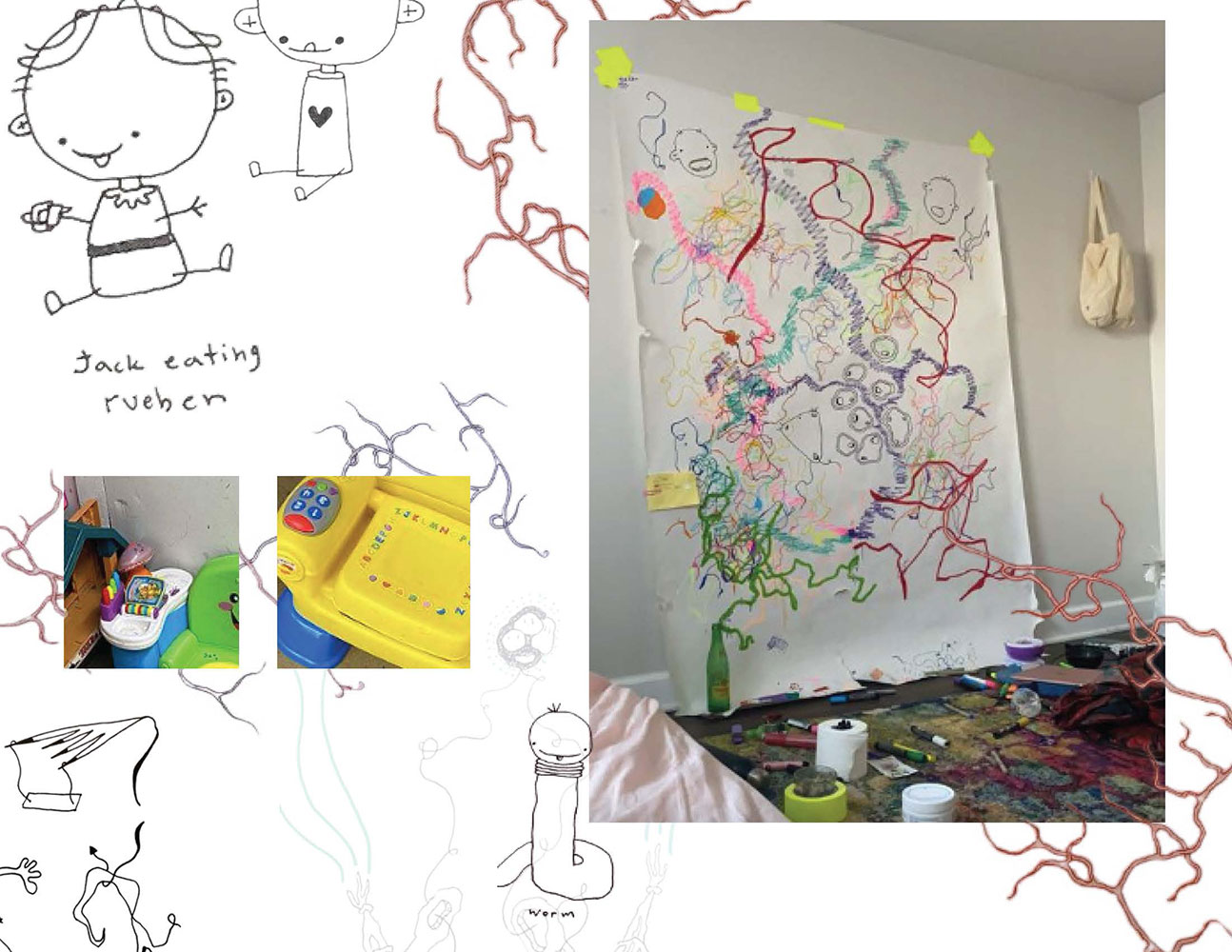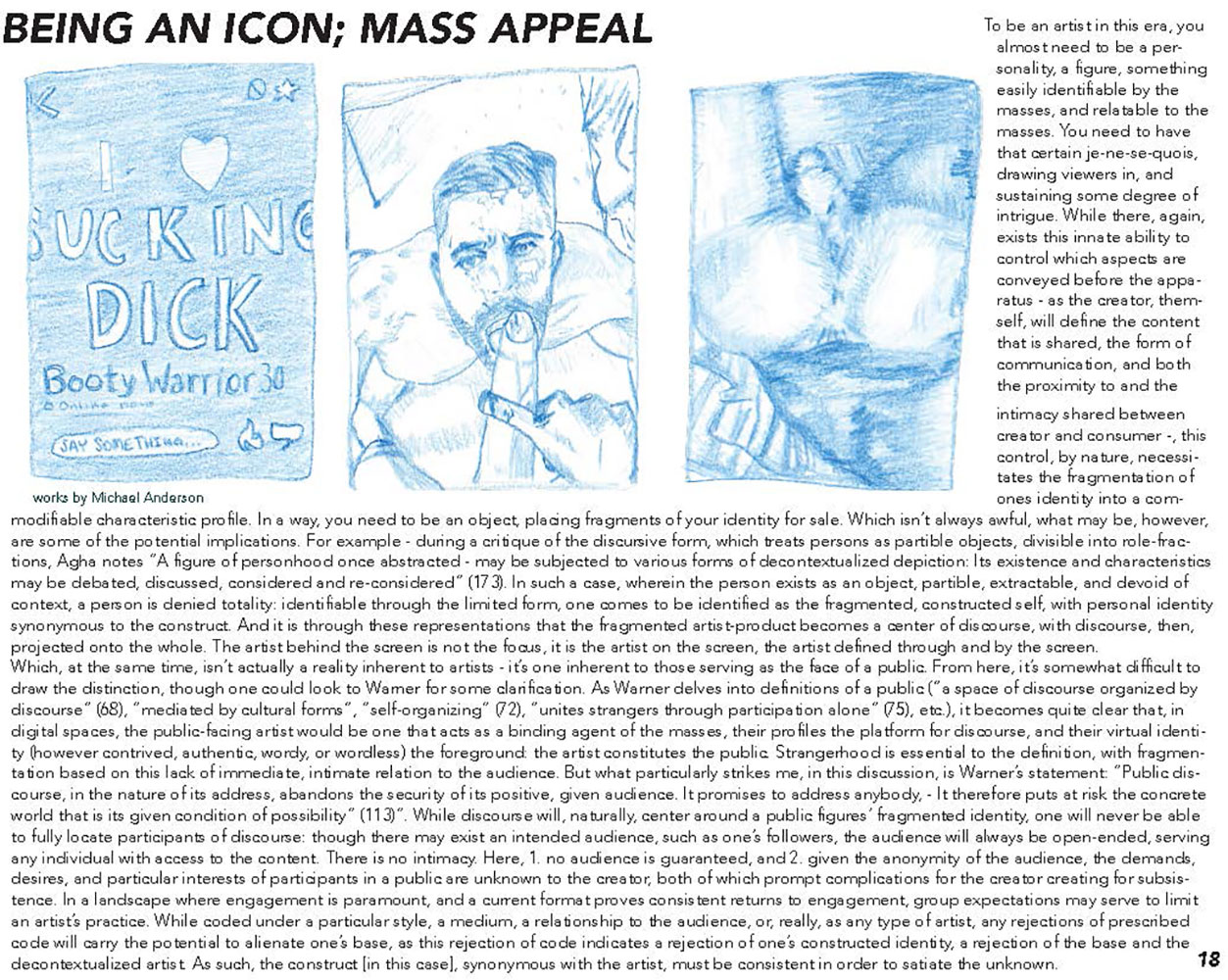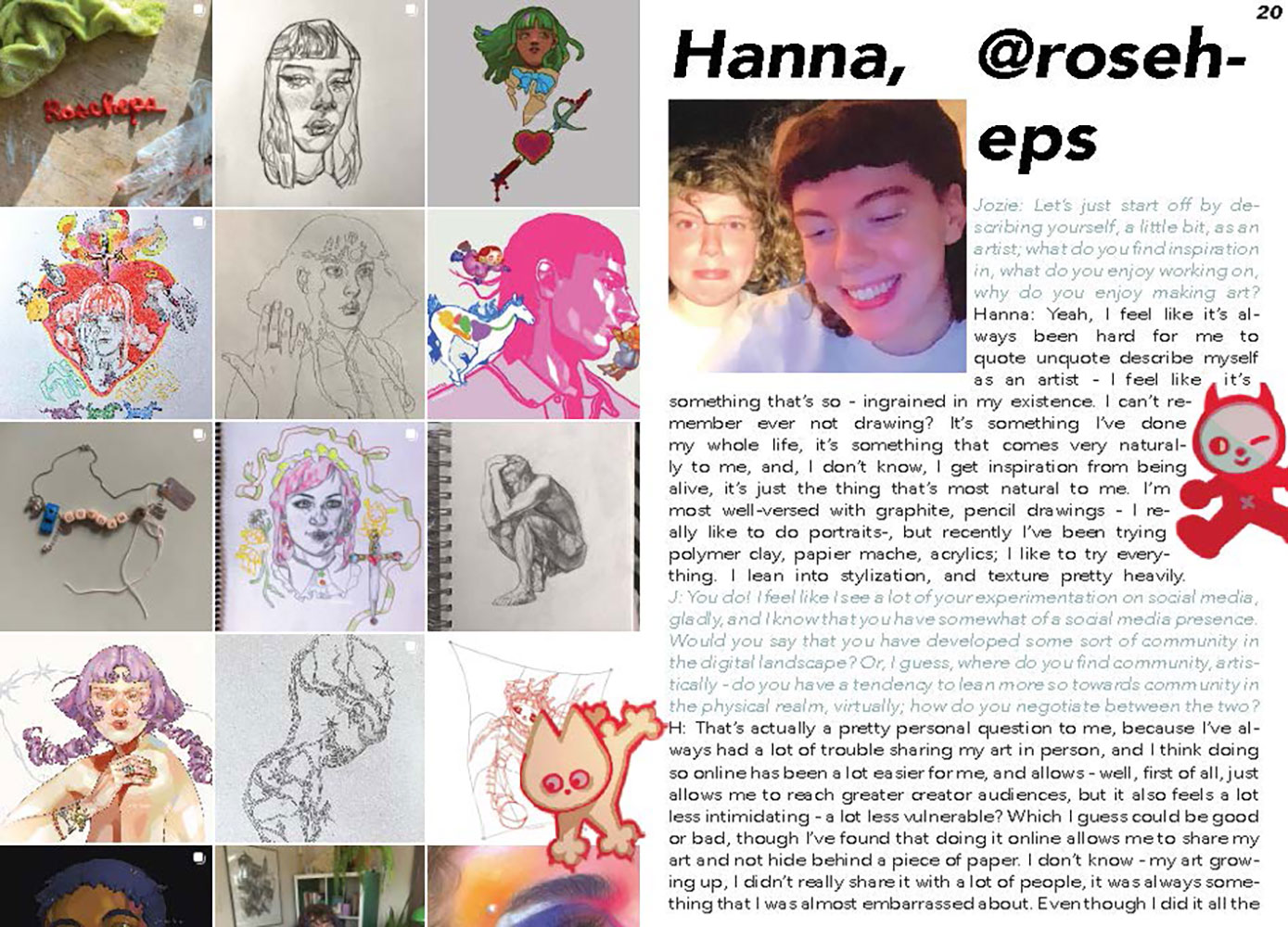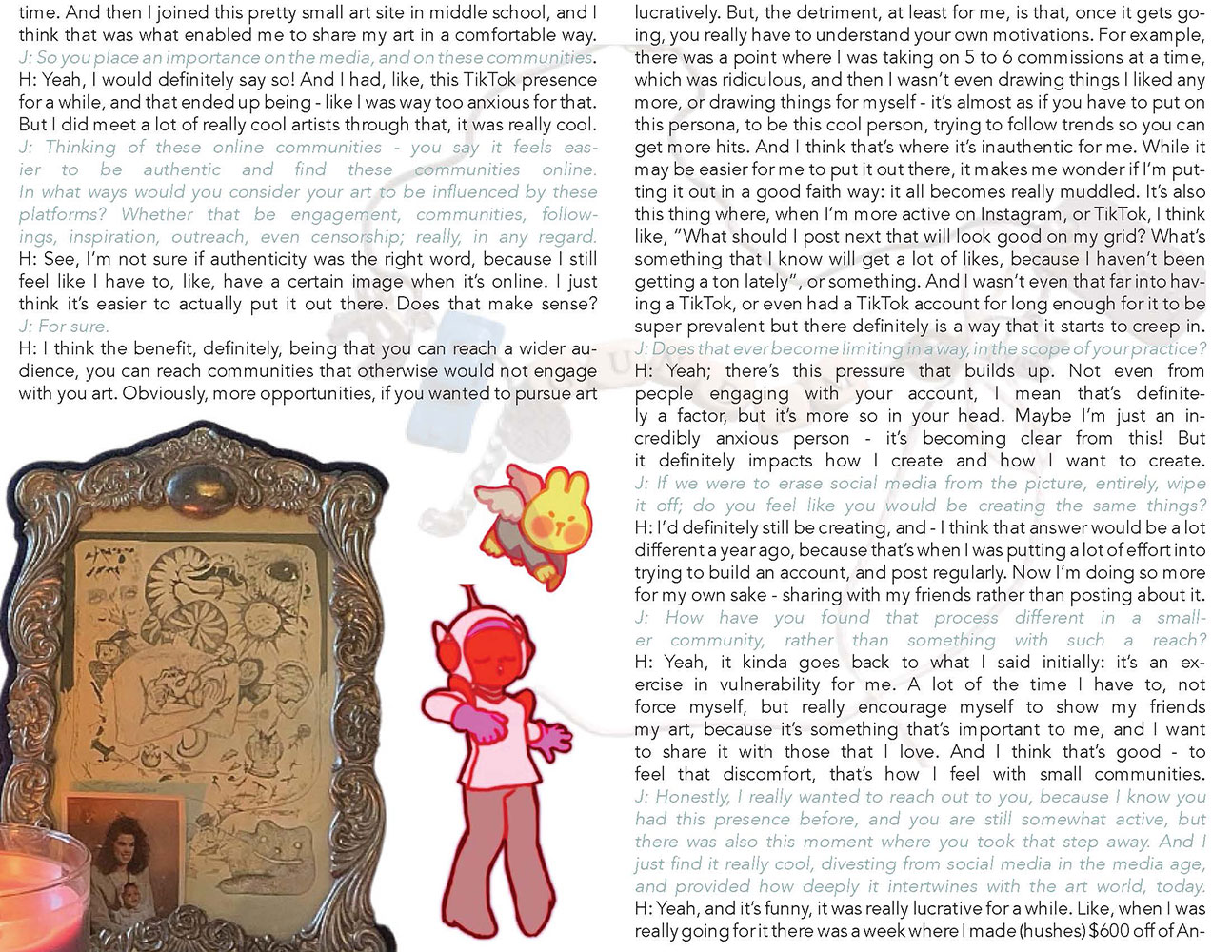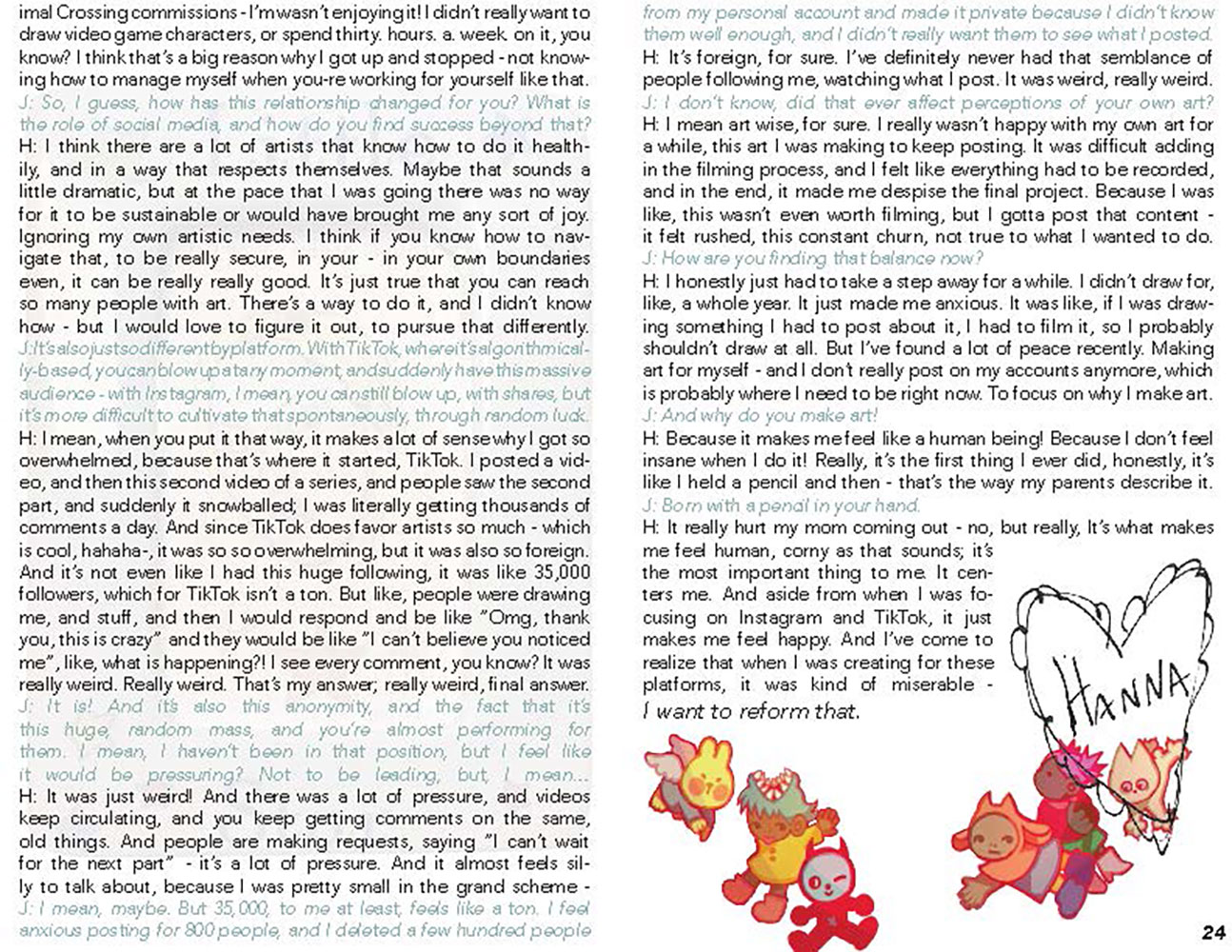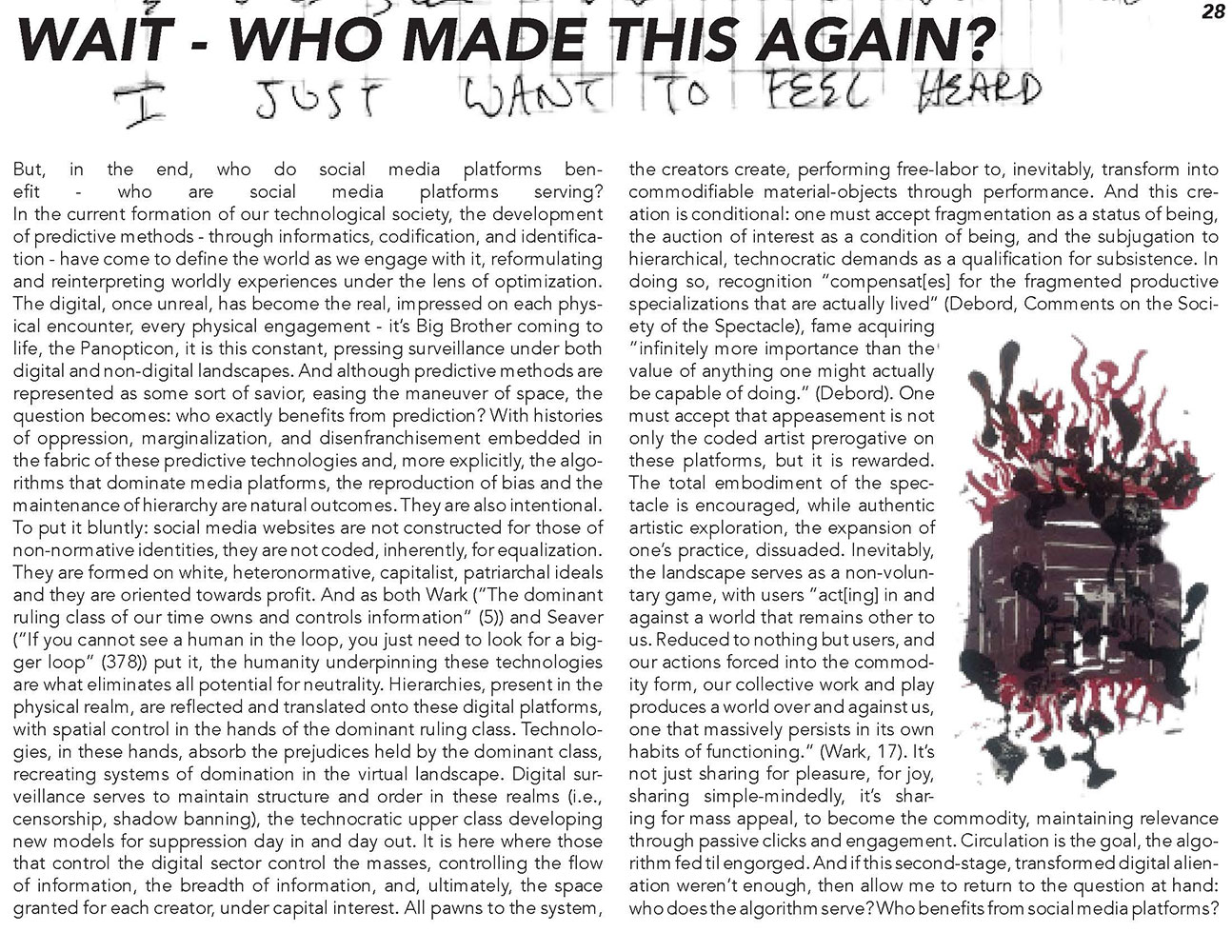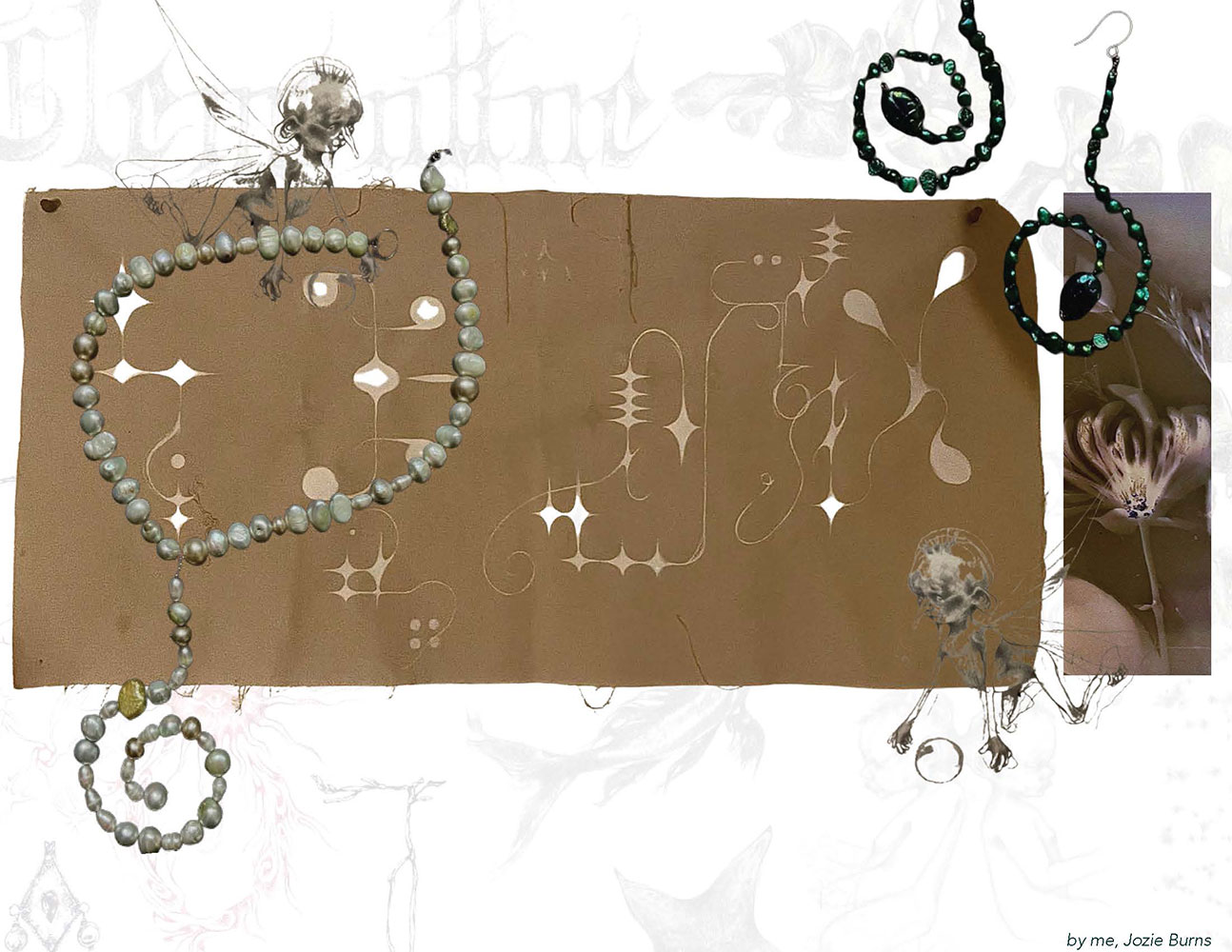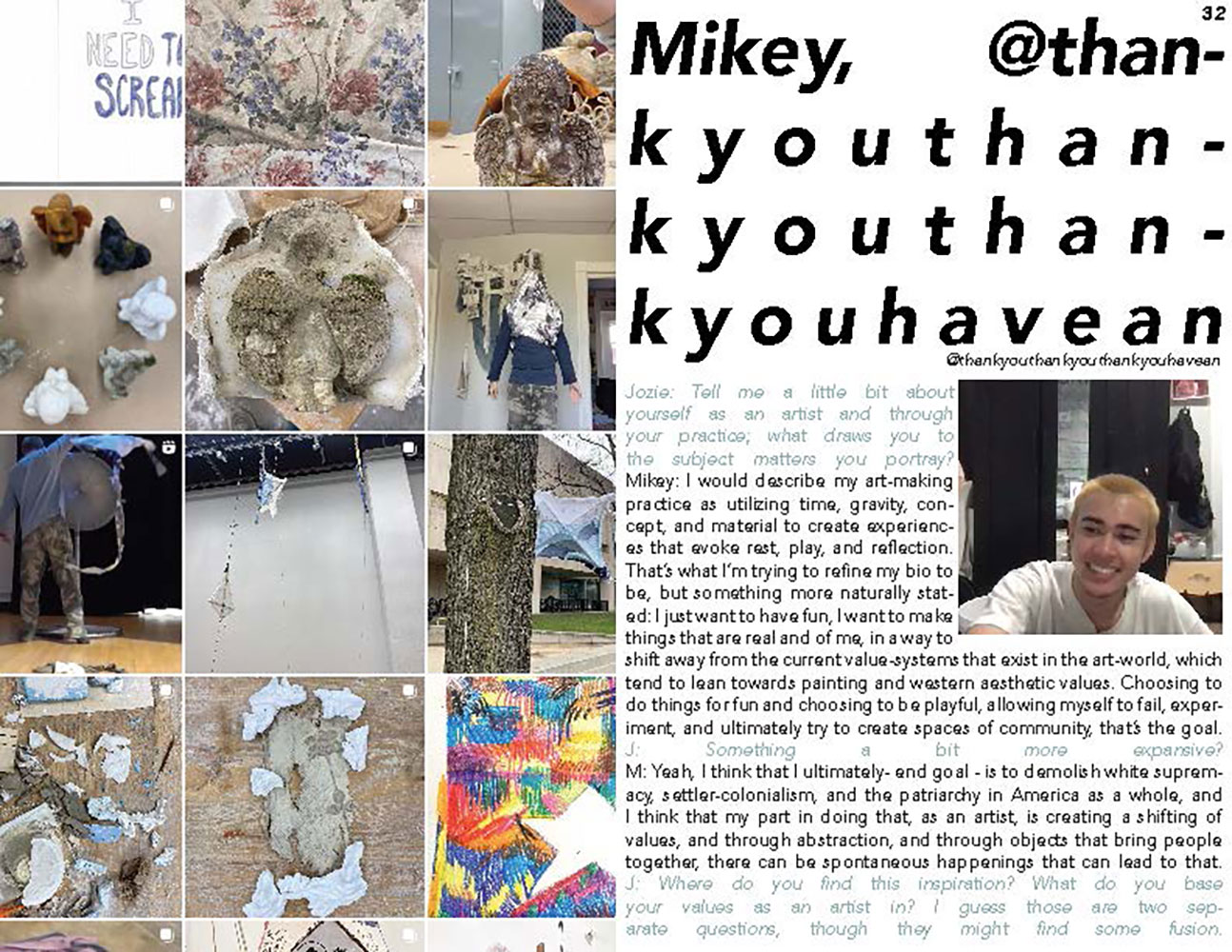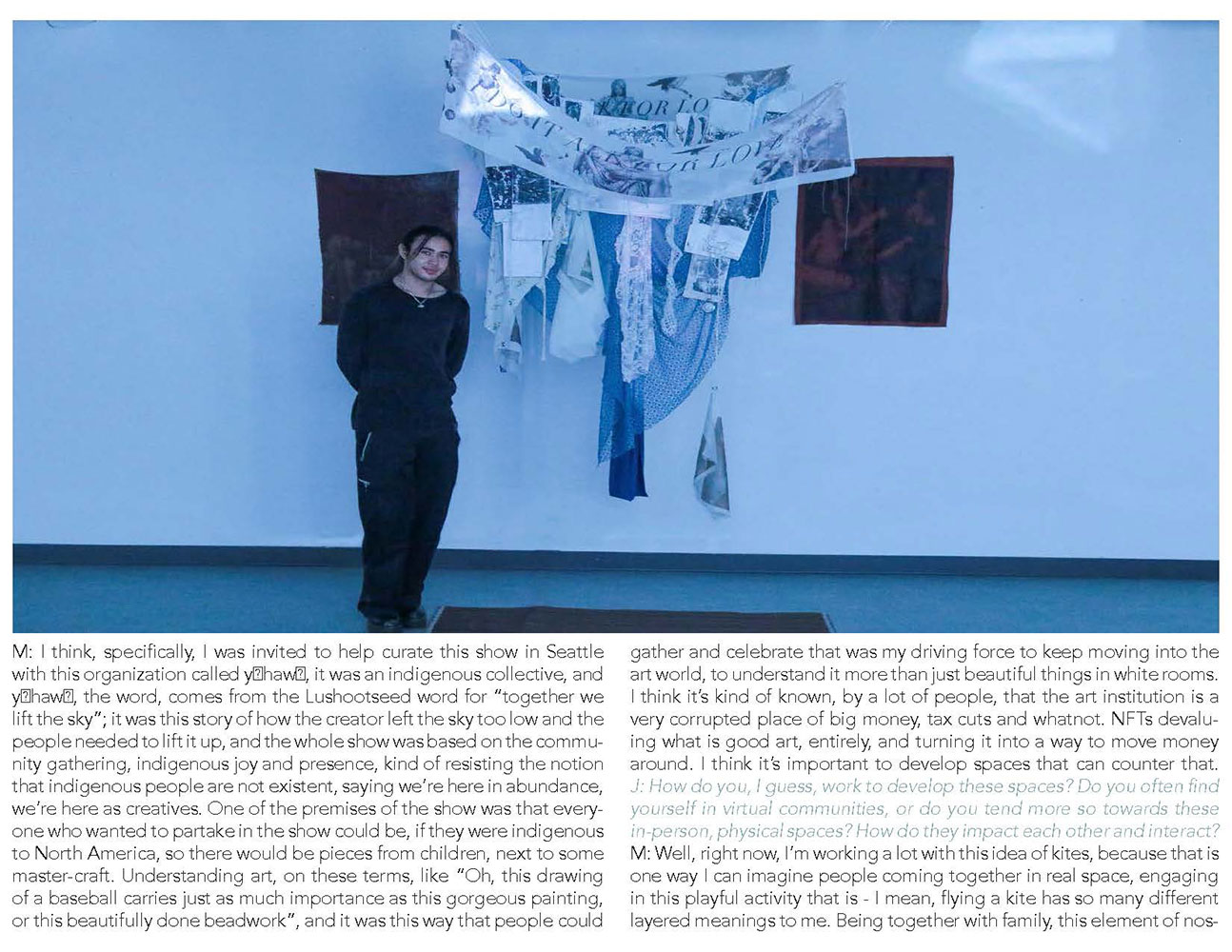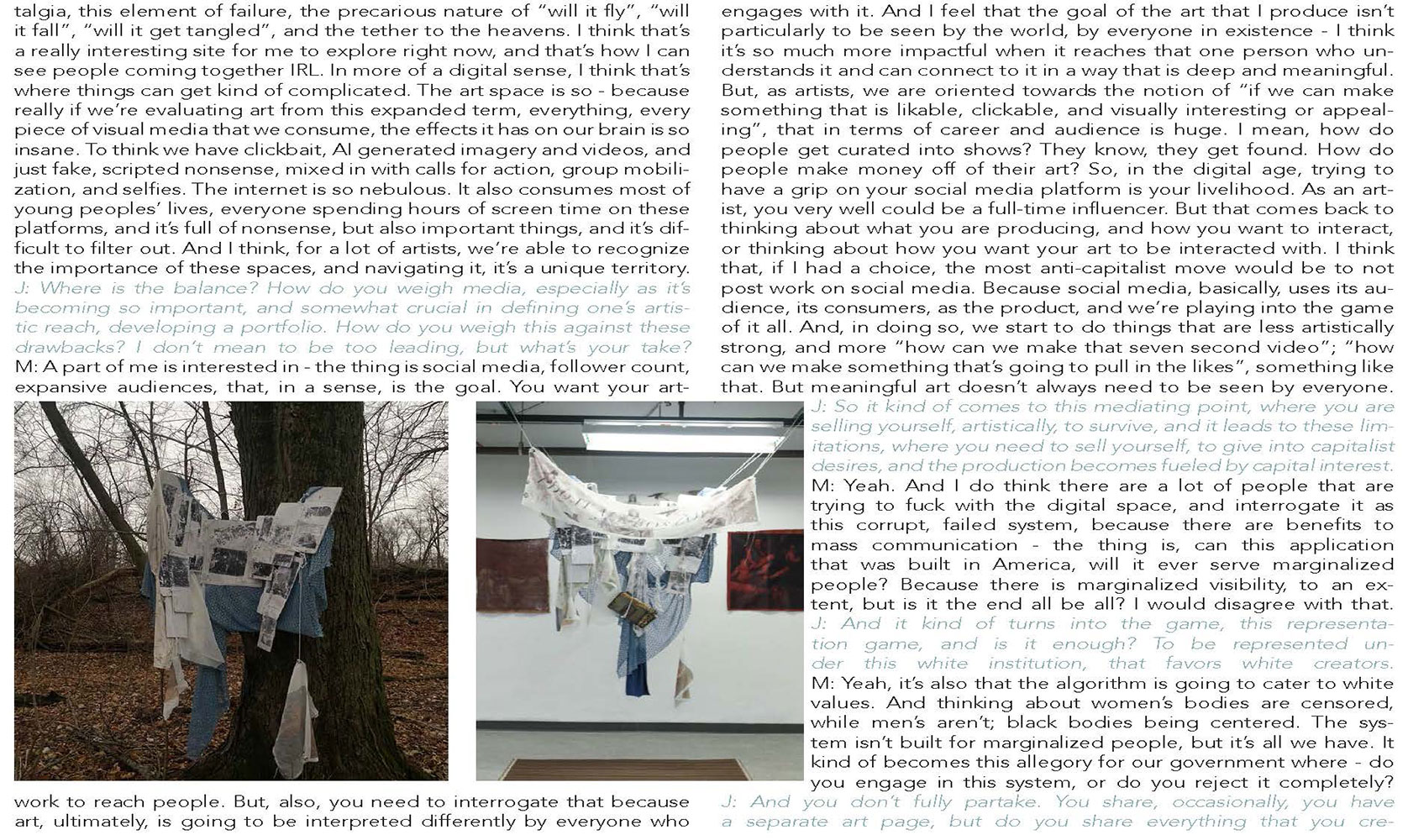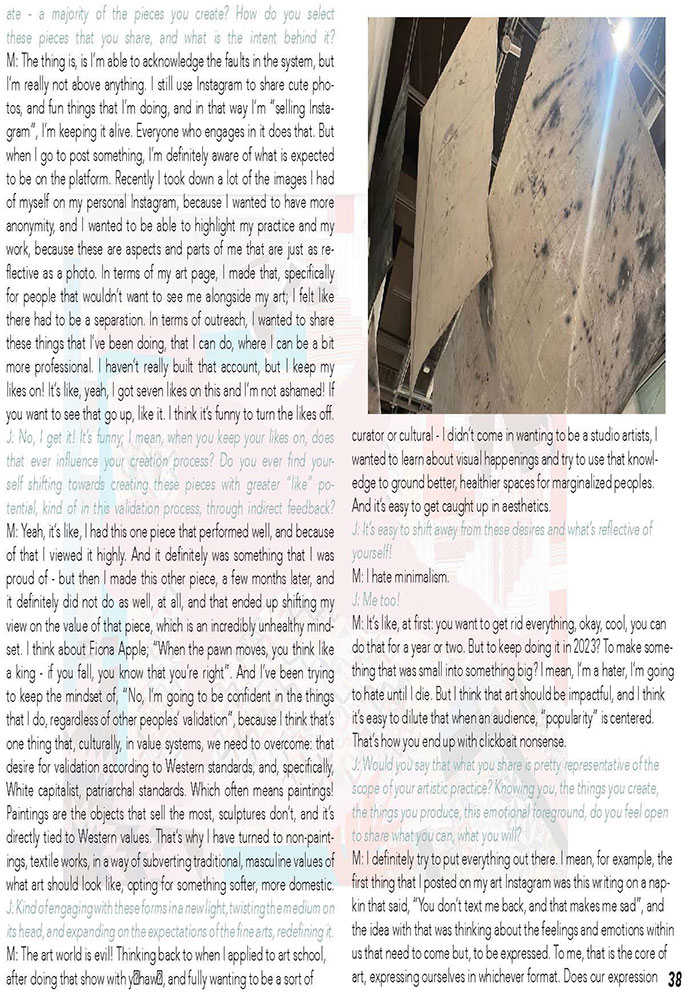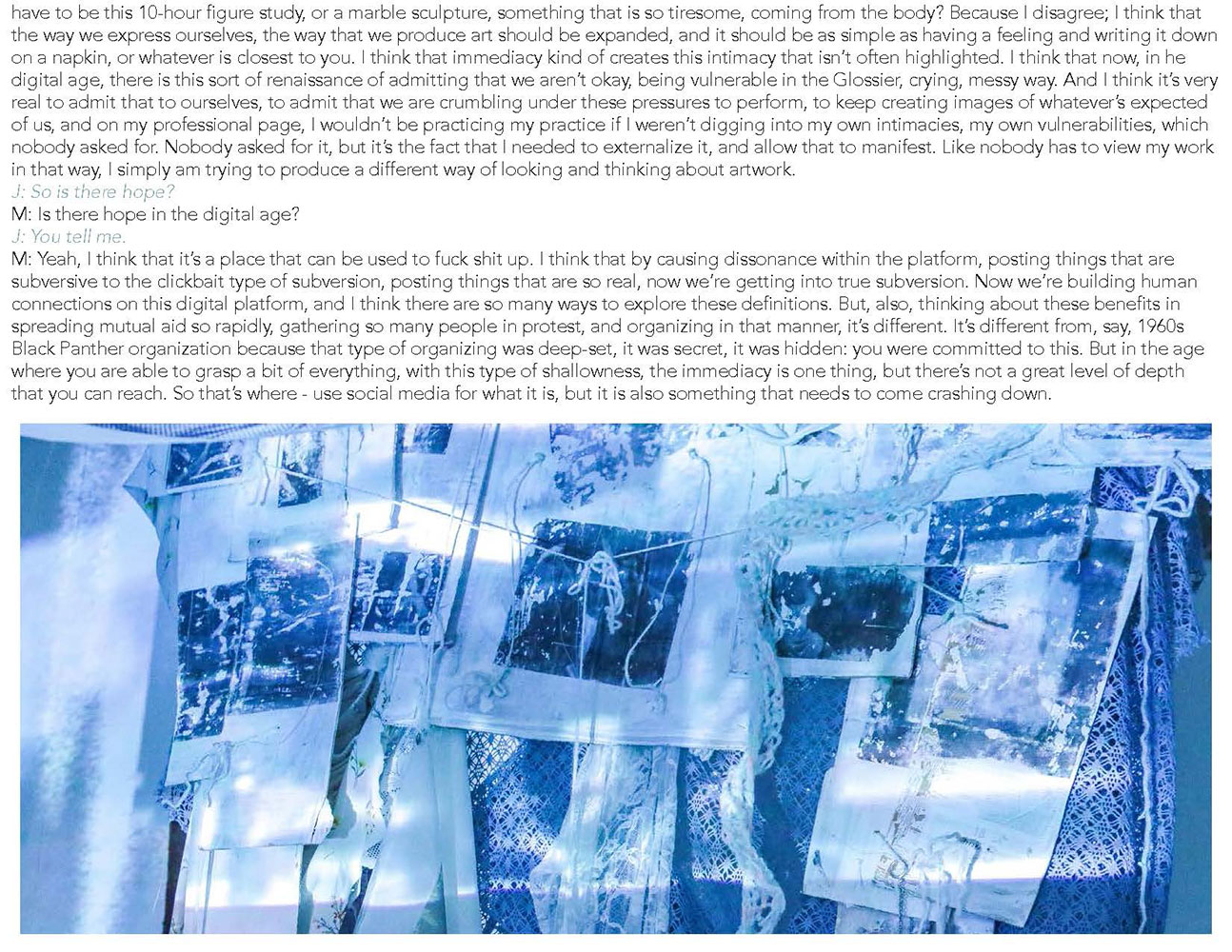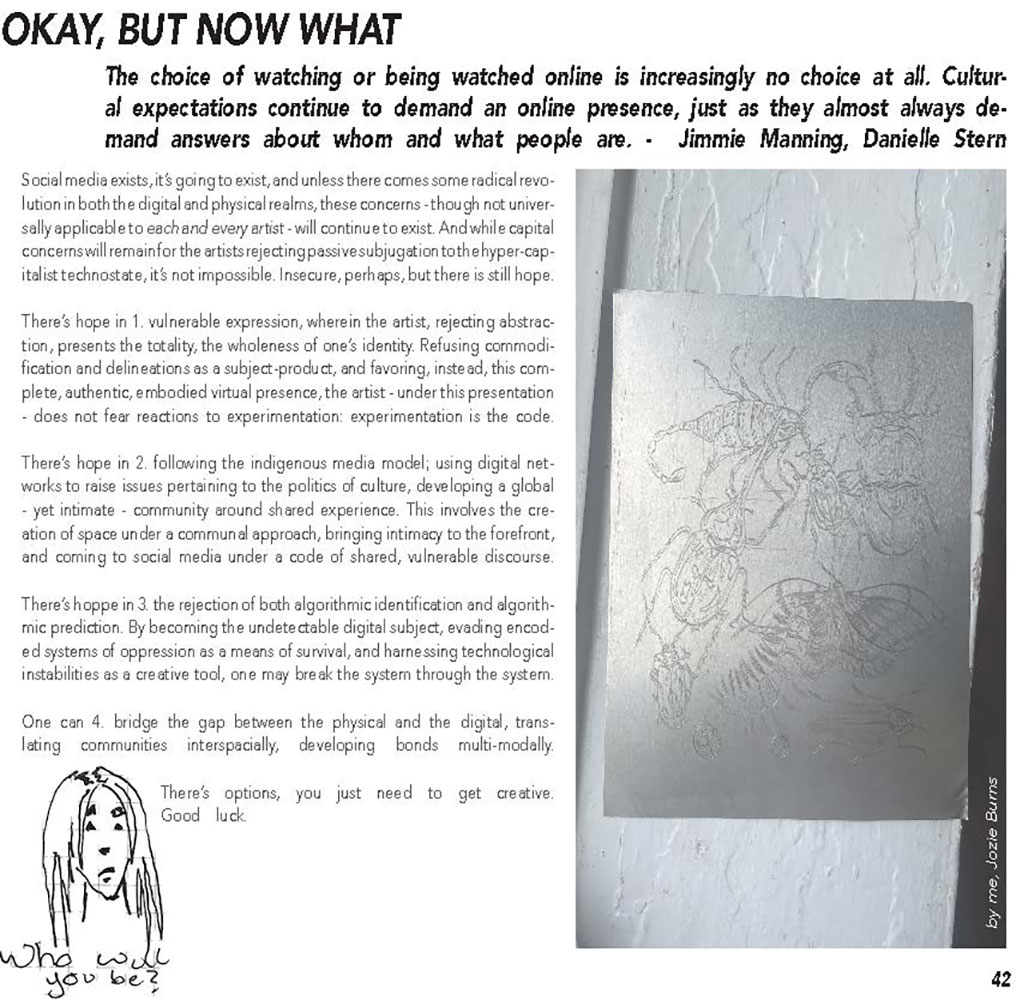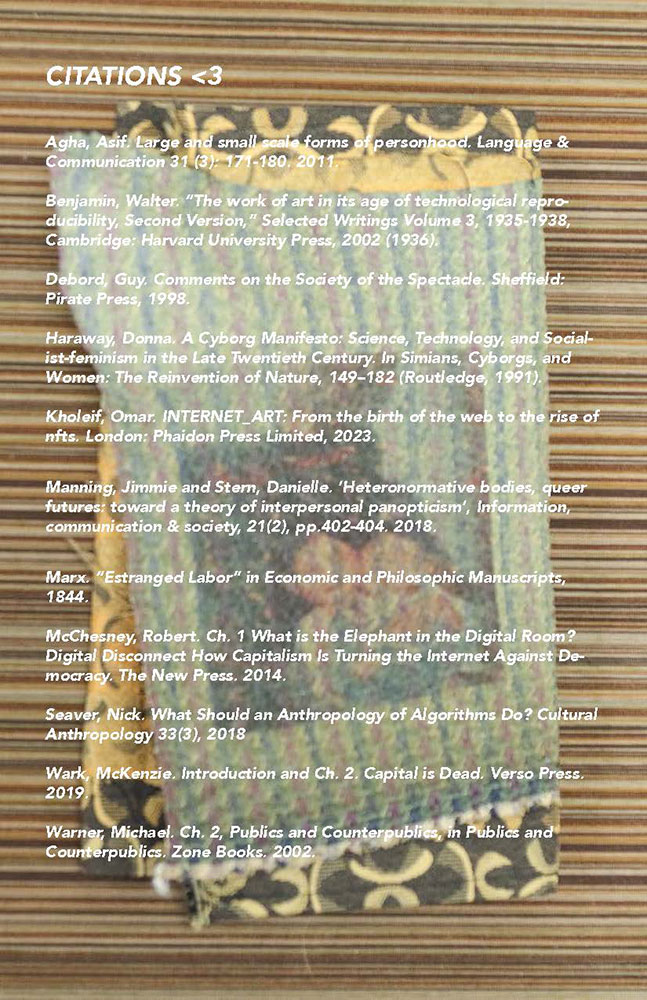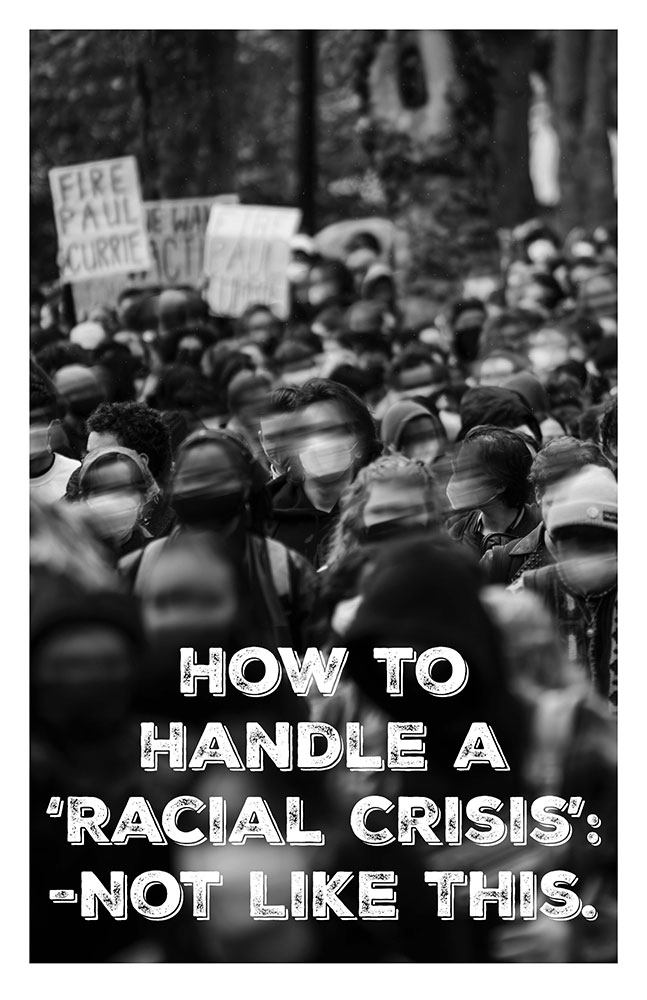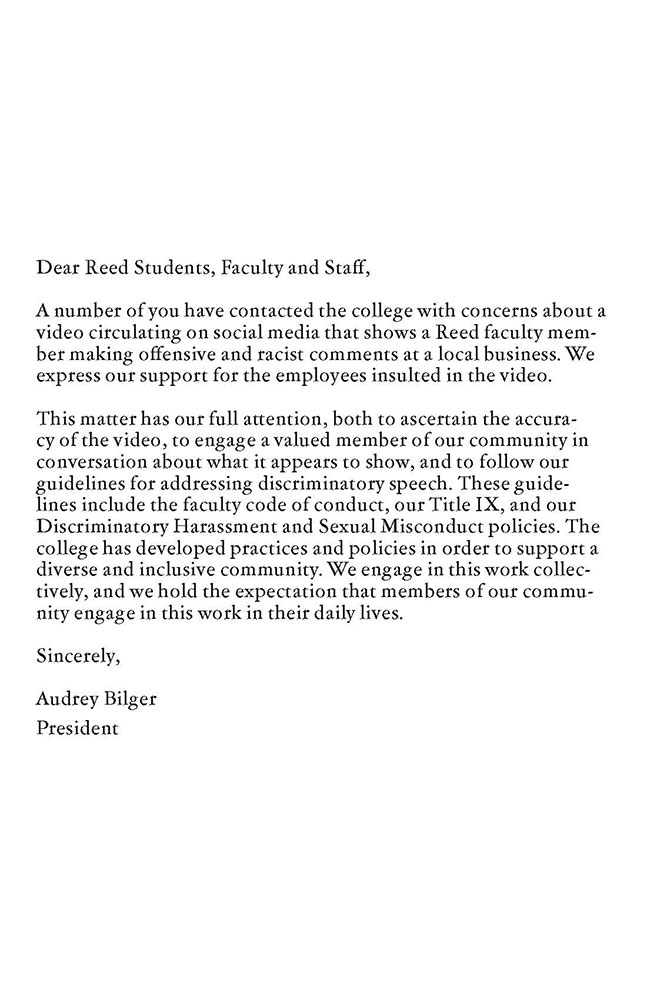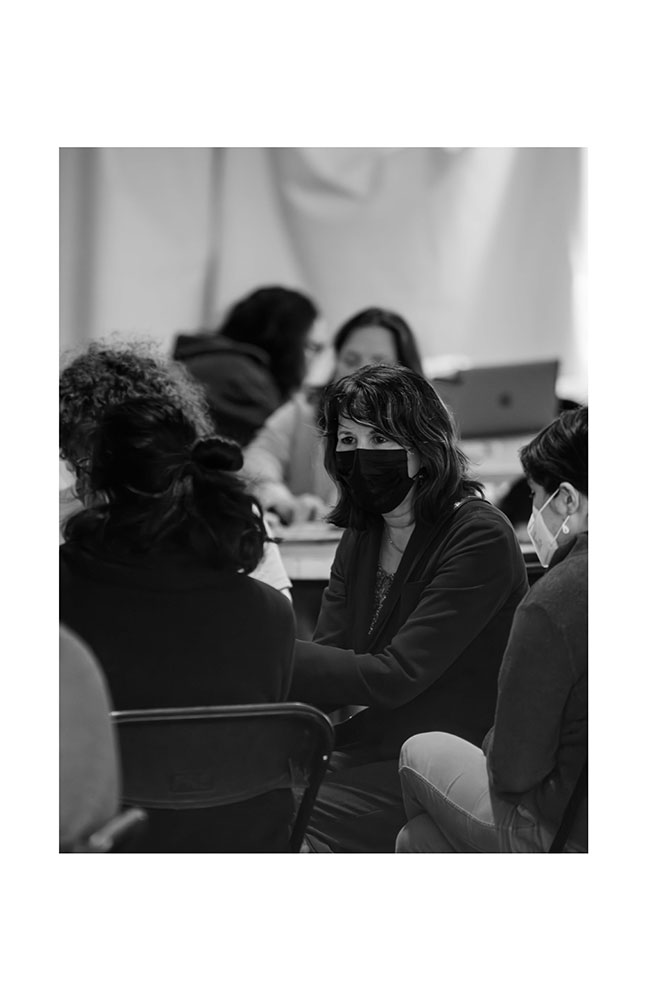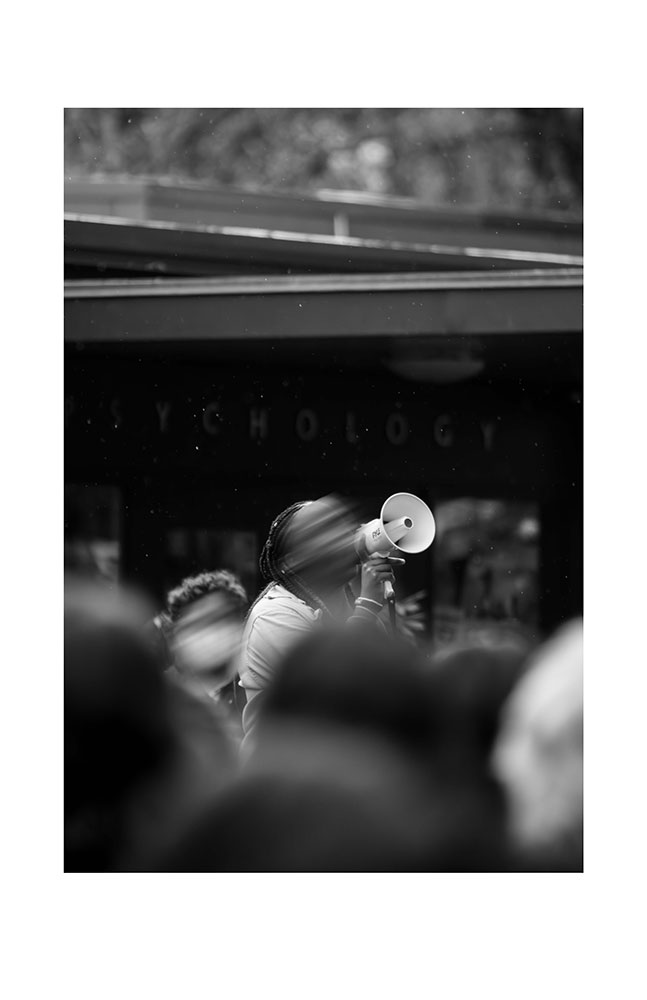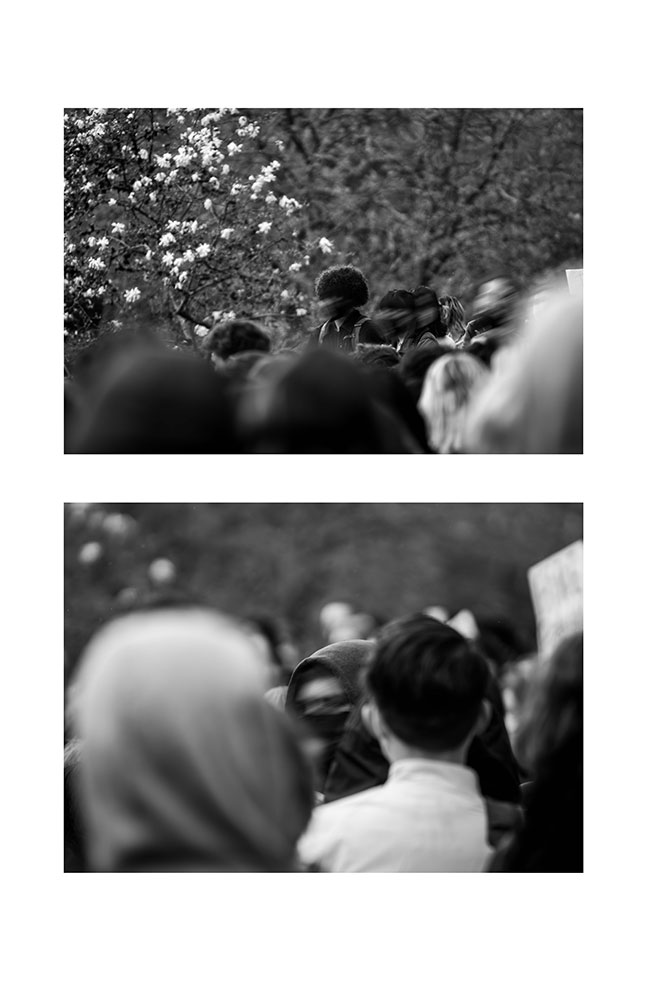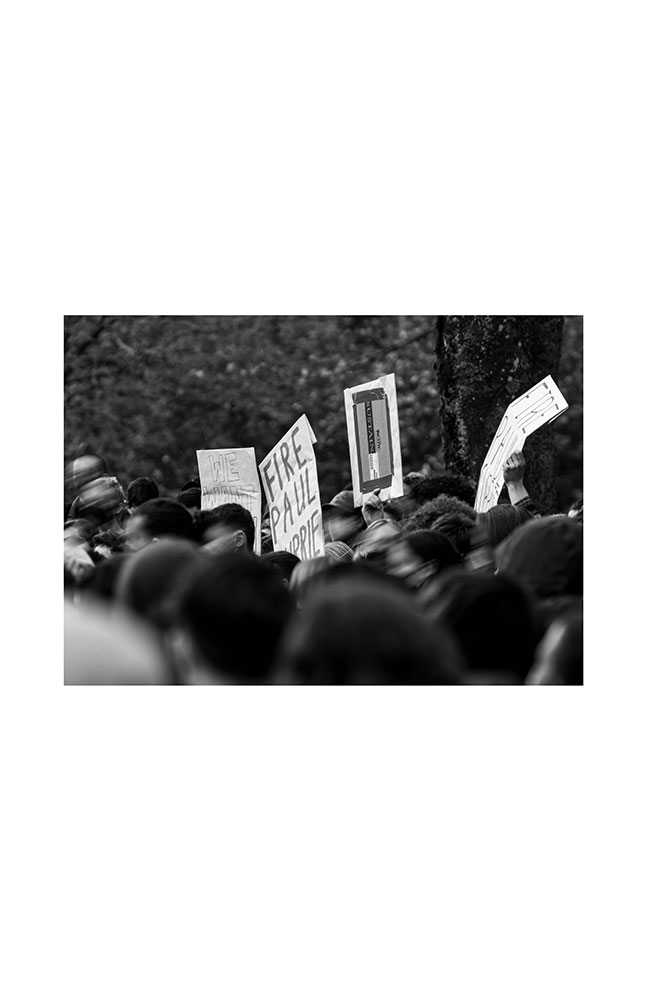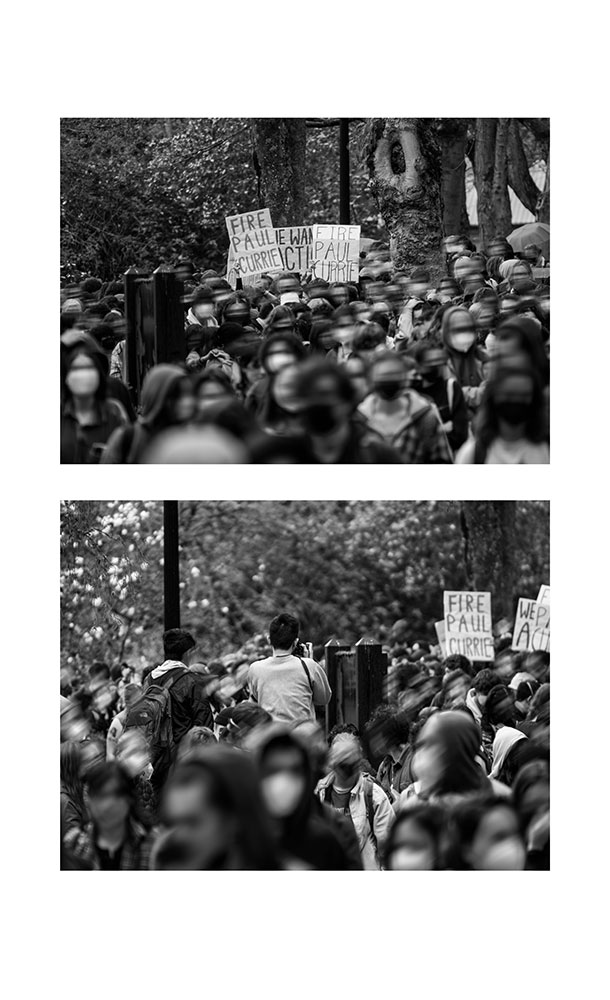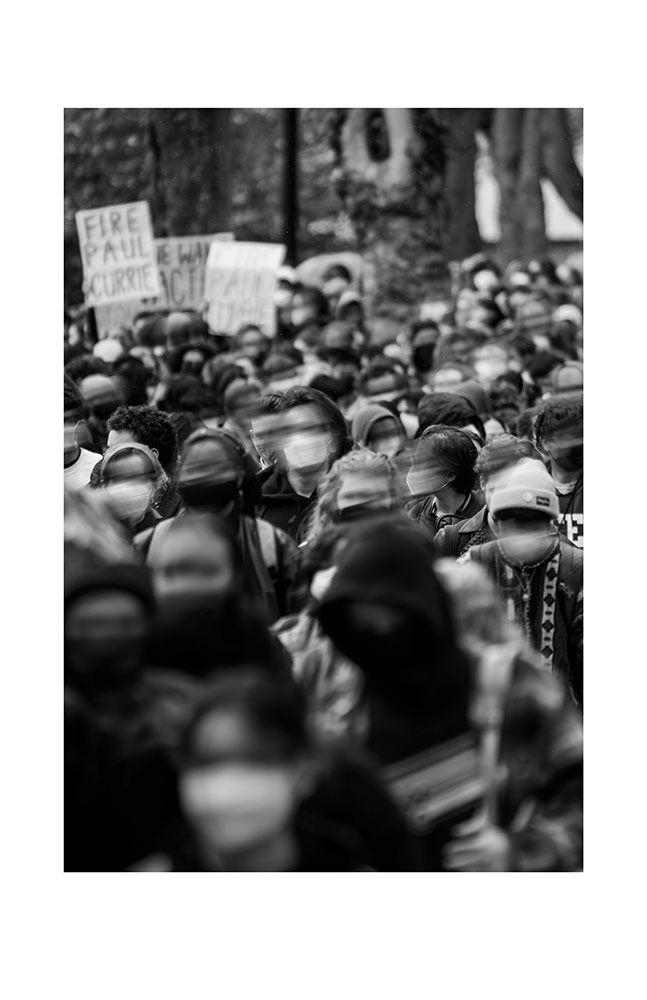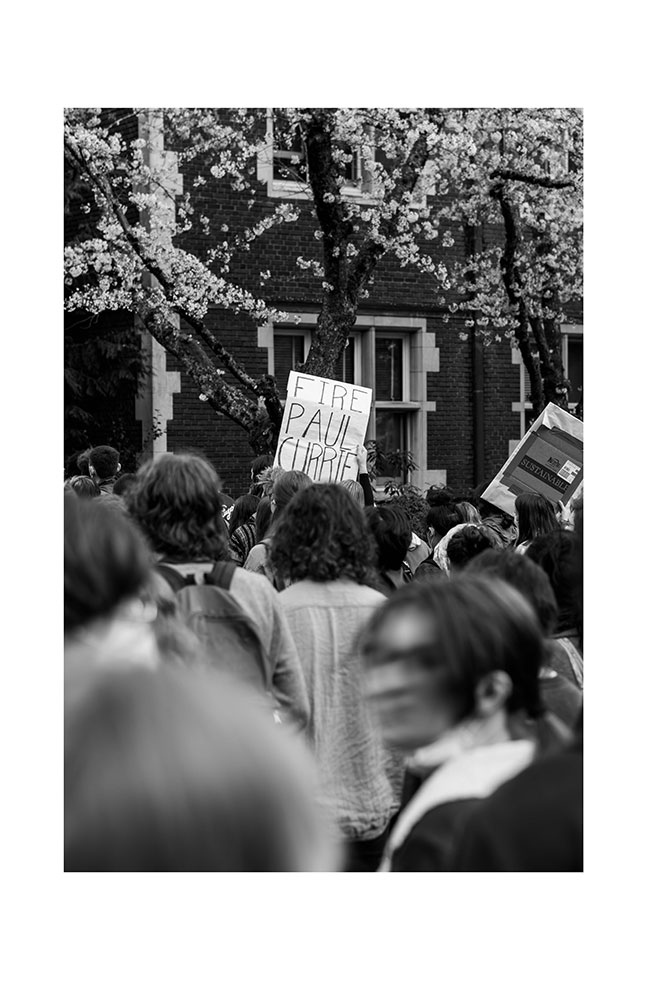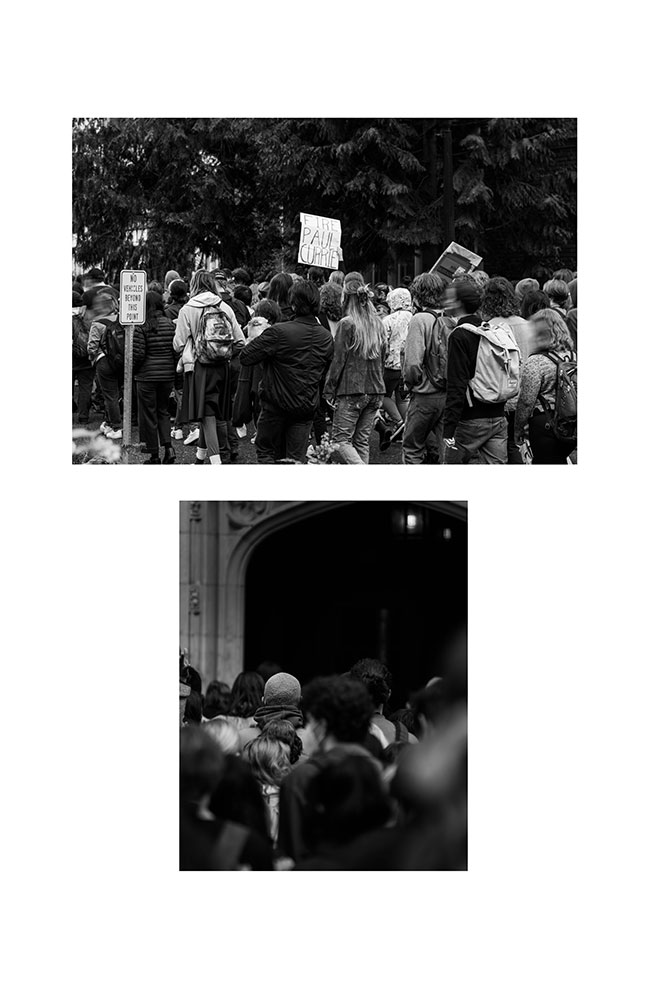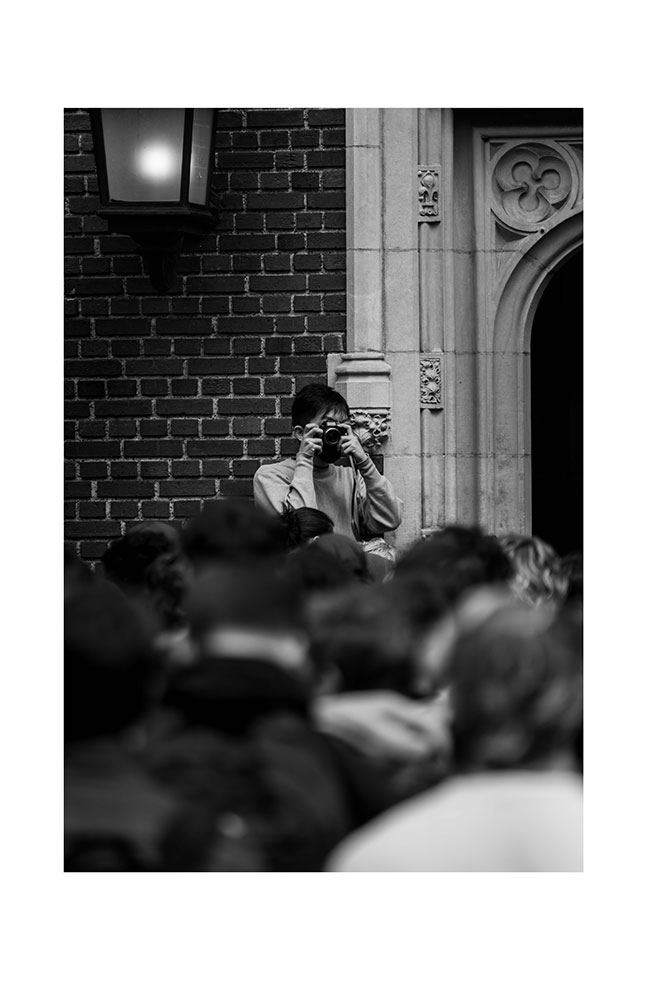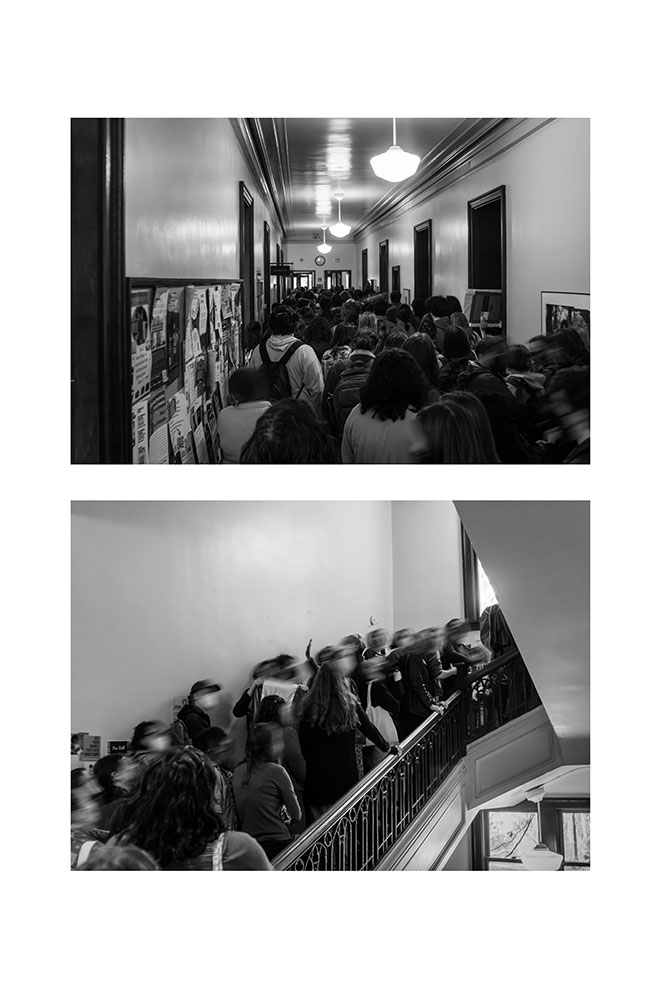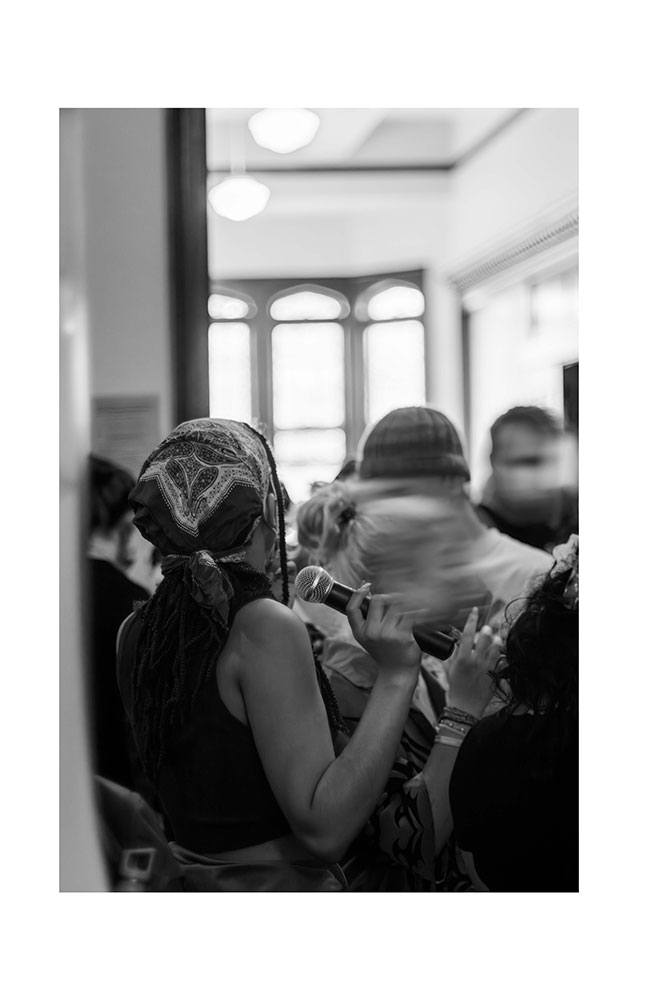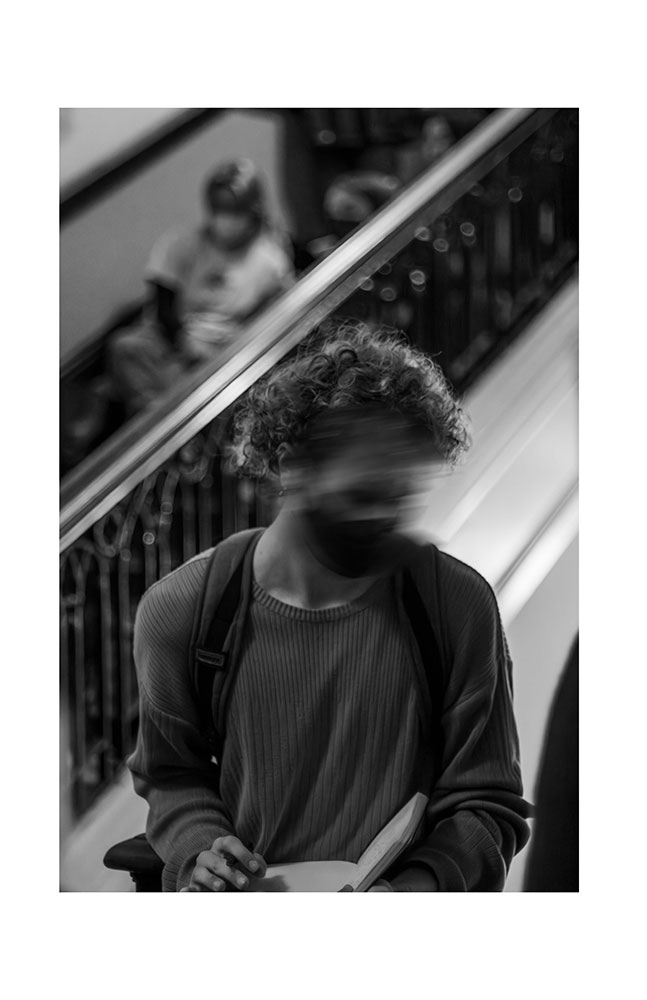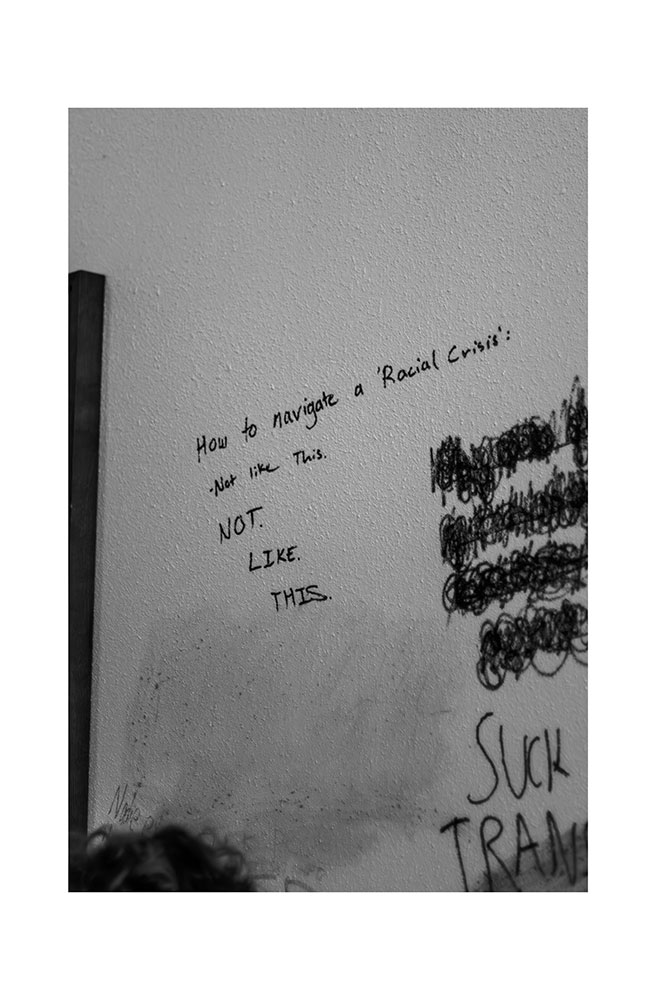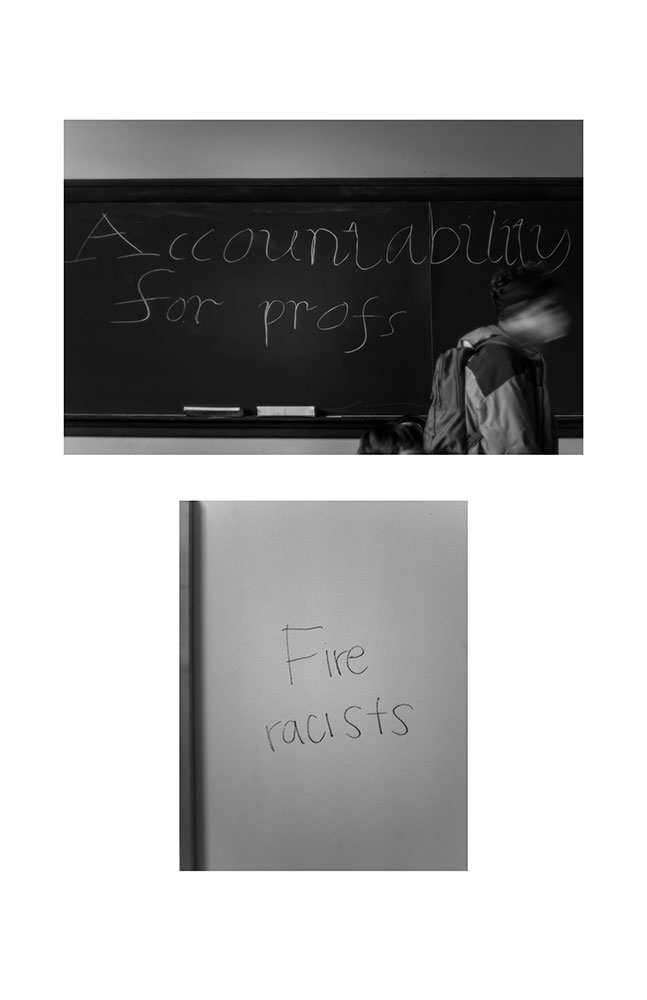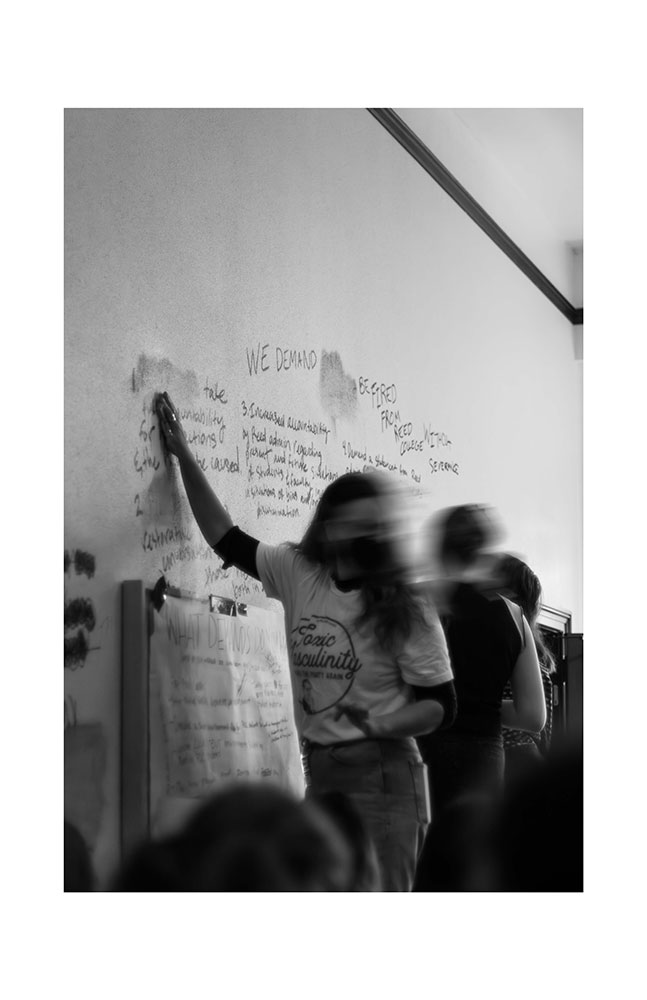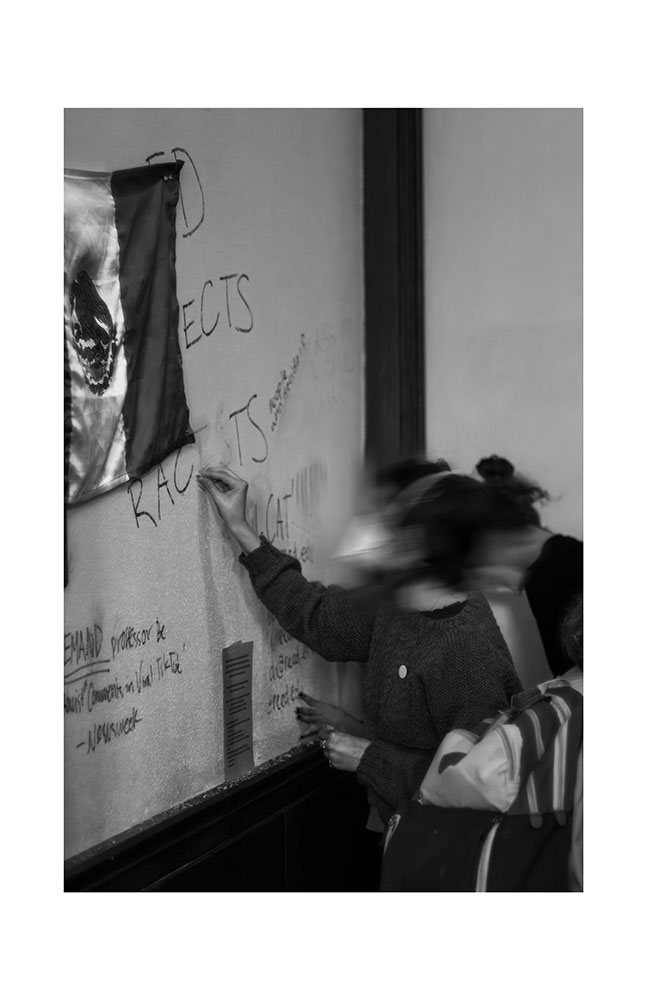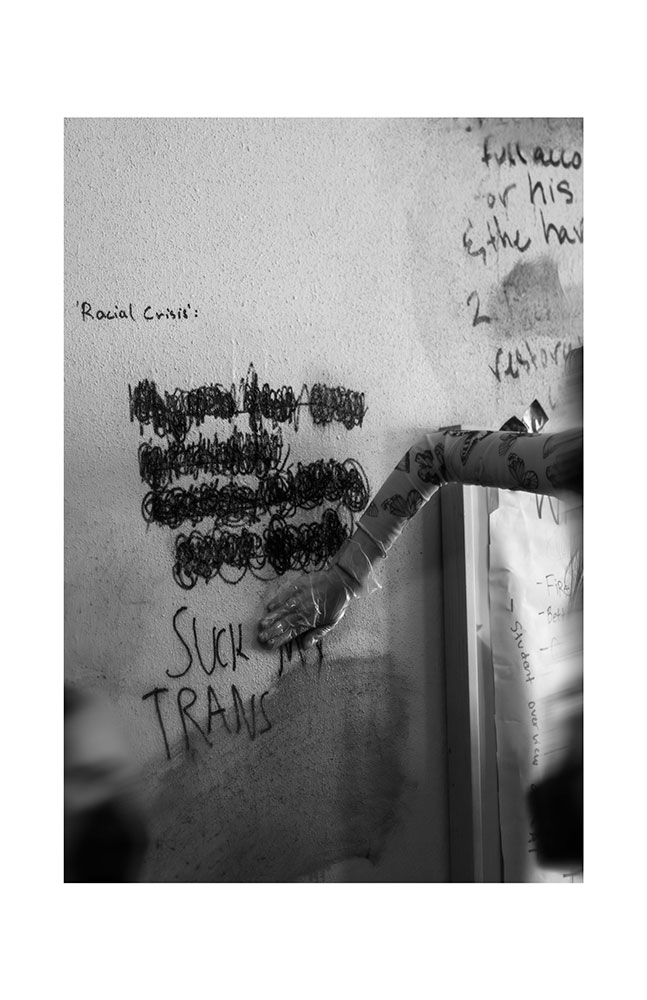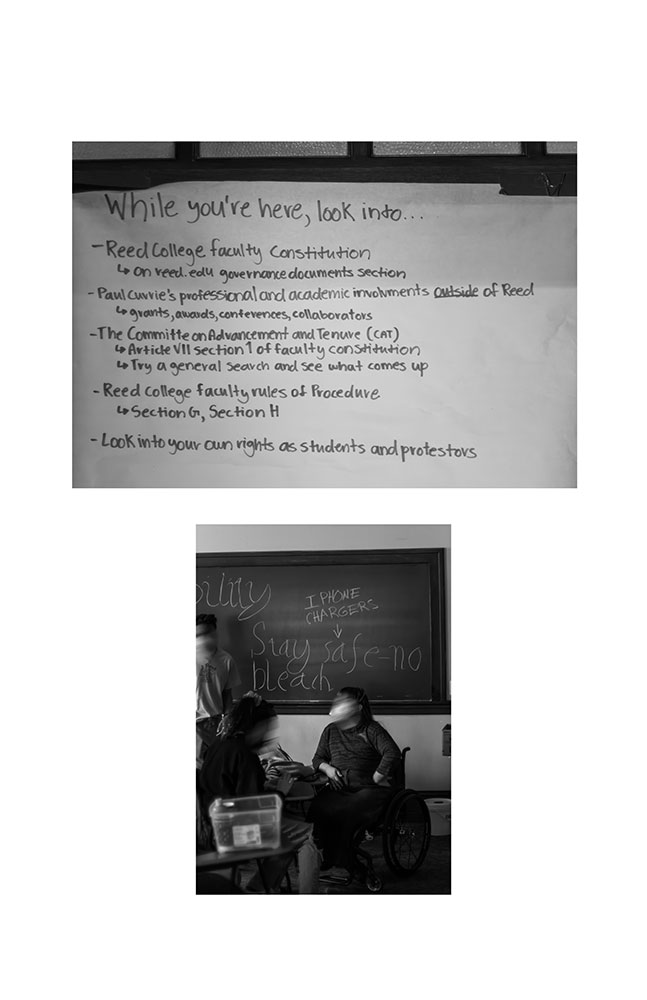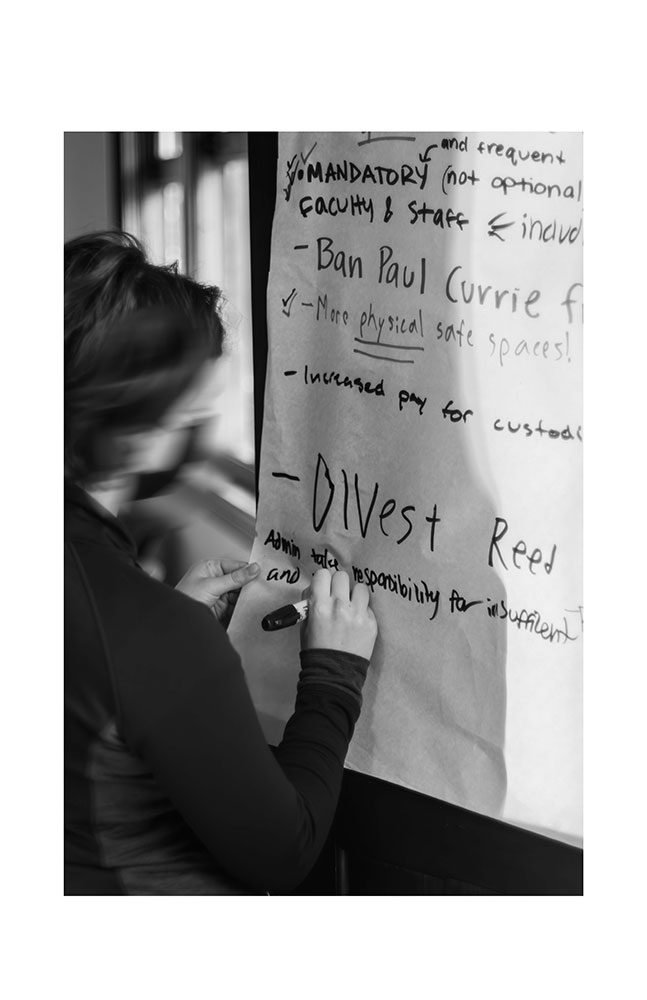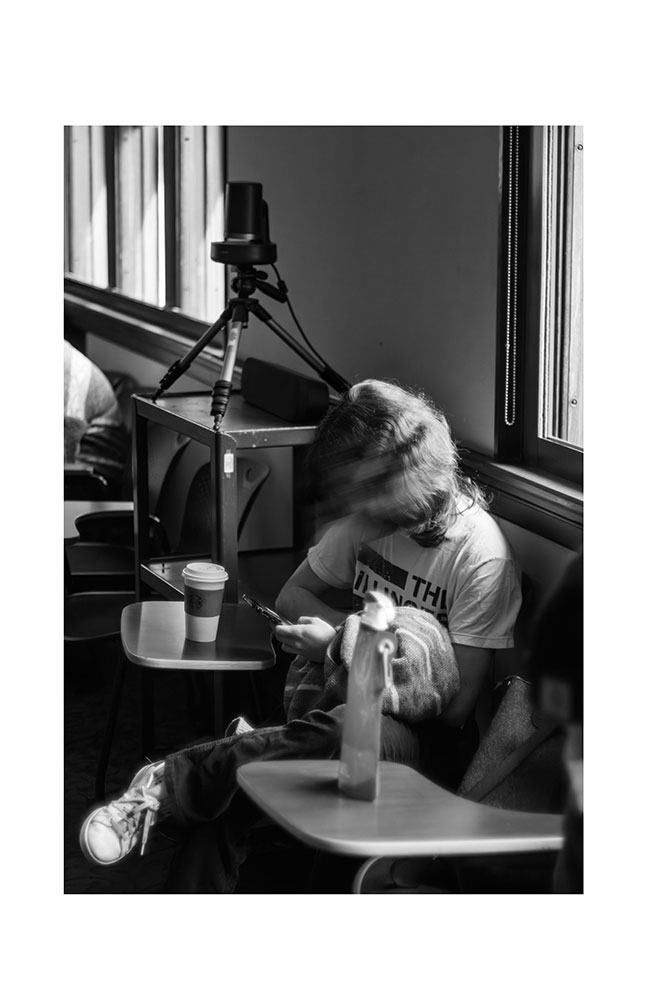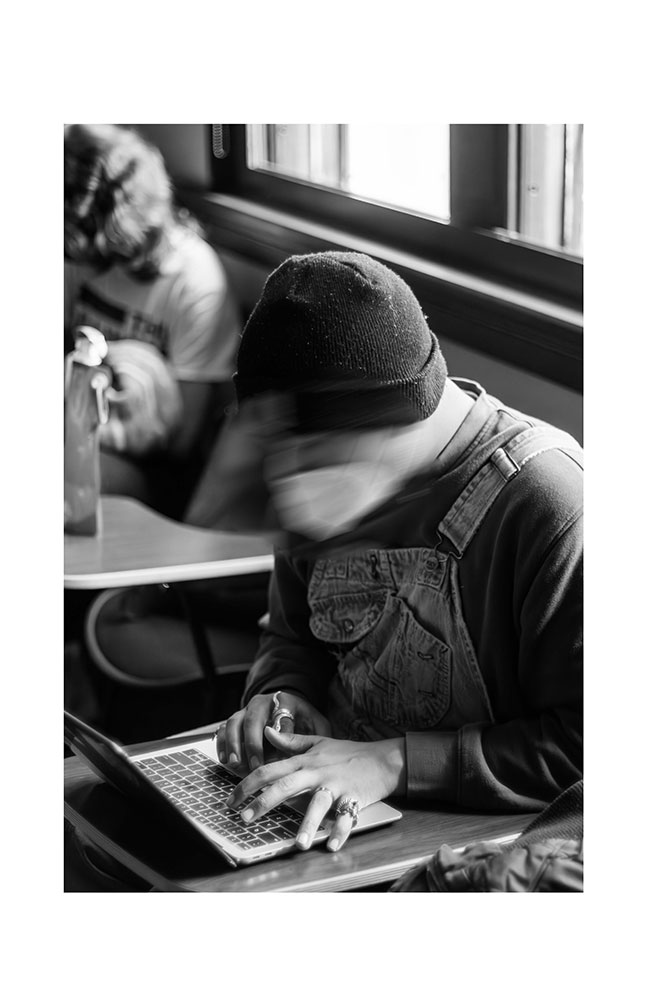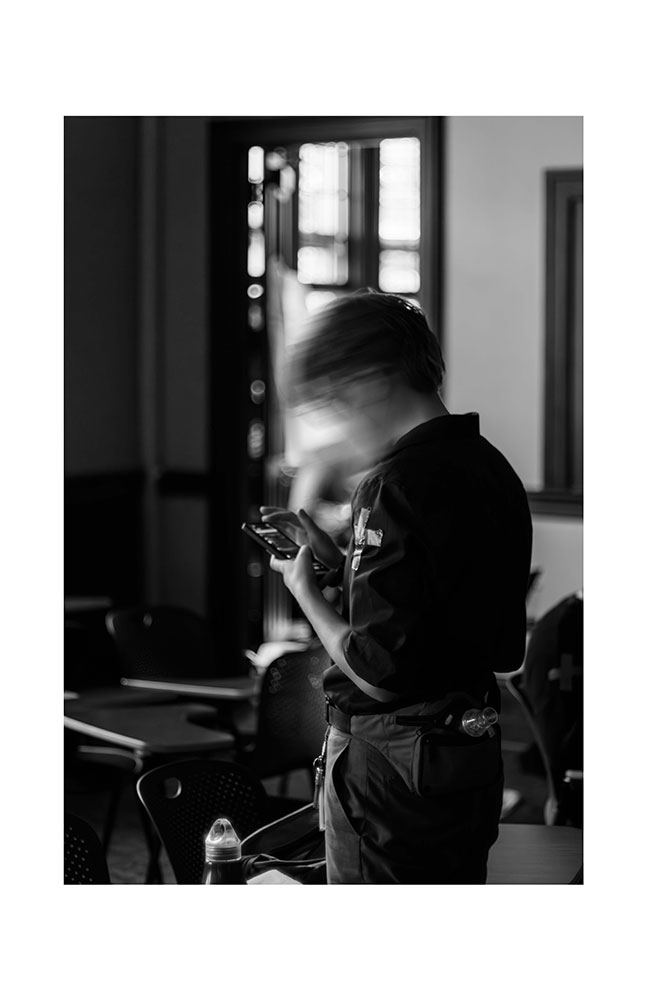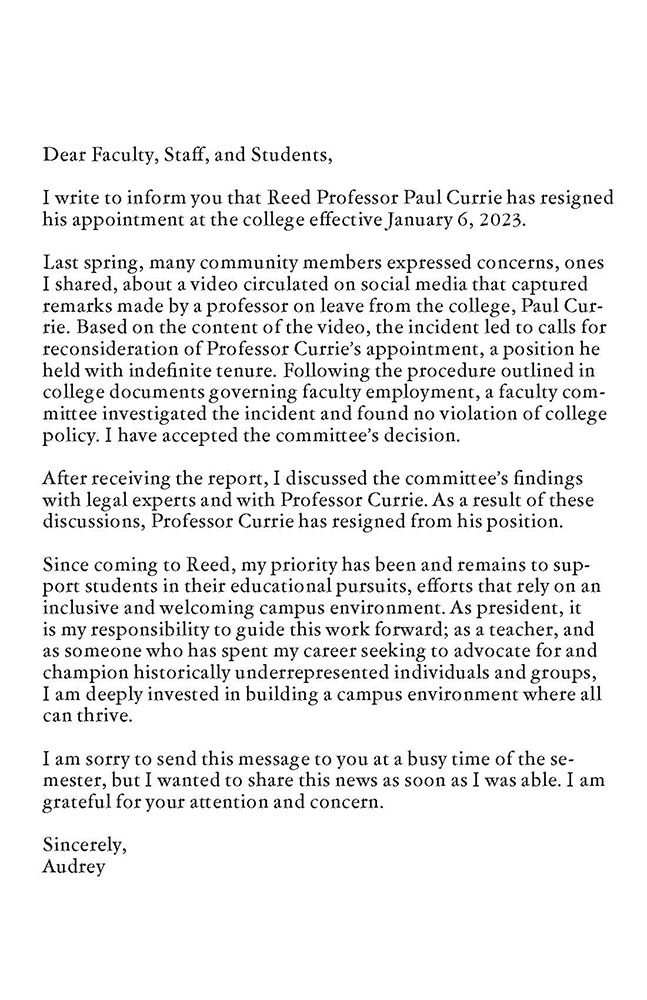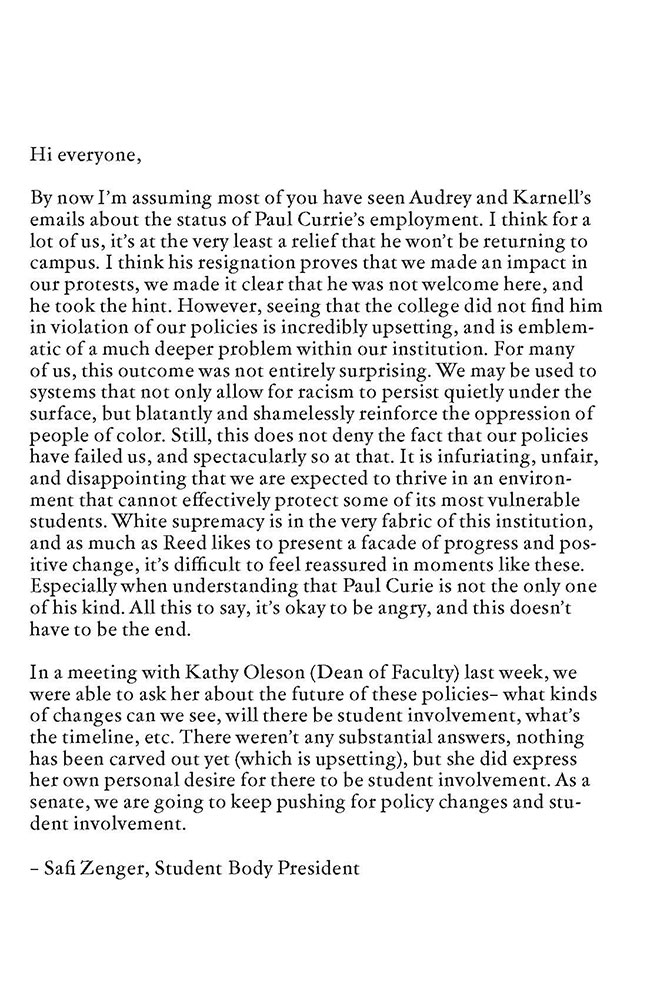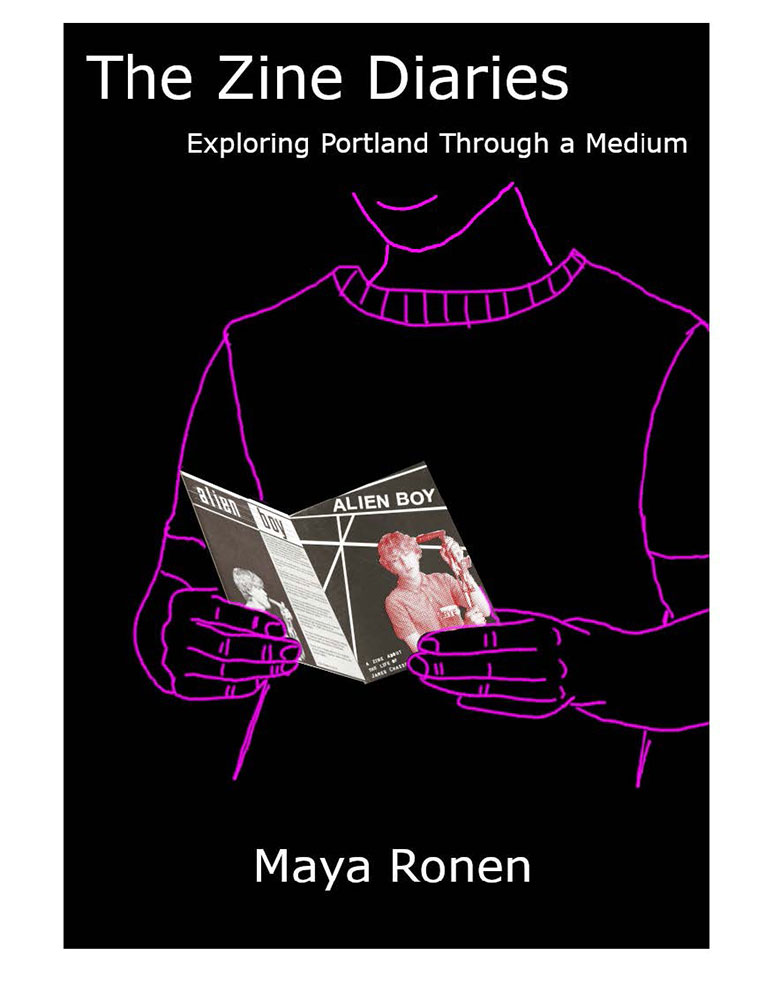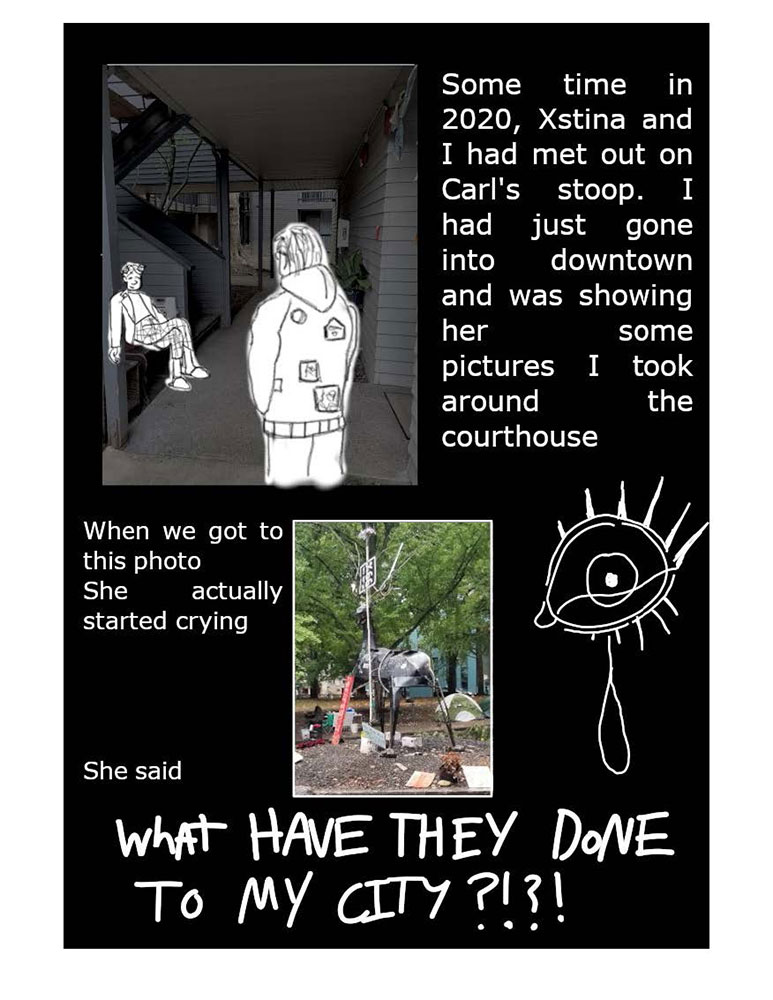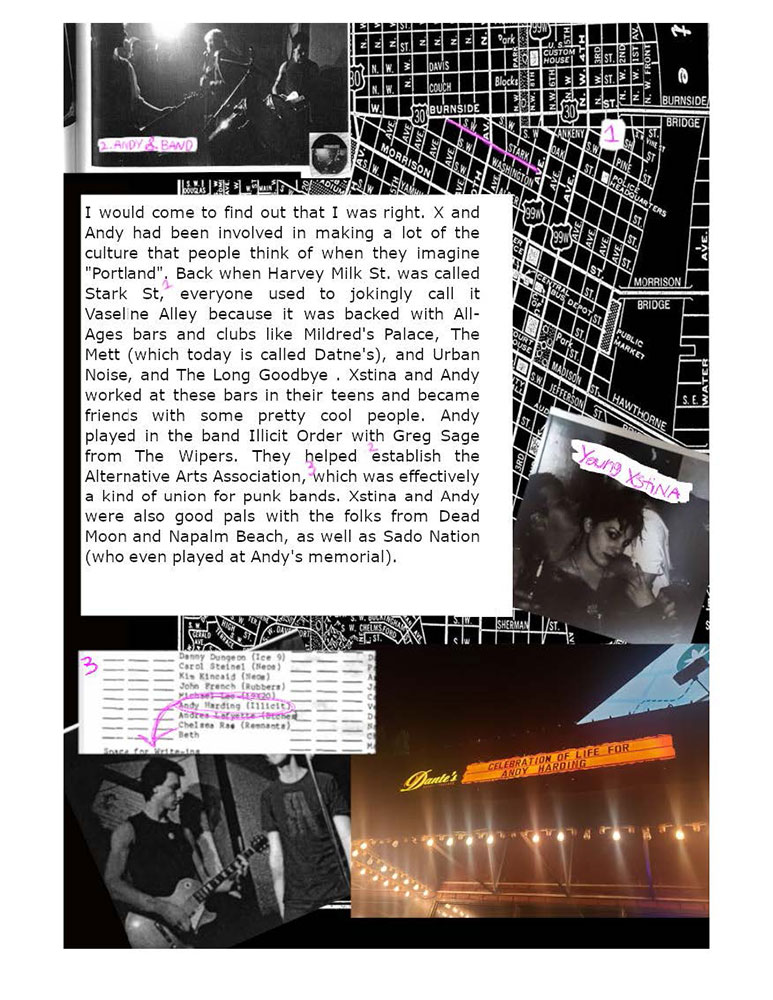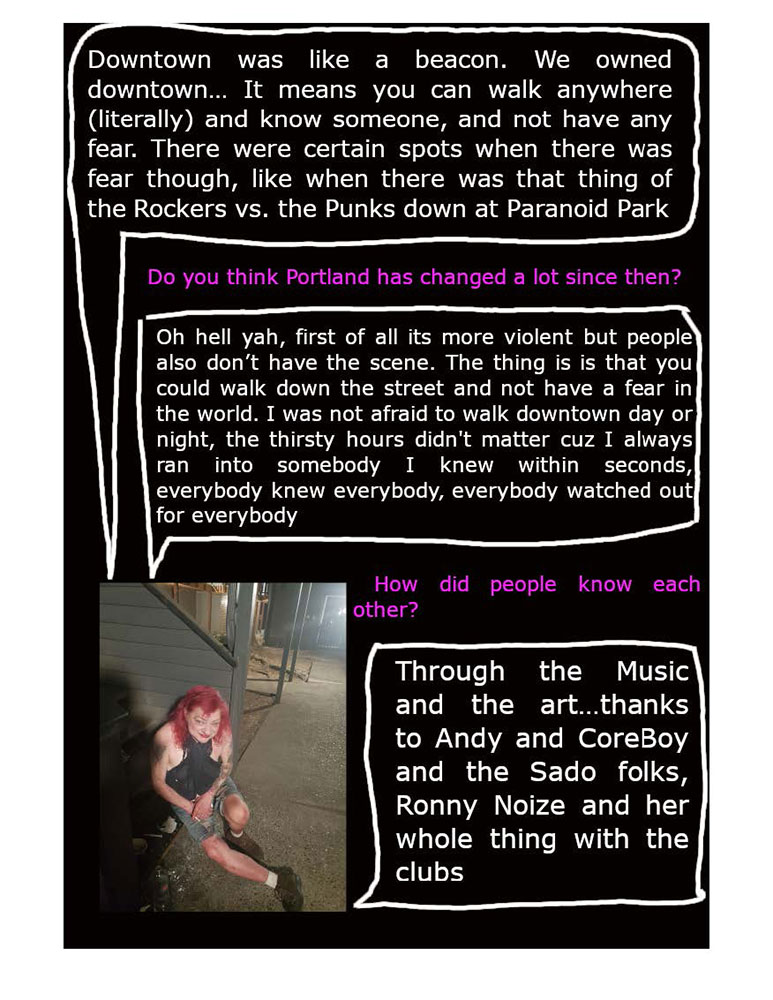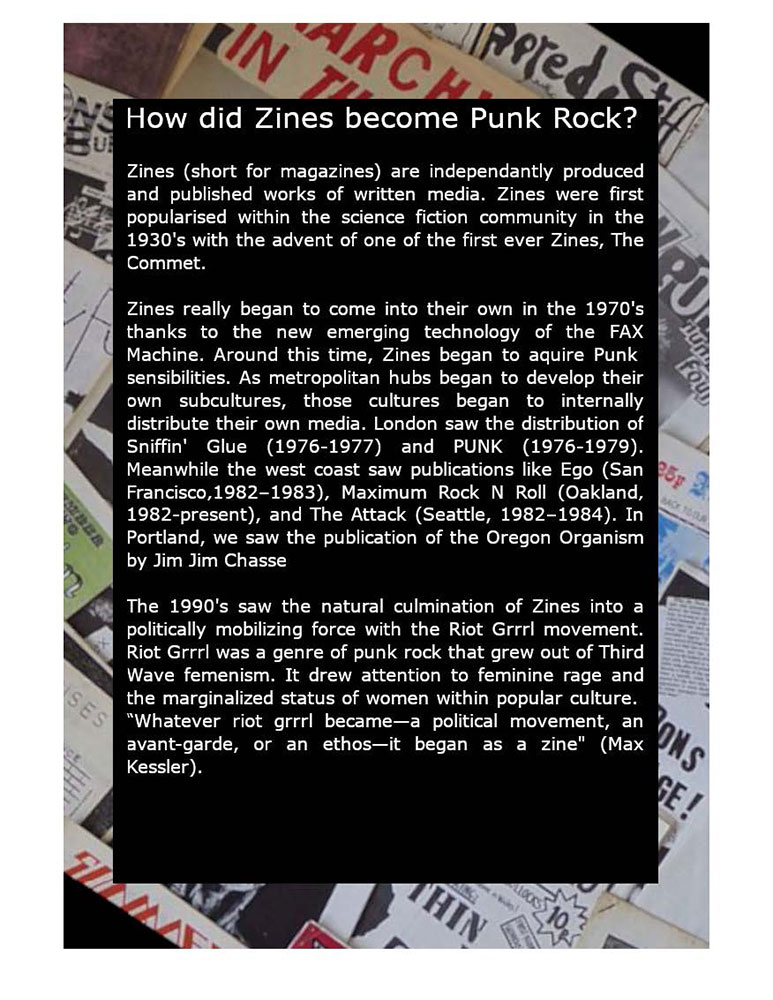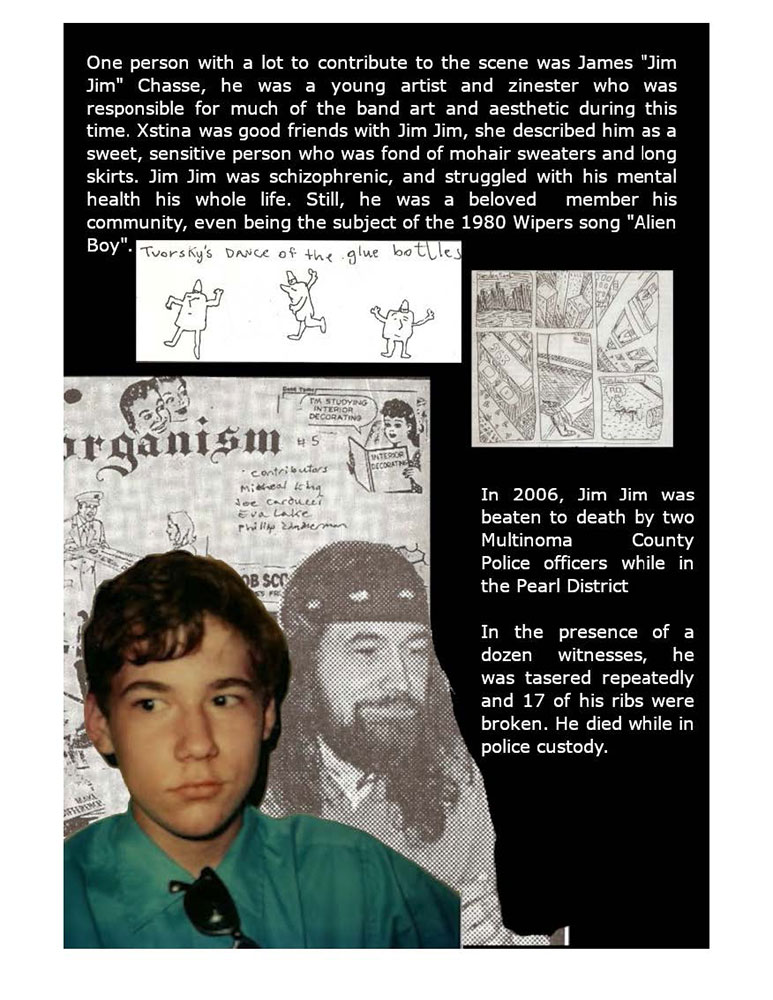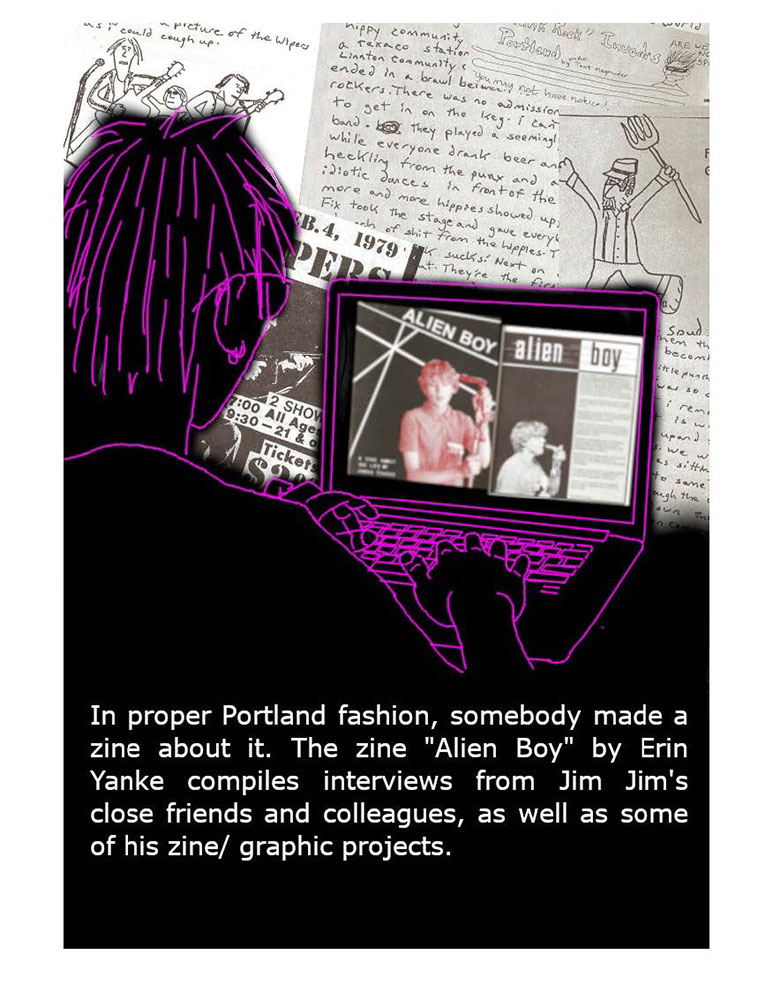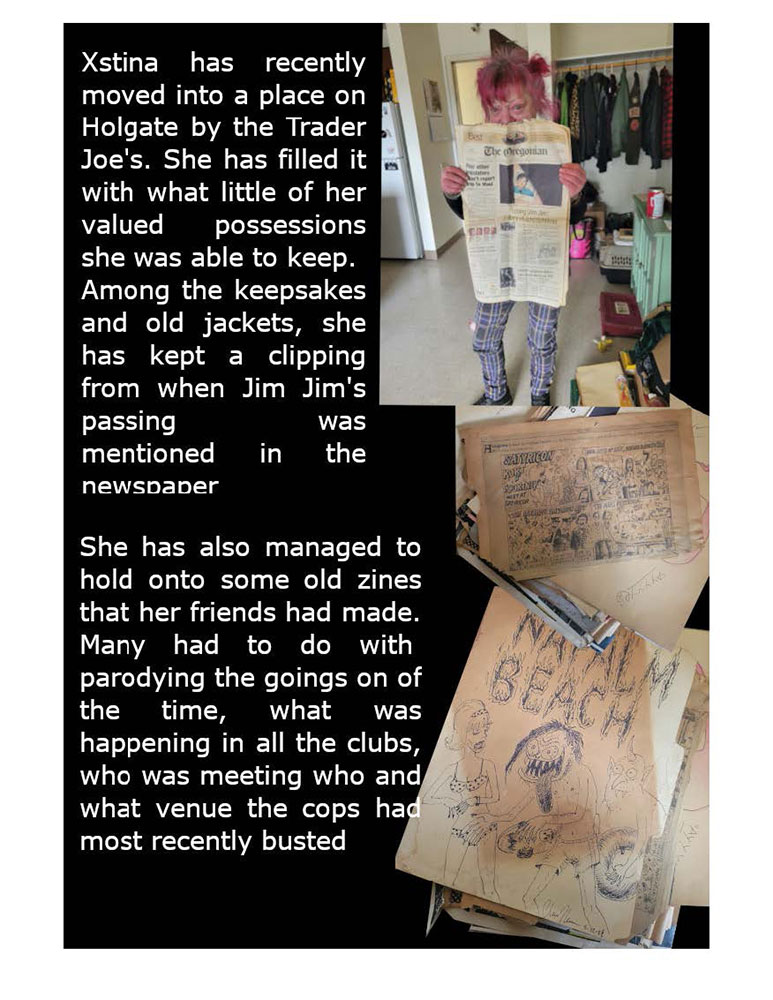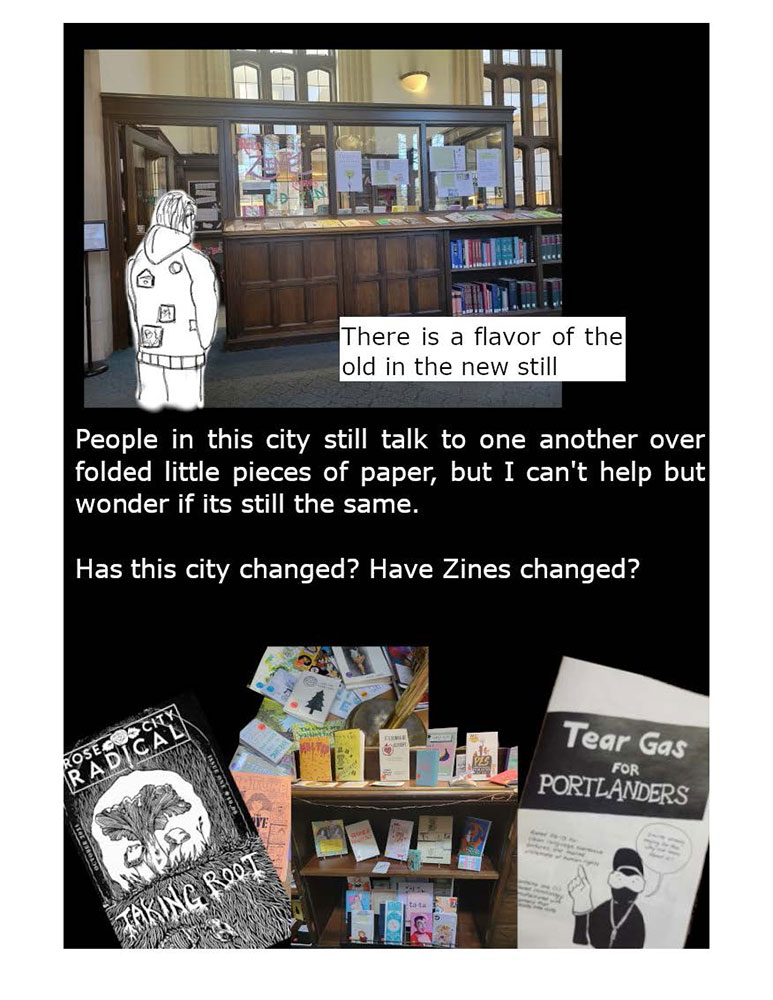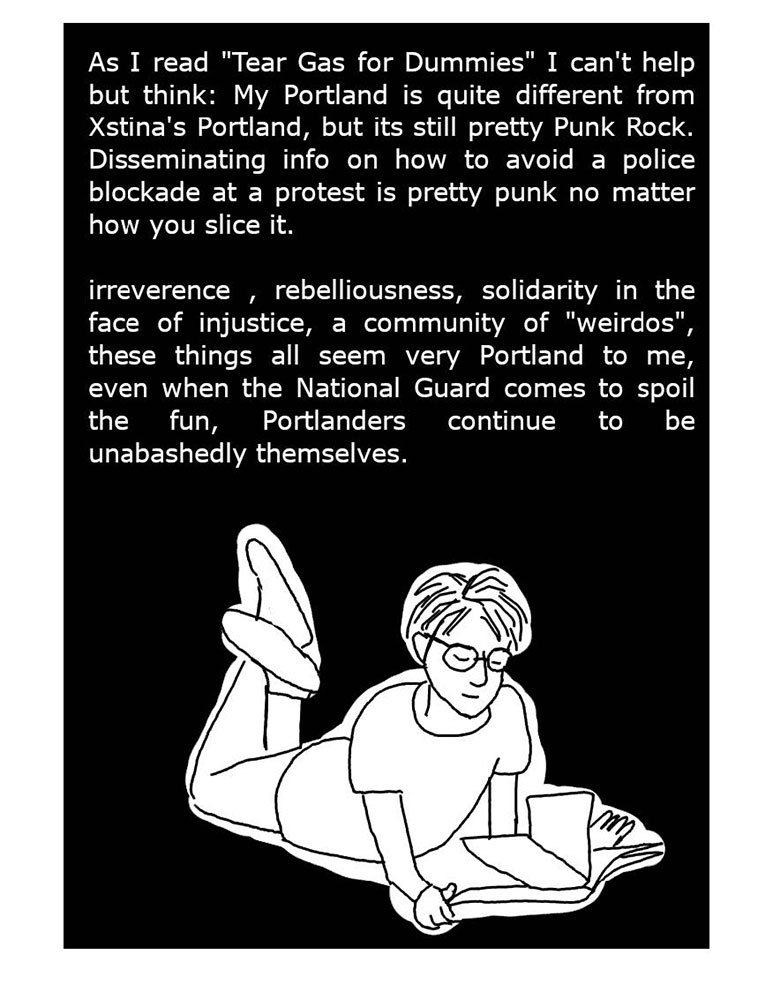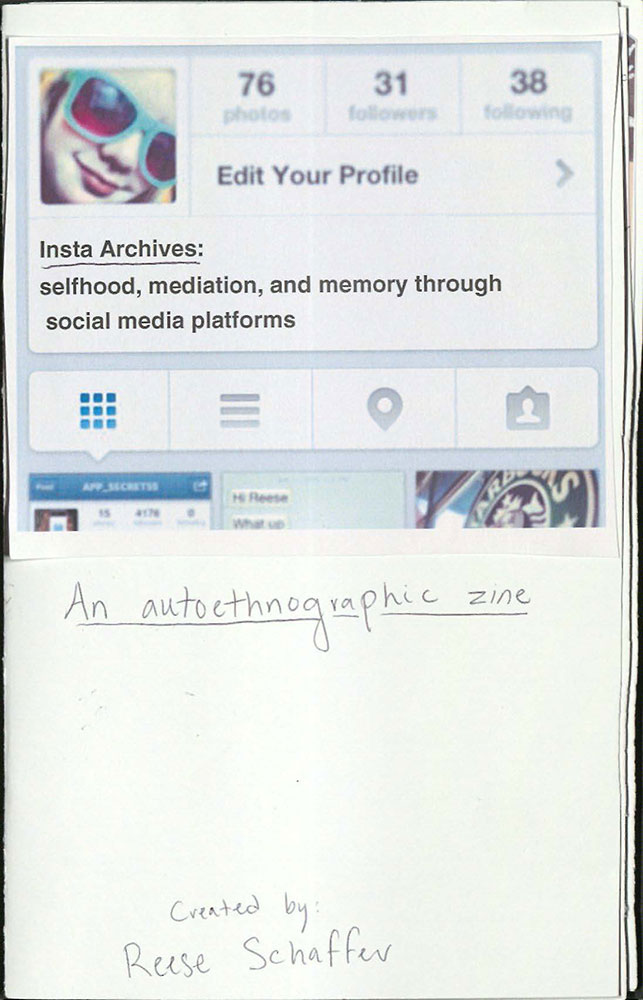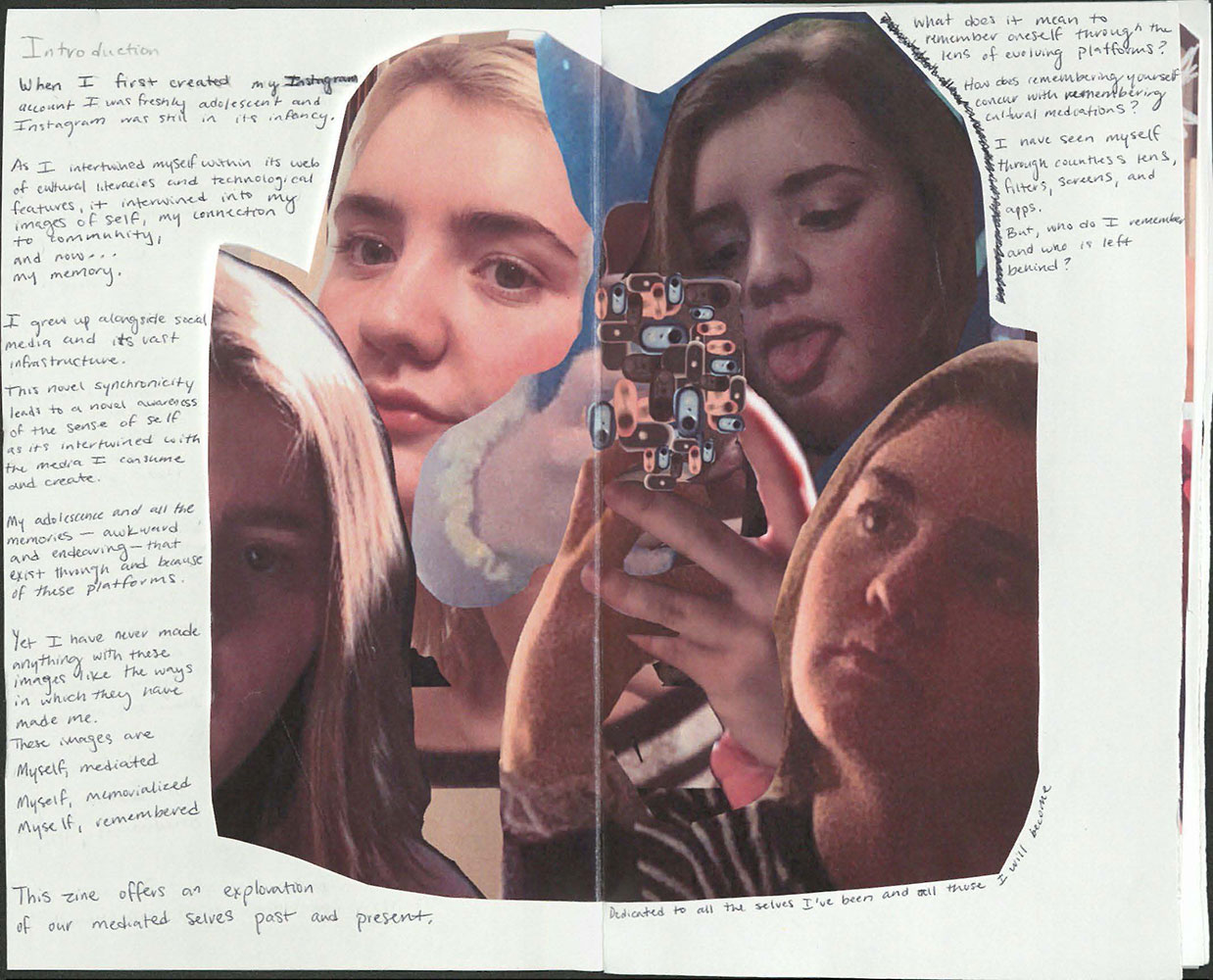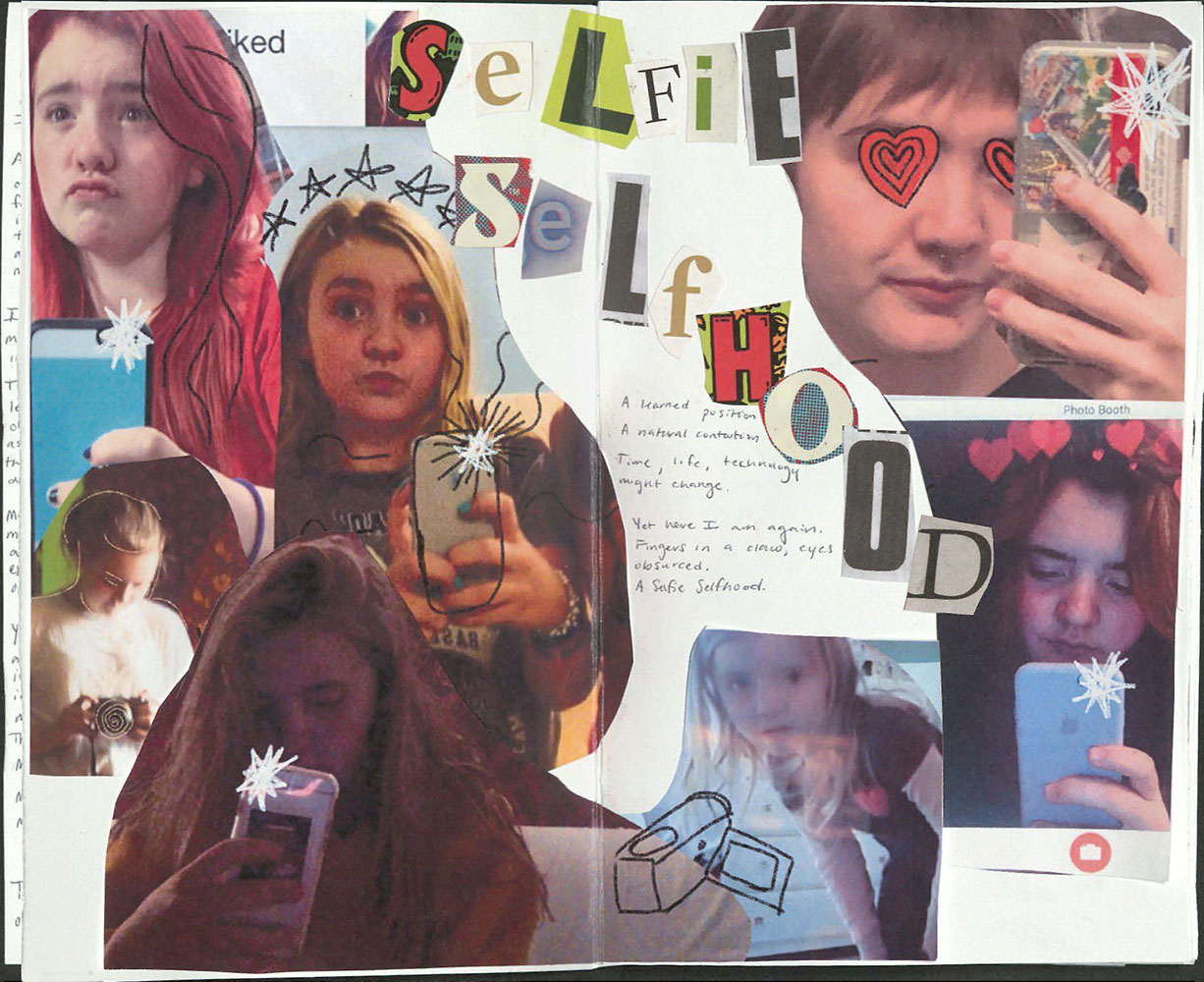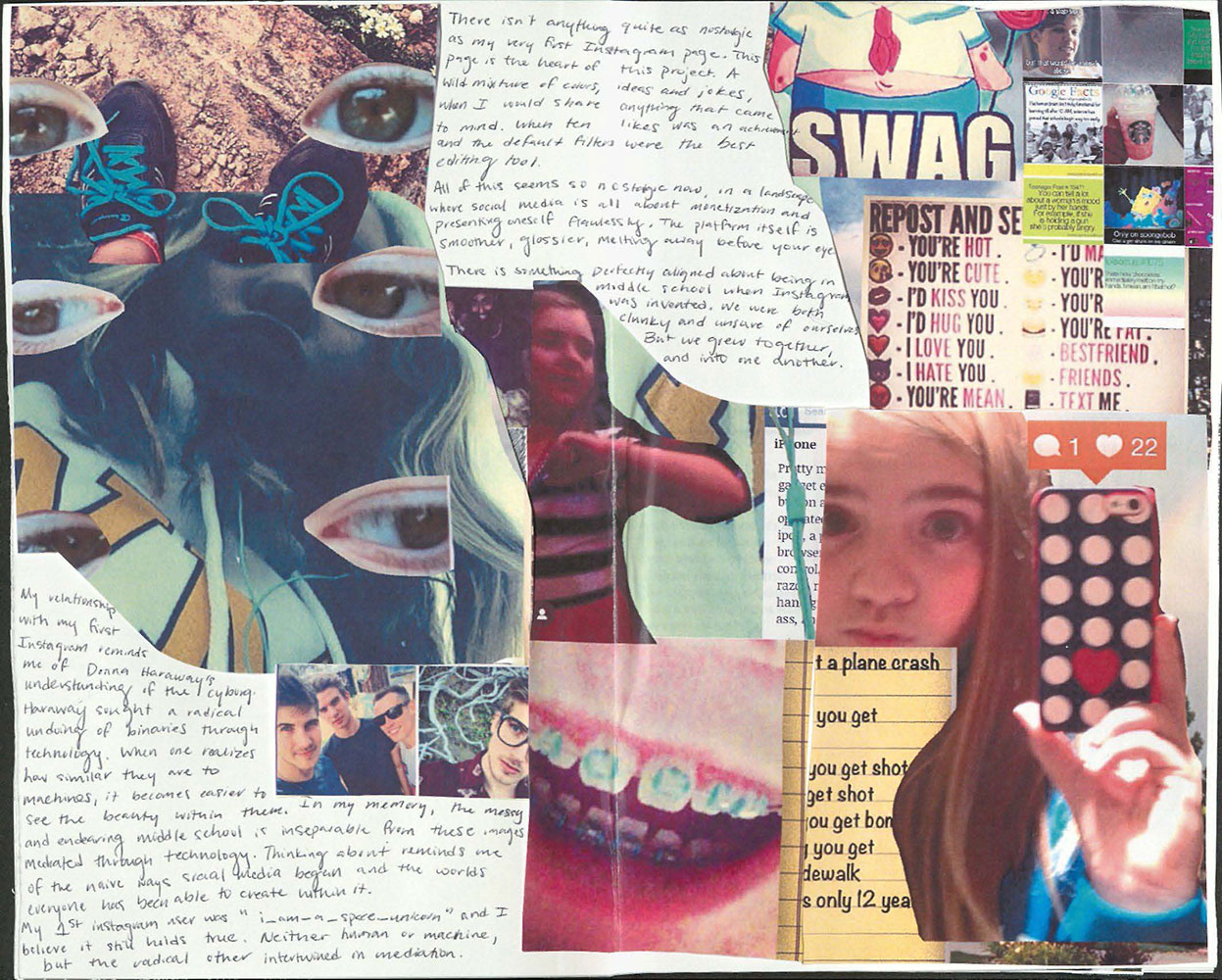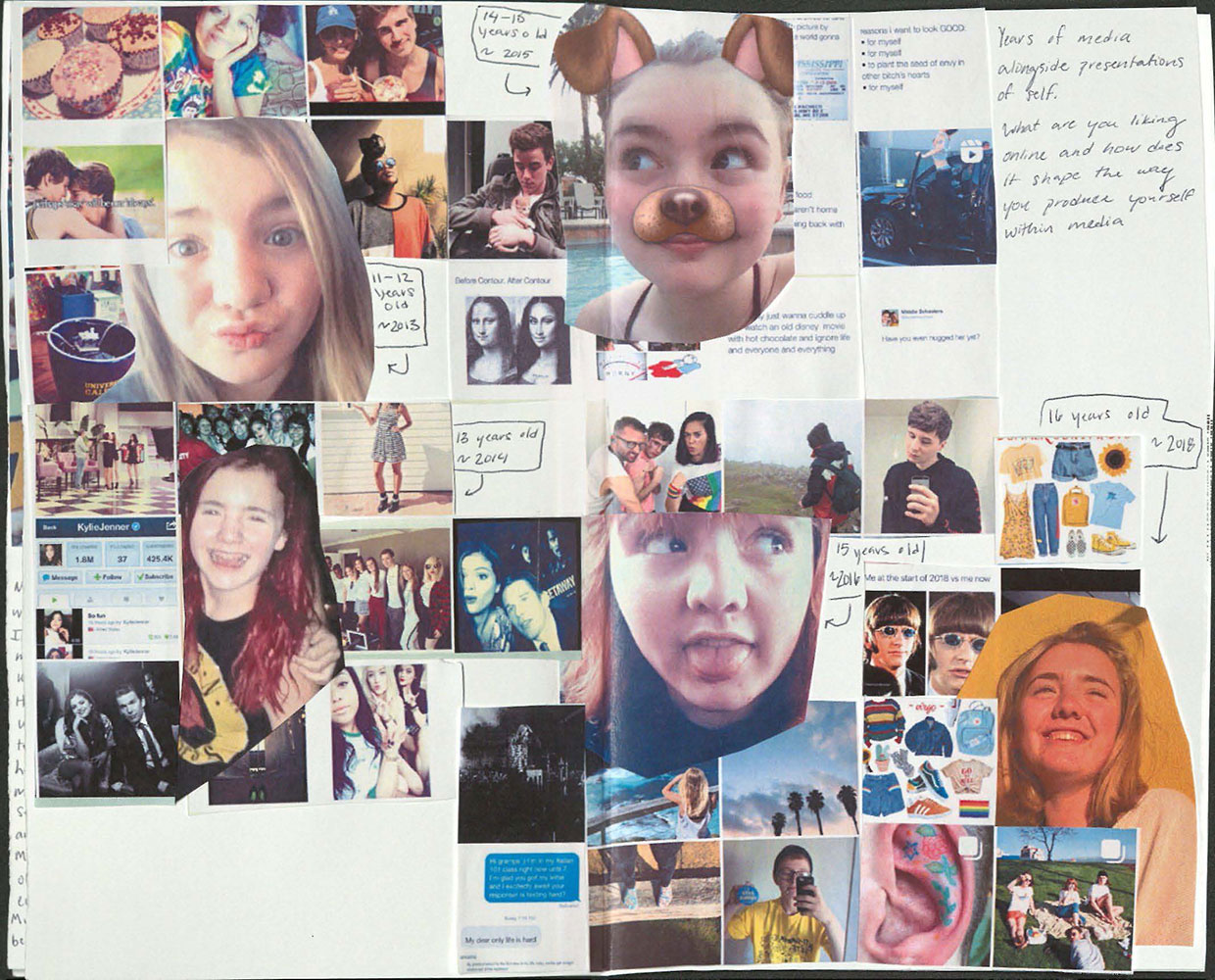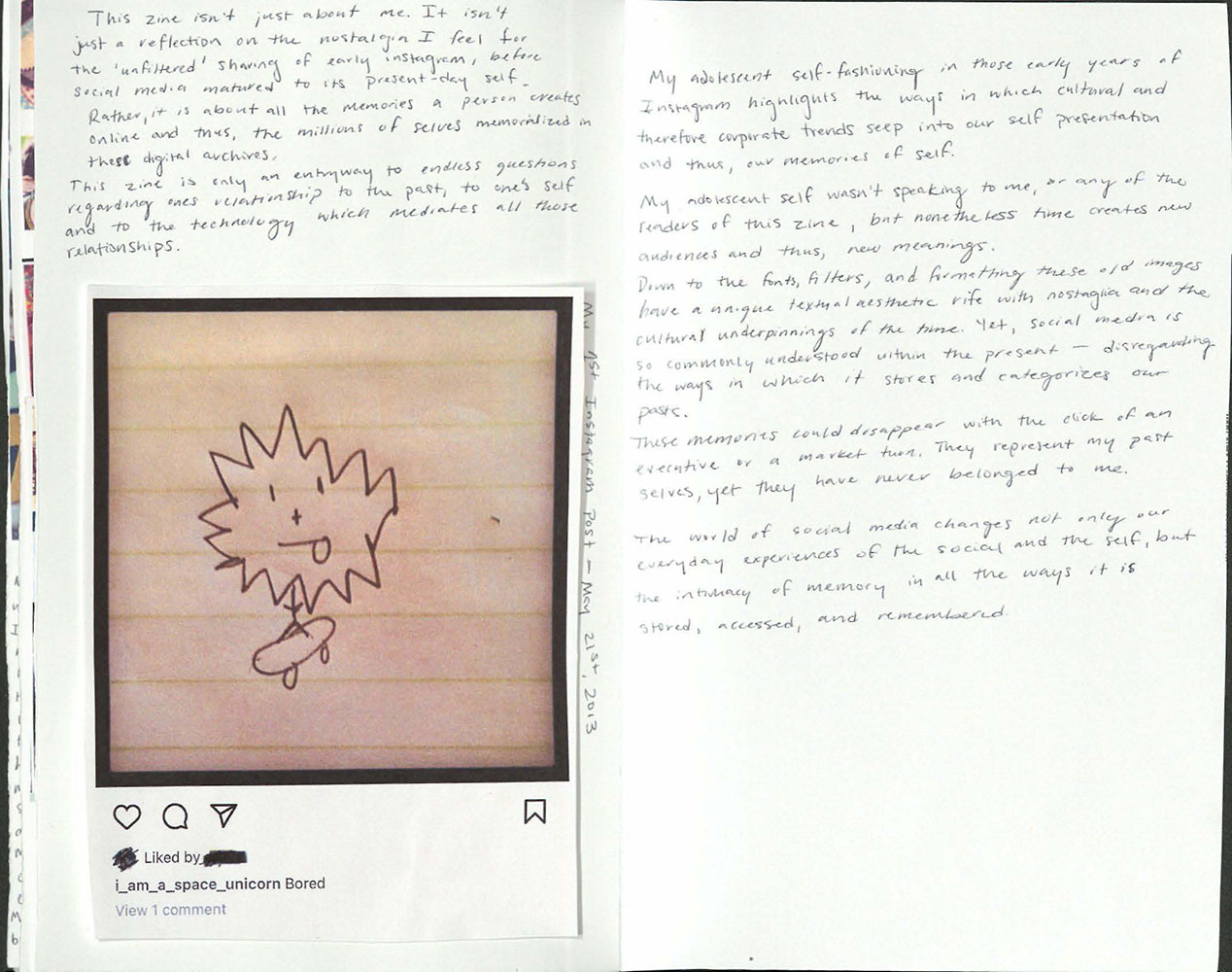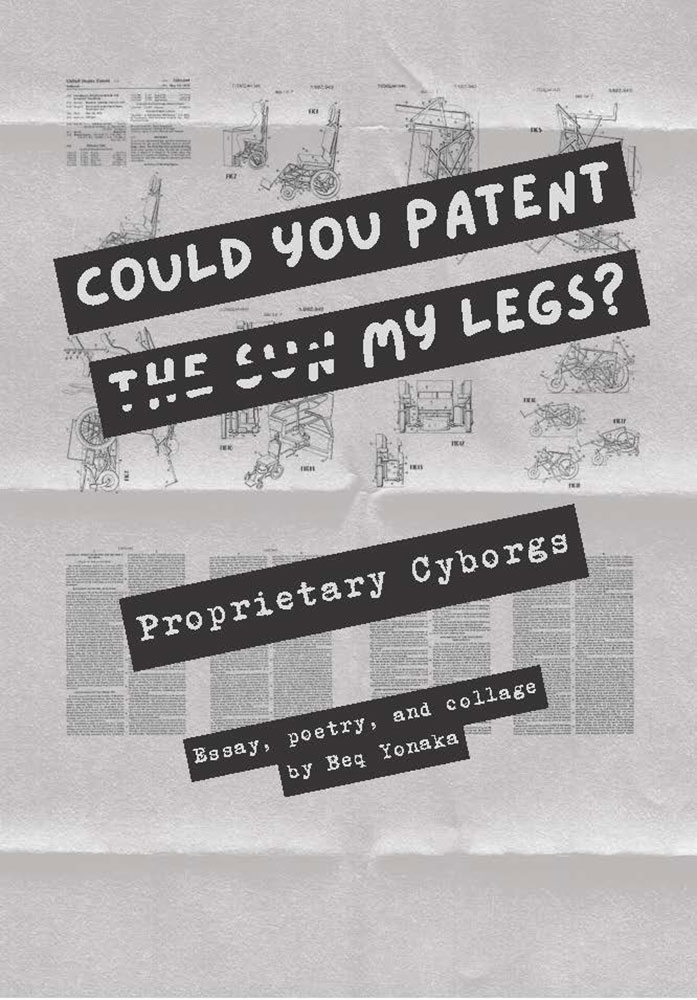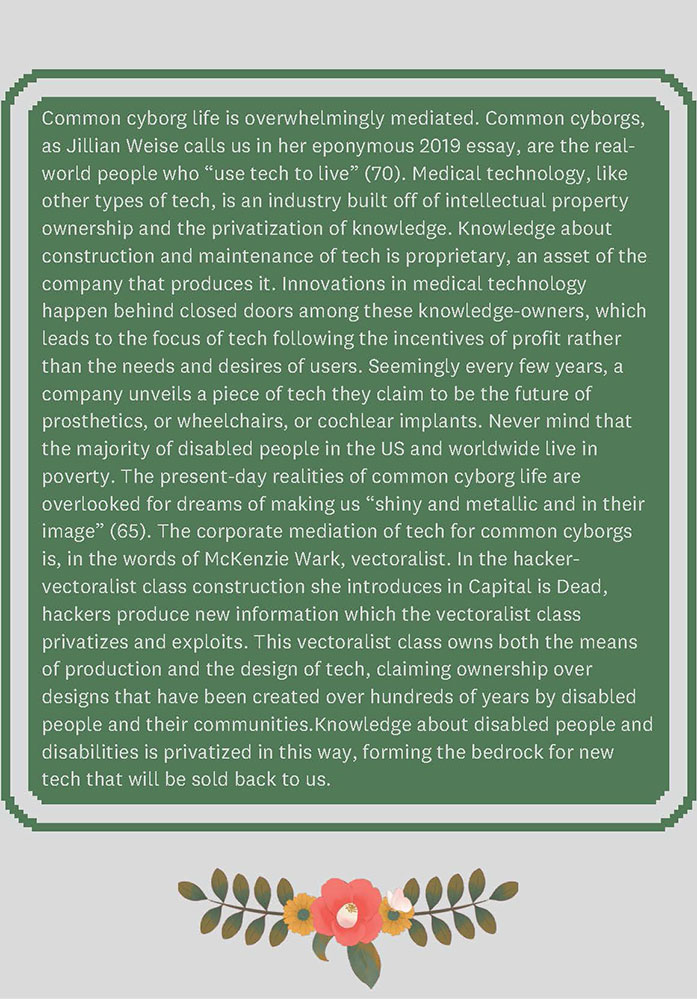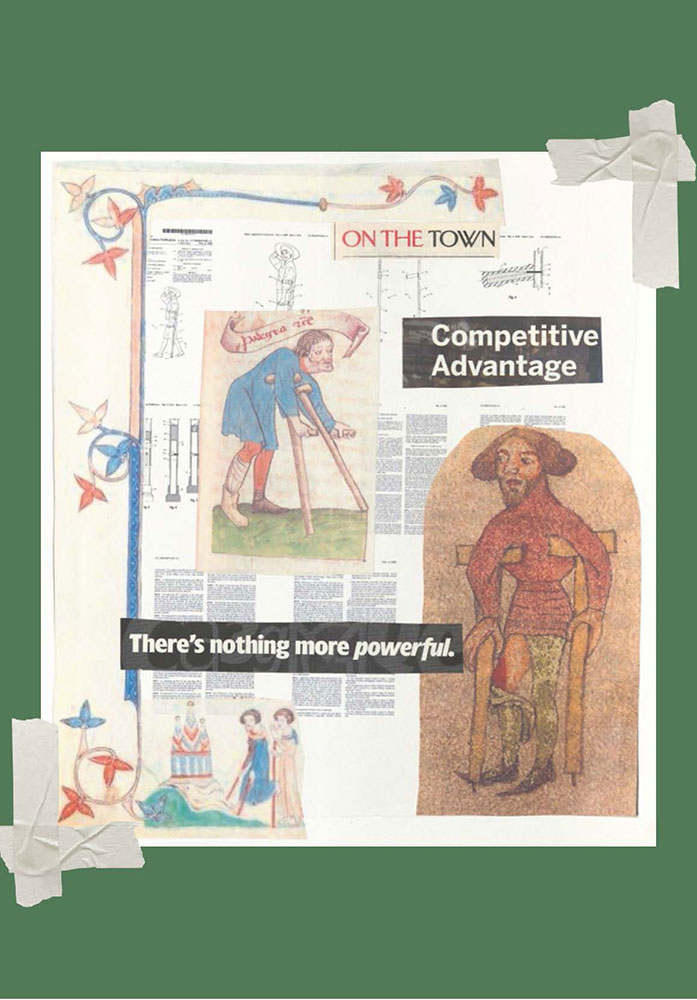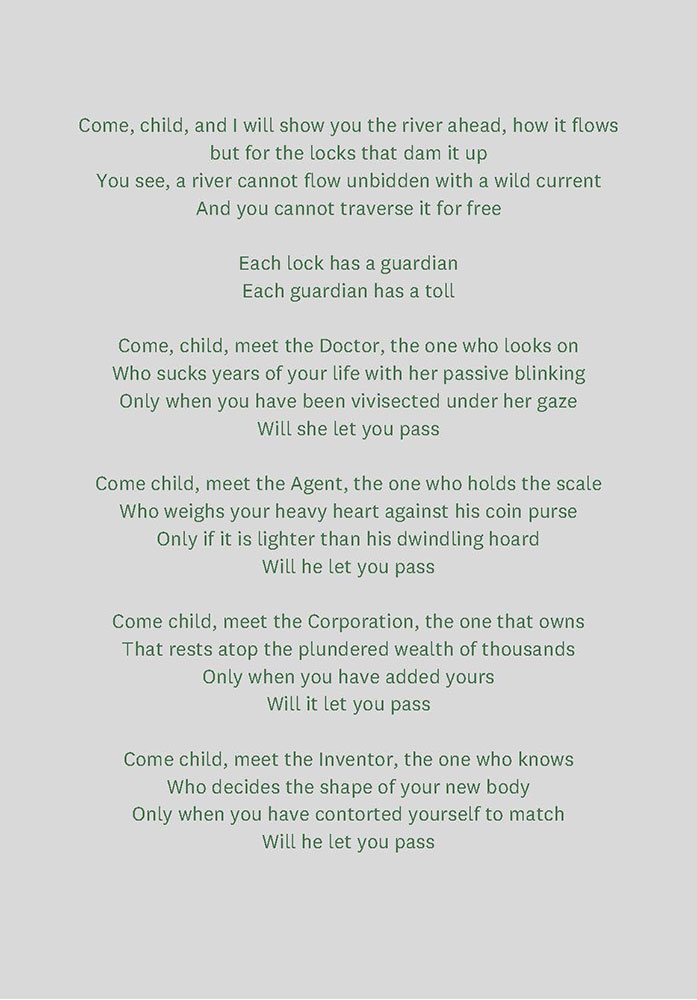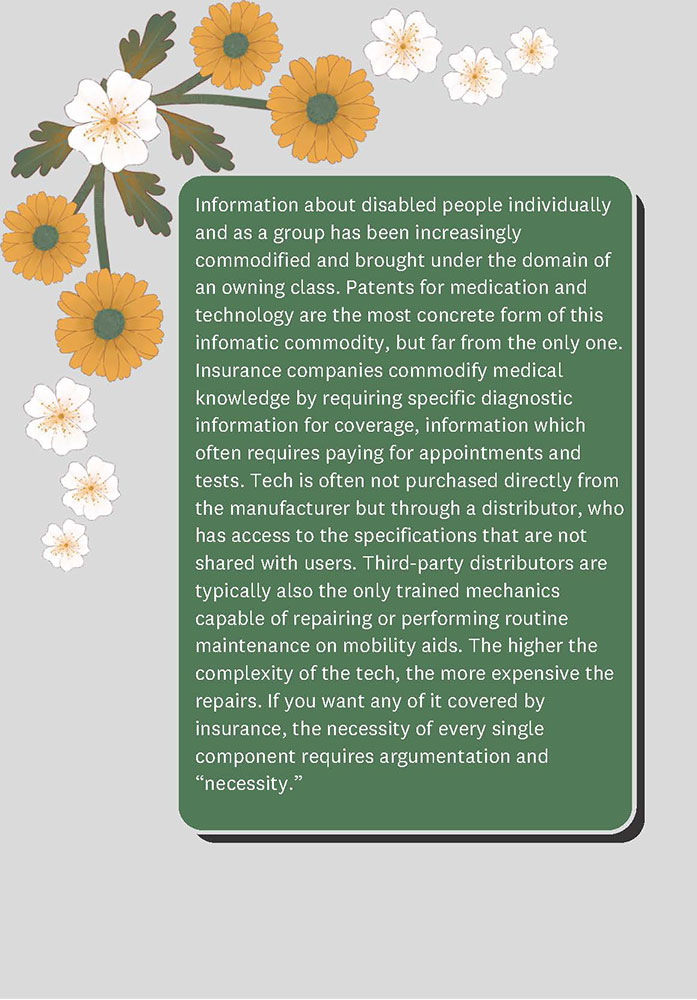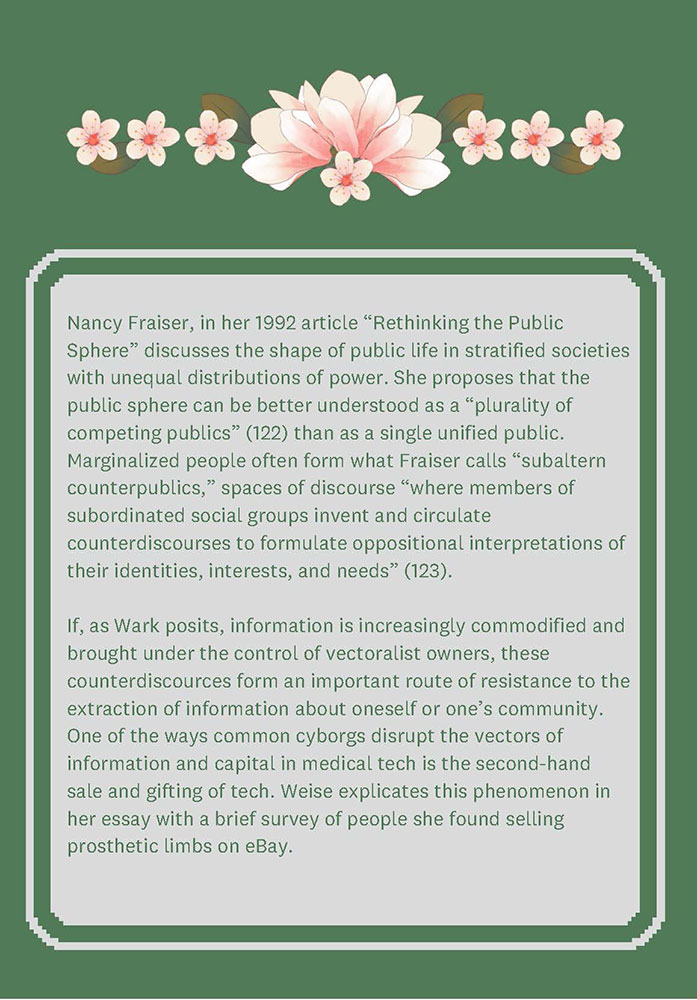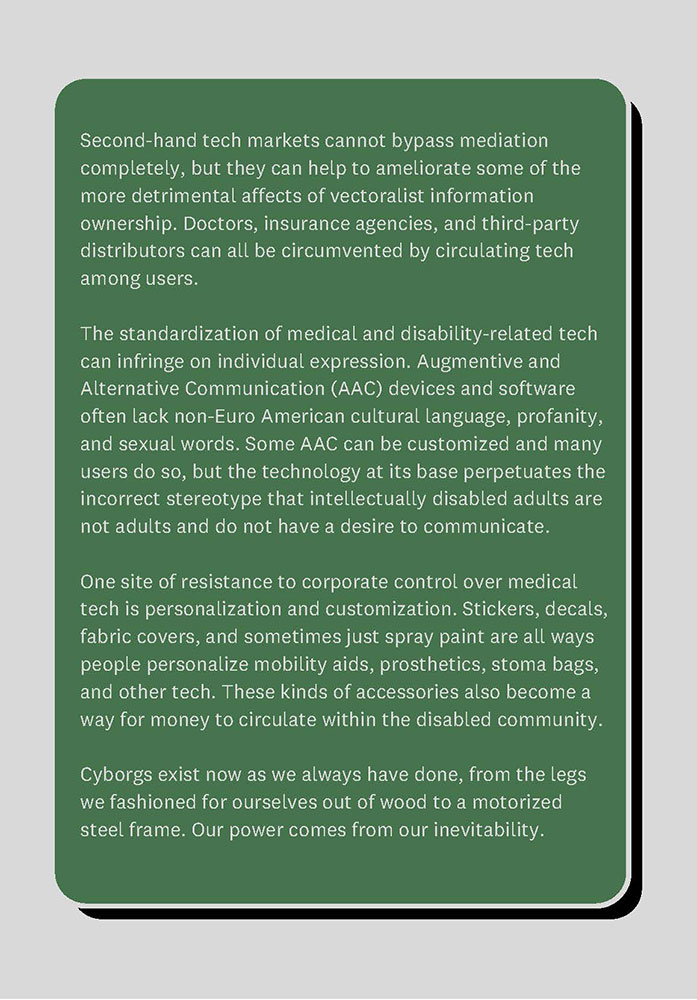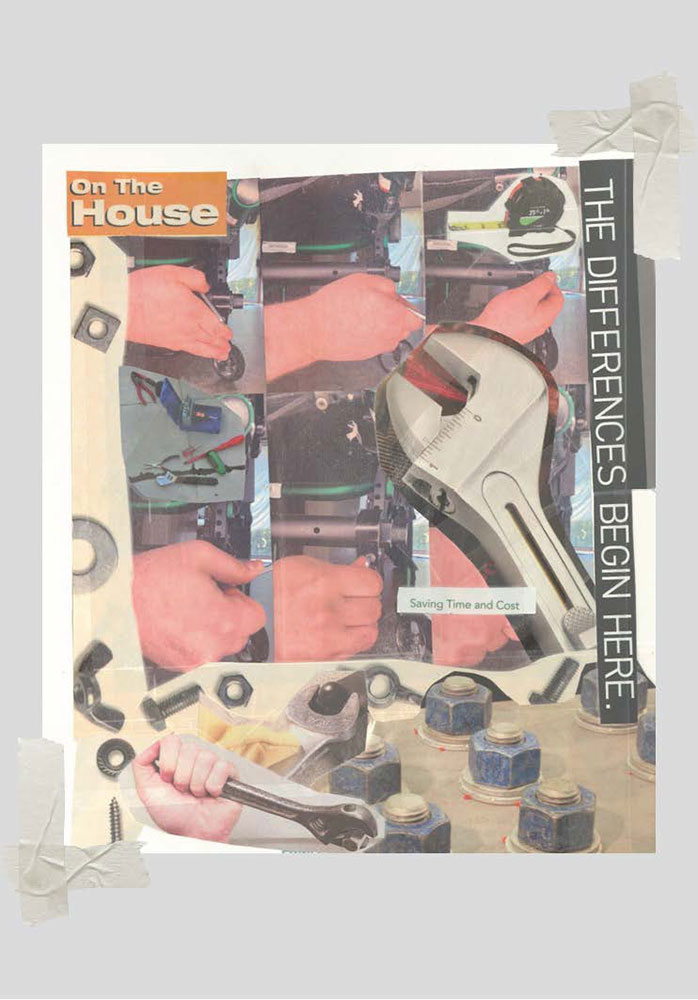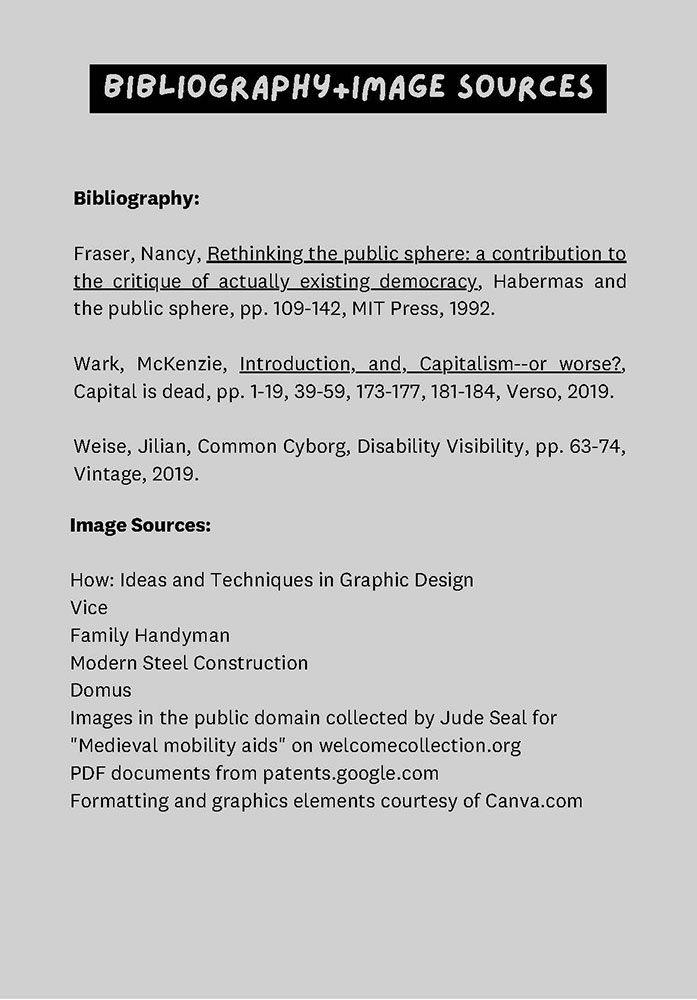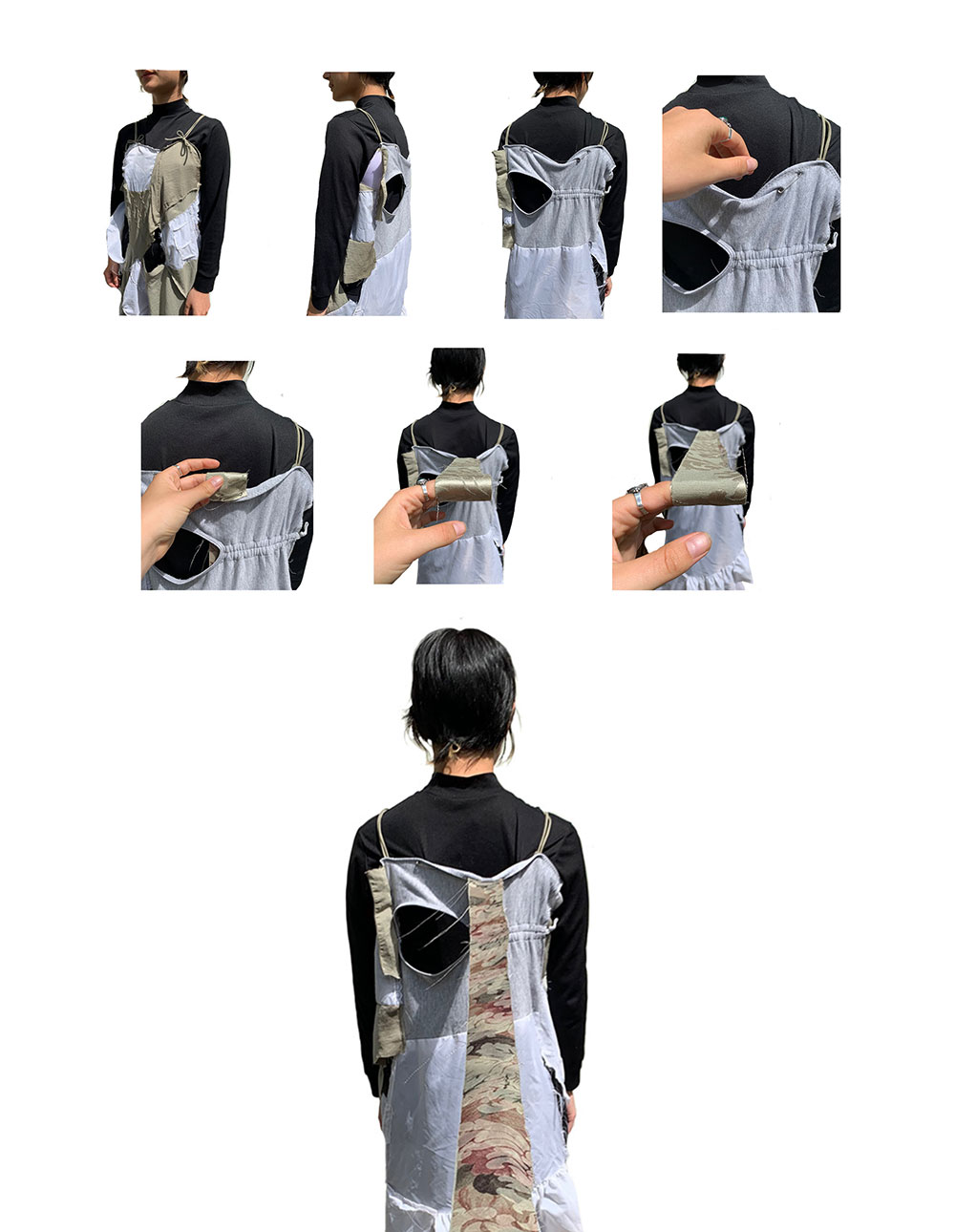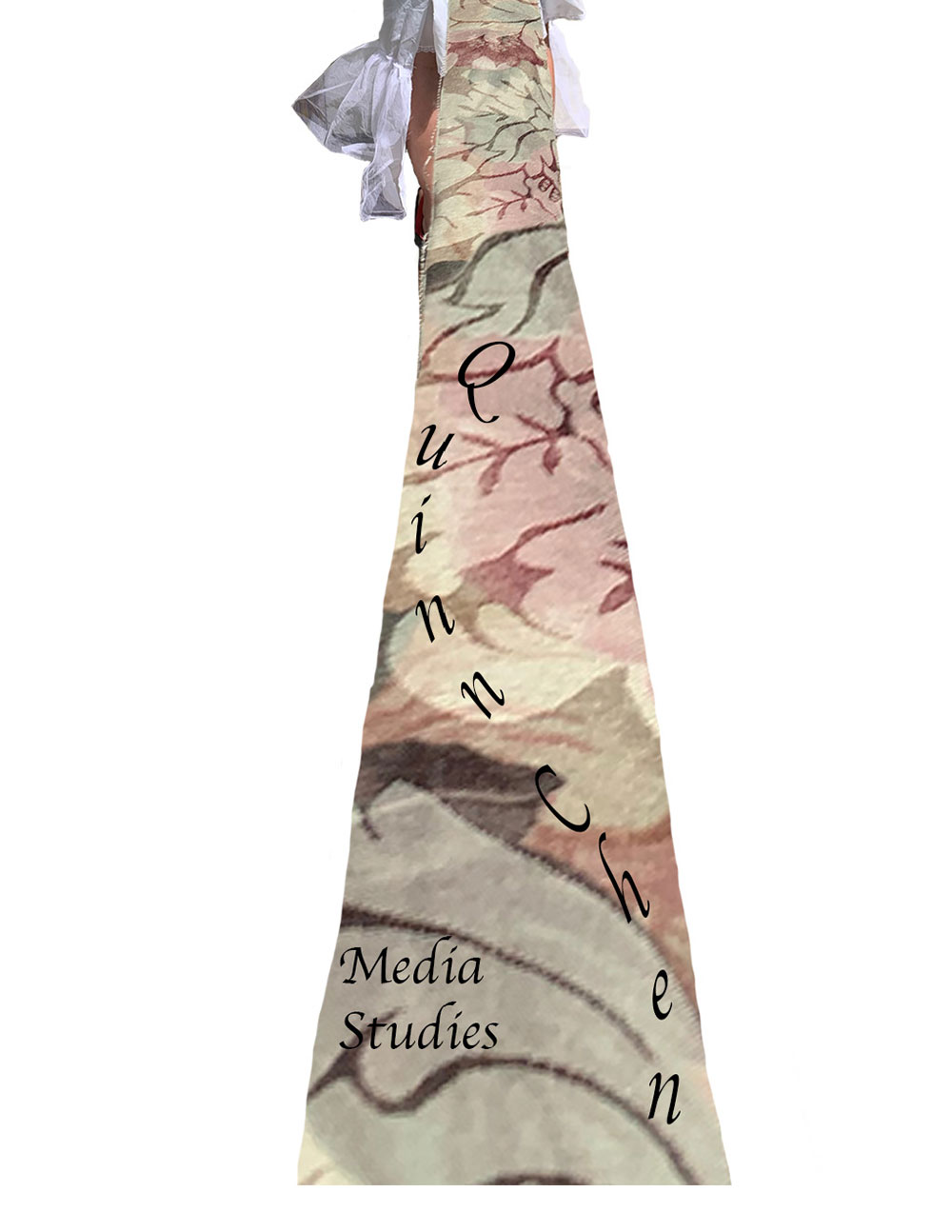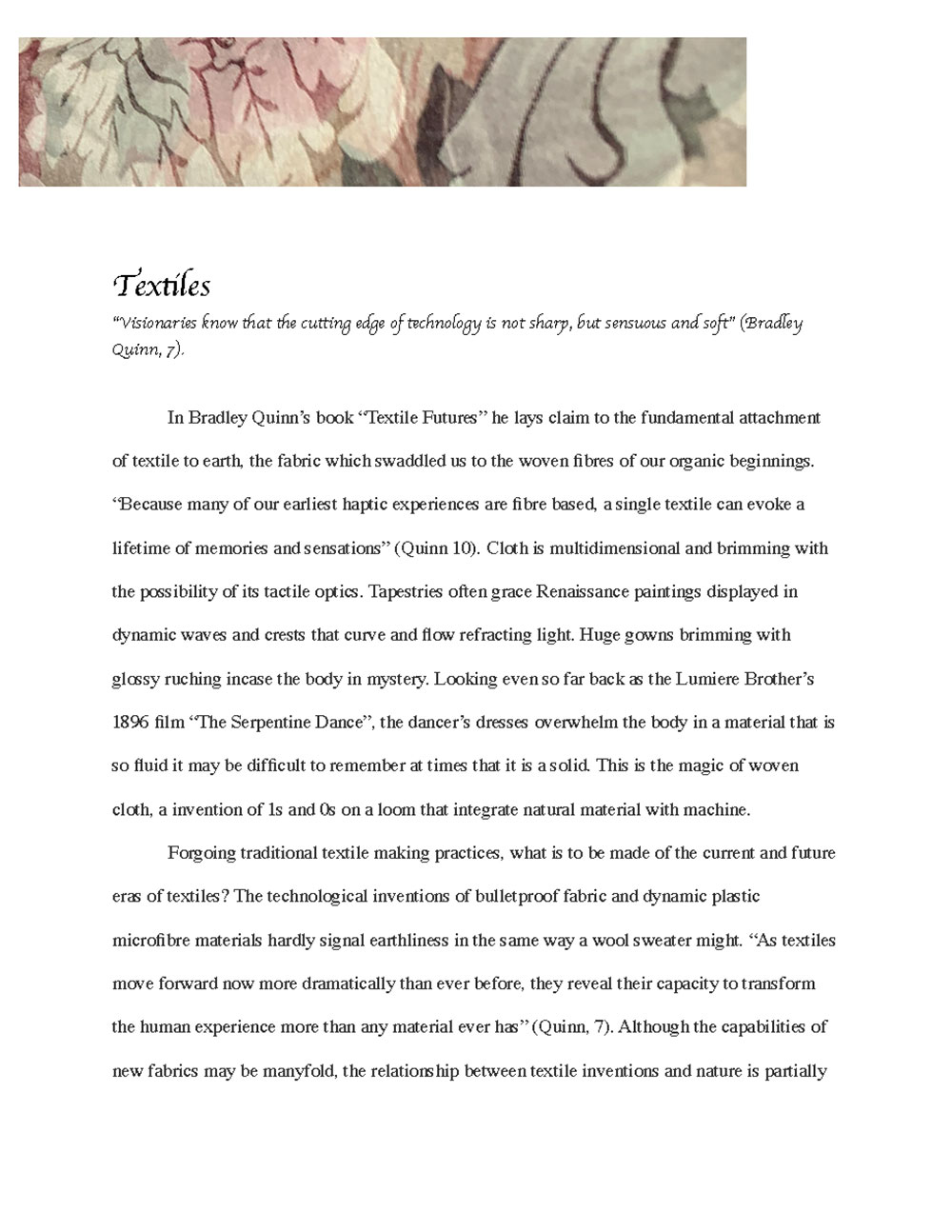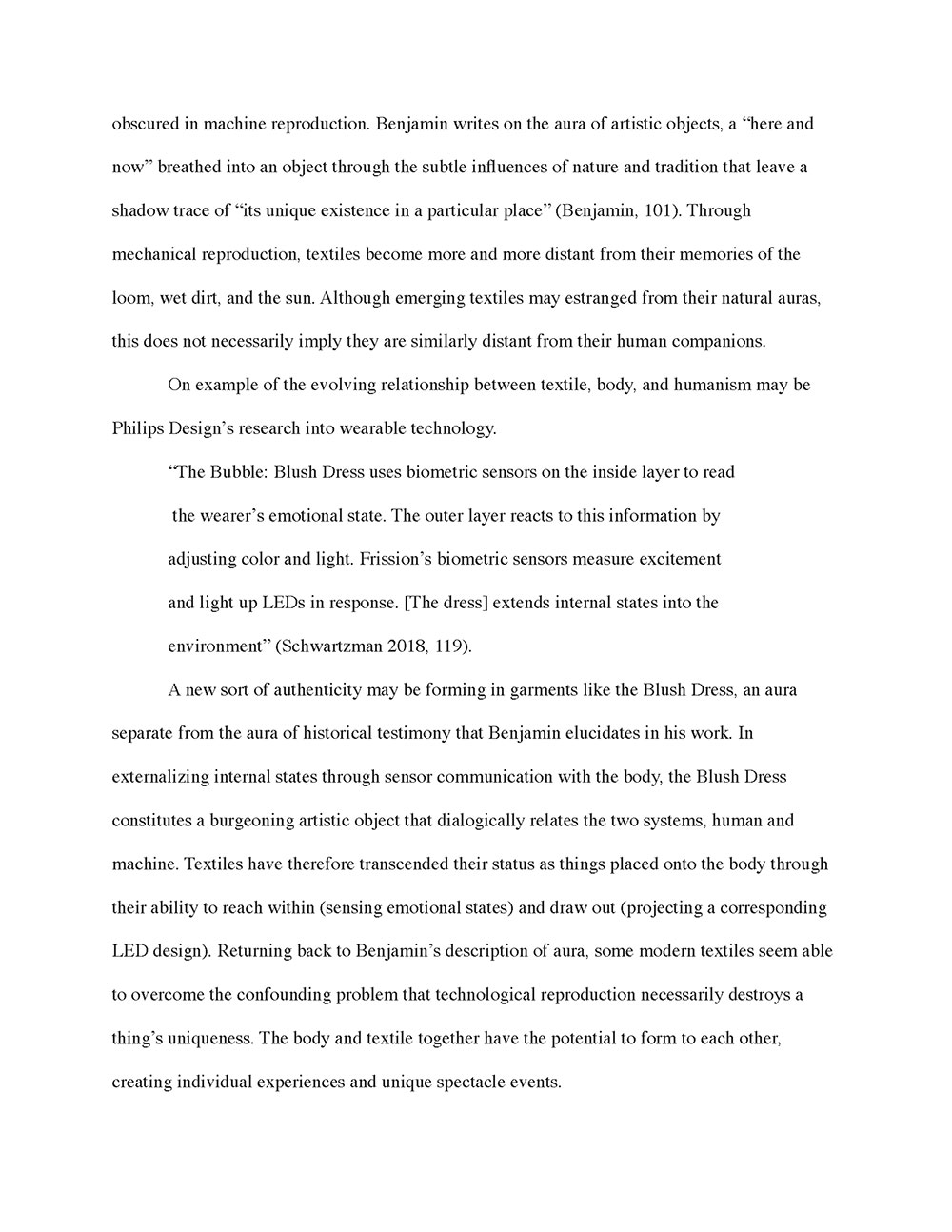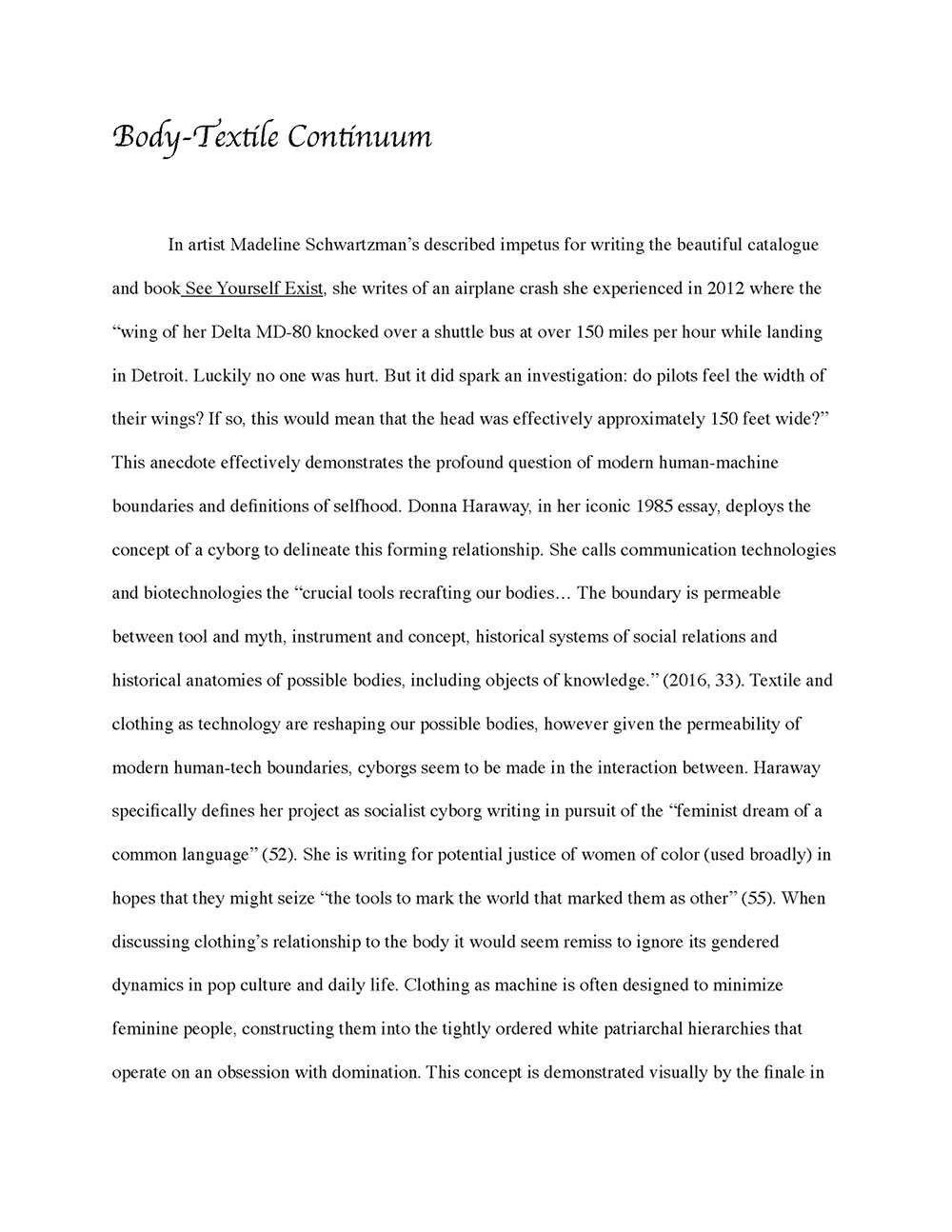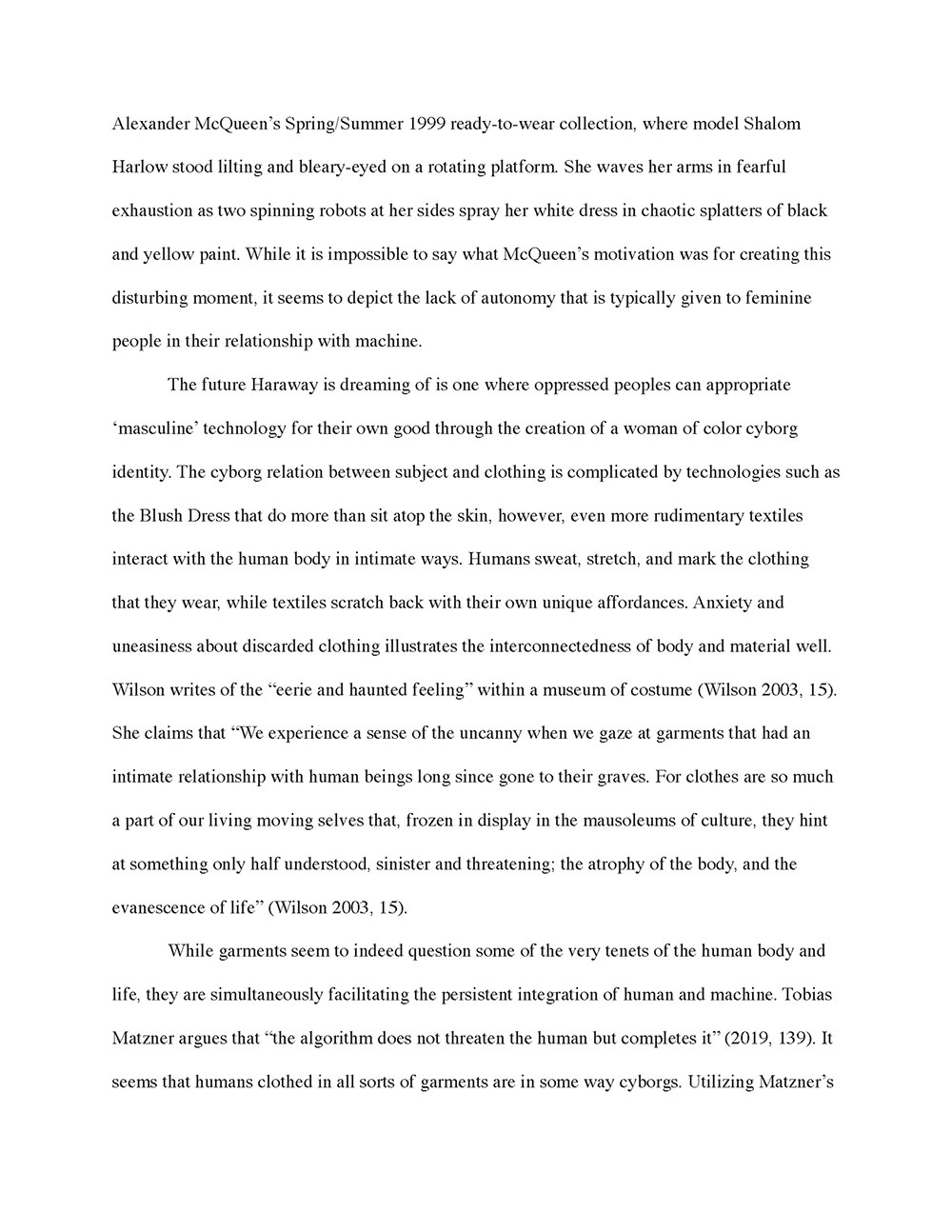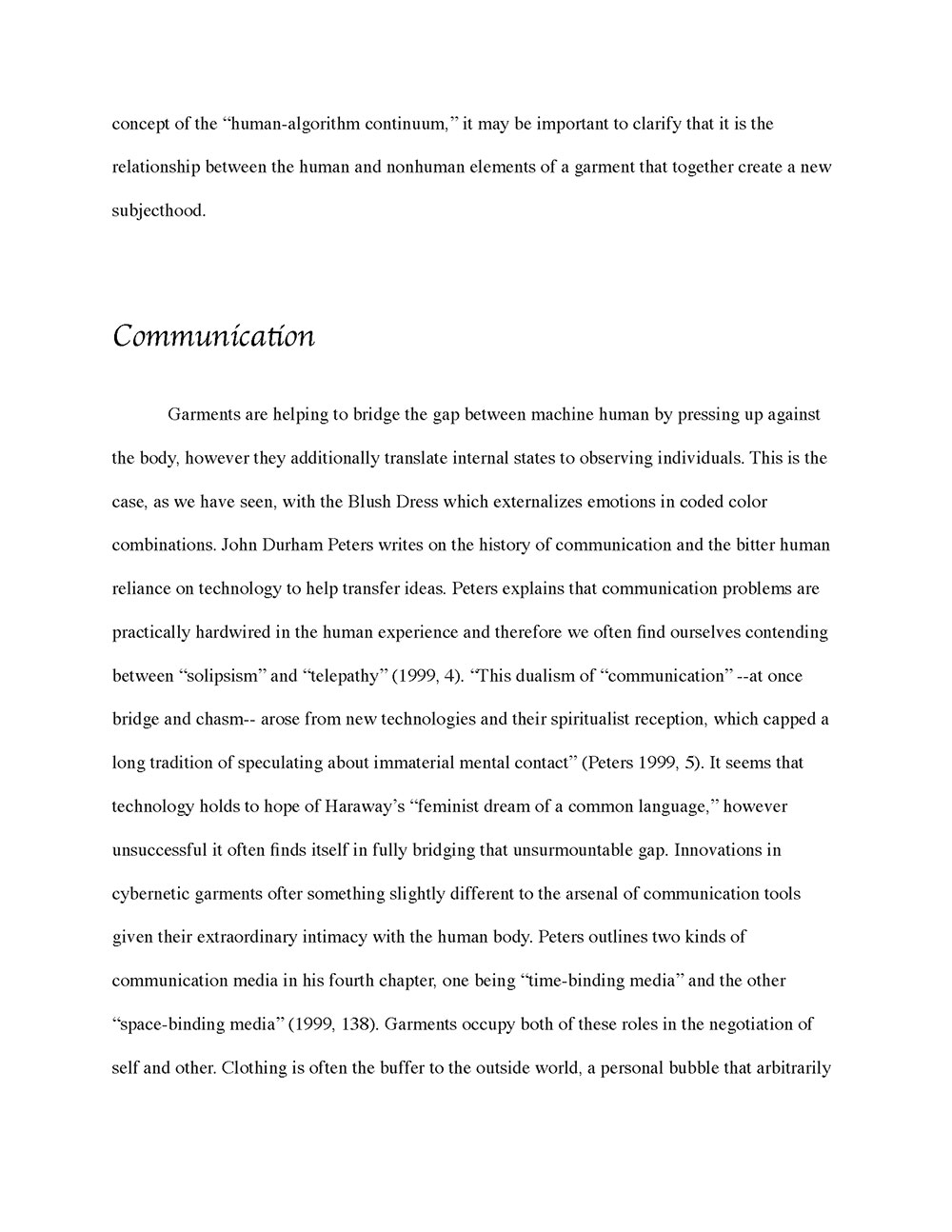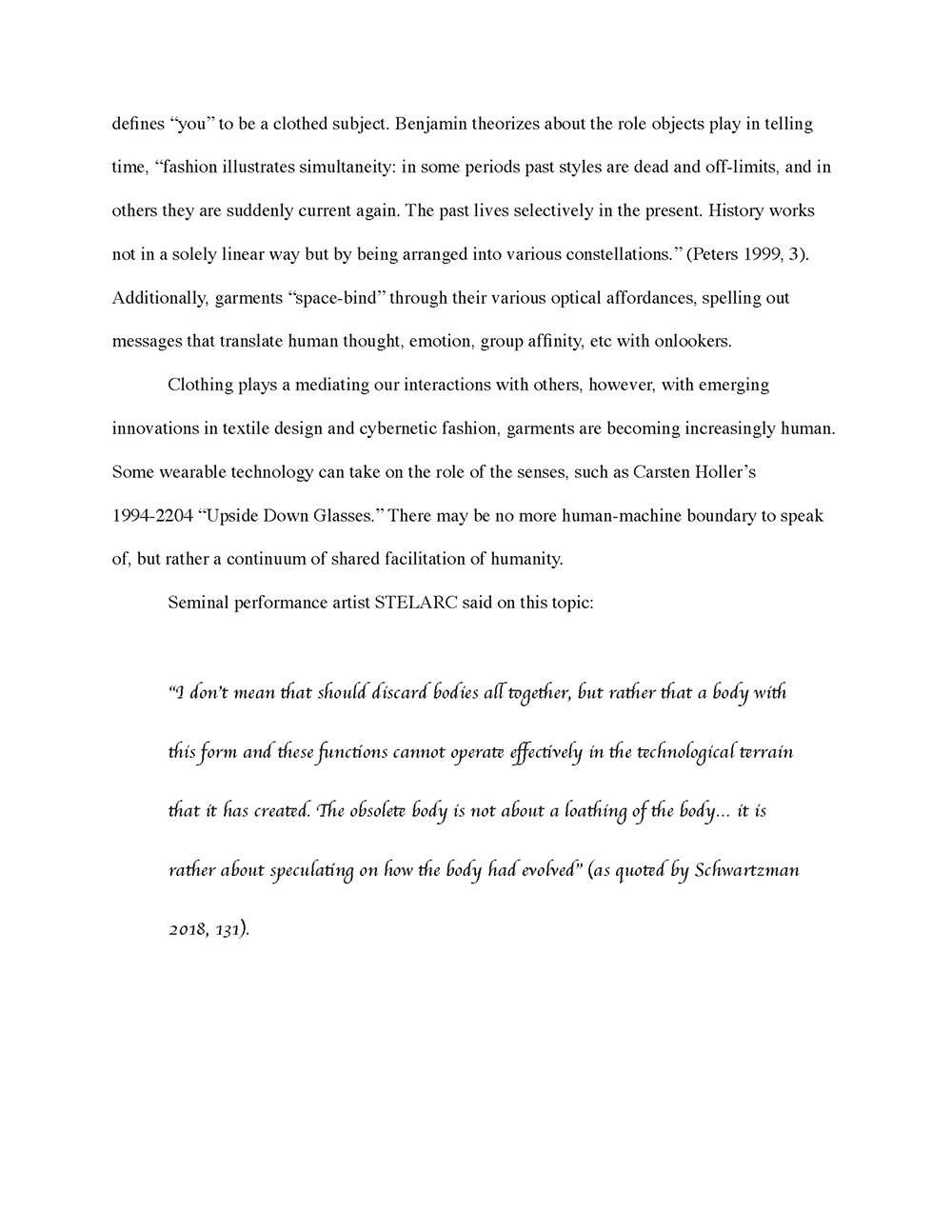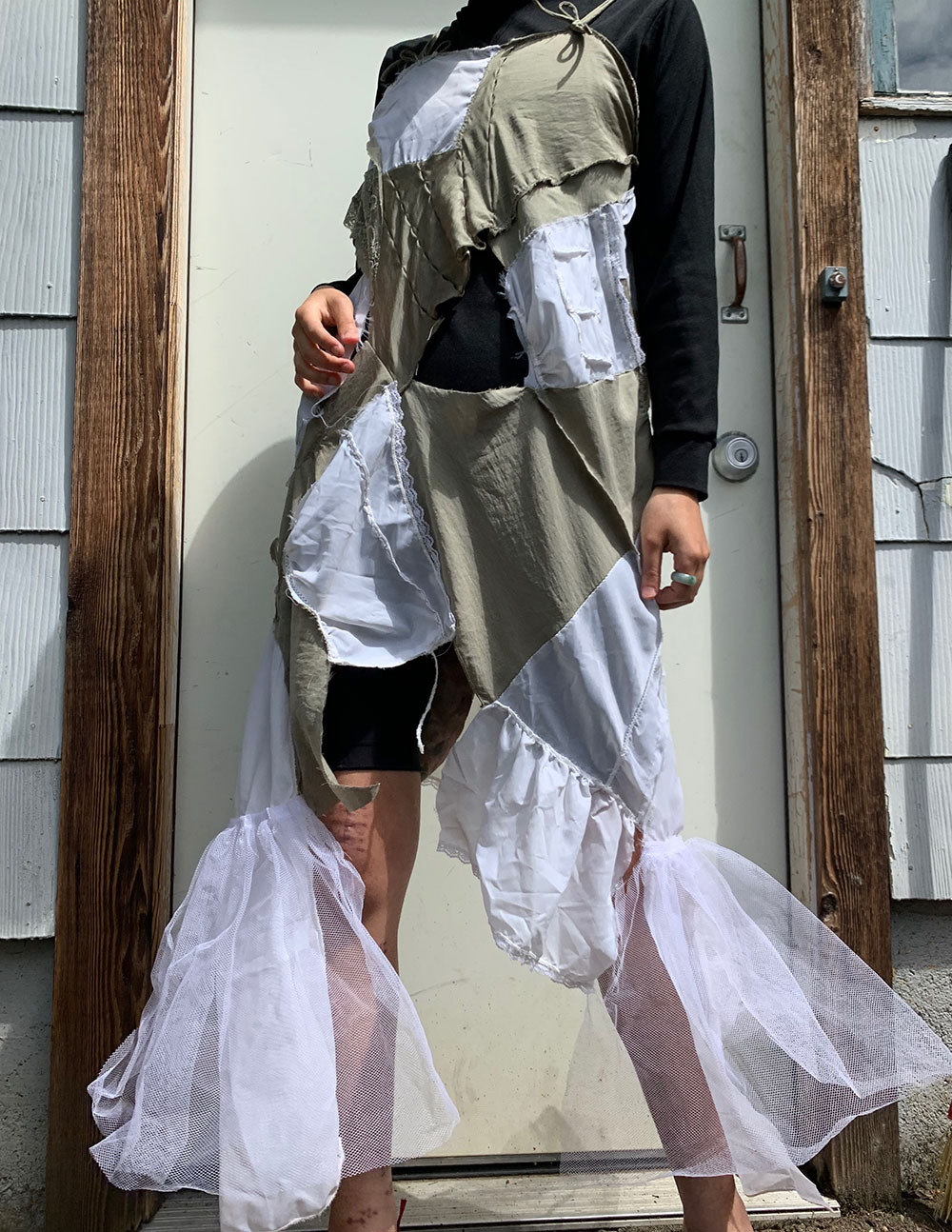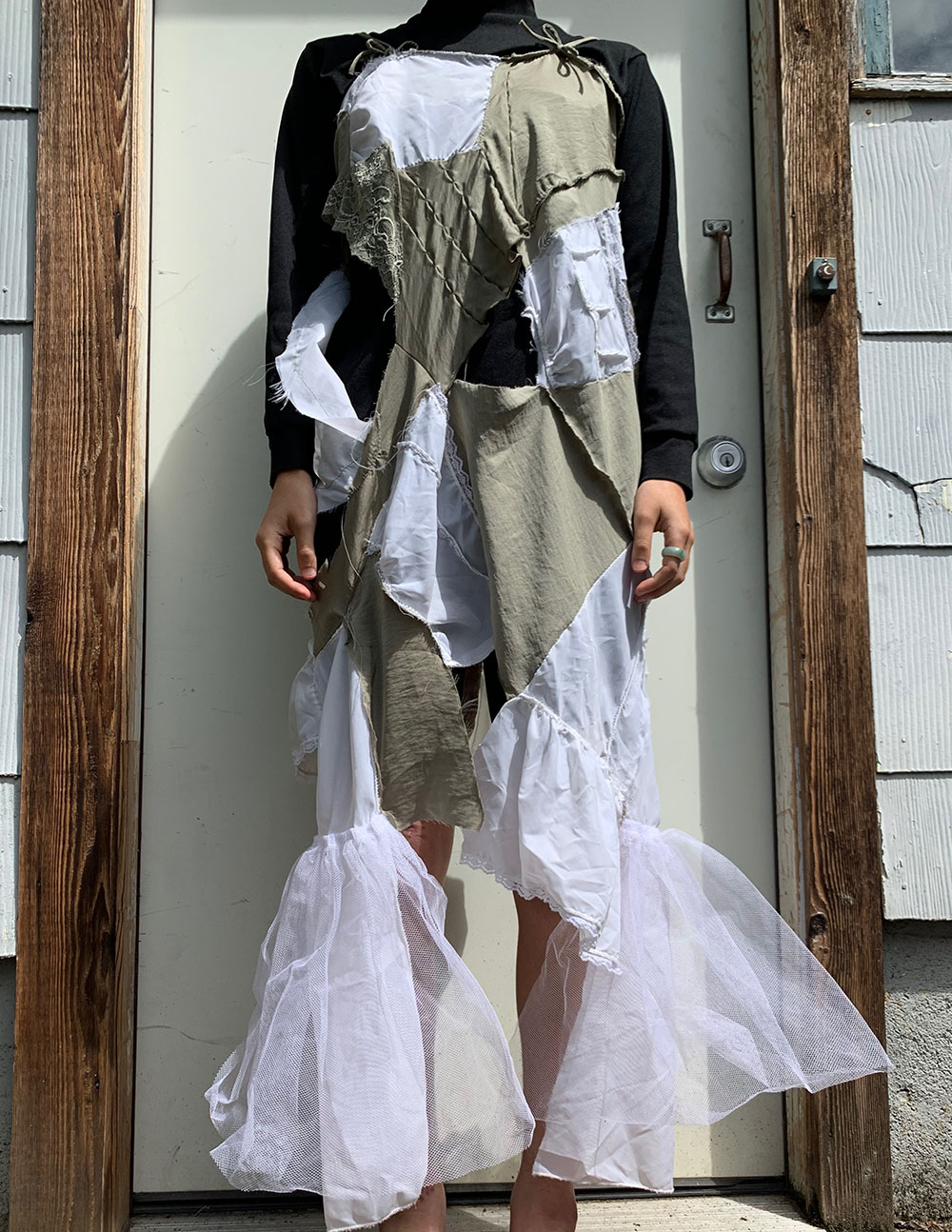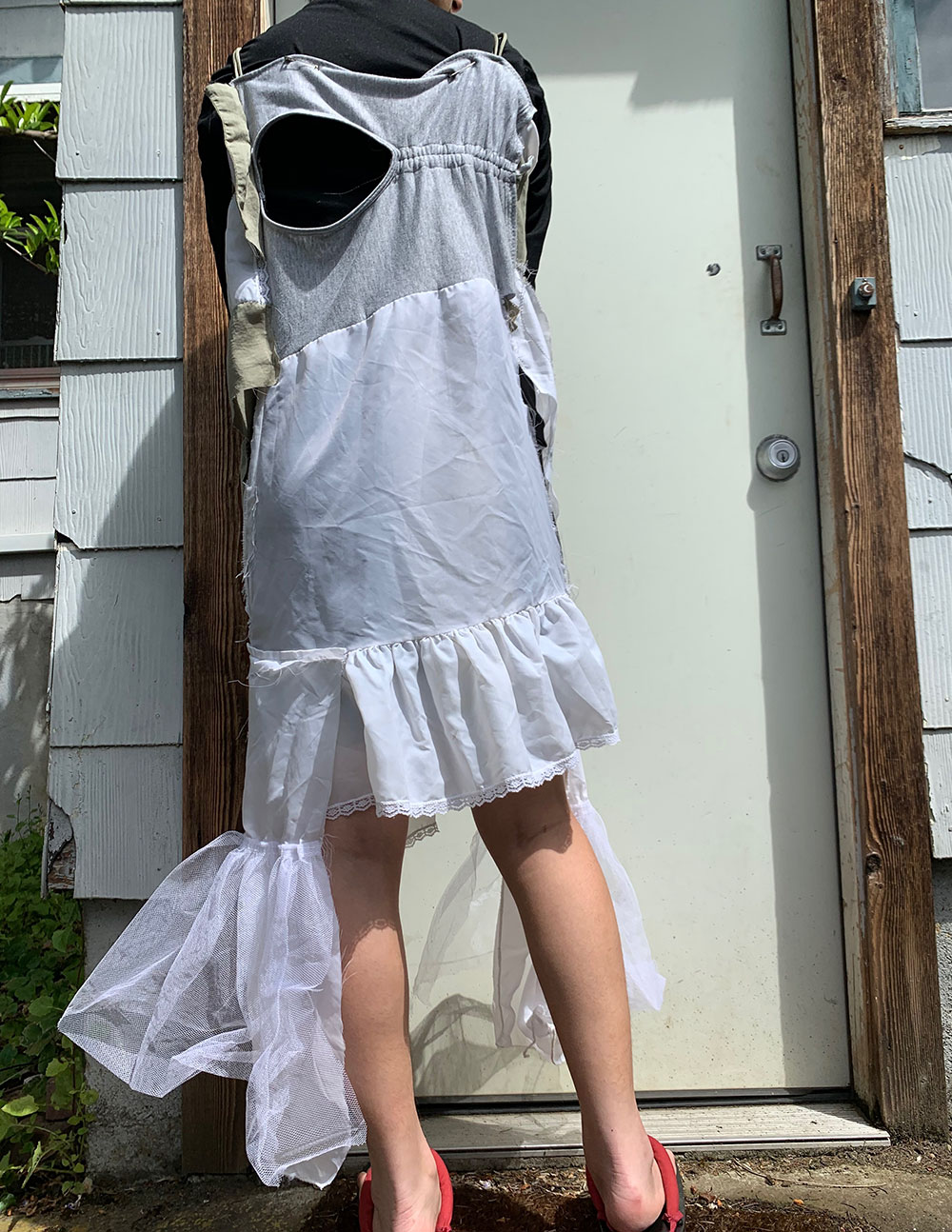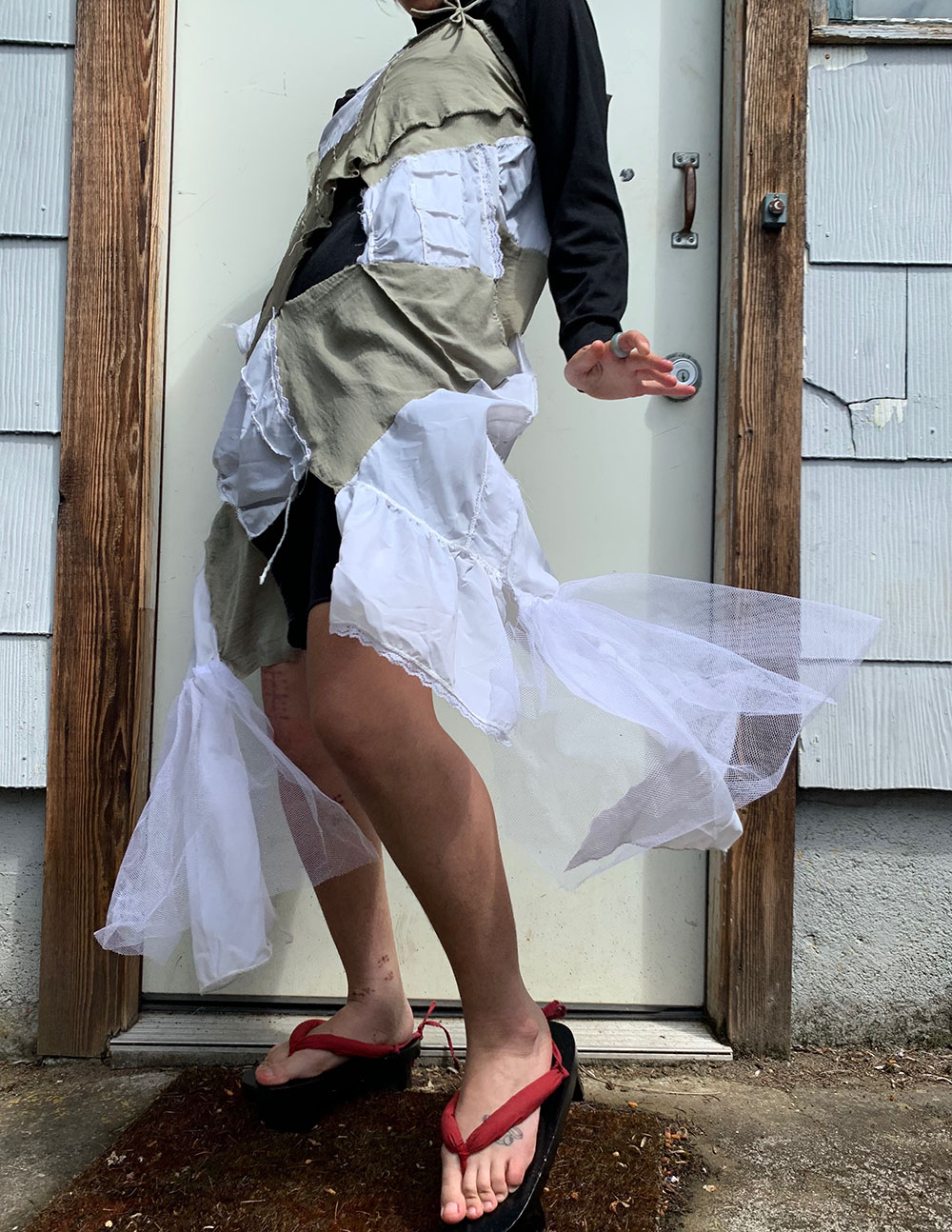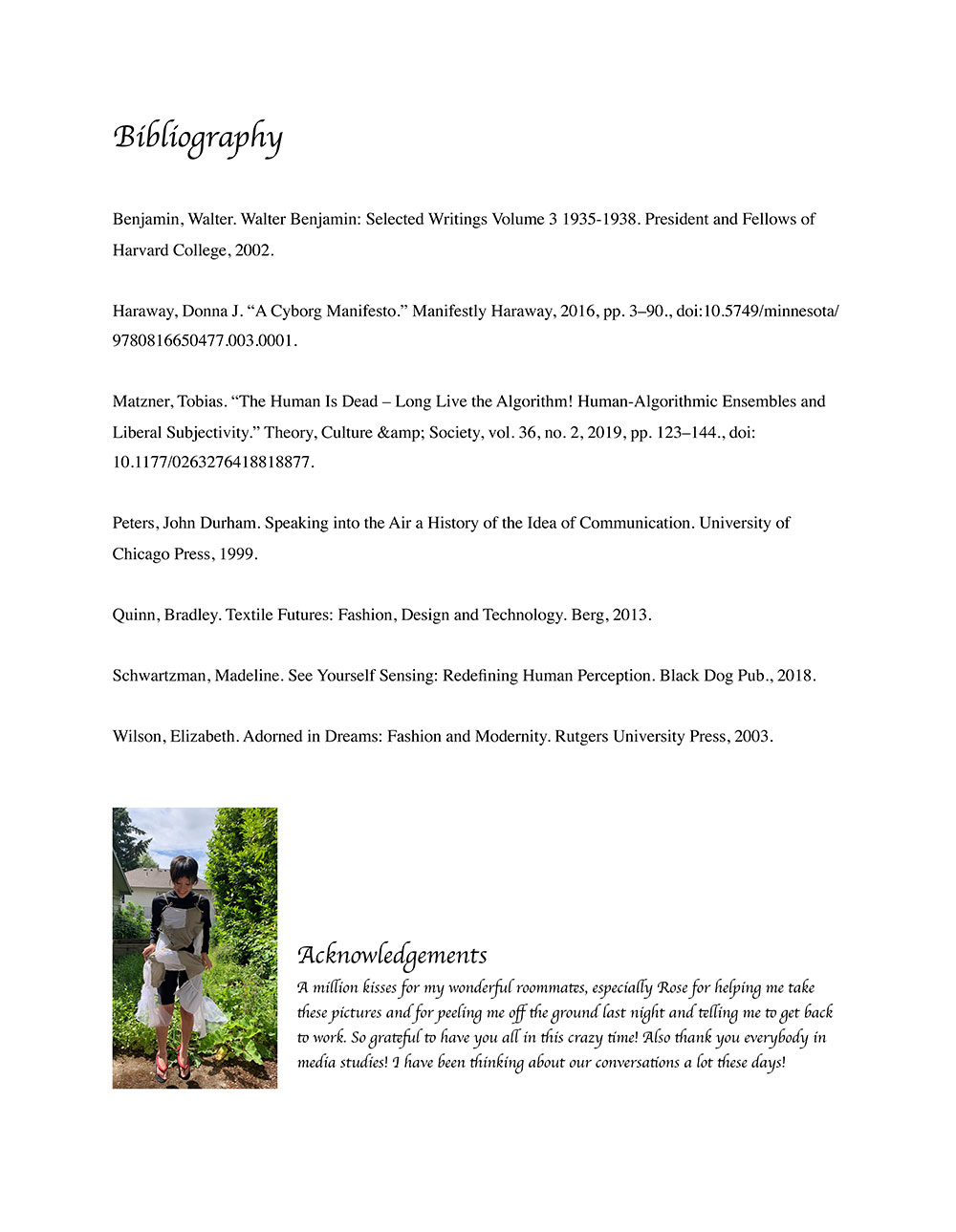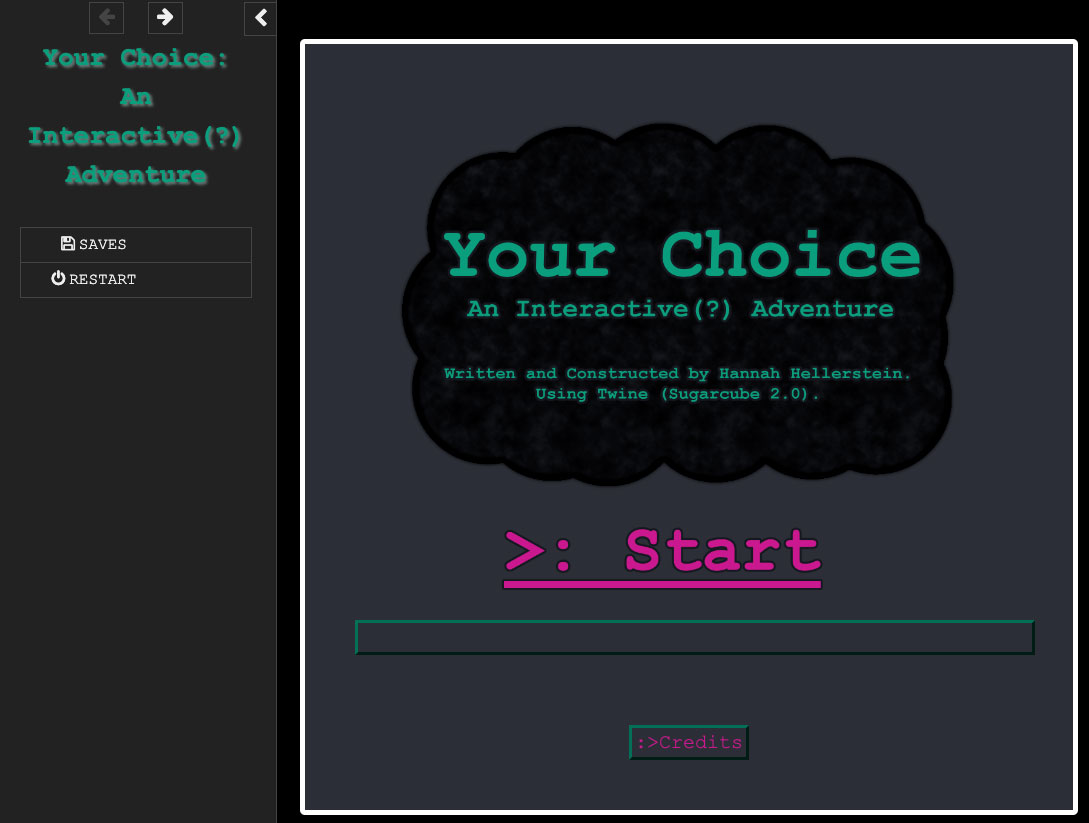Mediating Persons and Publics
Final Projects from Anth 397 Media, Persons, Publics
The meteoric rise of new forms of digital data and social media in the past 20 years has generated, on the one hand, fantasies of utopic intimacy (the immediacy promised in a new "global village"), and on the other, moral panics about unprecedented estrangement (the hyper-mediation of virtual worlds and corporate or government "big data"). In anthropology professor Charlene Makley's course Media, Persons, Publics, we challenge this dichotomy of intimacy/immediacy versus estrangement/mediation by taking an anthropological approach to the question of human communication. Drawing on interdisciplinary debates in philosophy, linguistic anthropology, and media studies, we develop tools for understanding all communication as both mediated and material, grounded in embodied practices and technological infrastructures and situated in historical events. This in turn allows us to grasp how circulations of media forms and commodities participate in the creation of types of persons and publics across multiple scales of time and space. In a semester-long multimedia final project, proposed, planned and workshopped with creative consultants Tony Moreno, Joe Janiga and Ann Matshushima Chiu, students pivot from media consumers to media-makers, working in a variety of mediums and genres to illuminate or analyze particular persons' and publics' relationships with media. These projects illustrate the wide variety of genres and mediums students have worked in, as well as particularly creative modes of storytelling, rendering and editing. Working within specific standards, students' only stipulation for format was combining 5-7 pages of text with at least one other medium.
2023
Zoe Buhalis - Are We All Cyborgs?
Zine
Jozie Burns – e-artist
Zine
Emilie Kelly – Geese
Video
Essay
Emilie Kelly
Charlene Makley
ANTH 397: Media, Publics, Persons
5/9/2023
Geese can be a uniquely polarizing animal. Other wild animals like squirrels or racoons will try to avoid humans as much as possible, and domesticated animals like cats and dogs will be generally friendly to people, but geese are neither. They’re highly territorial animals whose preferred environment overlaps with human-centric spaces: golf courses, public parks, and the Reed college campus. Due to this, goose encounters are plentiful and can be difficult to maneuver out of… no one wants to get stuck between a goose and a hard place. Still, geese aren’t trying to be malicious towards humans. There just exists a common miscommunication between geese and people that can result in these kinds of goose-scuffles: geese want to be geese, people want to be people, and geese and people have different priorities. In some cases, people see geese as nothing but an inconvenience that needs to be dealt with. Other people will reach out to the geese and try to gain their trust like one would with a domesticated animal. The geese, on the other hand, seem to remain ambivalent to human efforts and are much more interested in their goose problems. While the mind of a goose may always be somewhat of a mystery to humans, the presence of geese and the attention they garner makes the existence of human-goose interactions integral to both the construct of human-centered spaces and the idea of what makes wild animals ‘wild’. GEESE wants to investigate the tension between geese and people and the impact that they have on each other, using Reed campus as a microcosm of the larger question of interspecies communication.
GEESE is a short film about the geese at Reed, using 20 interviews conducted with Reedies in the spring of 2023 as the basis for investigation. The interviews focus on establishing a baseline of goose opinion (“how do you feel about the geese on campus?”) then delve deeper into why the individual feels the way they do, whether other people’s opinions affect their own, how their opinion has changed through interacting with the geese, and finally whether they consider the geese to be a part of the Reed community. The interviews serve to both to collect data on how people think about geese, but also to measure how aware people are about the impact geese have on their lives. At Reed, not only did I have no issue goading people into talking about geese, they also had noticeably thought-provoking observations to share about geese. On average, Reedies demonstrated a love for open discussion and nuanced approach that could also broadly be used to categorize the personality of the school. “Determining the range of creatures we will communicate with is a political question, perhaps the political question” (Peters, 230), and Reedies pay attention to the geese. Geese are part of the circulation of discourse that, if we were to follow Habermas’ definition, constitute the public of Reed. Although the initial responses to geese could be split into two camps - pro-goose and anti-goose - the degree in which Reedies were interested in dissecting the nature of those answers felt both true to the spirit of Reed and respectful of the geese. To leave a discussion of geese at ‘pro’ or ‘anti’ goose is to only take into account a reactionary, human-centric viewpoint of geese. To truly understand how geese impact Reed, a more multifaceted, more cyborgian approach is warranted.
“What would the campus look like without geese?” Many Reedies responded by saying that it would feel emptier, have less personality, be less like Reed. These responses are indicative of a degree of awareness that Reedies have of how their identity as Reedies and the aura of the campus itself is, to some degree, dependent on the presence of geese - regardless of whether or
not geese and Reedies understand one another, Reedies and geese depend on one another in order to understand themselves as Reedies and geese. Donna Haraway’s model of cyborg politics, therefore, is a helpful model for this discussion. “Cyborg politics is the struggle for language and the struggle against perfect communication, against the one code that translates all meaning perfectly” (Haraway, 176). For Haraway, every individual can be seen as a cyborg, because every individual is also mutually constituted by their relationship with their environment, the tools and animals that surround them. For cyborgs, perfect communication is not necessary for understanding the world around you, because ‘perfect communication’ relies on the assumption that all knowledge must be directly translatable from one distinct individual party to another, instead of knowledge being based on gradually gaining experience from mutualistic relationships with one's environment. Perfect communication comes up once again in John Durham Peters’ writing as an idea he takes issue with, a sort of idealized, mystical form of communication where the absolute core of an idea has the ability to transfer from one party to another without losing any of its meaning or significance, “a meeting of the minds that would leave no remainder” (Peters, 16). For Haraway, perfect communication is a farce because the notion of a true individual is flawed. For Peters, perfect communication is unrealistic because the kind of pure telepathy it would require doesn’t take into account the barriers between minds, makes no distinction between one thought and another, and that is a version of existence so alien it’s not worth pursuing. In my mind, nothing interrupts the fantasy of perfect communication like a goose.
When you talk to the geese, the geese do not talk back. The geese will not move if they are on a path, because your feeble attempts to get them to move are not compelling for a goose. Even the joy that those who see the geese as entertainment derive from the presence of geese is
mainly due to the incomprehensibility of geese: “what are you doing there?”, “I like that they don’t talk back”, “I like when one of them honks at the other”. One cannot presume what a goose is thinking, and any attempts to do so just end in frustration. Geese cannot be approached as pets, because to do so is to anthropomorphize them to a degree where the human perspective (geese as cute birds) supersedes the animal’s (geese don’t care about being pets). Geese cannot be approached as pests, because once again the human perspective (geese are annoying) assumes too much about the nature of geese (geese don’t understand that they are annoying to humans). Geese don’t care about maintaining perfectly manicured lawns. Geese don’t care if they wake you up by honking. Geese don’t care that they’re blocking the road and you need to get to your appointment. They will not take up less space, and they will not be made to care. Geese just care about being geese, and try as one might, a person will never be a goose. All that geese leave us with is a constant reminder of this insurmountable abyss of communication between us and them, even as we share the same environment. What does it take then to communicate with a creature that, genuinely, has so little concern with how it is received? Why do they still capture the attention of Reedies, when we have no clue what they’re saying? What do we do when we hit the limits of rationalization?
In the process of fulfilling this project, I spent hours thinking about the geese, talking about the geese, and observing the geese. In the process, I didn’t feel necessarily closer to the geese, but I did grow to respect them, and I began to feel a certain kind of calmness from spending time around them. I realized that paying attention to geese doesn’t always mean paying attention to the geese: paying attention to geese can be about not paying attention to everything else. The priorities of modern life can sometimes feel artificially heightened, overwhelming, or disingenuine - we can become estranged from our work by objectifying it, thus objectifying
ourselves and our relationships with others and our environment. The advent of ‘wellness’ or ‘authenticity’ economies present one approach to the modern condition by selling back a person’s ‘true self’ or ‘peace-of-mind’ as a series of products targeting the idea of self-care. At my most cynical, I see the corporate wellness trends as a band-aid for a bullet-wound. The consumable self-care product aims to placate, but in return the product creates an additional layer of mediation between the individual and the outside world, creating a reliability on mediation-as-meditation that only feeds into more product to sell. The promise of meditation (not mediation), however, is one of experienced immediacy. A guided meditation will tell you to clear your mind of any other thoughts… but what is more effective in clearing your mind than an encounter with a goose?
I don’t see geese-as-a-state-of-mind replacing bath bombs any time soon, nor do I think that would be a good idea. The role that nature plays between people and the world isn’t one that an object can replace - in fact, that’s the whole point. It's exactly the lack of ability to communicate as one would with another human being that makes nature and animals so centering. There is a practical limit to the extent one can logic themselves out of situations without spiraling or burning out. Interactions between human and non-human entities often require putting away the distinctions of language and relying instead on instinct, and instinct requires full-body participation. It is like tuning an instrument: it must be done slowly, taking into consideration both the player, the instrument, and the area, listening for the harmonies to emerge. In a way, honing one’s instincts are the inverse of the labor-incentivized alienation Marx described. Interacting with geese connects us with geese, with the environment, and with ourselves.
Being on Reed campus, one is bound to see a goose. The campus wouldn’t be the same without them, either the cackling geese or the Canadian geese, the same way it wouldn’t be the same without the Portland rain or the noise from the weekly Balls. While the geese can sometimes feel like a burden when seen only as the ways in which they inconvenience people, those inconveniences, those miscommunications, are also a reminder of all the ways the world is full of unique and interesting things that will never fail to surprise you. On a campus filled with people so dedicated to exploring the world, coming together to give the geese the space they deserve is a pleasure and a point of pride.
Works Cited
Peters, John Durham, Introduction: the problem of communication, Speaking into the air: a history of the idea of communication, pp. 1-31, University of Chicago Press, 2000
Peters, John Durham, Machines, animals, and aliens: horizons of incommunicability, Speaking into the air: a history of the idea of communication, pp. 227-261, University of Chicago Press, 2000
Habermas, Jurgen, Introduction: preliminary demarcation of a type of bourgeois public sphere, The structural transformation of the public sphere, pp. 1-26, 251-256, MIT Press, 1989
Haraway, Donna J., A cyborg manifesto: science, technology, and socialist-feminism in the late twentieth century, Simians, cyborgs, and women: the reinvention of nature, pp. 149-181, 243-248, Routledge, London and New York, 1999
Marx, Karl, Estranged labor, Economic and philosophic manuscripts of 1844, pp. 69-84, Prometheus Books, 1988
Thor Madsen: Between Two Worlds
Video
Essay
Between Two Worlds:
Cosplayers as Mediums of Personhood and Social Connection
Thor Madsen
ANT 397: Media, Persons, and Publics
Prof. Char Makley
May 9, 2023
To better understand the medial experience and how cosplayers are perceived, this paper provides context to its associated video made up of interviews and photographic montages to observe how cosplayers act as mediums of social connection and self-discovery. The photos and interviews on the video montage associated with this article tell the story of why and how they cosplay, the challenges cosplayers encounter along the way, and how they navigate those challenges while still maintaining the immediacy cosplay has given them. Through video interviews, audio and visual captures of the environment where cosplayers perform, and text narration, we can get a sense of the experience through cosplayers' feelings about what they do.
When asked what they do, the cosplayers we very happy to discuss the amount of time and effort they put into becoming the character they will be performing—through costume, accessories (many of which are fantastically impractical “lethal” weapons), mannerisms and makeup (especially makeup). However, when asked about how they feel about what they do, each cosplayer invariably began with some variation of, “It’s fun!” Then, as they shared how it was fun, they began to share—as if then becoming cognizant of it—the importance of their role in mediating one world into another through their character. People they came into contact with were often drawn into the cosplayer’s performance. It is a shared sense of immediacy where the cosplayer’s presence expands from play to being engaged in their own development of ideas. Cosplay, at its essence, is about our personhood—what Donna Haraway would call the “serious play” of Cyborgs. (Haraway 1991, 149) Humans, beyond their selves, are extensions of and into their environment, becoming something else through it. In this case, that something else becomes embodied in a character that cosplayer sees something of themselves in—at least for the weekend.
Much of this story of immediation takes place where most cosplayers gather and first come out—a science fiction fantasy conference in Portland, OR. My approach, centered on feeling as an entryway, is partially framed by the “rough schematic” of Boyer’s triad of poetic, medial, and formal (Boyer 2007, 26), where cosplayers act as mediums of personhood and community through their co-option of corporate-owned paths of creation and modern-legal establishment of fantasy characters. The cosplayer embodies Agha’s concept of “mediatization” by imbuing a commodity product with an immediacy that forms a community. (Agha 2011, 171)
As I have proceeded on this path, most cosplayers have been willing to share with me, in a sometimes-profound way, why they do what they do and what happens to them and those around them when they perform it. Kate Bornstein would see these character performances as a kaleidoscope of fluidity, especially in her description of Disney-Pixar’s WALL•E and EVE. (Bornstein and Bornstein 2013, 81). From a more structured perspective, Diana Taylor would likely see cosplaying as a mixture of accepted “performative ” rituals (2016, 73) based on how cosplaying is done and “performance” (Taylor 2016, 13) when cosplayers take the stage to act out their characters in front of an intentional audience, place, and time. It is not surprising that underlying the impeccably stylized hair, makeup, costume, and affected mannerisms of a chosen fantasy character, cosplayers have more to say about connecting with themselves and others through their performance than they do about the character itself (although happy to go into detail).
Haraway might view cosplayers as a cyborg performance. Through their costume, mannerisms, and conveying the spirit of their character, they become a type of cyborg performing as mediums—"a hybrid of machine and organism, a creature of social reality as well as a creature of fiction.” (1991, 149) This could not be a more apt description of the cosplayer, meshing self with machine, whether corporeal or ethereal—in a display of extended self. (Many describe this extension as “me” but a cooler version. It is as if Haraway had just returned from a Comic-Con when writing this.
In agreement with Bornstein, Haraway might appreciate cosplay’s subversion of roles. Yet, she would likely also be alarmed at the corporate entanglement within many of these characters and how that can lead to a reinforcement of dominant norms. Yet again, I still think Haraway would appreciate the ironic potential of this model of performance that co-opts media characters directly in front of the studios sponsoring the event.
To address these challenges of cosplayer mediatization, the video gives examples of corporate ownership of these mediatized forms and the dilemmas cosplayers face amid a capitalist-dominated media universe where even their character is copywritten. In this way, cosplayers are Agha’s specific, mediatized connection between “commodity and communication” as they create immediacy among those who engage them in the performance. There is a brief clip of this in action where a cosplayer streams their character’s appearance and even movement at the “con,” surrounded by other cosplayers, through TikTok. This five-second image of multimodality (with unseen algorithmic hypermediation of targeted advertising and more streaming to follow her livestream) encapsulates the “homework” economy where “factory, home, and market are integrated.” (Haraway 1991, 166) Per Haraway, “cyborgs are the ether, quintessence” of this integration. (1991, 153) This ethereal quality of the cyborg and the example of the streaming cosplayer complicate Boellstorff’s interpretation of the cyborg “boundary figure” as incapable of attaching actual (physical) to virtual. (Boellstorff 2015, 138) Through this cosplayer (and as shared by interviewees), we can observe evidence of the mediatized actual extending, cyborgian, into the virtual and looping back into the actual as followers mimic and then seek out a corporate media venue—anime, manga, etc.—where they can consume the character in a more direct, monetized channel.
As Meyer found, this mediatization is critical for immediacy to the point where social connection and communities—like counterpublics—emerge, and all are intertwined. In fact, immediacy “depends on authorized mediation practices” (Meyer 2011, 27), and cosplayers mediate social connections and act as a collective authority on those practices. However, there is no central cosplaying authority—rather, cosplayers have historically and now, through social media platforms, dedicated their efforts to affecting mediation practices across a range of commitments to embodying or consuming the embodiment of the character. The video portrays examples of this intertwining through the care each cosplayer takes in, the exactitude with which they know their character, and a mutual understanding among them on performative behavior—especially in taking their character’s “stance.” (Madsen 2023, sc. 9:06) It follows that, as mediums, they are “hyper-apparent” (Meyer 2011, 34) in this process.
Two of the cosplayers, “Leah” and “Angela,” while interviewed in the comparative quiet of a Zoom call, give a reflective sense of being made hyper-apparent in the cosplaying universe. Both share insight into how they navigate and, for the former cosplayer, navigate the challenges, especially the mediatization, and homework, of cosplay. How did they maintain the immediacy (as cosplayers put it, the fun) created through their fantastical characters? I have found, (Ben Read et al. 2022), capitalized media platforms can be more effectively subverted, rather than resisted, for purposes other than intended based on a social presence in the physical space of cosplaying. Meanwhile, we can anticipate artificially intelligent, algorithmic social mediators will inevitably determine a pathway toward assuring mediatization of this other, more actual world-centered human connection and creation of immediacy. LaTour would see this process as demonstrating the greater “actant” network for accomplishing any network of activity. As fellow actants, humans as cosplayers in the actual world—as seen by the streaming cosplayer—will increasingly intertwine with algorithms in forming social connections and personhood.
For this reason, throughout the interviews, the focus has been on how cosplayers feel about why they do what they do. This route of inquiry helps weave out the personification of media properties outside the hold of media corporations. As one cosplayer said, “Instead of buying the action figure, you are the action figure.” Their experience invariably allows the cosplayer to explore in the moment of the interview the pathway between “it’s fun” to “I become the character,” and the people around them are drawn. Meanwhile, cosplayers, often living in a counterpublic, find their own “normal” in a unique place to define and grow their personhood.
The associated film will provide insight to scholars assessing the implications of commercialization, through media, on social connection and self. The cosplayers and creators portrayed share profoundly personal experiences in playing a central role as mediums of personhood and social connection. Cosplayer’s simultaneous co-option of and co-option by corporate media properties especially provides a robust framework for inquiry into the complicating factors of commercially hypermediated spaces. Here, cosplayers play a clear role in the “mediatization of mediation” while embodying the literal “mediatized figure of personhood” as described by Agha. (Agha 2011, 173)
More broadly, this is a story of the human arc of personhood for those who are drawn in by the exacting and fluid performances delivered by representatives of counterpublics. Cosplayers, beyond fans, precariously perform a central role of fandom itself. Their adeptness at “humour and serious play” (Haraway 1991, 149) makes cosplayers powerful cyborgs capable of forcing corporations, through the irony of the profit motive, to simultaneously rely on cosplayer adoration while the management of them as a unique brand remains elusive.
Ideally, and most importantly, the film is a story meant for the cosplayer and other performers outside the mainstream who are invited to participate in its creation and telling as an ongoing multimodal observation of the human at the center of the cyborg.
Bibliography
Agha, Asif. 2011. “Large and Small Scale Forms of Personhood.” Language & Communication 31 (3): 171–80. https://doi.org/10.1016/j.langcom.2011.02.006.
Ben Read, David Isaak, Emma Holland, Josh Grgas, Emi Karydes, Soroa Lear, and Thor Madsen. 2022. “Let’s Be Disinterested Together: Social Media, Personhood, and Control.” Confluence XXVIII (1). https://www.confluence-aglsp.org/xxviii1_read.
Boellstorff, Tom. 2015. Coming of Age in Second Life: An Anthropologist Explores the Virtually Human. First new edition paperback. Princeton, New Jersey: Princeton University Press.
Bornstein, Kate, and Kate Bornstein. 2013. My New Gender Workbook : A Step-by-Step Guide to Achieving World Peace through Gender Anarchy and Sex Positivity. 2nd ed. New York: Routledge. https://doi.org/10.4324/9780203109038.
Boyer, Dominic. 2007. Understanding Media: A Popular Philosophy. Paradigm 30. Chicago, Ill: Prickly Paradigm Press.
Haraway, Donna Jeanne. 1991. Simians, Cyborgs, and Women: The Reinvention of Nature. New York: Routledge.
Madsen, Thor, dir. 2023. Between Two Worlds: Cosplayers as Mediums of Personhood and Social Connection. Video, 4K, 60fps. Documentary.
Meyer, Birgit. 2011. “Mediation and Immediacy: Sensational Forms, Semiotic Ideologies and the Question of the Medium.” Social Anthropology 19 (1): 23–39. https://doi.org/10.1111/j.1469-8676.2010.00137.x.
Taylor, Diana. 2016. Performance. Durham: Duke University Press.
Appendix: Interview Questions
What and How did you cosplay?
What theme(s) do (did) you cosplay in?
With whom did you cosplay?
Where?
How long did you cosplay?
Did you make your own costume, purchase, etc.?
Why did you cosplay?
Who was your favorite character and why?
Please describe your experience as you put on your costume…(and when you are fully in your costume and cosplaying).
How do you feel in each instance?
Effect of Cosplaying
How has cosplay affected you up to this day if at all)? Is there anything that it has taught you?
In what ways, if any, do you feel “as a cosplayer,” outside of actual cosplaying, today?
Oscar Pulliam – Censorship
Zine
Essay
The Paradox of Censorship: The Value and Implications of Censorship in Photography Oscar Pulliam – 9th May 2023
Table of Contents
Introduction
Contextualizing Images
Definiton of Spaces and Publics
Methodology Of Censorship
Conclusion
Introduction
Why is there information deemed by some metric too sensitive, offensive, or even dangerous for public consumption? This was not a question I expected to need answer as a photographer, however the content of my work forces me to consider it. In a world where images and the information they contain shapes perceptions throughout the public sphere, censorship has rapidly become a compelling subject of anthropological analysis. As the role of photos evolves, the dynamics of their influence become an increasingly vital component to understanding communication within publics. Images are one of the most universally understood forms of communication in society. For that reason, I love photography. However, this accessibility comes with responsibility to both accurately depict the subject of your photo and to consider the potential outcomes of distributing an image.
My aim is to analyze the role of censorship, specifically within the constraint of documentary work. The primary example for dissection will be my own zine, “How to Navigate a ‘Racial Crisis’: -Not Like This.” The zine is intended to record the perspectives and viewpoints of the Reed College student body regarding the events following Paul Currie’s racist, xenophobic statements. Therefore, a key issue in ensuring this goal is achieved is to ensure that no extraneous influences contaminate the student body’s message. My goal in this paper is thus to explain the process and decisions which led me to the final version of the zine, and to explore the multitude of relationships, perspectives, and ideas inherently included in modern media, especially those involving photography and images.
Contextualizing Images
The essay "The Work of Art in the Age of Technological Reproducibility” by Walter Benjamin is significant in that it is one of the earlier commentaries on photography and its role as an art form. The piece argues that photography fundamentally changes our understanding of art and the role of the artist (Benjamin 102, 103). Prior to the advent of photography, art was primarily valued for its aura–its unique presence in time and space. However, photography's ability to reproduce images on a mass scale disrupts this aura, leading to the universalization and commodification of art in capitalist society (Benjamin 104). This new form of documenting the world, Benjamin suggests, has important implications in the context of politics and activism due to the fact that it can challenge dominant narratives and power structures. Additionally, Benjamin claims that photography has the potential to be oppressive, depending on how it is used (Benjamin 104, 105). He notes that photography can be used to create propaganda and reinforce oppressive power structures, but it can also be used to document and resist those structures. In the context of the zine, these concepts highlight the ways in which photography sets itself apart from other ways in which the protest is documented (in The Quest, for example). It forces me to consider the power an image holds in comparison to other representations of the message.
In order to better understand how this relationship is shaped, consider Bruno Latour's idea of hybrid collectives is another perspective to consider in this context. According to Latour technologies–such as cameras–are not separate from humans. Rather, they are directly connected to humans through a dynamic relationship (Latour 174, 177, 178). In the context of photography, we can see how the camera is not simply an object, but an active participant in shaping the image that is produced. The camera embodies certain values and assumptions about how the world should be represented, such as the conventions of framing, composition, and lighting. The photographer, in turn, works with the camera to produce a specific image that reflects their own perspective and intentions. It is not a static or fixed medium, as the choices made by the photographer directly impact how messages are conveyed.
Consider, for example, my choice of lenses for this project. The outdoor photos were made using a Rokkor-X 200mm 2.8, a super-telephoto lens from the 1980’s. The individual characteristics of this lens are numerous, however the most significant is its focal length of 200mm. The lens is incredibly tight, designed to capture moments from a distance, and the photos it makes reflect a sense of specificity which cannot be achieved with a 24mm or 50mm lens (the lenses I used for indoor shots in the zine). Applying Latour’s logic, it is important for me as a photographer to understand the impact my seemingly simple choices may impact the viewers understanding of the message, and for my project as a whole to consider how the perspective shifts as the subjects relocate into new spaces.
Definition of Spaces and Publics
According to Jurgen Habermas, the public sphere is characterized by free, rational debate, where individuals can engage in open discussion and deliberation to reach a consensus on various issues (Habermas 1, 4, 6). Habermas saw this sphere as a vital component of publics, as it allowed for the formation of public opinion and provided a mechanism for citizens to hold governing bodies accountable. From this perspective, public protests play a crucial role in this process of holding governing bodies accountable. Protests are a form of public action that can disrupt the status quo and draw attention to issues that may be overlooked or ignored by those in power. To me, this concept carries important consequences for my photography as, in some ways/cases, it becomes the medium through which this disagreement is communicated. By understanding the role of a documentarian, it allows me to isolate what my intentions are behind a given project. In my opinion, the primary tool photographers have is their choice of framing, which inherently means we choose what to include and just as importantly what not to include. Only by recognizing this responsibility and potential for bias in my work can I achieve what I aim to in my project.
Another definition important for this discussion is Michael Warner’s description of publics as spaces of discourse that are formed by individuals coming together to discuss matters of widespread concern (Warner 1, 2, 3). Publics are shaped by the circulation of discourse, which involves the spreading and reception of messages within a given community. Publics are not homogeneous or fixed but are rather made up of diverse individuals with differing viewpoints and interests. Through the circulation of discourse, publics are able to engage in dialogues and exchange ideas in order to arrive at new understandings.
Counterpublics, on the other hand, are spaces of discourse that are formed by smaller, marginalized groups who are excluded from dominant publics (Latour 76, 77). These counterpublics are often created in response to the exclusion or marginalization of certain voices within larger publics. They allow marginalized groups to develop alternative discourses and challenge dominant narratives. Both publics and counterpublics are crucial for democratic societies, as they allow for the exchange of ideas and the formation of new understandings. However, he notes that publics are not always inclusive or democratic, and that certain groups may be excluded or marginalized within dominant publics. In response, counterpublics can provide alternative spaces for discourse and help to challenge dominant narratives and structures of power.
Again, relating these concepts back to my zine, engaging this issue through photography is essentially a method of creating a counterpublic. Is photography’s role then always to create a counter public? Personally, I would say that it is not. There are certainly projects in which creating a counterpublic is pointless or counterproductive, however this all depends on the photographer’s intention. While the intention of my zine is to accurately convey the message of the students, it is also intended to serve as a record of their effort and opinions. This conflict between oppressive forces and empowerment is key to the balance of information in each image, and one of the most significant components regarding this balance is censorship. Methodology Of Censorship
According to Simone Browne's "Dark Matters: On the Surveillance of Blackness," sousveillance refers to the act of individuals, typically those who are under surveillance, engaging in practices of surveillance themselves (Browne 12, 13, 14). It is through this perspective that I understand my role as a photographer, especially in the context of this project. While photography can certainly be used for surveillance, sousveillance is a way for marginalized individuals and communities to reclaim their agency and resist the surveillance practices that are imposed on them by those in power. To me, sousveillance is the act which I believe has the greatest positive impact. However, Browne emphasizes that sousveillance is not a perfect solution, as marginalized communities still lack access to the resources and power structures that enable effective surveillance. However, it remains a crucial tool for resistance and empowerment, allowing individuals and communities to challenge and disrupt the dominant narratives and power structures that seek to control and police them. To me this highlights the limitations of photography and reminds me that it is only a single medium through which discourse occurs. Therefore, it is my role as the photographer, in this case, to contribute to the larger counterpublic. This of course complicates the earlier discussion of roles; however, I think this conflict of mediums is critical to understand.
Marshall McLuhan argues that the medium through which a message is conveyed is just as important as the message itself, as it shapes the way we interpret and understand the message (McLuhan 23, 25, 26). In the context of photography and censorship, we can apply McLuhan's ideas to understand how the medium of photography affects the way that censorship operates. Censorship of photographs often involves the suppression of images that are deemed to be objectionable or offensive. However, the typical implementation of the medium of photography means that censorship does not just involve the suppression of specific images, but also the ways in which photographs are taken and shared (think phone vs DSLR, or print vs social media). This question of method was the greatest challenge behind the form of publication for my work, and what ultimately led me to create a zine a year after the original events occurred. I never wanted to submit my photos to a news organization, social media, or any other form of third-party distribution because of the lack of control I would then have. It was important to me for my photos to retain their authenticity while still accurately conveying the message of the protestors (and, most importantly, protecting them from the exposure inherent in posting photographs to Twitter or Instagram). To me, the ability to censor the photos was the only way to make their publication a moral decision. This, of course, raises more issues.
Tom Boellstorff discusses the "principle of false authenticity" in the digital world, which refers to the way in which digital media often presents itself as "authentic" or "real" even as it is heavily mediated and constructed (Boellstorff 41, 42, 43). This idea can be applied to how censorship in photography is viewed by the consumer, and what it implies about power dynamics in spheres of discourse. When images are censored, whether by governments or by private groups/people, the "principle of false authenticity" can come into play. Censored images may be seen as less authentic or truthful because they have been edited or removed, even though the act of censorship itself is a form of mediation and construction. This can create a power dynamic where those who have the ability to censor images are able to control what is seen as authentic or truthful, while those whose images are censored may be seen as less credible or trustworthy. This creates a situation where authenticity and truth are not objective qualities but are instead shaped by power dynamics and the ways that media is constructed and mediated.
The most useful criticism I received surprised me in that it was not what or what I censored, but instead how I did so. Originally, the images were censored using a black obstruction over the entire face. However, when I showed this to my professor, they asked that I consider the implications of that method and whether or not it truly communicated what I intended to. Consider the following two examples:
The differences in these two methods may seem insignificant, however the moment I tried blurring the faces rather than marking them out the zine felt entirely different. Finally, the viewer can understand where the subject is looking. Although the face is still obscured, it still looks human. This method of censorship is less violent, retaining far more humanity in the image, in my opinion. To use the comparison made to me, it separates this case of censorship than that of the classic, brutalist corporate method of removing identity from a photo. For that reason, I feel that this method of censorship is both the most effective and sensitive method for this particular project.
Conclusion
To conclude my analysis, I have shown the ways in which my study of anthropology has informed my choices in creating this zine in respectful, intentional way. What I hope to have communicated is that the choices made by a photographer, especially in sensitive situations such as this, cannot be made lightly. Every factor related to an image a photographer makes is influenced by the publics/counterpublics it inhabits and/or creates. Specifically, the decision to censor an image, removing information, always felt like a hard thing to do right, however this project has led to me understanding the role of censorship in my work far better. In future projects, I hope to further unpack this relationship. In addition, it is important to emphasize the significance of reflecting on our own positionality and biases in relation to the communities we are studying. Regarding photography as a whole, it is crucial for photographers to continue to engage in critical reflection and dialogue with the communities they photograph to ensure that their work is respectful, ethical, and accountable in the sphere it inhabits.
Works Cited
- Benjamin, Walter. "The work of art in its age of technological reproducibility, Second Version," Selected Writings Volume 3, 1935-1938, Cambridge Harvard
- Marshall McLuhan, 2003 (1964). “The Medium is the Message," Understanding Media: The Extensions of Man. Berkeley, CA: Gingko Press Inc.
- Latour, Bruno. "A Collective of Humans and Nonhumans: Following Daedalus’ Labyrinth." Pandora's Hope: Essays on the reality of science studies. Cambridge: Harvard University Press, 1999.
- Boellstorff, Tom. “Rethinking digital anthropology, Digital anthropology” Bloomsbury, 2012
- Habermas, Jurgen. "Introduction: Preliminary Demarcation of a Type of Bourgeois Public Sphere." In The Structural Transformation of the Public Sphere, 1-26, 251-256. MIT Press, 1989.
- Latour, Bruno. "A Collective of Humans and Nonhumans: Following Daedalus’ Labyrinth." In Pandora's Hope: Essays on the Reality of Science Studies, 174-191. Harvard University Press, 1999.
- Warner. Michael. "Publics and Counterpublics." In Publics and Counterpublics. 65-124. 298-305. Zone Books, 2005.
Anna Romo – Recognizing Realities of Difference
Podcast
Essay
Anna Romo
Professor Charlene Makley
Anth. 397
9 May 2023
Recognizing Realities of Difference: To Mediate or Not?
Growing up around horses, I have been thrown, kicked, and bitten; I have struggled to understand what these animals were attempting to tell me and why they did so in a particular manner. But, at other times, I have also felt thoroughly connected – I have felt the movement of my own body mirrored in that of a nonhuman other, and I have felt completely in sync with this “other” (Argent 2012). In my podcast, Recognizing Realities of Difference: The Human-Horse Divide?, I explore the feelings of harmony and tension that exist between people and horses. Specifically, I examine the ways in which the human-horse relationship balances feelings of mediation and immediacy. While, due to its often liminal nature, mediation can be difficult to define, Dominic Boyer (2007) offers a helpful conceptual framework for thinking about just what it means to be “mediated.” For Boyer (2007, 26-7), the “medial” exists between the “poetic,” or the internal space of creativity, and the “formal,” or the external embodiment of the poetic; thus we may view mediation as the translation between the poetic (e.g., the spirit, the soul, one’s identity) and formal (e.g., the body itself, broader socioeconomic structures). Active feelings – and recognition – of mediation might develop at a moment of disjunction, where one fails, for example, to successfully communicate an idea to another person; in this instance, we become keenly aware of the role that spoken language plays in moderating our relationships with other individuals.
This paper aims to reflect and expand upon my podcast’s discussion of mediated human-horse interactions. Recognizing the assumptions and the acts of translation involved in even seemingly simple moments of communication between human and horse, I ask just what happens when these moments are mediated once more through the process of filming and publishing them online. A quick look at any animal-related photos or videos posted on social media reveals their frequent anthropomorphism; we see, as John Peters (1999) describes, this desire for immediate connection with a nonhuman other. Here, I focus specifically on people and their equine companions – rather than on any other kind of pet or animal companion – because of my own experience with these animals and because of the corporeal stakes I have found to be involved in these relationships. As I describe at the beginning of this essay, when working with such large animals a miscommunication – and a sudden feeling of being mediated – may lead to injury. Thus, I have found that feelings of successful communication, including feelings of harmony and of a lack of mediation, are a source of pride among those who care for horses. I ultimately argue that, in its attempts to feel completely immediate, the horse-human relationship paradoxically depends upon multiple layers of mediation, and it is through the disconnections between human and nonhuman – the spaces where one feels incredibly mediated, and where complete unity between the two is simply unattainable – that this relationship becomes possible in the first place.
To better understand what it means for the human-horse relationship to be mediated, regardless of its online or offline location, I want to first review my podcast and its attempt to highlight the ways in which this relationship has always been, in a sense, indirect. Scholars Jay David Bolter and Richard Grusin (1998) argue that, in our ongoing desire for feelings of immediacy – truly direct experience – and immediate connection, we tend to embrace a state of hypermediacy: we want to “erase [our] media in the very act of multiplying them” (5). Inspired by their discussion of hypermediacy, or this “multiplication” of media forms that draws attention to the medium itself in an effort to create a more immediate experience, in Recognizing Realities of Difference I actively remediate the experience of riding in order to offer listeners insights into immediate sensation of riding.
As anthropologist Laura Kunreuther (2006) claims, the recording of one’s own disembodied voice tends to make “messages appear to be transparent, unmediated, and direct” (328). To make my pre-recorded voice feel ever more unmediated – to make listeners feel as though they are conversing in the same room as me – I make careful use of the word “you”: I refer to listeners as “you” to make it feel as though I am directly speaking to them (03:09, 06:59, 07:50), and in the latter, narrative portion of the podcast I refer to the horse as “you” in contrast to the “I” who speaks, thus asking listeners to assume the imaginative role of the narrator themselves (10:48, 11:20, 12:40). I also include a few “imperfect” recordings, where my voice appears slightly distorted (but not unintelligible), or where I hesitate before speaking, as a means of creating a less manufactured, more “real” listening experience that thus feels unmediated (00:54, 01:50). I further combine this sound of my voice (itself a medium) and the resulting “transparent” story I choose to tell with various audio recordings of music, hoofbeats, and birdsongs. In inundating the listener with these media in this manner, I draw listeners away from the medium of the podcast itself and into the mediated world of riding and – more generally – human-horse interactions.
With listeners able to feel as though they are directly experiencing a human-horse interaction, particularly in the story I tell during the second half of the podcast, I aim to disrupt commonly-held feelings of immediacy among those in the equestrian community. Speaking in response to John Peters’ (1999, 256) call to “[think] of communication as the occasional touch of otherness rather than” as an unmediated “conjunction of consciousness [emphasis added],” my story explores the quiet, and at times subtle, spaces in which feelings of mediation rise to the forefront of the human-horse relationship – where it becomes evident that human and horse will never truly merge into one being capable of synchronous movement, and where it is clear that certain methods of communication (e.g., the reading of body language) actively mediate this relationship. Peters (1999) claims that “driving the dream of communication with [animals] is… the desire of recognition,” for “no creature has yet stood up to say, I recognize you recognizing me” (245). My podcast pushes back against the necessity for recognition and the fantasy of complete communion between horse and human minds: in my aforementioned story, as the narrator grapples with the difficulty of developing a “true” understanding of any being outside of her own consciousness – as she grapples with this lack of immediacy, with these thoughts that mediate her understanding of the horse’s actions – there is no grand climax where human and horse suddenly, completely recognize one another.
In fact, the horse hardly appears to perceive the narrator at all. Through this lack of perception, I highlight the work that goes into creating that feeling of unmediated connection between human and horse. The horse’s aloof behavior is in sharp contrast to the ways in which I, myself, have described my relationships with these animals: for example, I have jokingly commented that a horse who did not seem to want to be brought in from pasture “wasn’t feeling me today” or “did not want to work today.” Even these off-hand comments imply a kind of shared, unmediated recognition – as though I were able to read the horse’s mind and as though the horse were able, and actively wanting, to convey her thoughts directly to me. In the absence of this anthropomorphization of horse behavior, the insurmountable disjunction – and ongoing mediation – between human and horse becomes clear. However, as Peters (1999) argues, this lack of unity – or rather, lack of “anguished communion” (31) – is not necessarily something we should strive to overcome through a fantasy of perfectly clear, immediate communication; rather, we need to embrace this otherness and recognize the joy that may be found merely in experiencing it. Hence, by the end of my story, the narrator simply sits with this otherness, content to exist outside the realm of recognition.
Recognizing that humans and horses, together, are mediated, in the remainder of this paper I aim to explore the unique realm of equine representations online – specifically on the social media platform, Instagram. Given the performative aspects of riding, and the ways in which riders continually strive to create the appearance of unmediated connection between human and horse, the questioning of immediacy – and thus authenticity – that occurs with the publication of human-horse interactions online is not new. Rather, platforms like Instagram offer an additional space both for the performance of immediate, human-horse synchrony and for the questioning of authenticity that accompanies such performed synchrony. In “The Work of Art in the Age of Its Reproducibility,” Walter Benjamin (2002 [1936]) claims that, given the sheer ease with which one can edit, cut, rearrange, and reproduce video, when captured on film the actor is completely alienated from his aura, or “his [unique] presence in the here and now,” and is thus made inauthentic (112). Therefore, according to Benjamin, we might argue that the human-horse relationship loses its authenticity when it is filmed, posted, and reproduced on social media. We see suspicions of the extent to which social media posts authentically represent interactions between people and their equine companions – hinting at an assumption that it is impossible for these interactions to be truly as unmediated and completely cohesive as they appear – in the desire to publish “fails,” or videos wherein horse and human fail to cooperate. For example, under Zoe Luna’s (2022) Instagram video of her young horses bucking while being ridden, one comment thanks Luna for “posting something real,” as “baby horses are far from perfect most rides” (Dittmar 2022). Publication of these moments of miscommunication – where it is clear that human-horse interactions are mediated and imprecise – are meant restore the authenticity of this relationship; capturing and posting moments of disharmony hint at “unedited” video that has not been reproduced and stripped of its aura or uniqueness.
Yet, in my experience, this questioning of authenticity has not developed solely with the rising popularity of social media and mobile recording devices. The ironic dependence upon the periodic visibility of moments of mediation between horse and rider, moments which serve to ameliorate any perceived loss of authenticity, persists in the offline world, in the absence of the camera, as well. When I ride, I am acutely aware of my appearance and my horse’s appearance; I strive to appear fluid and relaxed, but not so relaxed that it seems as though I am not asking my horse to position himself in a certain way: I need to make just enough of this mediated relationship visible as to convince onlookers that I am, in fact, asking my horse to behave in a particular manner. Paradoxically, in making the mediation involved in my riding more apparent, the experience of seeing my ride becomes more “raw” and unmediated; it becomes clear that my riding is “real” riding.
Given Tom Boellstorff’s (2013, 50) claim that the “gap between online and offline is culturally constitutive, not a suspect intellectual artefact to be blurred or erased,” I would argue, in turn, that online representations of horses enact a particular fantasy of immediate connection that spans both online and offline spaces and that depends upon the context provided by each. The online Instagram page becomes “an additional space for personal expression” (Miller 2011, 169, as cited in Boellstorff 2013, 50); it becomes a space to explore both the boundaries of one’s own understanding of the human-horse relationship and one’s fantasies about this relationship.
Thus, while the quest for immediacy – produced at least partially through evident feelings of mediation – persists in both the online and offline space, the ways in which people achieve this immediacy varies depending on their online or offline location. For, in contrast to the offline world, where disruptions between human and horse are commonplace, and where the creation of immediacy involves the very appearance of these disruptions themselves, online we can demand the recognition – the immediate connection – that Peters (1999) claims we so desire from these animals; this creation of immediacy both depends upon the fact that it does not entirely exist in the offline world and upon the ease with which equestrians online may appear as though they have unmediated access to the very “soul” of the horse itself (245). An Instagram post of my own, made in the summer of 2017, illustrates this point nicely: the caption of the post reads, sarcastically, “Try a little harder!” and the photo depicts myself on the back of a horse jumping in good form. In asking this horse to “try harder,” I suggest a kind of dialogic relationship between human and nonhuman; I suggest that the horse hears what I am asking for and is capable of responding in kind. Here, like other equestrians on Instagram, I recognize the gap between human and horse consciousness in my very attempts to eliminate it – my question is an effort to bridge the disconnect. Because of its impossibility offline, online representations of horse-human relationships effectively create a space where horse and human minds merge in unmediated fantasy.
Nevertheless, it is the disconnect between human and nonhuman that makes it possible for humans and horses to establish a relationship in the first place. This relationship – whether online or offline – relies on the dual feelings of mediation and immediacy that come from the insurmountable gap between self and other. And though equestrians may engage with the sheer “otherness” of nonhuman animals on a daily basis, Peters (1999) leaves us with the question of just how a conscious effort to “sit with” this otherness – rather than persistently attempting to create feelings of unmediated connection – might change our very understanding of these engagements.
Works Cited
Argent, Gala. 2012. “Toward a Privileging of the Nonverbal: Communication, Corporeal Synchrony, and Transcendence in Humans and Horses.” In Experiencing Animal Minds: An Anthology of Animal-Human Encounters, edited by Julie A. Smith and Robert W. Mitchell, 111-128. New York: Columbia University Press.
Benjamin, Walter. 2002 (1936). "The work of art in its age of technological reproducibility, Second Version.” In Selected Writings Volume 3, 1935-1938. Cambridge: Harvard University Press.
Bolter, J. David and Richard Grusin. 1998. “Introduction.” In Remediation: Understanding New Media, 1-15. Cambridge: MIT Press.
Boyer, Dominic. 2007. Understanding Media: A Popular Philosophy. Chicago: Prickly Paradigm Press.
Dittmar, Amelia (@amelia.dittmar). "Thank you for posting something real." Instagram, July 2022. Accessed May 2, 2023. https://www.instagram.com/reel/CgA2F8xp4Rn/?igshid=YmMyMTA2M2Y=
Kunreuther, Laura. 2006. "Technologies of the Voice: FM Radio, Telephone, and the Nepali Diaspora in Kathmandu." Cultural Anthropology 21(3): 323−353.
Luna, Zoe (@zlequestrian). "I thought everyone would get a kick out of some of the young horse shenanigans going on the last couple of weeks!" Instagram, July 14, 2022. Accessed May 2, 2023. https://www.instagram.com/reel/CgA2F8xp4Rn/?igshid=YmMyMTA2M2Y=
Peters, John Durham. 1999. “Machines, Animals, Aliens: Horizons of Incommunicability.” In Speaking into the Air: A History of the Idea of Communication, 227-261. Chicago: University of Chicago Press.
Peters, John Durham. 1999. “Introduction: The Problem of Communication.” In Speaking into the Air: A History of the Idea of Communication, 1-31. Chicago: University of Chicago Press.
Romo, Anna (@a.nnie_cr). “Geeze Capone try a little harder.” Instagram, December 27, 2017. Accessed May 2, 2023. Archived post.
Tom Boellstorff. 2013. “Rethinking Digital Anthropology.” In Digital Anthropology, edited by Heather A. Horst and Daniel Miller, 39-60. London: Berg.
Works Cited in the Podcast:
Recognizing Realities of Difference: The Human-Horse Divide?
Scholarly Works Cited
Bolter, J. David and Richard Grusin. 1998. “Introduction” in Remediation: Understanding New Media, 1-15. Cambridge: MIT Press.
Gershon, Ilana. 2010. “Breaking Up Is Hard To Do: Media Switching and Media Ideologies.” Journal of Linguistic Anthropology 20, 389-405.
Peters, John Durham. 1999. “Ch. 6 Machines, Animals, Aliens: Horizons of Incommunicability” in Speaking into the Air: A History of the Idea of Communication. Chicago: University of Chicago Press.
Audio Works Cited
Bruno.auzet. “Soft rain drops.wav.” Freesound. December 12, 2022. Wave audio recording, 03:12. https://freesound.org/s/664162/.
Buzzatsea. “Nature beautiful bird calls.” Freesound. March 10, 2021. M4a audio recording, 00:32. https://freesound.org/s/562864/.
Director89. “Rain-Atmo.WAV.” Freesound. March 3, 2015. Wave audio recording, 00:29. https://freesound.org/s/265627/.
Dosi x Wishes and Dreams. “Lost Souls.” Lofi Records. January 31, 2023. YouTube video, 02:47. https://youtu.be/UVmyQsHHpI0.
Dr. Macak. “Forest wind and birds.” Freesound. November 16, 2020. Wave audio recording, 03:16. https://freesound.org/s/544889/.
Kyles. “Foliage leaves rustle brush movement.flac.” Freesound. June 9, 2022. Flac audio recording, 00:47. https://freesound.org/s/637547/.
Lenni Loops x stream_error. “The Earth From Above.” Lofi Records. February 6, 2023. YouTube video, 02:06. https://youtu.be/e6IG6tJp1kE.
Living Room, Otaam & Phlocalyst. “A Friendly Hello.” Lofi Records. February 23, 2023. YouTube video, 02:11. https://youtu.be/8_LHmBLWPYg.
Maiso Linua. “Semai.” Lofi Records. March 9, 2023. YouTube video, 02:48. https://youtu.be/cYd6AsDxKzc.
Motion_S. “Grass Footsteps.” Freesound. March 5, 2014. Wave audio recording, 00:20. https://freesound.org/s/221756/.
Soundslikewillem. “Snorting horse.wav.” Freesound. February 17, 2018. Wave audio recording, 00:07. https://freesound.org/s/418427/.
Maya Ronen – The Zine Diaries
Zine
Essay
Maya Ronen
Charlene Makley
ANTH 397
5/11/2023
The Zine Diaries: an explanation
When I was writing “The Zine Diaries”, I wanted to tell a story about my encounter with a particular medium, that medium being Zines. I wanted to talk about the story of a person that I am close with and the people that she was close with in turn. Above all, I wanted this to be the sort of project that is accessible to everyone. As such, some of the finer points and academic sources were not included in this project; their home is here, in this explanation.
Here, I want to take a moment to talk about media (in this particular case, Zines) and their tendency to amass certain kinds of publics. As Michael Warner notes in Publics and CounterPublics, any form of media that has an addressee of some kind creates its own public. As such, the media creates what Warner refers to as a “relation among strangers” (74). The public is something that draws the attention of strangers to a common locus of information to be shared and circulated (87-89). Thus, anything addressed to a general audience in the form of readily sublimated media can be conceived of as creating a general “public”. The Counter Public, in contrast, is much like a public in that it draws together an assumed audience of strangers, but unlike the Public, the Counter Public circulates information that is often directly against the public. People become marked and recognizable by their participation in this sort of discourse because it is the sort of conversation they participate in (120).
Zines were historically built for creating this kind of public. These were small, readily distributable works that were effectively underground publications of comics and essays that often didn’t have a place in the mainstream media, as they often incorporated stringent criticisms of the establishment or themes (like Queerness) that were considered too risky for a mainstream audience. This is especially evident in the zines of Jim Jim Chasse which often were explicitly anarchist in their imagery. It is telling that many of today’s zines have maintained the same antiauthoritarian stances, with one zine I noted at the library being called “Tear gas for Portlanders” being a “for dummies” style guide on how to safely encounter teargas in the event of police countermeasures at a demonstration.
There is also something worth noting here about the kind of “Stranger Sociability” of counter publics which Warner rather briefly touches on: since the participation in a counter-public marks one as being “othered” it robs the participant of a sense of anonymity, and thus, of their very status as “strangers”. Participants in counterpublics are in practice not so much complete strangers as they are comrades. In the case of the early Punk scene, this is made evident through the ability to recognise someone as a Punk in downtown as per Xstina’s description. Even without the appropriate regalia to distinguish one as a Punk, they are still recognisable through their participation in certain publics, through their attendance in certain clubs and bars. Within Xstina’s example, even if she did not know the person personally, they were likely someone she saw as the Mett, or Urban Noise, or Clockwork Joe’s, or any of the other establishments around Portland that catered to her particular public. The overwhelming presence of such people within the city and their visible public nature contributed to the sense that Xstina and her friends ``owned” Downtown.
Still, this is a Zine in part about the changing landscape of Portland, how this kind of “stranger sociability” is slowly but surely becoming a thing of the past. The landscape of the city is currently such that patronage to certain bars and clubs does not constitute membership to a public. Perhaps it is due to the affordances of technology that allow people to connect with their intended “public” on their own terms, but in my experience, it has become increasingly more difficult to seek out connections through in person conversations. Here, one can’t help but consider Seaver’s analysis of the anthropology of algorithms. “ Algorithms, we can say, are culture—another name for a collection of human choices and practices” (Seaver 2017). What the algorithm on your phone accomplishes is really a streamlined version of connecting you to the appropriate publics and people within. You don’t need to go to Dante’s anymore to meet fellow punks, you just need to follow the appropriate content creators.
The algorithmic medium might be part of the reason why, in spite of the changing landscape of Portland, Zines have remained remarkably popular. While Zines got their start in a paper medium, they lend themselves very well to being shared across social media. Since zines often have a subversive or political element to them, their distribution across social media can be constitutive of what might be called “digital activism”, to borrow a term from Bonilla. The distribution of Zines on social media (particularly those pertaining to Portland) allow people to foster a collective consciousness of what is happening in their city and the ways in which they can get involved in collective action.
In reflecting on the persistence of this culture, I conclude my Zine by noting how even though the atmosphere of Portland has changed, that Punk Rock rebelliousness has stuck around. This is evident enough through the distribution of Zines. As Marshal McLuhan famously stated, “The medium is the message”. Put differently, the message of a given medium is integrally tied to the affordances of that particular medium. A medium that is independently produced and easily circulated lends itself to a message that is underground, community oriented, and against the “status quo”. In other words, the very presence and persistence of Zines, especially those with anti-authoritarian leanings, is evidence that there is at least part of Portland that maintains its Punk sensibilities.
“A Brief History of Zines.” 2016. Mental Floss. November 19, 2016. https://www.mentalfloss.com/article/88911/brief-history-zines.
Alien Boy (2013). n.d. Accessed May 11, 2023. https://tubitv.com/movies/508207/alien-boy.
Bonilla, Yarimar, and Jonathan Rosa. 2015. “#Ferguson: Digital Protest, Hashtag Ethnography, and the Racial Politics of Social Media in the United States.” American Ethnologist 42 (1): 4–17. https://doi.org/10.1111/amet.12112.
Harvester. 2012. “Remote Outposts: ALIEN BOY - ‘A Zine About the Life of James Chasse’ - By Erin Yanke and Icky A. - 2006.” Remote Outposts (blog). September 10, 2012. https://remoteoutposts.blogspot.com/2012/09/alien-boy-zine-about-life-of-james.html.
McLuhan, Marshall, and W. Terrence Gordon. 2013. Understanding Media : The Extensions of Man. Berkeley, California: Gingko Press.
“Portland-Based ‘Puncture’ Magazine Upped the Game for Punk Rock Zines. A New Anthology Shows How.” 2020. Willamette Week. September 23, 2020. https://www.wweek.com/arts/books/2020/09/23/portland-based-puncture-magazine-upped-the-game-for-punk-rock-zines-a-new-anthology-shows-how/.
“The 10 Greatest Punk Zines of the Eighties | by Michael Hardy | Vesto Review | Medium.” n.d. Accessed May 11, 2023. https://medium.com/vesto-review/the-10-greatest-punk-zines-of-the-eighties-1f9085614caa.
Warner, Michael. 2002. Publics and Counterpublics. New York: Zone Books.
Reese Schaffer – Insta Archives
Zine
Essay
Reese Schaffer
Charlene Makley
Media, Persons, Publics
9 May 2023
Insta Archives: Theoretical Extensions of Mediation and Memory
This project was a long time in conception and only recently actualized within the context of anthropological theory and practice. The internet and my own personal relationship to it is something that I have been thinking very deeply about for a very long time. Thus, this project, the zine, and the theories in which I draw from are by no means putting an end to my questions surrounding these relationships. Rather in a moment where something is so large and personal that you really don’t know where to start, I chose to start with myself. I chose to look inward and focus on the most personal and intimate aspects of my life online so far, and that is the memories of my adolescence encapsulated in my old social media accounts. Specifically, this project focuses on my very first Instagram account. Looking back, I feel the same nostalgia flipping through old diaries as I do opening up that old Instagram page. My first Instagram account was a public diary. Through a mismatching of images of my friends, low resolution memes, and text posts that I had created, that grid of images represents a moment in my life as well as a moment in technological time. It was a wonderful synchronicity in which I was young and so was the technology in which I fashioned myself through. But now the foresight to what those social media platforms would become and the wild array of problems to which our addictive relationships with social media have led, I seek to look back on these seemingly more simplistic times. This project attempts to reflect on what these moments of adolescence and my memory of them mean in the greater web of technology and personhood. How does the simplicity of a childhood Instagram account reflect the complex relationships of selfhood, memory, and technology? In what ways does growing up with social media reveal the ways we both shape and are shaped by the media of which we consume?
I chose to do this project through an autoethnographic zine largely because I was really curious about what I could create out of this very static grid-form collection of images from my adolescence. The zine and collage format really lends itself to exploding the static layout in which Instagram affords, allowing one to think about the ways in which reality and media become mashed together. I want to allow a lot of the zine to stand for itself, in that it is both deeply personal– in revealing the embarrassing images of myself from a universally awkward period of one's life (the “tweens”)– and in that it is a collection that seeks to capture the experience of growing up online through the products created within in. This written piece seeks, rather, to connect the background of theory on media and personhood to deepen this exploration and ground it in larger questions outside of that of a singular Instagram account or my own personal experience. There is quite the breath of theoretical underpinning that could be coupled with this notion of mediation, memory, and selfhood online and therefore I will briefly introduce a variety of inquiries. I will attempt to cover three main lines of inquiry into theory– theories regarding selfhood within technology, theories of the media itself and its representation, and theories of infrastructure and publics. These all represent separate directions in which one could approach this topic, of which I attempt to introduce in this zine.
To begin, I position theories regarding the creation of selfhood online alongside cyborgian theory per Donna Haraway. These understandings both center around the intertwined relationship between oneself and the media one produces and consumes. Haraway’s perspective takes a radical liberatory approach in claiming that the erasure of dualisms such as self/other, mind/body, and reality/appearance, society will realize the insecurity within a singular self and rather come together as a collective society against oppressive forces (Haraway 1991, 177). This approach might overestimate the ability to overcome the oppressive systems through technological advancement but does introduce the potential of blurred boundaries and intertwined subjecthood between human and machine. This plays into the relationship one coming of age fosters with the media they produce, because memory-making through mediated forms causes the mechanical affordances of the media itself to become inseparable from your own past image. The notion of the ‘microtrend’ is helpful in categorizing the fast pace in which people adapt their own personhood to the larger cultural (and inherently consumer) trends (Agha 2011). This extends the notions of the cyborg incorporating the ways in which social media selfhood commodifies the user. Alongside this, memories embedded in these platforms become embedded not just in the fast paced social trends, but in the desires of the companies and organizations that control the data. Yet, as they become memory those capitalistic desires become a part of the media and sense of self one leaves behind. Within these notions, my nostalgic relationship to my past self through these media, also becomes a nostalgic relationship to the media platforms and technologies of the time. Which in turn, allows the corporations which own the mediated memories themselves to have control over nostalgic remembering in new ways. Memories and the selfhoods created through media thus are enmeshed in technology in their creation and in our own future revisiting.
Alongside personhood, the media itself becomes intertwined between these cultural, economic, and personal relationships in its representation. This draws on Walter Benjamin’s notion of the technological aura, which he posits decays with increased technological advancements (Benjamin 1936). Yet, with this exploration I find that the aura is a useful basis for understanding the aesthetic imagery of hyper mediation. The ways in which memes, formats, and filters create an image of a certain time period adds an ‘aura’ to images– even those which don’t include any of these formats. I explore this in the collage spread in which I layout images of myself alongside my likes at the time– showing the ways in which the aesthetic culture of media one consumes shapes with how one produces their own image (especially through formidable ages). This coincides with notions of affordances– what the technology enables a user to do with it. Thus, the fonts, formats, and picture sharing features of Instagram affords the user the ability to create this kind of personal diary entry relationship, but also mediates how that relationship is created and thus, how it is remembered. Drawing back to the ideas of personhood, the self in this context cannot be separated from the aura and affordances of the technology and thus, must be remembered within them. The act of remembering within hypermediated forms complicates notions of immediacy in both one’s sense of selfhood and the act of remembering.
Finally, I want to position the networks in which media creation in social media is intertwined. Namely, the publics which are created and the infrastructures that upholds media. In conversations with notions of memory, these structures complicate the meaning of digital media as it lasts through time online. In terms of publics, which refer to the collection of people who are conjoined through their involvement and interaction with a discourse (Warner 2002). Thus, even in such a small scope, the group of people that viewed and interacted with my Instagram in 2013 (other adolescents) are a public, but so is the group of people interacting with the same media again through this zine. Therefore, the public involved in this media changes, and so does the meaning the media conveys. I think this is evident in cultural events where old posts are brought to light and suddenly viewed in a new way within the context of the present. The consumption of media online creates a feeling of immediacy, even when knowingly consuming old posts and conversations, thus interaction with old media on the internet creates renewed and current meanings outside of their original context. On the other hand, infrastructure is all about the material scaffolding which is necessary in order for this media to persist throughout time. Memory-making within this scope is always reliant on a system of technology, workers, and logistics to maintain the media over time (Larkin 2008). Over the course of gathering images for this project, I was reminded of the shutdown of Vine which was a pivotal media making application during this time period that shut down as a company and no longer exists. Therefore, when thinking about self-making within these contexts it is necessary to acknowledge the infrastructure which although is seemingly invisible, now has a large share of the control over the memories one has (and doesn’t), and thus what can be remembered and how.
This additional written portion in accompaniment of the zine is a very brief exploration of the very complex issue of technology, media, and remembering. There is so much more to be said, to be questioned, and to be discovered regarding our use of technology and the memories which have become embedded within it. Theories of memory, archive, and self have largely been separate from digital media theories, so I seek here to bridge that gap and point out all the ways in which mediated memories pose specific and novel lines of questioning. Yet, this project is only the beginning, for these questions aren’t close to being answered both theoretically and in terms of my own personal self-reflection alongside these theories.
Works Cited
Agha, Asif. 2011. “Large and Small Scale Forms of Personhood.” Language & Communication 31 (3): 171–80. https://doi.org/10.1016/j.langcom.2011.02.006.
Benjamin, Walter. 2002. “The Work of Art in Its Age of Technological Reproducibility, Second Version,.” In Selected Writings Volume 3, 1935-1938. Cambridge: Harvard University Press.
Haraway, Donna. 1991. “A Cyborg Manifesto: Science, Technology, and Socialist-Feminism in the Late Twentieth Century.” In Simians, Cyborgs, and Women: The Reinvention of Nature. New York: Roudedge.
Larkin, Brian. 2008. “Introduction.” In Signal and Noise: Media, Infrastructure, and Urban Culture in Nigeria. Durham, NC: Duke University Press.
Warner, Michael. 2002. Publics and Counterpublics. Zone Books.
Beq Yonaka - Proprietary Cyborgs
Zine
2020
Quinn Chen – Media Studies: Textiles
Zine
Hannah Hellerstein - Your Choice: An Interactive (?) Adventure
Essay
Hannah Hellerstein
5/10/2020
Media Persons Publics Final Project Discussion
The act of creation itself has been known to be an entertaining process for many. The ability to create to one’s own whims, participate socially, and experiment on one’s own terms is inherently engaging. Unfortunately, in the modern digital age, media designed to play towards those desires can be as exploitative to the individual person as it is entertaining. Interactive media comes in many different forms, though the main focus of this paper (and the accompanying project) will be centered on the medium of video games, which have flourished under modern digital retailers and customs. Video games highlight the struggles that face interactive media in the digital age: While there is great potential for art, education and experimentation from a piece of digital interactive media, the addictive nature of the interactive elements and the ease of access means that many would use the medium to instead exploit their publics. With this in mind, “Your Choice: An Interactive(?) Adventure” was made, focusing mainly on the experiences of the author regarding the games industry while doing so in an interactive format.
Interactive mediums are inherently engaging because the draw to participate is a strong one, especially for teaching. Participation implies communication, expression, and agency rarely seen in other forms of media. As Ilana Gershon said in her piece Breaking Up is Hard to do, “Second, more options has meant more choices [...] differently”(Ilana Gershon, Breaking up is Hard to do, 394). Ilana was different forms of mediation in her work, but similar logic can be applied to the media itself: Communication is affected when choices are involved. So, if the media is composed almost entirely of choices made on behalf of the chooser, then communication to the chooser is affected. With video games, different can be taught if it’s the player making the choices, or if the consequences of different choices are reflected onto a character instead of the player directly. This applies not only to single player games, but multiplayer games as well. When Tom Boellstorff explored the game Second Life, he came to the conclusion that digital communities have their own languages and forms of communication that are learned primarily through interaction. “Confronted [...] social realities that cannot be straightforwardly extrapolated from the physical world” (Tom Boellstorff, Rethinking Digital Anthropology, 52). These fellow players of second life developed new rules for communication, interaction, and self expression that fit within the medium at hand. Even setting aside the actual entertainment of the game, video games can be a way to foster digital communities and teach lessons to players.
However, this relationship between interactive media and those who interact with it is not always benign. The medium has been designed by an outside force, who might have an ideological or personal agenda that would benefit from having its players behave in a specific way or agree with a certain moral. Though groups may form naturally in the digital landscape of multiplayer video games, no one truly “owns” the group in question, and said group disappears if the media disappears. As was discussed already, different forms of interactive media lead to different forms of communication, which in turn affects what groups are formed and how. As Mark Andrejevic said in his work, The participatory condition in the Digital Age: “Ownership, in this regard, [...] data for as wide a range of useful and productive inferences as possible” (Mark Andrejevic, The participatory condition in the Digital Age, 190). Though his observation, we can say that groups formed in interactive digital landscapes are in a precarious position: They will inevitably form where there is interactivity and social interaction, but doing so means they give up their right to privacy and must accept the possibility of being constantly advertised to within their media of choice. For a public not to accept this means that not only will the media be harmed, but the social group formed within the medium will struggle to exist in the same capacity, communicating through different mediums. Even in single player video games that lack the social element of multiplayer games, the agendas of video game producers should not be ignored. When choices are presented to you in an interactive story, and there are “good” or “bad” endings, that is teaching the player what the writer(s) believe is appropriate or beneficial for a given situation. As Sarah Stang said in her article This Action Will Have Consequences”: Interactivity and Player Agency, “Rather than the game superimposing an evaluative system, players make their decisions based on the limited information available [...] to each situation.” (Sarah Stang, “This Action Will Have Consequences”: Interactivity and Player Agency). Even in games where the morality is not spelled out for you, “bad endings” that cut the story short or lock away content that the player would otherwise want tells the player that they must act in a specific way to get what they want. Add the potential for teaching a moral through the interactive medium, as well as potential outside pressure to find more ways to monetize the medium, and there becomes some risk to interact with interactive media in the digital age.
Your Choice: An Interactive(?) Adventure was made as a response to the social issues presented by interactive media like video games. The goal of the game was to address the many ups and downs of the medium of video games, though the medium of a very basic video game. The game was created using Twine, an open source engine primarily for “choose your own adventure” genre games. The original intent of the game was to have three settings (‘Maiden’, ‘Monster’, and ‘Macguffin’) with two playable characters each, that in actuality had the same plot and choices between characters. There would be three separate playstyles to pair with the three total distinct characters. The narrator would interrupt from time to time to give their casual opinion and bring attention to the autobiographical side of the project, speaking to what they loved about the genre and also to what they hated enough to prompt abandoning it as a career path. After the game would enter a solid first draft, it would be then played by a few QA testers to find some bugs, give opinions on what they experienced, and give suggestions as to what they’d add to the game. Their suggestions would then at least in part be added to the game as alternate choices. Though the basic goal of telling a story through and about video games was accomplished, many of the other initial goals failed to be met.
Image 1. Collection of Maps for the four different paths in Your Choice. The Green marks are for passages made after interviews with playtesters. To see the script directly (though in a disorganized state) please see ‘Hellerstein MPP Final Project Script/Idea Doc.docx’.
The original scope of the game was too grand for a one-person limited-time project, and so it had to be cut down for time. Developing a game, creating artistic assets, and writing a story was entertaining, but lack of time and the unfortunate timing of the COVID-19 pandemic meant that not all of the original goals could be met. Namely, few routes were written and implemented, one for each character type and one for each setting. All other branches simply linked to the corresponding character in a separate route. Music also couldn’t be added, and only a few pieces of art (nine character portraits, an intro image, and an image to indicate audio would be played) were made. Audio interviews were conducted with four individuals, and their suggestions were taken into account, but not many new things could be implemented due to a lack of suggestions from the participant size.
When it came to the participants, what input was received was enlightening, showing that the bittersweet opinions and assumptions voiced by the author of Your Choice: An Interactive(?) Adventure were not hers alone. The volunteers themselves all had prior experience with and love of some video games, though the involvement in the medium varied. Some participants are avid players and fans of video games, others have only played a few games in years passed. When asked questions about their experience playing Your Choice: An Interactive(?) Adventure, there seemed to be a surprising consensus: Few could name individual actions they wanted to do but were not allowed to, but almost all agreed that having more choices would have been appreciated. Similarly, though all participants were fans of video games to some degree, all agreed that the actual video games industry (and thus the medium) could be quite corrupt and could lead to many exploitative tactics.
Video games, a notable example of modern digital interactive media, have many upsides and downsides. On one hand, it’s an inherently engaging form of media that can promote art, exploration, social interaction, and self expression. On the other hand, there are plenty of people willing to use that engagement factor to their own ends, be it by subtly passing along ideas through the illusion of choice, or by intentionally limiting choice for monetary gain. Your Choice: An Interactive(?) Adventure was created to explore an autobiographical account from someone who became disillusioned by the major creators of the medium, while also having some faith in the form of interactive media itself to do good. Though the process of creating the game was rocky, the reports from players seemed to show that the sentiments expressed by the account were not uncommon. This goes to show that though the medium of interactive media has potential, the availability for predatory behaviors to flourish on the part of producers means that a person or public involved with interactive mediums must be careful. Interactivity is a very tempting draw, though whether it can lead to an educational experience, an exploitative scheme, or a simple method of storytelling depends entirely on who makes the media.
Citations
Agha, Asif. “Large and Small Scale Forms of Personhood.” Language & Communication, vol. 31, no. 3, July 2011, pp. 171–80. ScienceDirect, doi:10.1016/j.langcom.2011.02.006.
Boellstorff - Rethinking Digital Anthropology.Pdf. http://www.socsci.uci.edu/~tboellst/bio/Rethinking.pdf. Accessed 7 May 2020.
Boellstorff, Tom. “Rethinking Digital Anthropology.” Digital Anthropology, Bloomsbury, edited by Heather A. Horst and Daniel Miller, 2012, pp. 39–60.
Gershon, Ilana. “Breaking Up Is Hard To Do: Media Switching and Media Ideologies.” Journal of Linguistic Anthropology, vol. 20, no. 2, 2010, pp. 389–405. Wiley Online Library, doi:10.1111/j.1548-1395.2010.01076.x.
James Nicholas Stanton. It’s Just Cosmetic (The Jimquisition). 2017. YouTube, https://www.youtube.com/watch?v=Ce5CDrq4dGg&t=29s.
---. Tellfail Games (The Jimquisition). 2018. YouTube, https://www.youtube.com/watch?v=9mjFlxMAUlo.
Mark Andrejevic. “The Pacification of Interactivity.” The Participatory Condition in the Digital Age, edited by Darin Barney et al., University of Minnesota Press, 2016, pp. 187–206.
“Research Guides: Digital Pedagogy - A Guide for Librarians, Faculty, and Students: Game Based Learning - Why Do It: Benefits, Challenges.” University of Toronto Libraries, https://guides.library.utoronto.ca/c.php?g=448614&p=3505475. Accessed 7 May 2020.
ScienceDirect Snapshot. http://www.sciencedirect.com/science/article/pii/S0271530911000243?via%3Dihub. Accessed 7 May 2020.
Stang, Sarah. “‘This Action Will Have Consequences’: Interactivity and Player Agency.” Game Studies, vol. 19, no. 1, May 2019. Game Studies, http://gamestudies.org/1901/articles/stang.
Sterne - 2016 - The Participatory Condition in the Digital Age.Pdf. https://reserves.reed.edu/system/items/files/000/073/229/original/Andrejevic16pacificationofinteractivity.pdf?1580169600. Accessed 7 May 2020.
Teague Shattuck – Masc Off
Audiovideo montage/ interviews
essay
Content Warnings for Masc Off:
F*ggot slur, conversations about sexual content, sexual harassment, sexualized infantalization of an adult, stocking, transphobia.
Glossary
Colloquial terms used in the film
101: “Trans 101”, or basic info about transness. Such as how to use preferred name and pronouns, trans identities, what physical transitions can look like, etc.
Butch: In this case, referring to a butch (masculine presenting) woman.
Chaser: A person who is interested in trans people purely because they are trans, not because they are attracted to the person.
Disclosing: Telling someone you are trans.
Flashed: In this case, meaning unsolicited nudes.
How are you reading me: How someone’s gender is being read, in other words, the gender someone else assumes they are.
Masc off: A pun based on the song “Mask Off” by Future . In the song, “mask off” means that 1 someone is no longer pretending, they’re taking their mask off. In the pun, “mask” is turned into “masc”, a word which has a long history in the queer community. It is often used by gay men who indentify as “masc 4 masc”, a terms popularized by gay dating apps such as Grindr and Scruff. It refers a “masculine” gay man who is only intersted in other “masc” gay men. This phrase is often satirized because of its association with femmephobia and internalized homophobia. “Masc” is also used by queer, trans, and gender non-conforming folks for whom “masc” describes their gender and/or presentation. In the case of the interview, “masc off” is satirizing “masculine” gay men who are “not even trying to not seem creepy”, in other words, taking their “mask off” by revealing their creepiness. The title of the film, “Masc Off” refers to this satirization, the transmasculine identity of the interviewee and artist, and the mediation and immediation represented by wearing and removing a mask.
T4T: “Trans for trans”. A descriptor for trans people who are looking to connect with other trans people.
To get clocked: When someone reads a trans person as trans, instead of assuming they are cis. 1“Mask Off” music video: https://www.youtube.com/watch?v=xvZqHgFz51I
Teague Shattuck (b. 2000)
Masc Of , 2020
Graphite and conte crayon on newsprint, video and audio
Masc Off blends drawn and recorded media to explore how we interpret and gain impressions of others, comparing dating apps and physical life. The film focuses on the dating experiences of one transmasc interviewee. As a transmasculine person, the artist understands that trans*/GNC people typically have a heightened sense of how others are interpreting them and their gender. The interviewee, a transmasc college student, sent the artist his Tinder profile. The artist then gained an impression of the interviewee through his profile. This manifested in a portrait based solely on his dating app presence. The interviewee and artist then sat together in a room and had a conversation about their dating experiences. Both shared stories, though only the interviewee’s stories made the final cut. During this conversation, the artist drew a portrait of the interviewee based on their physical life impressions of him. The interview and drawing processes were then combined into an approximately 13 minute film. As the film plays, the audience creates their own impression of the interviewee with limited information alongside the artist’s impression shown on screen. This impression is influenced heavily by how the interviewee’s gender is read. The film highlights the multitudinous ways a person can be interpreted based entirely upon interpretation. As is depicted by the physical life portrait, the film asserts that even without missing sensory (physical) information, the interpreter is always missing some form of information to form a holistic impression of the person. Therefore, all of our relationships are
incomplete interpretations of others, whether they are formed through dating apps or physical life interactions.
The following is an explanation of my process and reasoning behind Masc Off, along with a reflection on the ways I found media theory manifest in the interviewee’s dating experiences .
The Project
When I decided to explore impression, interpretation, gender, and mediation, I immediately thought of portraiture. The act of creating a portrait is one of interpretation. No matter how “photorealistic” a portrait may be, portraiture is the act of an artist interpreting a subject. The artist makes decisions about how to represent the essence of the person. They decide what parts of the person to emphasize and how to fill in the blanks of shadows and skin texture, which lines to gently curve or straighten. Even when one traces a photo they choose the severity of line to represent each facet of the person’s appearance. This all culminates in the artist’s impression of the person, not the person themself. The person is allowing another to borrow and interpret their likeness in order to share the artist’s impression of them.
As I drew the portraits, I realized how well this process reflects how people gain impressions of others in everyday life. I began with a portrait based on the profile image. Art instructors are notorious for discouraging using single photo references when drawing portraits, because you are bound to run into gray spaces. The place in a shadow where you aren’t quite sure where the subject’s nose blends into their cheek, or where their hair ends and the backdrop begins. With only one reference, the artist must fill in the blanks with assumptions. I also find this true of dating apps. You see the subject from curated angles doing curated activities. Their bio may include large sweeps about themself, such as their general interests and taste in music, or specific information such as their top favorite Tim Allen quotes— none of which provides a holistic view of the person. To create an impression, the gray spaces are filled with assumptions. I found this true of the portraiture process with the subject in physical life as well. Though I had all the sensory information I could want, I knew very little about the interviewee and how to represent not just their appearance, but their whole person. Once again, I made guesses and assumptions in order to complete the portrait. This is why I chose portraiture. It is a visual manifestation of the process of interpretation and forming impressions with limited information.
I chose film and interview because of their penchant for accessibility, specificity, and accountability. Film, as a medium, is far easier to make accessible to a wide audience than a text. I believe that is because of its ability to be interpreted. Though text can also be interpreted, as John Jackson discussed in his 2018 lecture at Reed college, it is much easier for text to corral a reader into the creator’s interpretation than for a film. This means the audience needs to know nothing of media theory to understand this film. With transmasc folks who use dating apps as my target audience, it's unlikely they will have ever taken a media studies class. This is something I
considered heavily when creating Masc Off. Similarly, the interview was completely colloquial. Though it contained several phrases specific to this sub-community, that I defined in the glossary, they are accessible to my audience.
In his lecture, Jackson also covers the specificity of film. He describes it as an “explosion of texture.” He describes a filmmaker who came to his college and omitted the European religious missionary-type from their writing, although he could not be edited out of the film. As Jackson describes, it was easy to write out this character in text, but not in film. The specificity of film creates a smaller margin for avoiding accountability. I wanted to be accountable with this project. That is why I kept the “basic stuff” at the beginning of the interview. I wanted to normalize including consent and respect in an anthropological interview format. Film and interview as mediums made this accountability much more credible.
I chose to interview a transmasc college student in order to avoid a hierarchical interviewing model and because trans folks are often extremely aware of how they are interpreted. As is exemplified by “Question Bridge, Black Males”, a neutralization of the hierarchy of interviewer/interviewee is far more possible when the people involved are having a discussion over shared experience. There is no sense that one person knows more than another, and the interviewing environment is much more comfortable. As a transmasculine college student, I chose a subject with whom I could create a horizontal and comfortable environment. I believe I created this environment and it is represented in this moment when I responded to a Grindr horror story.
Interviewee: “...ya know.”
Artist: “Yeah, I do…”
Interviewee: “Yeah, I’m sure you do. I’m fuckin’ sure.”
I also know from experience that trans people are typically hyper-aware of how they are interpreted. This is exemplified by the interviewee when he describes the difficulties of dating in person, he always has to ask himself, “How are you reading me?” Trans folks are constantly made aware of how others interpret and make assumptions about their gender presentation in order to fill in the grey areas and form an impression of them.
Reflection
Queer Counterpublics
An important contrast between Tinder and Grindr is that Tinder is not a counterpublic, while Grindr is. Micheal Warner states that for a subpublic to be considered a counterpublic, “ordinary people [must be] presumed not to want to be mistaken for the kind of person who would participate in [this counterpublic] or be present in this kind of scene.” This does not describe Tinder. Tinder is by far the most mainstream dating app in the United States. It is featured on countless forms of popular media. Though Tinder is used by queer people, they use it alongside straight users, who would likely not want to be seen using Grindr. On the other hand, Grindr is exclusively for queer people, surely maintains the stigma necessary to be deemed a counterpublic, and tries “to supply different ways of imagining stranger sociability” (Warner, 2002). The app is the counterpublic to other straight-focused popular internet dating services that preceded it, such as Match.com, eHarmony, Christian Mingle, and OkCupid. Tinder represents the mainstream public to which Grindr is a queer counterpublic.
At its inception, Grindr marketed itself as “the geosocial networking app for gay men.” It has since changed its description to “the world's #1 FREE mobile social networking app for gay, bi, trans, and queer people to connect.” Though the description may have changed, the app’s past as exclusively for cis, gay men lives on through Grindr interactions daily. Trans people are sexually harassed, insulted, and disrespected by cis Grindr users. Trans users of the app form their own queer counterpublics, to counter Grindr. Trans folks air grievances on forums across the internet, write articles, and connect with other trans people who are made uncmfortable by the app’s cis users. The interviewee participated in this trans Grindr counterpublic when discussing with a friend about how to avoid chasers. Thus, there exists a queer counterpublic within a queer counterpublic, or a trans counterpublic within a cis gay counterpublic. So trans users are not only countering a homophobic mainstream public, but a cis gay public as well.
Affordances
Affordances are defined by Webb Keane citing James Gibson as “a specific combination of the properties of its substance and its surface’ in light of what it offers, provides, or furnishes for the animal that perceives it" (2014, 1977). Affordances were brought up in-depth in the interview. Exploring affordances provides an interesting lense through which to view the mediation and immediation of dating on apps versus physical life.
The largest discrepancy in affordances between dating on apps and physical life was the direct communication of gender. The interviewee discussed the ease of sharing information on an app. No guessing about gender needs to be done, because others can “see man listed.” This is in stark
contrast to physical life, in which the interviewee is “very focused on...presenting as male as [he] can”, and finds it “hard to read gay and not lesbian.”
In this sense, apps actually provide a more immediate experience. They remove the wall, the mediation between interested potential partners of having to interpret and assume the other’s gender. Though this is less important in “specific spaces” of “visibly queer people,” disclosing to a potential partner in a space that may not be queer-affirming can be a safety risk. It is much easier to block a message than a fist. Therefore, the gap of interpreting gender is more easily crossed with the affordances of an app.
The affordances of different apps also vary the user’s experience between apps. In many ways, Grindr affords a more immediate experience than Tinder. As the interviewee explains, on Grindr “there’s the ability to like see everyone and spam people who haven’t talked to you,” as well as send photos. However, on Tinder you need to mutually match with a person in order to talk to them, and the app does not allow users to send photos over chat. In this sense, Grindr gives its users a less mediated experience by allowing them to share more freely as they would if they were not using an app. However, the immediacy of Grindr can be very harmful, especially to trans users. It is these more immediate affordances that have gained Grindr a reputation as unsafe and unpredictable, especially for marginalized users. This is exemplified by the interviewee’s desire to relay “safety concerns” to any transmasc person planning on using the app.
Grindr is filled with chasers, likely because Grindr’s immediate affordances make it easier to contact trans users. Chasers target trans people to sexually harass them and send them “unsolicited nudes.”The interviewee prefers Tinder because he is “not constantly getting flashed”
like he is on Grindr. He chocks this up to Tinder not allowing users to send photos. Similarly, on Tinder, it is much easier to avoid an interaction with a chaser when a trans person must choose to talk to another app user before any conversation can begin. Though Tinder is far from perfect, it’s more mediating affordances act as safety precautions for trans users.
Conclusion
These thoughts and more were spawned during the process of creating Masc Off. My hope is that all viewers of the project will have their own thoughts and realizations about impression, interpretation, gender, and mediation. That they will question if, and how, they fill grey spaces with assumptions. That they will even brainstorm if, or how, one can holistically connect with another.
Bibliography
Jackson, John. “Thinner Depictions, the Benefits and Hazards of Theorizing in Image and Sound” Reed College, 2018.
Question Bridge: Black Males. Ford Foundation, 2012. http://questionbridge.com/. Warner, Michael. Publics and Counterpublics. New York: Zone Books, 2002. Keane, Webb citing James Gibson. 1977.
2018
Abigail Amit – Control Voltage
Podcast
essay
Abigail Amit
ANTH 397: Medias, Person, Publics
Final Project: Written Portion
Control Voltage
In the world of tutorial physics, electric current, the flow of electric charge, is often analogized as electrons flowing, like a river, through a conductive material, such as a wire or a human being. If current is like flowing water, voltage, also known as electric tension, is like water pressure, the change of potential energy as an electron flows from one point to another, the intensity of the force with which a current flows. There is also resistance, the degree to which the flow of electrons is impeded, like a narrow creek or obstructions within the current. Ohm’s Law: the more current and resistance, the more voltage.
“Control voltage” (or “CV”) is a type of signal used in the creation of analog electronic music, shaping, limiting, and amplifying sound through the force of this flow. A modular synthesizer, one of the first electronic instruments, consists of massive racks of separate “modules”, metal tiles covered with lights and knobs, which can only be brought together as one through the flow of control voltage. It is the role of the synthesist to facilitate this interconnection, plugging in and rearranging a colorful tangle of “patch cables” that channel this flow and control the various aspects of sound through triggers, oscillations, envelopes, and feedback loops.
Since the early use of modular synthesizers for radio sound effects, people were drawn to their use due to a desire for “control” over every aspect of a sound. Through synthesis, a musician suddenly had access to every tone and pitch imaginable, and could sculpt the sound to suit their specific needs. Despite this language of control, there is often an experience of discovery of the unknown when working with a modular synth. Todd Barton, veteran composer and synthesist with a collective 40 years of musical experience, still refers to his synthesizer pieces as “sonic explorations”, and tells me that, given the infinite combinations of knobs, sliders, and cables, he continues to be surprised by the sounds he finds. The experience of walking up to a vast connected network of synthesizers is the experience of, in essence, having no idea what you’re doing. Much of the musical process involves continuous trial and error, a constant, nonlinear, improvisational patching and re-patching of modules, what Barton calls “following the sound”.
The investigative nature of analog synthesis is deeply tied to its physicality. Through the use of various digital audio workstations, it has now become possible to synthesize literally any sound imaginable with a computer and a little technical knowledge. It requires intentionality, however, to access the endless affordances of the digital, a specific vision of the desired product. This is the function of digital audio presets, creative scaffolding that help guide the creative process for those without a specific goal in mind. In the realm of analog audio, however, no such presets exist. Environmental factors affect the sounds of the synthesizer: It cannot be programmed to follow the exact instructions of the synthesist. As such, many describe the process of playing a complex modular synthesizer as a dialogue, as if the machine has a life of its own. Its externality to the player, the inconceivable fluctuations and transductions within it, give it a unique quality. Contrary to the endless power given to the musician over a digital audio platform, an analog synthesist is limited by physical properties, a finite number of jacks and physical, bendable cables to plug them into, shaping the flow of physical electrons. This limitation, however, is what creates the unknown, exploratory quality of analog synthesis, the deep sense of interacting with an autonomous living organism. The lesser quantity of technical possibilities affords a greater quantity of creative possibilities. They create a physical space where an artist feels palpably in touch with their material, like a painter or sculptor, freeing up the flow of the musical process. The tangible presence of the musical medium functions with paradoxical immediacy: In the words of Bolter and Grusin, “hypermediacy makes us aware of the medium or media and (in sometimes subtle and sometimes obvious ways) reminds us of our desire for immediacy”.
Given this drive for immediacy, it is perhaps unsurprising that young people would continue to gravitate towards older analog technology in the 21st century. In the 1990s, to meet the demand of older customers in search of rare nostalgic synth memorabilia, companies like Moog and Doepfer began to reintroduce new modular systems to this incredibly niche community. Since then, the past decade or so has seen the rise of a vast cottage industry of independent module manufacturers, as part of what some are calling a new “modular synthesizer renaissance”. Rather than recreating vintage classics, these small companies, often one-person start-ups, create brand new modules for hobbyists to collect and customize. Portland is the primary hotbed of modular synth activity within the United States, home to a multitude of independent synth manufacturers and modular synthesis enthusiasts, as well as D.I.Y. hobbyists, who teach each other how to solder together their own analog electronic instruments, delighting in the concept of literally shaping the stream of electricity: “circuit-bending” children’s musical toys, mangling cassette tape players, attaching contact microphones to metal household objects, picking up electrical signals from the human body through pressure pads. One prime Portland location to immerse oneself in the Portland modular synthesizer scene is S1, an artist-run contemporary art center that houses a “Synth Library”, a community space where anyone can come and learn about synthesizers through hands-on studio time or educational workshops. Founded in spring 2016 by Alissa DuRubeis and Felisha Ledesma in an effort to make this world of expensive equipment and archetypal “nerdy white men” inclusive for everyone, the library offers classes and membership on a sliding scale, as well as dedicated courses for women and non-binary people.
While the materiality of the modular synth creates a certain exclusivity, a bourgeois luxury controlled by the global music, art, and technology market, locked away in a private studio for those with the proper leisure time and “aesthetic cultivation” to appreciate it, it also equalizes in its mysterious quality, the shared experience having no idea what we’re doing. Despite cold warehouse space of the Synth Library, the experimental music and the strange mechanical chimeras, it feels deeply anti-pretentious, fueled more by a genuinely curious, collaborative spirit than by one-upmanship. Watching a performance or attending a workshop is an experience of collective effervescence, in which people of various backgrounds and experience levels exchange technical knowledge and creative excitement in a communal effort to more deeply understand electronic music.
At the same time, there is underlying awareness, uneasiness, of the bourgeois frivolity around which these people construct community, the superficiality of their anti-establishment attitude. In one workshop, Ondřej Merta, founder of Prague-based Bastl Instruments, gave a talk about the role of the underground music scene in political rebellion against communist hegemony during the 1989 Velvet Revolution, a time in which individualism posed an ideological threat to sovereign power. These days, however, he expressed reservation about art making a significant impact. He questioned whether creative individualism was posing a hindrance to collective action, whether an artistic ideology was actually a distraction from the truly political and acted as a fortification of capitalist hegemony. He said he was unsure what the answer was. “All we can do”, he stated with detached ambivalence. “Is keeping asking these questions.”
All generation, transmission, and distribution of voltage in the greater Portland area, which includes parts of the coast, Salem, and Eastern Oregon, is owned by a utility corporation called Portland General Electric, or PGE. The electricity that powers the synths in S1 came from an outlet in the wall, which flowed here from a utility pole, as part of a power grid connected to a plant somewhere, drawing electricity from earthly resources, all facilitated by a single monopolizing public utility. I interviewed Mini Sharma-Ogle, PGE’s Archaeologist and manager of cultural resources, in the towering glass monolith of the Oregon World Trade Center. Building #2, which houses the PGE headquarters, is the only of the three World Trade Center Buildings with 24-hour security monitoring. It does not allow unauthorized access. I was given a special visitor badge and, after leading me past the security desk, Mini explained to me that this is the place that controls all the hydroelectric dams in Oregon, and as such was screened very carefully. She had never even been in the room where it all happens, but has heard that it looks like a NASA control room, with a massive wall of screens monitored by tireless workers 24/7. Outside the mysterious dam control room was a large monitor describing the status of every dispatchable Oregonian backup generator: Providence Medical Center, Atmosera Data Center, Deer Ridge Correctional Institution. She said that these generators were part of PGE’s reserves for when the local region was in critical need of electricity: people on life support or prisoners ready to riot or computer systems to power and profit from.
When European fur traders came across the Willamette Falls, the largest waterfall in the Pacific Northwest by volume, in 1810, it had already been used as a prime salmon and lamprey fishing location for thousands of years, a major social and economic hub for the Tribes from the Yakama Nation, Grande Ronde, Siletz, and Warm Springs. In 1829, John McLoughlin, the so-called “Father of Oregon”, established a land claim at the falls to power a lumber mill, founding Oregon City, the final stop on the Oregon Trail and then the capital of Oregon. Using generators originally employed in a Portland Sawmill, Willamette Falls Electric Company, which would eventually become PGE, sent power generated from the falls over a 14-mile transmission line to Portland, the first long-distance electrical transmission in the United States, June 3, 1889. Later, another power station, Station B, was built beside this original power station, which eventually closed due to repeated mechanical failure and flooding. Station B, renamed in the 1950s in honor of T.W. Sullivan, the hydraulic engineer who designed it, continues to operate to this date, with a humble capacity of 14,000 kilowatts. In 1971, a fish ladder was installed, allowing 98% of salmon and lamprey to pass through the power plant unharmed, in compliance with a certificate from the Low Impact Hydropower Institute.
Before I could ask a single question, Mini assured me that, while PGE “technically” had a monopoly, it was tightly controlled by the Oregon Public Utility Commission, and works under a Federal Energy Regulatory Commission license, thus does not have absolute power to control prices and develop without limitation. Because of the company’s FERC license, it was legally bound to comply by certain standards for conserving natural resources and “cultural” resources, pre- and post-colonial historical artifacts. Mini’s job was to ensure that PGE does the “right thing” when dealing with cultural resources, which could be unearthed when digging and installing a wind turbine or other energy generator. Due to their environmental impact, expense, and complex legal hurdles, no new hydroelectric dams have been constructed within PGE’s domain since the 1950’s, but existing dams, particularly the Sullivan plant, are considered historic (in Oregon defined as 50 years old or older), thus deserving of careful preservation. Despite complaints from the engineering department, the Sullivan plant continues to produce a feeble amount of electricity with its ancient technology: This generation, part of which powers the instruments in the Synth Library, is in itself a cultural resource, considered an important part of PGE’s history. Mini trains the people she works with about the importance of cultural resources, and takes part in meetings between various “stakeholders” that may have an interest in a specific project: In the Sullivan cultural resources department alone, this includes representatives from the Willamette Falls, Oregon Fish and Wildlife, the Confederated Tribes of Grande Ronde, the Confederated Tribes of the Warm Springs, the Confederated Tribes of Siletz Indians, the US Army Corps of Engineers, the city of Oregon City, the city of West Linn, the Willamette Falls Heritage Foundation, and the Department of State Lands. “There is always a solution”, Mini tells me. “It’s just finding it. It’s really just balancing”.
PGE’s mission statement is confused, its identity as a simultaneous “progressive” public utility and a Fortune 1000 company with a monopoly over much of Western Oregon and $7.2 Billion in assets, its contradictory drive to both preserve and develop, to both build and account for community input, to “power the future while preserving the past”. Its power lies in its emphasis on Habermasian conversation: A company-sponsored documentary describes the story of Willamette Falls as a “story of cultures”, a collaborative effort between colonized and colonizer, fish and human, development and hindrance (“moral” obligations or community outcry or rivers flooding). That story of collaboration is, of course, an exertion of power, a particular type of fetishism that allows the influx of revenue, voltage, coming in from the Sullivan dam to itself be worth preserving like a museum artifact: Larkin calls this the colonial sublime, “the use of technology to represent an overwhelming sense of grandeur and awe in the service of colonial power.”
In Anna Tsing’s ethnography of globalization, Friction, she challenges both the idea of cultural universality, seamless flow, and particularity, total isolation, as colonial constructions. She instead uses a model of global connection based on the messy liminal space in between the two, “the awkward, unequal, unstable, and creative qualities of interconnection across difference”, wherein various entities rub up against each other, deconstruct and reconstruct, power relations awkwardly meld and bump into each other and get serious late capitalist rug burn. Her model accounts for both the material world of difference and particularity and the structuralist world of interrelated ideas. As such, it is a Peircean model: Signs, sometimes deeply rooted in the physical world, interpret, re-interpret, and misinterpret one another, creating an endless feedback loop of semiosis. This creates a vast interconnected web of simultaneous particularity and universality, a continuous fractal of awkward conversation between signs, with frequent material miscommunication. It is through, this awkwardness, this friction, this resistance, that something new, “voltage”, is generated: A force that can’t be generated unless, say, the dam comes into contact with the flow of a river, hindering but allowing it to seep through. Who and what this voltage controls, and by whom, is unclear and contradictory.
Tsing uses the example of roads in order to illustrate the paradoxical force of friction: “Roads create pathways that make motion easier and more efficient, bun in doing so they limit where we go. The ease of travel they facilitate is also a structure of confinement.” Like roads, the power grid that extends throughout Western Oregon is a colonial-capitalist infrastructure, exerting Foucauldian biopower over hospitals, prisons, rivers, and synth libraries alike. However, as Larkin argues, “because technologies have their own material shape and design, they can never fully be reduced to the intentions with which they were constructed.” Through its network of generators and power grids, PGE asserts its monopolizing authority, but also facilitates new avenues for artistic expression and community building at the local level. The physicality of electricity affords corporate control, putting power in the hands of whoever maintains the means of production: a natural gas deposit in the earth, or a historic dam in Oregon City. It also, however, affords re-interpretation in the Peircean sense, the creation of something new, the possibility for “following the sound”. Control voltage is literally produced from the flow and hindrance of the Willamette: Members of the Synth Library bond over the art of patching, looping, and sculpting the very current of PGE’s power. Like PGE, it is contradictory and confused, a desire for more control but more organicity, a desired break from white patriarchal capitalist hegemony and an intimate flirtation with it, a drive for artistic expression through corporate monopoly. The constant feedback loop of re-interpretation creates a perverse melding of man and machine, human and river and fish, individual and corporation, mass-produced and one-of-a-kind, nature and modernity, colonized and colonizer, current and resistance. It doesn’t make any sense, and that’s the point; that’s how voltage is generated.
Works Cited
Bartel, Chad. “Rise of Eurorack: Portland as the Center of the Modular Synth World.” Reverb, March 15, 2016. https://reverb.com/news/rise-of-eurorack-portland-modular.
Bolter, Jay David, and Richard Grusin. Remediation: Understanding New Media. Reprint edition. Cambridge, Mass.: The MIT Press, 2000.
Jones, Sarah. “The Synth Library: Room to Make Noise.” KeyboardMag, April 3, 2017. https://www.keyboardmag.com/miscellaneous/the-synth-library-room-to-make-noise.
Larkin, Brian. Signal and Noise: Media, Infrastructure, and Urban Culture in Nigeria. Durham: Duke University Press, 2008.
“LIHI Certificate #33 - Willamette Falls Project | Low Impact Hydropower Institute.” Accessed May 3, 2018. https://lowimpacthydro.org/lihi-certificate-33-willamette-falls-hydroelectric-project-oregon-ferc-2233/.
“Our Energy Strategy - Our Company | PGE.” Accessed May 3, 2018. https://www.portlandgeneral.com/our-company/energy-strategy/our-energy-strategy.
Peirce, Charles Sanders. “What Is a Sign?,” 1894. http://www.iupui.edu/~peirce/ep/ep2/ep2book/ch02/ep2ch2.htm.
Portland General Electric. Willamette Falls - Where the Future Began. Accessed May 8, 2018. https://www.youtube.com/watch?v=TTUAujDVPDU.
Scarth, Greg. “Dreaming Of Wires: The Return Of Modular Synths.” Attack Magazine, March 29, 2013. https://www.attackmagazine.com/features/dreaming-of-wires-the-return-of-modular-synths/.
“Service Area - PGE at a Glance | PGE.” Accessed May 5, 2018. https://www.portlandgeneral.com/our-company/pge-at-a-glance/service-area.
Tsing, Anna Lowenhaupt. Friction: An Ethnography of Global Connection. Princeton: Princeton Univ. Press, 2005.
Abigail George – Explorations in Podcasting: It’s History, Potential, and Consumption
Podcast
essay
Abigail George
Anth 397: Media, Persons, Publics
Pr. Charlene Makley
16 March 2018
Explorations in Podcasting: It’s History, Potential, and Consumption
The proliferation in podcast creation and consumption in the past 15 years raises questions about the possibilities and effects of this medium in shaping knowledge, persons, meaning and communication. Podcasting is creating new avenues for relationships, connection and communication, as well as building on old avenues from it’s precursor: radio. As a disembodied form of communication, the podcast host “appears” to their audience without being there in person, without a body. Unlike radio, the voice can be listened to at any time, and in any place (as long as there is access to the internet or a downloaded version). But what kind of communication occurs through podcasting? What are the possibilities of podcasting for social activism, knowledge dissemination and the creation of types of people? What role is podcasting playing in human history? Answering these questions requires inquiry into the history of podcasting as an evolution from sound recording and radio, the links of podcasting to certain kinds of class, gender and language uses, the listeners unique and societies collective media ideologies towards podcasting and the inherent material possibilities of sound recording.
In addition to building off of media and communication theories, this study will be based on my personal experiences with creating and publishing my podcast: “On That”. The “On That” Podcast was launched on March 1, 2018 over the domain “SoundCloud”. The podcast features discussions with students and professors of Reed College on various topics ranging from “Defining and Contextualizing Buddhism” to “Martin Heidegger’s Being and Time”. Reed College is an elite, expensive liberal arts college of 1,400 students in Portland, Oregon. SoundCloud is an audio distribution platform that allows users to create a free account to upload and distribute their original tracks.
Podcasting must first be historicized in order to reveal its contemporary context and usage. Jay David Bolter and Richard Grusin coin the term “remediation” to describe the way that “new media” is always a refashioning of an older medium (Bolter 2000). New media emerge from older ones through two opposing yet mutually constituting cultural logics: the desire to achieve transparency and the desire to remind the user of the medium. Podcasting is a remediation of radio, which is a remediation of earlier sound reproduction, and thus, retains many of the qualities and issues as these predecessors.
In 1877 the first sound recording and reproduction device was invented: the phonograph. The invention spurred anxieties and debates around recording, which was viewed as a “phantasm of the living”. In 1896, a phonograph enthusiast announced: “death has lost some of its sting since we are able to forever retain the voices of the dead” (Peters 2005: 142). Communication theorist John Peters writes: “the capturing and dispersion of signals meant that the visual and auditory signs of human personality were no longer tightly tied to the presence of the person’s body” (2005: 140). Sound recording created cultural anxieties about the fakery of the voice, which led to desires and attempts to cut through the fakery in radio. For example, in one of his famous “fireside chats” president Franklin Dealnore Roosevelt suddenly burst forth with ‘Where’s my glass of water?”, took a pause to drink and explained that it was hot that night in Washington. This “simple human action” proved his sincerity and worked to earn the trust and adoration of his audience (Peters 2005: 220). He showed his unique human personality over his personae or commodity. As the styles of address in radio talk evolved in the United States, the best radio personalities were those that “reach out and touch” their audiences (2005: 220). The setting of the radio was domestic and disengaged and the styles of address in radio talk sought to be intimate (2005: 2015).
Podcasting began in 2004. It emerged as a “remediation” of the radio for several reasons. First, radio consumers wanted greater flexibility. Unlike radio, podcasting syndication enables subscribers to receive podcasts as they are produced and play them whenever (Markman 2010). Many early podcasters chose to produce podcasts over radio content because podcasting did not have the FCC and content constraints of traditional broadcasting (2010: 561). Podcasts often served to niche audiences and “many early podcasters were enthusiasts, rather than professionals, who capitalized on the openness of the internet to produce content often under-represented in traditional media” (2010: 549). These reasons led early podcasting to be hailed for it’s participatory and democratizing potential. The term “produsage” refers to “the emerging formation of the traditional production-consumption system into an open feedback system where people, often amateurs, collaboratively produce, consume, and interact about and through content” (2010: 549). It is an utopic pronouncement about “DIY” culture.
Podcasting was seen as a reflexive, interactive medium whereas radio was a one-way, restrained medium. Sarah Florini’s research on the “Chitlin’ Circuit”, an informal network of black podcasters who use Black American cultural commonplaces and a wide range of vernaculars in their shows exemplifies podcasting’s democratizing potential. These podcasters use various avenues to encourage listener participation, such as real-time chatrooms to accompany live streams, a large social media presence and inserting listener comments into show discussions (Florini 2015: 216). One of her subjects explains the difference between podcasts and radio: “I listen to podcasts. People who do podcasts are much more realistic, nuanced. They go out. They do research. They care. They don’t have a producer in their ear… I want to hear real conversations, from real people” (2015: 212). They largely eschew the formatted character of mainstream corporate media, and reach non-elite audiences. Headphones create an “aural cocoon” that isolates them from their surroundings. Many of them consume the podcasts in predominantly white social spaces allowing them to cocoon themselves in black sociality (2015: 212). The podcast allows blacks to escape racial insensitivity and violence by “cocooning” themselves in black sociality even when they are in predominantly white social spaces. Many of the podcasters are listeners to other podcasts in the network and many listen to more than one of the podcasts (2015: 212).
Although, the content of the On That podcast is not restrained by what a producer thinks will make money or necessities of generating income and can be listened to anywhere and anytime (it has been listened to on 5 different continents so far), it has not been a two-way or reflexive process. I have asked listeners to leave comments, but have received little to no feedback online. I do talk with my listeners in person to generate possible ideas for episodes and receive constructive criticism. It has been reflexive in terms of my own anticipation of the kind of content my listeners will want based off of who they are.
While Markham and others view podcasting as democratizing, reflexive, others like Christopher Cwynar view it as another more professional version of radio, as largely taking the form of radio and corporate interests. Cwynar claims that the 2014 “podcasting renaissance” led to podcasting evolving from a content for niche audiences to a “more professional, less experimental and more similar to radio” (Cwynar 2015: 191). CBC executive Krista Harris described podcasting as being “like VCR for radio” (2015: 192). Some podcasts are simply a digital extension of the radio service and remain resolutely “radio”. Aspects of radio are also present in the protocols associated with radio broadcasting: DJ banter, back announcing and the talk show format (2010: 561). Podcasters also remain overwhelmingly male and upper-class. Three studies of podcasters report 69%, 86% and 88% of podcast hosts as male, with a medium age of between 34-48 (2010: 553). 74% were from North America and 93% had some post-secondary education.
While the reproducibility and ease with creation of podcasting as compared to radio may allow for a wide range of voices and opinions to develop, it is still largely tied to geographic, gender and class privilege. The podcast “On That” is only possible through what an elite, private college can provide: expensive recording equipment, technological knowledge, peers and professors as guests. The podcast is in English, excluding all non-English listeners. The podcast also uses academic or standard English. Finally, the content is of an abstract or intellectual nature such as, “buddhism”, “Hannah Arendt’s philosophy” and “medical anthropology in Africa”, that could be irrelevant to those facing immediate material struggles.
Another way that the communication through podcasting is restricted is by the media ideologies that people hold towards podcasting. Ilana Gershom defines media ideology as “people’s beliefs, attitude and strategies about the media they use… [they] involve the assumptions that people hold about how a medium accomplishes communicative tasks” (2010: 391). They media ideologies that people have towards podcasts affects the way they receive the message. Based on my informal conversations with my audience, I have found that people often conceive of a podcast as a form of disengaged listening. They are often doing something else simultaneously. It was layered on top of the ideology of the radio, one that allowed for a less attentive form of listening. However, certain forms of podcasting are creating a change away from disengaged listening. A 2007 survey of listeners of the podcast and radio program, “This American Life”, found “that podcasting moved listening from a background activity to an engage, active process and increased the frequency of listening to the program” (2015: 550). Teachers are also beginning to use podcasts in their pedagogy, encouraging more engaged listening.
Although currently people may hold a podcast ideology as an untaught or unpolished form of communication, people may also hold a privileged “ideology of the voice and thus, conceive of podcasting as a transparent and direction communication. Patrick Eisenlohr, an anthropologist doing ethnography in among Muslims in Mauritius found that for his subjects: “sound reproduction helps to safeguard the faithful transmission of the correct text and the appropriate style of recitation” (2009: 284). The voice recording is seen as authentic and a direct marker of the intentionality of the speaker, even though it is lacking the physical gestures, facial expressions, body language of communication. The recording technology allows for the creation and existence of a disembodied voice. “Abigail” can exist or appear to be present all over the world at once and at any time. I can be paused, turned up or down or skipped. Because it’s a voice, it may appear more objective and transparent than I would appear over a face-to-face conversation or through an online blog. Of course, whether people perceive of the podcast voice as more object would depend on their particular media and semiotic ideologies.
Freidrich Kittler adds to Derrida’s analysis claiming that as a unisensory form of engagement, “recorded voices thus appear to be ‘more real’ and ‘more pure’ than language spoken face to face, with its multiple sensory registers and gestures” (Kunreuther 2006: 328). The unisensory engagement can come as a relief in the midst of visual and textual overload. Our eyes get a break and we experience a sense of autonomy to imagine environments and events rather than have them “shown” to us. The sensual engagement of a podcast is different than writing or face-to-face communication. Although it is not completely unisensory (people engage with them by touching and viewing a material object like a phone) they are much more unisensory than face-to-face communication which relies on gestures and expressions. Various cultural context will have different ideologies when it comes to senses, but for most Americans recording engages the aural sense rather than visual-literature engagement of writing. However, some audio materials can conjure images and visions for those with synesthesia.
New avenues for meaning creation also emerge with audio recording over text. The reader interprets the text by analyzing symbols and determining a meaning. While, personality, emotion and humor is possible to convey through written words and their attached grammar and spelling, sound recording introduces different dimensions to meaning-creation. Culturally specific ideologies are tied to certain sounds and tones. For example, a sped up or high-pitched voice is an index to the emotion or passion of the host and guest. With sound recording, words pick up new aspects of meaning: intonation, background noise, accent, volume, inflection and tone. Soundscapes are “the interlacing of expressive sounds that articulate links between social concepts and emotional feeling” (2006: 327). Because of these novel avenues for meaning, podcasting may represent a greater potential to convey a message than text. If you are reading this after the listening to the podcast, imagine if reading just a transcript of the show would have conveyed the same amount of power.
The material allowances of recording technology also allows for new types of knowledge and subjects to form. My guests constitute the product. The dialogue we have always creates surprising elements. I never really know what they know or where the conversation will go. I think it would be very difficult to do a podcast without guests because so much of the result is a product of discussion, of building off one another’s ideas. Something that is not possible over writing. The medium also causes people to talk more eloquently, explicate better because they know they are being recorded. I may have a script and talking points but often the podcast went off track and I had to go with whatever my guests had to say, creating contingencies that do not occur over writing.
Furthermore, podcasting is creating an aspect of my subjectivity that engages in these kinds of conversations. These conversations can only exist through the medium of recording and podcasting. They would not happen if I wasn’t podcasting them. In other words, the conclusions and dialogue I have had with my guests would not have happened, if there was no microphone in front of us recording and no platform to post my podcast. These media are also allowing me to self reflect on how I act in conversations, critique the quality of my questions and notice when I say “like” or “um” a lot. Because of that, I am able to form a self-subject that is more articulate and erudite. To my audience, I am able to create a version of myself that I like because I can edit anything out. I can make myself appear smarter than I am by editing out mistakes, but maintain the guise of authentic speech. It’s not as anonymous or malleable as writing, but sound editing can be very thorough.
Podcasts represent a form of media that is contingent. Podcasting began as an extension of radio, as niche independent podcasters. While niche podcasters remain, podcasting has also taken on the dress of more professional and edited. The “On That” podcast began as an extension of the affordances of the internet, recording devices, an elite education and a college environment. While my intention is for the podcast to increase public scholarship and public engagement with scholarship, my message is restricted by media ideologies, language and histories. Most people conceive of podcasting as a disengaged listening and podcasting is tied to access to technology, English and money. Despite these setbacks, podcasting can be democratizing. People can produce and listen to podcasts relatively cheaply. People have already listened to “On That” all over the world and at many different times. The future of podcasting is impossible to predict, but it will inevitably play a large role in the future of knowledge formation and consumption, and forms and perceptions of communication and people.
Bibliography
Bolter, J. David. 2000. Remediation: Understanding New Media. 1st MIT press pbk. ed. Cambridge, Mass.: MIT Press.
Cwynar, Christopher. 2015. “More Than a ‘VCR for Radio’: The CBC, the Radio 3 Podcast, and the Uses of an Emerging Medium.” Journal of Radio & Audio Media 22 (2): 190–199. https://doi.org/10.1080/19376529.2015.1083371.
Florini, Sarah. 2015. “The Podcast ‘Chitlin’’ Circuit”: Black Podcasters, Alternative Media, and Audio Enclaves.’” Journal of Radio & Audio Media 22 (2): 209–219. https://doi.org/10.1080/19376529.2015.1083373.
Gershon, Ilana. 2010. “Breaking Up Is Hard To Do: Media Switching and Media Ideologies.” Journal of Linguistic Anthropology 20 (2): 389–405. https://doi.org/10.1111/j.1548-1395.2010.01076.x.
Kunreuther, Laura. 2006. “Technologies of the Voice: FM Radio, Telephone, and the Nepali Diaspora in Kathmandu.” Cultural Anthropology 21 (3): 323–353. https://doi.org/10.1525/can.2006.21.3.323.
Markman, Kris M. 2012. “Doing Radio, Making Friends, and Having Fun: Exploring the Motivations of Independent Audio Podcasters.” New Media & Society 14 (4): 547–565. https://doi.org/10.1177/1461444811420848.
Markman, Kris M., and Caroline E. Sawyer. 2014. “Why Pod? Further Explorations of the Motivations for Independent Podcasting.” Journal of Radio & Audio Media 21 (1): 20–35. https://doi.org/10.1080/19376529.2014.891211.
Peters, John Durham. 2000. Speaking into the Air: A History of the Idea of Communication. Pbk. ed. Chicago: University of Chicago Press.
Luke Mascarinec – ‘Projections:’ An Exploration of Remediation, Capitalism, and Poetics
Video
essay
Luke Maskarinec
5/8/2018
‘Projections:’ An Exploration of Remediation, Capitalism, and Poetics
This essay accompanies ‘Projections,’ a short film based on the practice of remediation. Media theorists David Bolter and Richard Grusin define remediation as “the representation of one medium in another,” and “argue that remediation is a defining characteristic of the new digital media.” (Bolter and Grusin 1998, 45). For Bolter and Grusin, all media is always already remediated: “just as there is nothing prior to the act of mediation, there is also a sense in which all mediation remediates the real. Mediation is the remediation of reality because media themselves are real and because the experience of media is the subject of remediation.” (Bolter and Grusin 1998, 59). In one sense, then, even the simplest film project is an example of remediation. At the same time, films, along with many forms of remediated art, tend to make remediation invisible by relying on editing processes and creative techniques that obscure their own fractured genesis. With ‘Projections,’ I attempt to make remediation hyper-visible by combining video and audio clips in a way that disrupts the smooth flow of narrative filmmaking and foregrounds the piecemeal, cobbled-together nature of video editing.
Briefly, ‘Projections’ consists of a variety of video clips–most of which are original content and some of which are borrowed advertisement footage–combined with audio and brief sections of dialogue. A number of scenes depict words cast on a wall by a digital projector; these words are taken from theoretical texts by Paul Preciado, Donna Haraway, Tara McPherson, and Edouard Glissant. The film has relatively little narrative and is intended to be an ambient, exploratory combination of digital bric-a-brac. Audio from three sources is layered over the video: two songs by musicians Daniel Bachman and Kamasi Washington, and a segment of the soundtrack from the 1982 film Blade Runner, a seminal piece of pop culture that revolves around blurred lines between human beings and robotic ‘replicants.’ Asif Agha has written that “figures of personhood...can be sedimented in layers upon the user through the habitual of a mediatized commodity” (Agha 2011, 176), pointing to the ways in which we conceive of selves and others as conglomerations of various forms, advertisements, and mediated characterizations. In a similar way, ‘Projections’ is an attempt to create a composite, sedimented sensory experience by incorporating not just visual and aural sources, but also textual sources, into a fractured whole. The following paragraphs are not a rigorous attempt at theorizing remediation or explaining the ideas behind ‘Projections.’ Instead, with both the film and the textual accompaniment, I borrow bits and piece from various media theorists to reflect on the anxieties and confusions that I have found to be personally significant when thinking about remediation, creativity, and digitization. With ‘Projections,’ I try my hand at what might be called a ‘poetics of remediation,’ which is less focused on analytic filmmaking than on the intuitive creation of a collage of visual, textual, and audio artifacts. Likewise, this essay is an attempt to open up lines of thought and access imagined spaces, rather than a strictly academic justification for a project.
Remediating Theory
‘Projections’ features four excerpts from works of analysis or theory. The first is a paragraph from Paul Preciado’s 2013 essay “Pharmaco-Pornographic Regime;” the second is a snippet from Donna Haraway’s seminal “Cyborg Manifesto;” the third is drawn from Tara McPherson’s 2012 article “U.S. Operating Systems at Mid-Century;” and the fourth is a line from Edouard Glissant’s Poetics of Relation. Each text deals with some aspect of mediated selfhood–pharmacological disciplinary regimes, emergent forms of nanotechnology, digital capitalism, the effect of computing on poetic expression. By remediating scraps of theoretical texts that take remediation or digital selfhood as subject matter, I try to point to the fact that such texts are themselves forms of media, and are just as malleable as video or audio clips. Indeed, in ‘Projections,’ text becomes video by way of a digital projector and a camera. The digitally-projected phrases of theoretical texts are an important component of this project for two reasons. First, they inject scattered, manic bits of analytical language into the filmic soup, outlining (albeit in a haphazard and opaque way) the film’s basic thematic ideas. Second, and more importantly, the theoretical texts are revalued by their inclusion. The power that accumulates around such texts in academic settings in stripped away; the text becomes a title of sorts prefacing a more visceral set of images and sounds; the text’s meaning is at the mercy of the visual and auditory impressions that accompany it. Theory is pulled out of context by its remediation as film titles or video clips, opening the way for a generative tension between the expectation of rigorous intellectual analysis and the offering of rapid-fire pseudo-meaning.
Capitalism and Remediation/Marlboro Man
Most of the video content of ‘Projections’ is original work. However, the film also includes several video clips lifted from vintage Marlboro advertisements. The ads depict horses, cowboys, beautiful landscapes, and, of course, Marlboro cigarettes. ‘Come to where the flavor is,’ urges a disembodied masculine voice, ‘come to Marlboro Country.’ The role of these clips in ‘Projections’ is hinted at by one of the remediated bits of theory, a quote from Tara McPherson’s “U.S. Operating Systems at Mid-Century.” “Capital,” writes McPherson, “is now fully organized under the sign of modularity. It operates via the algorithm and the database, via simulation and processing. Our screens are cover stories, disguising deeply divided forms of both machine and human labor” (McPherson 2012, 34). Cigarette advertisements are the quintessential example of successful branding and marketing. As McPherson notes, capitalism morphs into new and powerful forms in the digital age, and corporate information flows can target potential customers through an increasingly diverse array of platforms. The Marlboro Man rides not just across our television screens and billboards, but also through our social media feeds, our phone alerts, and our web browsers. Acts of remediation can serve artistic ends, but can also entail the transformation of outmoded capitalist icons into new, vital, persuasive characters of consumption.
The ads I incorporate into the film are outdated relics of another time–grainy, oversaturated, full of static. They are not entirely convincing in their appeals to untamed American masculinity and rugged nicotine-fueled individualism. At the same time, their status as artifacts of a recently-passed era of consumer capitalism grants them a nostalgic power. As I remediated the ads into a new format, I was struck by the beauty of their running horses, the pleasing analog echoes of their color palettes, the un-ironic (though entirely fabricated) coolness of the cowboy-hat-wearing smokers. Especially with new affordances for retrieving and disseminating advertisements from the past–via social media, youtube, etc.–it is easier than ever to weave dated languages of capitalism into the rivers of information and sensation that comprise our digital lives. Sentimentality and nostalgia have great potency for motivating consumption in their own right; indeed, an old Marlboro ad feels, to me, less like a corporate intrusion and more like a dream–subconscious, subcutaneous, working its magic through the circuits of memory and longing, exploiting my desire to wallow in an analog, smoke-filled past. Michael Taussig nicely captures the unsettling capacity for intersections of dreams and advertising in the modern age when he writes of his own Marlboro-induced fantasies:
In leather and denim he sits, high on his galloping horse, way above the freeway, swinging his lariat yet perfectly relaxed as the cars hum and the semis scream past underneath, their drivers half in and half out of consciousness in that funny semi-awake/semi-dreaming state of near hypnosis that characterizes not only highway driving but much of modernity as well….Tobacco: a capital substance, and a mystical one too; a killer and a necessity. It enters not only the freeway of our imagination….but the blood that is our biological life-stream. Its meanings overwhelm us. Up there in the sky with his lariat and with the gods, more alive than you or me, the Marlboro Man. (Taussig, 2001, 495)
By remediating Marlboro ads, I am indulging in a bit of auto-hypnosis. I have let myself sink into an imagined swamp made of late-night-TV commercials and yellow-stained teeth and the stench of four packs a day. But I have also tried to highlight the ridiculous, melodramatic nature of the ads. The world they conjure up is at once enticing and saccharine. The dreams they produce/induce can bring on a loss of will and control, a surrender to false pasts. However, if approached with lucidity, dreams can also be the first step towards demystification. Remediation plays a distinctive role in such demystification by placing advertisement-dreams alongside strikingly different images and sounds, thereby accentuating the contingent and context-reliant nature of ‘successful’ advertising.
Digital Poetics
By remediating text, video, and audio in ‘Projections,’ I have tried not so much to create a coherent or rigorous commentary on remediation as to draw out the potential for intuitive, poetic meanings in digital media. Media anthropologist Daniel Fisher has employed terms such as “poetics of the screen,” “poetics of voice and sound,” and radio’s cultural poetics” (Fisher 2006, 43, 56, 76) to point to the ways in which cultural meanings and enactments employ emerging technologies to produce distinctive networks of meaning. Drawing inspiration from Fisher’s use of the word ‘poetics,’ as well as theorist Edouard Glissant’s writings on notions of poetics and post-colonial relationality, I have approached ‘Projections’ as an opportunity to explore the creative, playful side of remediation–what might be termed a ‘poetics of remediation.’ For Glissant, the promise and pitfalls of relationality are bound tightly together. An encounter between self and other is, historically speaking, just as likely to end in violence or dehumanization as mutual understanding. Glissant reflects on the dynamics of selfhood and relationality, seeking a poetics–intuitive yet critical, multifaceted and multilingual yet woven up in spatial specificities–that can mediate (in one sense of the word) this self-other encounter. His discussion of digital relationality and computing is limited to just a few paragraphs, yet it is instructive for considering the tensions between poetry, digital media, and artificial intelligence in a time when life itself has begun to be taken up as the subject and object of digitized coding. “We have at our disposal computers capable of following the flow of cultures, the poetic nodes, the dynamic of languages, the phases of cultures in confrontation,” writes Glissant. “Should we hope that our imaginary construct of Relation might someday be ‘confirmed’ in formulas we can read on the monitor screen?” (Glissant 1997, 139)
For Glissant, the possibility of a complete comprehension of social, cultural, and relational dynamics by way of computers raises dangerous specters of totalitarian smoothness. Yet he also maintains that even the best-engineered machines are haunted by ghosts of imperfection and disorder:
Every ‘virus’ (every accident)...is injected into a computer system; but it would also be possible for it to have been secreted by the system itself. In this case it would be proof that the system ‘thinks,’ that, in short, accident is part of its nature. This outcome would also be invaluable for safeguarding freedoms, the guarantee that no law could ever be founded on such a system. What’s more, taking a wild tack with this hypothesis, the virus would manifest the fractal nature of the system; it would be a sign on the intrusion of Chaos, the irremediable indicator, that is, of the asynchronous nature of the system….Chaos, turning back around upon itself, would shut the doors. It would be God. (Glissant 1997, 139)
Glissant is not a media theorist, per se. But I find his musings to be a fruitful source of inspiration for predicting the shape of poetry, imagination, and non-rational thought in the digital age. The last textual remediation in ‘Projections’ is one of Glissant’s questions for the would-be poets of binary code: “Can accident, which is the joy of poetics, be tamed through circuits?” (Glissant 1997, 139) Glissant’s fear, and mine as well, is that the answer to this question may be ‘yes.’ But beyond the fear of possible perfection is the realization that unforeseen influences–chaos, ghosts in the machine, coding errors, bugs, glitches–will inevitably remain to trouble the mirror-like water of the screen. In other words, digital remediation is disturbing because it threatens to corrupt analog media by stripping off its “aura” of truth (Benjamin 1972, 104). Yet remediation is not unidirectional, but rather multi- or bi-directional: the apparent digital smoothness of the newly remediated artifact is, in fact, a messy, hybrid creature, fusing different (im)materialities, aesthetics, and temporalities. The insertion of analog media into a digital format raises the possibility of productive corruption, emergent fractures, pleasing roughness, reassuring disjuncture. In the same way that Donna Haraway’s cyborg-selves are “chimeras, theorized and fabricated hybrids of machine and organism” (Haraway 1991, 150), remediated fragments of text, image, audio, etc. can be potent fusions of meaning with the power to enact and maintain fruitful creative tensions. These are the promises of a ‘digital poetics’ or a ‘poetics of remediation’–new fields of disruptive inquiry; new modes of artistic renewal; new doors that open onto chaos and comprehension.
Bibliography
Bolter, Jay David and Richard Grusin . Remediation: Understanding New Media. Cambridge:
The MIT Press, 1998
Agha, Asif. “Large and small scale forms of personhood.” Language and Communication 31
(2011), 171-180.
McPherson, Tara. “U.S. Operating Systems at Mid-Century: The Intertwining of Race and
UNIX.” In Race after the Internet, ed. Nakamura, Lisa and Peter Chow-White. New
York: Routledge, 2012.
Taussig, Michael. “History as Commodity in Some Recent (American) Anthropological
Literature.” In Readings for a History of Anthropological Theory, ed. Erickson, Paul A.
and Murphy, Liam Donat. Peterborough: Broadview Press, 2001.
Fisher, Daniel. The Voice and its Doubles: Media and Music in Northern Australia. Durham and
London: Duke University Press, 2016.
Glissant, Edouard. Poetics of Relation. Trans. Wing, Betsy. University of Michigan Press, 2010.
Benjamin, Walter. “The Work of Art in the Age of its Technological Reproducibility.” In Walter
Benjamin: Selected Writings Volume 3, 1935-1938. Trans. Jephcott, Edmund et al.
Cambridge: Belknap Press, 2002.
Haraway, Donna. “A Cyborg Manifesto: Science, Technology, and Socialist-Feminism in the
Late Twentieth Century.” In Simians, Cyborgs, and Women: The Reinvention of Nature.
New York: Routledge, 1991.
Works Remediated for Use in ‘Projections:’
Preciado, Paul. “The Pharmaco-Pornographic Regime: Sex, Gender, and Subjectivity in the Age
of Punk Capitalism.” In The Transgender Studies Reader 2, ed. Stryker, Susan and Aren
- Aizura. New York and London: Routledge, 2013.
Haraway, Donna. “A Cyborg Manifesto: Science, Technology, and Socialist-Feminism in the
Late Twentieth Century.” In Simians, Cyborgs, and Women: The Reinvention of Nature.
New York: Routledge, 1991.
McPherson, Tara. “U.S. Operating Systems at Mid-Century: The Intertwining of Race and
UNIX.” In Race after the Internet, ed. Nakamura, Lisa and Peter Chow-White. New
York: Routledge, 2012.
Glissant, Edouard. Poetics of Relation. Trans. Wing, Betsy. University of Michigan Press, 2010.
Molly Johnson – Are the Mediums the Message? Mediation and Immediation in Extraterrestrial and Interdimensional Channeling
Video/Audio Montage
essay
Molly Johnson
May 9th, 2018
Are the Mediums the Message?
Mediation and Immediation in Extraterrestrial and Interdimensional Channeling
What does it mean for members of Western secular society to assert intimate communication through “impossible” means and with “impossible” beings? This paper examines interdimensional and extraterrestrial “channeling:” the sociocultural context of the practice, the constitution of nonhuman persons through transmissions from beyond, and the possibility of constituting the human mind as a media technology. I investigate four New Age channels: (1) Jane Roberts’ Seth, a disembodied “energy personality” that has lived many human and nonhuman lives; (2) Carla Rueckerts’ Ra, a “social memory complex” that purports to have been teaching monism to humans since before Ancient Egypt; (3) Barbara Marciniak’s Pleiadians, a human-looking extraterrestrial civilization in the “family of light” that seek to help us through a process of conscious ascension; and (4) Darryl Anka’s Bashar, a multidimensional extraterrestrial being from the future who periodically visits Earth in a craft. My investigation of the dynamics of mediation in channeling will build upon the arguments of John Peters, Webb Keane, and Marshall McLuhan (1999, 2003, and 1964). The implications for communication theory as well as semiotic ideologies surrounding these mediums and nonhuman channeled beings are vital to understanding the creation of persons and publics in the social imaginary. The channels semiotic constitution of human consciousness as both mediated by and mediating other beings as communicative technology also allows for a conceptualization of communion, without falling into the dualistic trap of balancing communication between unified uniformity and isolated solipsism (Peters 2011).
Some context on the phenomenon of New Age channeling is required. The reflexive focus in academia on the historical ‘newness’ of various media technologies and increasing connectivity in society coincides with the development and expansion of the New Age Movement in the 1970s. The New Age Movement is a syncretic, eclectic, and highly variable cluster of beliefs incorporating Christian Gnosticism, Hinduism, and Buddhism, as well as building off of the more recent historical developments of theosophy, countercultural movements of the 1960s, and the UFO contactee movement. The popularity of communities organized around New Age beliefs and extraterrestrial encounters has risen in the last few decades, in large part due to the accessibility of the internet to connect diffuse communities, both online and through advertising offline events, as well as the ability to disseminate and discuss channeled and other “spiritual” content online. New media technologies have created the ability to broadcast and share private, taboo experiences such as UFO encounters or mediumship. Now, these accounts can be consumed not just by New Age or UFO community members physically present for a channeling session, but also by anyone with internet access.
Conceptions of the divine in the New Age community emphasize a ubiquitous “Source” or “Spirit” that pervades all aspects and instances of reality; both humankind as a collectivity as well as individual humans are encouraged to develop spiritually to be closer to their higher selves and to spirit. Space, time, and matter are often understood as collectively created manifestations of universal consciousness, e.g. “Matter is simply light that is trapped” (Marciniak 1992). The contemporary moment is seen as a transitional phase to New Age of awareness, sometimes referred to as the “Age of Aquarius,” i.e. the “ascension of humanity.” This movement is a popular spiritual and cultural parallel to academic apprehension about being and subjectivity in a highly mediated world, a world that is accelerating exponentially in producing new forms of human (and non-human) subjectivities. The New Age Movement at large can be read as a “counterpublic” due to its refusal to comply with either the semiotic ideologies of technocratic secularized Western societies or older theological doctrines that do not allow for multiple interpretations of “what is” (Warner 2002). The role of the New Age channeler in particular reflects this double refusal well--as Jane Roberts asserts: “This was my experience; I wasn’t about to have it interpreted for me by others” (1984). On one hand, the channeler insists on both the non-human intelligent reality of the entity/ies they channel, which defies modern paradigms of both consciousness and materialist ontologies. On the other hand, many channelers (though not all) insist that there is nothing special about their human personas--that anybody can channel--resisting the hierarchies and initiation rituals of more institutionalized religions that practice spirit mediumship.
However, though a spiritual and cultural counterpublic, the New Age community’s attention to gender, race, class, and economic and political liberation is fickle. As affiliated members tend to be Western, white, middle or upper class, the ability to be able to focus on individualized self-improvement, “ascension,” and “higher matters” without recourse to political action is decidedly a privilege. However, at the same time, many philosophies associated with the New Age involve a deep critique of global capitalism, the military industrial complex, environmental degradation, patriarchy (though often embracing the feminine mystique), and inflexible paradigms--though sometimes these themes show up only allegorically in complex “conspiracy” theories.
These media developments as well as the new language we have to describe them have led to some individuals referring to themselves both technologically and spiritually as conduits for higher intelligences aligned with the ideologies of New Age philosophy. Though the practice of using the human body as a tool for mediation is very old, the terms and concepts surrounding this practice have been adapted to include techno-jargon; with brains analogous to radio “receivers” of information and communication. Of course, media histories are what have afforded these reinterpretations of human ‘mediumship’ to contact “extraterrestrial” and “interdimensional” beings, as opposed to “gods,” “spirits,” and “ghosts.” The semiotic remediation of the former “supernatural” terms and their contextual meanings in the social imaginary are conditional on very particular understandings of space and physics developed only recently in the West. A growing vocabulary of technical terms are used both within and without the New Age community to conceptualize the subjective experiences of thought, and being in one’s own body, and the experience of the other: simulations, “transducing energy,” “raising one’s vibration or frequency,” and other digital metaphors are integrated into the New Age vernacular alongside discussions of one's “chakras,” ley lines, and the continuity of the soul. The mind-body is imagined as a spiritual-digital interface that thrives off energy, a cyborg avatar appropriate for the “New Age” that is able to communicate without the limitations of physical presence with other entities, both human and not.
In “Semiotics and the social analysis of things,” Webb Keane describes semiotic ideologies as not only “basic assumptions about what signs are and how they function in the world,” but also “about what kinds of agentive subjects and acted-upon objects might be found in the world” (2003: 419). The current dominant semiotic ideology in modern, secular Western culture indexes a communicating subject to the human body alone. The human “channels” themselves as well as their transmitted messages constitute a challenge to our dominant semiotic ideologies, especially as they play, combine, and deconstruct dominant ontologies and the old tension between materialism and idealism. In Peters’ words, “the new media of the nineteenth century gave new life to the older dream of angelic contact by claiming to burst the bonds of distance and death” (Peters 1999: 142).
The possibility of fraud or misrecognition of subjectivity outside the medium themselves is always in question. So how does one apply a Turing test in reverse? This of course, is something the channelers themselves have grappled with, especially when growing up in a society that prioritizes empirical, scientific authority over subjective experience. This problem is often acknowledged in interviews by the mediums, who initially grapple with thoughts like “Am I going crazy?” or “Am I making this up?” Ascribing a communicating subject whose physical presence is invisible produces ambiguity and unease. The question is always, whether there is or even can be another source manipulating or co-creating the medium’s performance of communication. For many, the verification of a separate, nonhuman subject besides the human medium is vital to evaluating the importance of the message. As Judith Irvine writes, “the (referential) intelligibility of spirit utterances, and the organization of a ritual sequence, crucially involve active participation--one might even say collusion--by the audience;” without a listening public the channeler is, depending on one’s ideology, merely either a possessed soul or someone alone in a room, speaking to themselves (1982: 251).
This discussion ties in with this era’s anxious obsession with the oppositional poles of telepathy and solipsism, the total sharing of interiority and dissolution of the individual vs. total isolation and atomization; and the impossibility of meaning outside individual experience (Peters 1999: 178). However, while Peters characterizes this problem of communication as “one of our time’s questions of faith,” I would like to center the discussion on the emic vs. etic semiotic ideologies of New Age channelers and their communities vs. the skeptic who takes materialism as the preferred default by which all ontologies and metaphysics must prove themselves to be preferable. Despite his nuanced examination of the questions and anxieties in the modern age, Peters is still rooted in assumptions about the spatiotemporal and biological boundedness of human consciousness that warrant his intense scrutiny of mediumship in the first place. While Peters acknowledges that “the failure to recognize the paranormal and the inhuman as founding questions for communication theory in our time goes together with the failure to recognize the inhuman when it stares back at you from the mirror,” he doesn’t extend this analysis far enough in considering extraterrestrial communication and the possibility of communication through consciousness as a field (Peters 1999: 230).
So, what kinds of persons or entities are constituted through the mediation of the channelers? To answer this first question, the entities will be presented and treated as “figures of personhood” in the social imagination. While an emic perspective will be prioritized here, whether or not the reader rejects these figures as discernibly different from the channelers’ human personas is up to their own ontologies and semiotic ideologies. The process of channeling as mediation offers a reinterpretation of Peters’ dilemma of telepathy (total communication) vs. isolation (none at all). First, we must address that his use of the phrase telepathy is misleading: Peters neglects to conceptualize cohabitation or conversation occurring within the field of an individual’s consciousness without the total surrendering of the individual. To the contrary, telepathy in channeling does not involve the loss of subjectivity. While channeling simultaneously entails immediation in the sense that the other is directly perceived in the mind of the individual, at the same time the amount of mediation by both the channeler and the channeled is extreme--though perhaps not done consciously by the channeler. The translation of concepts has to occur across potentially discordant lexicons and realms of experience.
If we conceive of Peters’ discussion of communicative difficulty as a spectrum of those entities most affiliated or similar to human language/consciousness to the farthest, Ra would be on the far end. However, Ra holds that communication is possible precisely because of the fundamental unity of all of reality/consciousness, which they call the Law of One, allowing for communication “from the One to the One through distortion acceptable for meaning” (Rueckert and Elkins 1981). From Ra’s perspective, the individuals in the room where Carla Rueckert was channeling were not individuated: “the distinction between yourself and others is not visible to us. We do not consider that a separation exists between the consciousness-raising efforts of the distortion which you project as a personality and the distortion which you project as an other personality. Thus, to learn is the same as to teach unless you are not teaching what you are learning; in which case you have done you/they little or no good” (Rueckert and Elkins 1981). This allowed Ra to initially transfer to different channels within the room easily, though they stay with Carla until her energy is depleted (1981).
Ra supplicates the audience of the channeling to act as mediators and amplifiers of the Law of One. In this way, not only is the channeler themselves figured as a conduit for information as a media technology, but also as an audience. The reception, validation of meaning, and transmission of information is constitutive of the figures of personhood of both the channel-as-channel and the interdimensional or extraterrestrial entities who are claiming to speak through them (Irvine 1982). Though new media such as the internet are technologies that afford transmission of information, receptive subjects are what lends meaning to communicated content. Similar to Peters, Ra considers communication a paradox: “We are speaking to you and accepting both our distortions and your own in order to enunciate the laws of creation, more especially the Law of One… Our very being is hopefully a poignant example of both the necessity and the near-hopelessness of attempting to teach” (Rueckert and Elkins 1981). Ra holds that the Law of One is what allows any communication at all to take place, though subjective individuality can be maintained at certain levels of awareness. Linguistically, the assumed distance from subjectively human experiences translates into the perceived “foreignness” of the phrasing of concepts. Ra is the most difficult to understand in English and the rest, assumed to be closer to humans, have varying levels of proximity to conventional grammatical norms and word choice.
In cases with entities like Seth, who was formerly human and knew Jane in a past life as “Ruburt,” we see that he continues to address her and may be “closer” to humanity at least in culture. Though Seth is not materially embodied--he describes himself as an energy personality--he is still more or less an “individual.” In explaining the mode of communication, Seth says: “I do not speak through Ruburt as one might through a telephone. Instead there is a psychological extension, a projection of characteristics on both of our parts...Later I will explain how this psychological framework is created and maintained, for it is like a road that must be kept clear of debris” (Roberts 1994). Roberts started channeling in 1963; The Seth Material (1970) was a major influence on the New Age movement and popularized channeling for a wider audience. We can see the use of available media language at the time: Robert’s mind is not merely an instrument, totally inhabited (Peters’ fear), but rather intermingling and stepping aside to allow the transmission to pass through. As one of the forerunners of the New Age movement, Seth’s emphasis is largely on the conscious creation of one’s own reality and the irreducibility of the soul to material existence, while understanding the limitations of dominant ideologies: “If you believe firmly that your consciousness is locked up somewhere inside your skull and is powerless to escape it, if you feel that your consciousness ends at the boundary of your body, then you sell yourself short, and you will think that I am a delusion. I am no more a delusion than you are, and that may be a loaded sentence” (Roberts 1994).
Now we move to the Pleiadians and Bashar. The channeling of extraterrestrial intelligence is distinct from general spirit mediumship to a secular audience for various reasons, including the mathematical probability of life on other planets, the potential for our own civilization to achieve interplanetary space travel, and especially the UFO phenomenon and its popularization. The notion of the extraterrestrial has piqued the interest of people who believe embodiment is a necessary clause of subjective interiority (“for where would the mind ‘be’ if not contained and generated by a brain?”) In the creation and proliferation of the icon of the “alien” this problem of embodiment for secular-leaning Westerners is potentially resolved. But where and when did this relatively new “alien” icon appear as something distinct from older forms of imagined nonhuman intelligences; i.e. angels, or ghosts? For secularized Westerners, the physical object of the UFO presented an example of the “Outward Clash” with materiality, causality, and contingency that Peirce once accused Hegel of ignoring in his analysis (Keane 2003: 413). The objects in the sky that humans have encountered since the 19th century, but especially since 1947, perfectly exemplify the “openness of things to further consequences [that] perpetually threaten to destabilize existing semiotic ideologies” (413). The arrival of objects understood as nonhuman and non-“natural” in origin could not be adequately indexed within the dominant scientific and semiotic paradigms which value hard materialism, secularism, and anthropocentrism. While objects in the sky “assert nothing” on their own, we strive to “mak[e] sense of indexicality, commonly involv[ing] ad hoc hypotheses… commonly contingent, even unique, in character…Indeed, an index cannot even tell us what is being indexed—something further is required” (Keane 2003: 419).
Such an emphasis on indexing channeled entities to crafts, alien worlds, or even dead humans, however, still assumes the necessity of some physical reality in our dimension for an entity to exist, a requirement that neither Ra nor Seth seem to fulfill. It is extremely fitting to Peters’ ideologies that he end Speaking into the Air with the subheading “The Irreducibility of Touch and Time,” writing “To view communication as the marriage of true minds underestimates the holiness of the body...Touch and time, the two non-reproducible things we can share, are our only guarantees of sincerity” (2011: 270). However, while embodied form may be considered a “gift from the gods”--as Seth purports--to believe that implies that communication is premised on a fleshy subject as its nexus of meaning is presumptuous.
Nevertheless, the channeled extraterrestrial beings Bashar, Pleiadians, etc, do present themselves as having some material existence or form and hail from particular star systems. The Pleiadians stand apart from the rest of the entities in our study in that many different channelers claim to channel Pleiadian personalities. Physically, as visions in the channelers mind and in contact experiences with nonchannelers, Pleiadians are said to present as extremely human-like, beautiful avatars. However, there are some in the UFO community who assume that in cases where beings may not be physically embodied, they present as the visage that the receiver of information, the contactee, would be most comfortable with. As one of their primary stated missions is to spread information, “love and light,” to our civilization, they are adept at communicating. Like Seth and Ra, they call upon the audience of the channel to disseminate the information to the wider community of humans: “Just as we transduce energies from one system of reality into yours, and our teachers and others transduce to us, you must take what you know and very gently transduce it, playfully, without fear, for Earth’s inhabitants. Others will see that you are stable, grounded, and loving, and that you work in the name of Peace...Always adhere to the concept of peace as you reach for something currently unknown, and make friends with energies whose looks could frighten others” (Marciniak 1992). However, unlike Seth and Ra, both the Pleiadians and Bashar claim explicitly to want to merge their frequencies, or energies, with those of humanity, involving a gradual transition into a “galactic community” or a “family of light” (Bashar Communications 2016, Marciniak 1992). For individualistic Western secular that prides itself on the independence of the ego, this may be interpreted as extremely scary; especially with the tropes of “alien invasion” in popular culture. This fear is further compounded by the dualistic inability to conceive of the simultaneity of unity and separation entailed by “communication” that Peters describes (2011).
Both Anka, Bashar, and many in the New Age and UFO communities critique SETI (Search for Extraterrestrial Intelligence) as a misguided attempt at communication. Similar to the misstep of the Fermi Paradox, which asks “If there is a high probability of intelligent civilizations, why haven’t they contacted us?” one is anthropomorphizing the media technologies of potential extraterrestrial communication partners. Many people over the decades have been reporting communication with ET, but SETI--and Peters--did not seek to include them in their calculations, most likely because of the scientific conviction of the insurmountability of faster-than-light travel, as well as the stigma surrounding the UFO community. The only “real evidence” of another agentic subject, a discernible “other,” that institutions such as SETI will accept seem to be radio communication from the reaches of space, despite UFOs appearing on radar since World War II. Bashar asks: would they use a slow, historically contingent radio-wave to make their presence known? Would they not have more advanced, more “alien” technology? (Bashar Communications 2016). Analogously, the last human on Earth carrying a beeper should not be demanding indignantly: “Why is no one beeping me back?!”
Darryl Anka’s first “contact” with the extraterrestrial realm was two close encounters two weeks apart with a triangular craft as a teenager. He believes that the craft he saw was indeed Bashar’s ship and that he was physically present in his “alien form,” only within a few thousand feet of Anka. As an embodied extraterrestrial, Bashar has described himself as often being physically close to Earth, once claiming in an interview that he was at that very moment speaking through Darryl Anka in a ship over Sedona, AZ (NewRealities 2014). Bashar’s assertion is that his civilization is further along in the future in a similar developmental timeline to ours. Though his civilization is on a quest, evoking the archetypal myth of homecoming. Purportedly, they travelled “back” interdimensionally to establish first contact when humanity was ready to recover embodied empathy in their own species through genetic projects and a “merging of our energies” (Bashar Communications 2016). By Bashar’s account, the similarities between his past lives and species’ history and humanity are similar enough that the linguistic aspects of communication are not the greatest barrier. Drawing the same parallels as Peters, Bashar says that if we want to attempt to communicate with beings who are highly intelligent and truly “alien” to humans, we need look no farther than dolphins and whales (Peters 2011, Bashar Communications 2016). When Darryl Anka speaks of the subjective experience of channeling, he says it is “like being in a very dynamic energetic daydream.” As Anka’s time seems subjectively to be collapsed, Bashar taps into other sources of imagery, patterns, and ideas like a switchboard or “telepathic train station,” translating concepts into language. Furthermore, similar to Ra, the amount and time of channeling seems to be largely controlled quantitatively and qualitatively by Bashar. For example, Bashar says that only 5% of his total energy can use Anka as a conduit: any more would “burn the channel out” (Bashar Communications 2016).
Finally, the possibility for the human mind as a technology of mediation and communication for other agencies should be reevaluated in the context of Marshall McLuhan’s assertion that “the medium is the message” (1964). Unsurprisingly, the channels have things to say on the matter:
Seth: You give the message to yourself, for you are the message. The medium is not the message. You are the message. If only we can show you yourselves enough then you will trust yourselves enough to explore those dimensions of your greater reality that no one else can ever know or ever explore (Butts 1984).
Pleiadians: All we do is create imagery from which you can evolve. Do not hang your hat on our story - listen to the stories of everyone, and then make your own synthesis. Figure it out for yourself. Every teacher on the Earth Plane at this time is offering you a clue (Marciniak 1992).
Bashar: Focus on the message rather than messenger. Is it empowering or is it controlling? Is it love based or fear based? Is it integrative or disconnecting? Is it positive or is it negative? I feel that the bottom line is use the information that works for you, that speaks to you in the bottom of your heart (Bashar Communications 2016).
So, is the medium the message? With language that attempts to envelop technological and scientific discourses, the development and use of the human brain as a communication technology for subjects outside the interior subject, the “me,” implicates radical changes for what it means to be human. The channels themselves often insist on the internal instructive content of their messages regardless of the “true” source of communication, i.e. above their own roles as mediators. However, this distraction seems largely for the benefit of spreading their message further, even if the information they are disseminating is popularized as self-help. Roberts, Anka, and Rueckert all deny any “specialness,” but their coding of themselves as ordinary makes the claim they make to mediated interdimensional and extraterrestrial communication all the more challenging to a Western, secularized world.
However, the existence of the literal medium him or herself may be the “message” in this case, following McLuhan’s mantra (1964). If proximate experiences of “otherness” and channeling move beyond existing solely in the realm of the subjective and “purely spiritual” experience then dramatic transformations in semiotic ideology may occur; as we may gradually adopt new models for considering consciousness, communication, and the “other.” The frustration around the ambiguous node on the other side of the listening public (“is the human author or mediator?”) insists on neither being ignored nor forgotten. However, a potential way to synthesize the media ideologies of McLuhan and the channelers is to claim that the medium is the message if one interprets subjectivity as nothing but mediation, with communication being the only thing that exists. However, that is yet another media ideology, ironically again proving the inescapability of the enigma of mediation.
References - Text
Anka, Darryl. 2016. First Contact. Film. Zia Films.
Irvine, Judith T. 1982. "The Creation of Identity in Spirit Mediumship and Possession". In Semantic Anthropology, 241-260. London: Academic Press.
Keane, Webb. 2003. "Semiotics and the social analysis of material things". Language & Communication 23 (3-4): 409-425. doi:10.1016/s0271-5309(03)00010-7.
Marciniak, Barbara. 1992. Bringers of the Dawn. Santa Fe: Bear.
NewRealities. 2014. Interview with Bashar on Evolving Spirituality & ET Contact. Video. https://www.youtube.com/watch?v=NuT4Wr4kLrA.
Peters, John Durham. 1999. Speaking Into the Air. Chicago: University of Chicago Press.
"Pleiadians". 2018. Pleiadians.Net. http://pleiadians.net/.
Roberts, Jane, and Robert F. Butts. 1984. The SETH Video. Video. https://www.youtube.com/watch?v=K6RuJ65DvJ0&t=979s..
Roberts, Jane and Robert F Butts. 1994. Seth Speaks. San Rafael, CA: New World Library.
Rueckert, Carla, Don Elkins, and James Allen McCarty. 1984. The Law of One: The Ra Material. West Chester, PA: Whitford Press.
References - Video
Alien Species. 2018. Stranger (Knowing). Image. http://aliens.wikia.com/wiki/Stranger_(Knowing).
Art of Spirit. 2014. BASHAR And ABRAHAM Unite!. Video. https://www.youtube.com/watch?v=KUD_mYq51AU&t=123s.
Bashar Communications and Zia Films. 2016. Bashar: "First Contact" Documentary Trailer. Video. https://www.youtube.com/watch?v=X1kodA2GNSA.
Butts, Robert F. 2018. Portrait of Seth. Image. https://sethcenter.com/products/portrait-of-seth-1.
Guseff, Alexander. 2012. The Birth of a Black Hole. Video. https://www.youtube.com/watch?v=8grTbzAo0PA.
Humans Are Free. 2016. Ley Lines — The KEY To Unlocking The Matrix. Image. http://humansarefree.com/2016/07/ley-lines-key-to-unlocking-matrix.html.
Johnson, Molly. 2018. Being Tree. Ink.
Johnson, Molly. 2015. Circle of Life. Ink.
Johnson, Molly. 2018. God on the Brain. Ink.
Morrison, Autumn Skye, and Lila Star. 2018. Lightworkers Come Together For Global Shift. Image. https://steemit.com/earthnation/@lilastar/lightworkers-come-together-to-for-global-shift.
Nature Relaxation Films. 2017. Celestial Relaxation. Image. https://www.youtube.com/watch?v=gosjiD288Jk.
NewRealities. 2006. Bashar Intro. & ET Predictions for the Future. Video. https://www.youtube.com/watch?v=C_B2O6gpChA.
NewRealities. 2014. Interview with Bashar on Evolving Spirituality & ET Contact. Video. https://www.youtube.com/watch?v=NuT4Wr4kLrA.
Pleiadians Rock!. 2013. Image. https://reikidoc.blogspot.com/2013/06/pleiadians-rock.html.
Roberts, Jane, and Robert F. Butts. 1984. The SETH Video. Video. https://www.youtube.com/watch?v=K6RuJ65DvJ0&t=979s..
The Audio Books Channel. 2016. The Law of One Book 1 Session 1. Video. https://www.youtube.com/watch?v=bSysvW4GDp0&list=PLUe4Dn-Y90PYUH9FBN6f4f_oTnrYRHftN&index=1.
Rauari O'Mahoney – Materiality and Mediation in the Experience of Analog Music Formats Part I: Looking - A Case for the Cultural Study of Analog Mediation
Podcast
essay
Ruairi O’Mahony
ANTH 397
8 May 2018
Materiality and Mediation in the Experience of Analog Music Formats Part I: Looking - A Case for the Cultural Study of Analog Mediation
The practice of listening to music structures a great share of modern life. In the social context, music’s presence or absence in an event or space shapes participant’s expectations and behavior. It plays a substantial role in determining the (metaphorical) rhythms of personal and commercial labor. It is frequently employed by commercial interests to shape consumer behavior. In each of these instances, the medium of sound reproduction used to convey the music itself is carefully selected and employed by individuals to create a desired effect, whether it be by a nervous dinner-party host, a belabored student, or a cunning advertiser. This ubiquity of a kind of evaluative social labor calls for a critical investigation of how and why we choose to engage with music in the ways we do and how different formats of music media mediate the ways we engage with music and constitute ourselves as “listeners of music”.
The need for such an investigation appears all the more urgent now given the North American music industry’s contentious transformations of the last decade. Just as artists, record labels, and listeners have embraced the rise of streaming services and digital ownership of music, the industry has seen the re-emergence of technologies that many believed to be obsolete and forgotten at the turn of the twenty first century. Despite the apparent ubiquity and superior technical quality of digitally recorded and distributed music, a number of modern music creators, distributors, and listeners have returned to analog music formats, specifically the vinyl record and the compact
cassette tape, for their distribution and listening needs. Industry analysts estimate that in 2017 vinyl record sales neared $1 billion for the first time in the millenium (Passman 2017), while the National Audio Company, the largest manufacturer of audio cassettes in North America, has reported a 33 percent increase in sales since 2014 (Segal 2016). The influence of this resurgence is not only felt in the independent music scene; the recent work of popular music mega-stars, including Kanye West and Justin Bieber, has received wide releases in both formats (Segal 2016). Beyond market statistics, one can clearly see this media resurrection and the persons it produces recognized by and represented in popular culture at large as the stereotype of the white, middle-aged, pretentious audiophile preoccupied with material fidelity is portrayed by such established entertainment names as Marc Maron and Fred Armisen. Seeing such an impact on both the music industry and popular culture at large, it is clear that the reemergence of analog music media in North America is more than a “passing fad” or a “geek niche” and is deserving of serious inquiry into its origins and consequences as a historically situated phenomenon that provides a gateway for exploring the mediating nature of material formats in the experience of music.
However, it is my opinion that one should be weary of approaching the problem of mediation in analog music media through the lenses of “the mass-media,” as authors in the past have done in exploring its rise or resurgence (James 1992; Millard 2013). As Agha illustrates, too often the category of “the mass media” entails a number of presuppositions about the nature of and communication between the “mass” and the “media,” which then complicates any effort to analyze the mediating nature of these relationships (Agha 2011). In the case of music media, “the mass media” sets “the mass,” presumably a crowd of musical “consumers,” at the whims of “the media,” a collection of capitalistic producers looking to meet their respective bottoms lines. Rather than
taking this analytical structure as a given, I believe it is best to take a two-part approach to reformulate it: First, we must account for the historically and culturally specific wishes for immediacy that the use of various media serves. As illustrated by Sterne in his history of early modern sound reproduction technology, technology does not develop in a vacuum to perfectly meet some pre-ordained purpose; rather, its development and use are heavily influenced by cultural beliefs and desires that the makers and users may, in that time and place, simply attribute to the technology itself (Sterne 2003: 33-35). For example, early phonographs were often placed in public clubs and restaurants where guests were charged a fee to hear the records play. Listeners did so gladly, looking on in bewilderment while witnessing the machines’ ability to “talk in English, Dutch, German, French, Spanish, and Hebrew.” Just one of these “exhibition phonographs” could make as much as $1800 per week in 1878 (Taussig 1993: 209). Attributing the sound produced by the machine to an ability to speak and choosing to witness it in a public place were not necessarily determined by commercial interests or the qualities of the sound reproduction technology itself, rather, they could be explained by late 19th century desires for the automation of human faculties and the spectacle of performance (Sterne 2003: 161-62). Once we account for this history, we may explore the mediating role of the technology in question without referring back to a generic structure of producers and consumers, originals and replicas, or media and messages.
After the particular historical and cultural context of the medium in question are explored, we may being the second part by using ethnographic evidence to account for the cultural constructions that allow actors to negotiate desires for immediacy and the mediating effects of the technologies themselves. The use of analog formats presents a number of these tensions. The nostalgic desire for an authentic encounter with the past, for example, appears to be at odds with
the physical degradation from which the media suffer. By exploring these negotiations and how listeners handle them, we may develop what Feld referred to as an “acoustemology,” a relational ontology that structures the listener’s notions of what has agency is capable of making meaning in musical expression and experience (Feld 1999, 2015).
What follows is a starting point. With the history of analog media being so broad and the spectrum of media practices being so varied, one cannot hope to develop a sound account of the entire analog resurgence in one fell swoop. Rather, what I offer here is an exercise, a trial run of the strategy outlined above using the compact cassette tape as my focus. It is my hope that others may use this exercise as inspiration for their (formal or informal) explorations of the mediating effects of music media in an age that both the vinyl record and the digital stream can call home.
Part II: Listening - The World of the Compact Audio Cassette
Above: The AEG Magnetophon, the first
machine to integrate Fritz Pfleumer’s
magnetic tape design.
Right: An advertisement for the Sony
Walkman circa 1980, claiming that prior to
the Walkman “there was no way to hear
quality sound reproduction this good unless
you bought a ticket to Carnegie Hall, or sat at home with an expensive component stereo.”
Left: The cover of Tom’s “Motown” mixtape,
received from a family friend. Tracks are
listed by title and artist (if space allows) in the
order they occur. Notably absent are
measurements of track length featured on
commercial music cassettes.
Right: Tom’s component stereo setup. It
features a Dolby tape deck from the
1980’s, an amplifier and preamplifier
from the same era, and a pair of
speakers from the 1960’s. Each piece is
associated with the family member to
whom it once belonged.
Part III: Concluding - Implications of a Brief Assay
Here I will conclude with some parting thoughts about an acoustemology of the tape-listener and its place in the cassette’s history based on the proceeding audio exploration, thoughts which cannot be easily expressed (much less critiqued by others) in the aural mode.
The primary desire for immediacy in this particular instance of cassette use does not appear to be for an unmediated experience of an “original” musical event; neither is there a strong desire for an unmediated experience of an early inscription of a musical event. The practice of “recording over” a mixtape with the same sequence of tracks to increase sound fidelity sheds doubt on both of those as serious desires. Rather, it appears that one turns to the audio cassette to deliver a musical experience structured and segmented by the physical affordances of the medium. The division of time into an “A” side and a “B” side, the segmentation of one’s music library into discrete “Compact” cassettes which must be somehow categorized by theme and origin, and the need for now antiquated equipment represent just three examples of the structuring effect the medium has on the listening experience. To use Bolter and Grusin’s terminology, the use of cassettes in the age of the digital stream can be seen as fulfilling a logic of hypermediation, in which the user is drawn in by the mediated nature of the supposed “content” and made to revel in the segmentation the medium has introduced (Bolter and Grusin, 1999: 31-34).
It is important to note this logic which positions the cassette as a form of hypermedia is a product of the particular context of the present. As we have seen, the cassette was heralded in its heyday as a liberatory medium whose compactness and read-write capabilities afforded the listener a more immediate experience of their music. Now, in the age of instant access, the same inherent qualities have undergone an interpretive reversal. “Compact,” once an invitation to break oneself
free from the bonds of the turntable has assumed a connotation of limitedness. The distinction of having read-write capabilities relied upon the existence of reading and writing to a cassette as distinct processes that one needed to perform; consequently, the term been dropped from the popular media lexicon.
This apparent tension between the cassette’s past life as a medium of immediacy and its present status as a hypermedium can be be resolved by analyzing the act of listening to reproduced sound as an essentially semiotic process. As Eisenlohr explains, sound reproduction technologies (as well as physical media at large) do not simply provide material storage for signs. Rather, they afford cycles of storage and repetition of semiotic tokens, through which those tokens are re-inscribed as semiotic types (Eisenlohr 2009: 286). By this model, the act of listening to a cassette (a token) can signify wildly different things to different people in different times or places. To some extent, this difference can be accounted for by the changes in the conventionalized concept of listening to cassettes in the abstract (a type). This employment of semiotics allows us to account for the fact that though the material qualities of the medium haven’t changed, the conventional understanding of the cassette has, without resorting to making claims about the objective purpose or fitness of the medium for one use or another, claims that would edge dangerously close to technological determinism.
Part of this difference can also be credited to the listener’s individual assumptions about what in a particular setting has agency to create meaning (Keane 2003: 411). From this set of assumptions we can begin to build an acoustemology of the tape-listener, an understanding of how the listener understands the forces working upon what they hear. In the case of our particular tape-listener, the listening experience could be given meaning by a variety of factors: The
meaningful qualities of the music recorded, the audible indexes of the material of the medium, the curated nature of the mixtape, and the actions of past listeners who have since passed the medium on to him are all understood as capable of giving meaning to the listening experience.
Notably absent from this list of meaning-making influences is any notion of fidelity or authentic tape sound. I am particularly struck by the labor Tom went through in our conversation to position himself below the figure of the “audiophile” as somewhat ignorant to the influence of technical sound quality in his own listening experience. In a similar move to Eisenlohr’s (2009) and Meyer’s (2011) treatments of mediated encounters with the divine, he described the audiophile as someone who in striving for an experience of immediate, unfiltered sound becomes more and more mediated by the media they use to the point that media (specifically, the hardware used to listen to cassettes) which had previously become invisible to the listener reappears. His description was punctuated by a desire to never “need” that immediate experience, lest he require high-end, high-cost equipment. This last anxiety appears to support what will be my last point: the idea that the figure of the “audiophile” is one that has come to be constituted by communication between specialist consumers and commercial interests. To use Agha’s term, the “audiophile” has been thoroughly mediatized; it has come to be through the coupling of a semiotic process with a process of commodification (Agha 2011: 175). The “refined” acoustemology of those who seek purer sound has become something to market towards, and those without it can now acquire its personhood with the purchase of a high-fidelity amplifier and a turntable. Though disheartening, this realization need not be interpreted as wholly pessimistic. For those who insist on including market forces as actors in the analysis of cultural constructions and social things, the mediatization
of the audiophile, as well as other figures who spring from the simple enjoyment of one’s culture, may serve as a refreshing and inspiring starting point.
Works Cited
Agha, Asif. 2011. “Large and Small Scale Forms of Personhood.” Language & Communication , Mediatized Communication in Complex Societies, 31 (3): 171–80.
https://doi.org/10.1016/j.langcom.2011.02.006 .
Bonnett, Alastair. 2015. The Geography of Nostalgia: Global and Local Perspectives on Modernity and Loss. London: Routledge.
Bolter, J. David, and Richard Grusin. 1999. Remediation: Understanding New Media . MIT Press.
Eisenlohr, Patrick. 2009. “Technologies of the Spirit: Devotional Islam, Sound Reproduction and the Dialectics of Mediation and Immediacy in Mauritius.” Anthropological Theory 9 (3): 273–96. https://doi.org/10.1177/1463499609346983 .
Feld, Steven. 2012. Sound and Sentiment: Birds, Weeping, Poetics, and Song in Kaluli Expression, 3rd Edition with a New Introduction by the Author. Duke University Press.
Feld, Steven, and Keith H. Basso. 1999. Senses of Place. Boydell & Brewer, Limited. James, Robin. 1992. Cassette Mythos. Brooklyn, NY: Autonomedia. ISBN 0-936756-69-1.
Keane, Webb. 2003. “Semiotics and the Social Analysis of Material Things.” Language & Communication , Words and Beyond: Linguistic and Semiotic Studies of Sociocultural Order, 23 (3): 409–25. https://doi.org/10.1016/S0271-5309(03)00010-7 .
Lynskey, Dorian. 2010. "Return of the audio cassette". The Guardian , March 29, 2010. https://www.theguardian.com/music/2010/mar/29/audio-cassette-comeback.
Meyer, Birgit. 2011. “Mediation and Immediacy: Sensational Forms, Semiotic Ideologies and the Question of the Medium.” Social Anthropology 19 (1): 23–39.
https://doi.org/10.1111/j.1469-8676.2010.00137.x .
Millard, Andre. 2013. Cassette Tape (2.1 ed.). St.James Encyclopedia of Popular Culture. p. 529. Novak, David, and Matt Sakakeeny. 2015. Keywords in Sound . Duke University Press.
Passman, Jordan. 2017. “Vinyl Sales Aren't Dead: The 'New' Billion Dollar Music Business. ” Forbes, January 12th, 2017.
https://www.forbes.com/sites/jordanpassman/2017/01/12/vinyl-is-officially-booming-the-new billion-dollar-music-business/#473111dd4054.
Samuels, David W., Louise Meintjes, Ana Maria Ochoa, and Thomas Porcello. 2010. “Soundscapes: Toward a Sounded Anthropology.” Annual Review of Anthropology 39: 329–45. http://www.jstor.org/stable/25735115 .
Segal, Dave (March 9, 2016). "Baby, I'm for Reel: Unspooling the Affordable, Accessible Microeconomy of the Cassette Revival". The Stranger, March 9, 2016.
https://www.thestranger.com/music/2016/03/09/23679384/baby-im-for-reel-unspooling-the-af fordable-accessible-microeconomy-of-the-cassette-revival.
Sterne, Jonathan. 2003. The Audible Past: Cultural Origins of Sound Reproduction . Duke University Press.
Taussig, Michael T. 1993. Mimesis and Alterity: A Particular History of the Senses. Psychology Press.
Part II photos thanks to the Museum of Magnetic Sound Recording’s online archives.
Henry Conrad-Poor – Authors and Publics on a Webcomic Hosting Site
Web comic
Lucia Fernandez Calleja – Paranoia and the Experience of Surveillance on Facebook
Podcast
essay
Calleja 1
May 8th 2018
Lucía F. Calleja
Prof. Charlene Makley
Anth 397
Paranoia and the Experience of Surveillance on Facebook
My multi-media project is an audio recording of the story of my own recent experience with surveillance on facebook. It is intended to convey the experience of coming to an awareness of the objective conditions of surveillance on this social media platform as facilitated by conspiratorial thinking. The particular media was chosen because its storytelling abilities suited my intentions, which were for the listener to come to empathize to a conspiracy thinker (me), by seeming to enter into their stream of consciousness and following the logic that led the thinker to paranoid theories. The central motivation of this project is to destabilize the listener’s perception of ‘conspiracy theories’ and present them as having emancipatory potential. In what follows, I discuss the central theme of my audio-story, i.e., the connection between paranoia and facebook surveillance.
In many ways, paranoia is a unique mental illness. One of its striking features is that, unlike other forms of serious mental illness, the affected person retains complete possession of their mental faculties; memory, intelligence, and logical abilities. (Flieger 92). That is, one of paranoia’s central features is that it belongs to two systems of thought simultaneously: reason and delusion; paranoid thinking is characterised by an extensive use of rationality and critical thinking skills. Indeed, Freud himself likened paranoid thinking to the psychoanalytic activity itself, Chomsky likened it to critical institutional analyses (Flieger 96). In addition to this self-concealing rational characteristic, paranoia, more than any other mental disorder, seems to not be ascribable to organic causes and to possess autotrophy, “an autonomous ability to multiply and infect.” (Zoja, 33). This set of characteristics make it so paranoia is more difficult to identity than other mental disorders.
Calleja 2
It also makes it so that paranoia has an important collective aspect. This is not only because paranoia is hard to identify and easy to spread, but also because paranoia often straddles the line between delusion and brilliance. This should not be understated. The distinction between paranoid and conspiratorial thinking has been articulated as a matter of the degree to which paranoid thoughts cause distress and preoccupation to the thinker, not as a matter of the content of the thoughts themselves. Indeed, empirical studies and surveys of the general population have revealed that there is a significant overlap in the content of the beliefs of average citizens and those diagnosed with schizophrenia. (Harper 2004)
Thus paranoia becomes not only a problem for mental health specialists but also for all those interested in analysing public discourse. Considering the strong continuity between ill and sane paranoid thinking, it makes sense to study paranoia, in its abstract and macro-social level, not as a mental disorder, but as a style of thought. Following surveillance 1 scholar David Harper’s proposal to study paranoia in the narrative level by examining paranoid discourses “as texts within which one may position oneself and others” (Harper 6), my discussion of paranoia is based on an understanding of paranoia as a narrative structure whose pathological status is context-dependent, and thus not limited to people suffering from a mental illness.
And indeed, it is the study of paranoid modes of expression among the normal population that has increasingly become popular among literary, political and media academic studies. It is from this growing discussion that I have sourced this paper’s working definition of paranoid thinking. This definition consists of two key features. The first is the basic structure of the belief itself: outside forces, acting covertly and whose interests are
1 Because of this macro-level and abstract understanding of paranoia, I will not follow the traditional differentiation between paranoid (ill) and conspiratorial thinking (not ill), but will use these terms indistinctly.
Calleja 3
injurious to the paranoid thinkers, are maintaining close observation on individuals and seeking to manipulate them. I want to note here that this belief necessitates an understanding of power as based on knowledge, and of knowledge in turn, as observation. Thus awareness of observation -or surveillance- lays at the heart of paranoid thinking.
The second characteristic is the interpretative mode intrinsic to the paranoid belief. That is, the belief that there are agents who are observing, manipulating, and seeking to cause injury to the thinkers, implies the certainty that their discovery necessitates an extremely critical interpretation of even ordinary events. This interpretative mode is precisely how political scientist Michael Barkun defines conspiracy beliefs. According to him, its basic tenets are: “nothing happens by accident, nothing is as it seems, and everything is connected.” (Barkun 4). In this sense, paranoia can be heuristically likened to a hyper awareness of hypermediation (understood as acting in media where the “illusion of realistic representation is somehow stressed or altogether ruptured” (Bolter and Grusin 34)). Paranoia then is characterized by a radical doubt about the production and transmission of knowledge, and an awareness of the disjunction between appearance and reality.
It is this structure of thinking that has been found to be on the rise in American politics. This phenomenon was first and most famously discussed by Richard Hofstadter who, in 1964, wrote an essay, which later became a book (Hofstader 1965), in which he traced the influence of conspiracy theories throughout American history, and argued that there is an important ‘paranoid style’ at play in U.S. politics. The basic idea, which has been much developed since, is that American culture is one in which paranoid narratives circulate freely and frequently, and that such narratives are a key way in which people discuss and understand politics. In arguing that the paranoid style is becoming more and more prevalent in American politics, scholars often cite the prevalence of such narratives in American
Calleja 4
entertainment, the increased intensity and popular awareness of surveillance techniques, the increased complexity and secretiveness of the American government, and a growing lack of trust in the State and political debate. (Holm 39).
The effect of new media in this increased prevalence of paranoia in American politics, is often mentioned but has not been the topic of any full academic exploration. Even though such an exploration is sorely needed, it is beyond the purview of this paper to undertake such a project. The objective of this paper is merely to offer some avenues for thinking about the link, dramatized in my audio story, between paranoia and modern surveillance as it plays out through and about facebook, and in the context of a political climate in which conspiracy theories have an important purchase.
Even though a rich argument could be made about how facebook is the epitome of modern surveillance in the U.S., I have chosen to explore surveillance and paranoia in regard to facebook for two reasons contingent and particular to my specific circumstances. The first has to do with my own media use, which is restricted to Facebook and extensive. The second reason has to do with the recent events regarding facebook and Cambridge Analytica, which have resulted in facebook becoming a key feature of recent discussions regarding surveillance. I found it really striking that Zuckerberg’s deposition explicitly discussed a “conspiracy theory” that I had been subscribing to. Therefore, the purpose of this project is to analyse that particular conspiracy theory, its status as a “conspiracy theory,” its relation to facebook as a mode of surveillance, and its place in role in the discourse about the medium of facebook. It is important to note here that my exploration of the medium of facebook is tightly linked to an exploration of the discursive practices that contextualise facebook and bring it forth. That is, I am looking at these discursive practices as ways in which facebook users are able to understand their position and negotiate new ones.
Calleja 5
An entry point to exploring the role of paranoia (which I am arguing is central) in facebook’s surveillance regime, is to articulate the phenomenological structure of facebook as such a regime. In his discussion of surveillance in social media, Daniel Trottier presents Facebook as containing in its core a constant struggle between privacy and public representation (Trottier 48). It is this struggle that invites a comparison between the classical Foucauldian panopticon and Facebook as surveillance regimes. That is, this struggle is at the heart of the ways Facebook operates, and more importantly, of the ways it is experienced as a surveillance apparatus.
The central difference between the panopticon and facebook, is the status of the observation. Whereas in Foucault’s prison the observation is advertised based on the idea that people regulate their own conduct if they know they are being watched (Foucault 206), the observation in Facebook is concealed and only revealed as a result of the struggle Trottier identifies at the core of facebook. In the prison, the index of observation is the watchtower, in facebook, it is the advertisements. In the prison, the observation is advertised, in facebook it is concealed and revealed only because of the dire need to function, that is, to sell. It is no surprise then, that the most popular ‘conspiracy theory’ about facebook was precisely about its ads.
A second revealing difference between the panopticon and facebook, is the extent to which each regime’s power/observation is obscured. Whereas in the panopticon, what remains obscured is only the precise identity of the observer and the precise moment of the observation, in facebook, the obscurity of the observation is monumental. Many Facebook users are oblivious of the observation, and, except a tiny minority of very educated and specialised people, those who are not are unaware of the observation are ignorant about how this observation takes place. Who? What? Where? When? Through what medium? and
Calleja 6
Through what interpretative procedure? are questions that are almost impossible to answer about facebook’s observation of its users. This is not only due to the tremendous complexity of the surveillance regime, but also due to the fact that the observer is not human. As such, its observational and hermeneutic capacities are doubly obscured.
These two differences in the surveilling structures imply a significant difference in the ways the observed make sense of their surveillance in the two regimes. Whereas the awareness of surveillance is the expected and normalising result of the panopticon, the awareness of surveillance in facebook is abnormal and abnormalising. This abnormal awareness takes the structure to a conspiracy theory. This is firstly because the reality of facebook is objectively very close to the basic structure of paranoid thinking (more so than other surveillance regimes); facebook does acts covertly, its interests are indeed injurious to 2 its users, and it does maintain close observation on individuals and seeks to manipulate them.
Awareness of facebook’s surveillance has a paranoid structure secondly because the panopticon of facebook (i.e. its ads) necessitates interpretation. To be aware of facebook’s surveillance means necessarily to interpret its ads as more than random or coincidental. Thus, awareness of surveillance on facebook necessitates a paranoid interpretation of facebook; nothing happens by accident (ads don’t happen by accident), nothing is as it seems, (facebook conceals and masks its activity and motivations) and everything is connected (what I do and what I see are unintuitively connected). In addition, facebook’s surveillance affords paranoid thinking because of its obscure and suprahuman nature.
Zuckerberg’s use of the moniker ‘conspiracy theory’ to describe the belief that facebook is accessing people’s microphones sought to delegitimize such belief. However, the
2It is beyond the pail of this paper to argue about the injury that facebook’s interests cause to its users. I defer to your knowledge of the ways in which people’s constant dwelling of facebook and constant consumption is injurious to their health and happiness.
Calleja 7
result was, as many many articles have argued, that the reality unwillingly presented about facebook’s surveillance in the last couple of weeks was shown to be worse than what he effectively called a delusion. This leads me to the last point I sought to make with my audio-story: surveillance-paranoia holds political promise. In its denial of the taken-for-granted, of appearances, of illusion of immediacy, paranoid thinking transcends the normalising force of the traditional panopticon. Paranoia then, as an extension of the panopticon to a point of inversion, holds the potential of awakening people, through fear and discomfort, to the reality of a world which is ‘fast approaching the image persecution mania renders of it.’
Calleja 8
Works Cited
Barkun, Michael. A culture of conspiracy : apocalyptic visions in contemporary America. Berkeley, Calif: University of California Press, 2003.
Bolter, J. David and Richard Grusin. 1998. Chs 1-2. Remediation: Understanding New Media. MIT Press,
Flieger, Jerry. “Postmodern Perspective: The Paranoid Eye.” New Literary History, Vol. 28, No. 1, Cultural Studies: China and the West (Winter, 1997), pp. 87-109
Foucault, Michel (1985). Discipline and Punish: The Birth of the Prison. Harmondsworth: Penguin. p. 208.
Harper, David. 2008. “The Politics of Paranoia: Paranoid Positioning and Conspiratorial Narratives in the Surveillance Society. Surveillance and Society 5(1):1–32
Hofstadter, Richard. The Paranoid Style in American Politics, and Other Essays. 1st Ed.]. ed. New York: Knopf, 1965.
Holm, Nicholas. 2009. “Conspiracy Theorizing Surveillance: Considering Modalities of Paranoia and Conspiracy in Surveillance Studies. Surveillance and Society 7(1):36–48.
Trottier, Daniel.”What kind of dwelling is Facebook? Scholarly perspectives.” Social media as surveillance: rethinking visibility in a converging world, pp. 33-60, Ashgate, 2012
Zoja, L. (2017). Paranoia. London: Routledge.
Sources for Audio Clips in Audio Project (by order of appearance)
1) “Facebook App Listens to Your Conversations and Invades Privacy.” Posted by NightLionSecurity, YouTube, YouTube, 17 June 2014,
www.youtube.com/watch?v=1E7TnB9hM3Y.
2) “Is Facebook listening to you?-Tucker Carlson.” Posted by MTP America, Youtube, 28 March 2018. https://www.youtube.com/watch?v=6pMryqibJ0E
3) “Zuckerberg's Senate hearing highlights in 10 minutes.” Posted by CNET, Youtube, Youtube, 10 April 2018.
